My most current blog entry:
Entries in Outdoor Markets (25)
Lopburi Ramble: In Search of Sunflower Fields
 Monday, January 29, 2018 at 5:55PM
Monday, January 29, 2018 at 5:55PM 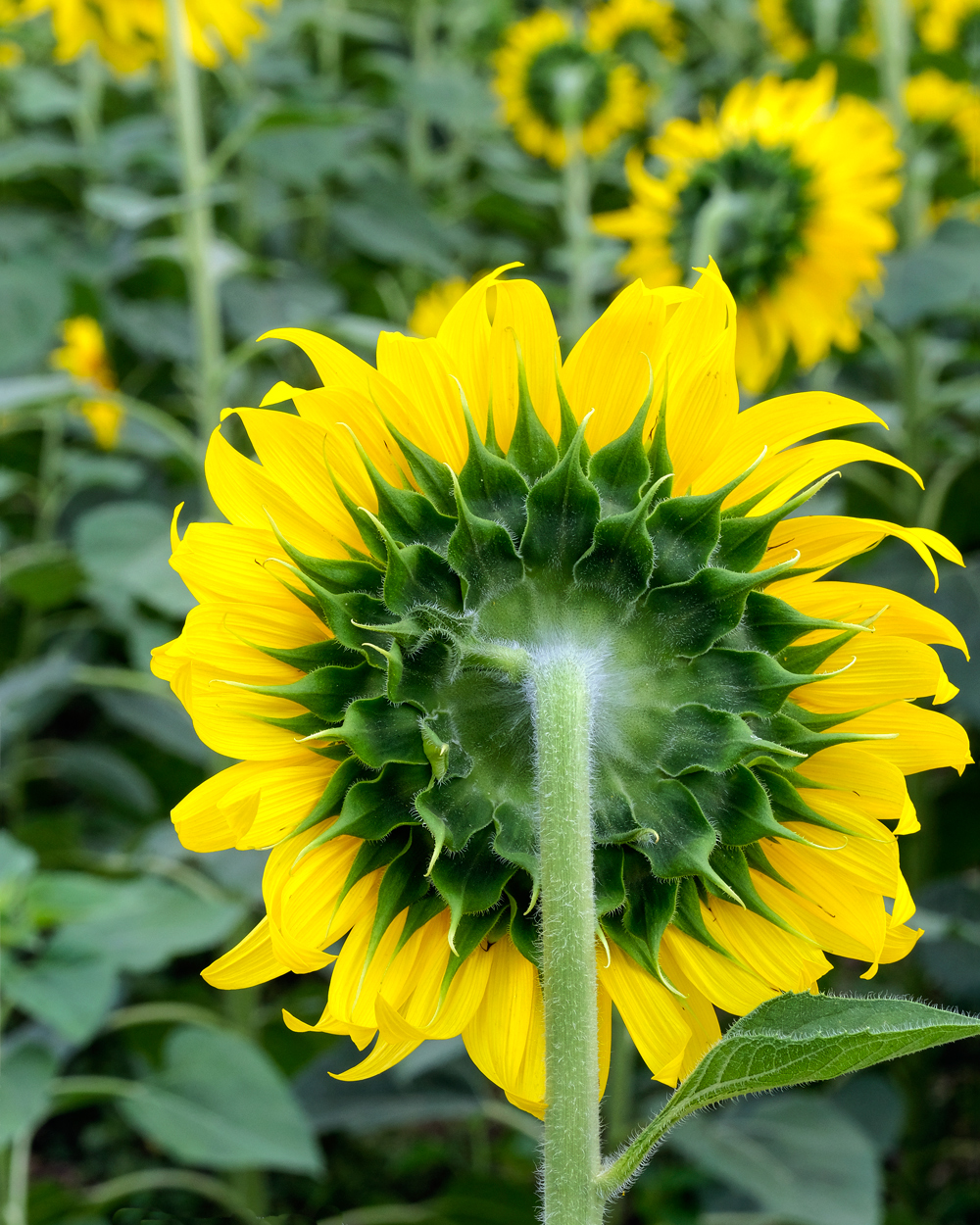 My friend John Stiles and I took a day off work on a week day and drove north out of Bangkok early in the morning in search of the famous Lopburi sunflower fields . . . they were suppose to be coming into bloom this time of year (November 2017).
My friend John Stiles and I took a day off work on a week day and drove north out of Bangkok early in the morning in search of the famous Lopburi sunflower fields . . . they were suppose to be coming into bloom this time of year (November 2017).
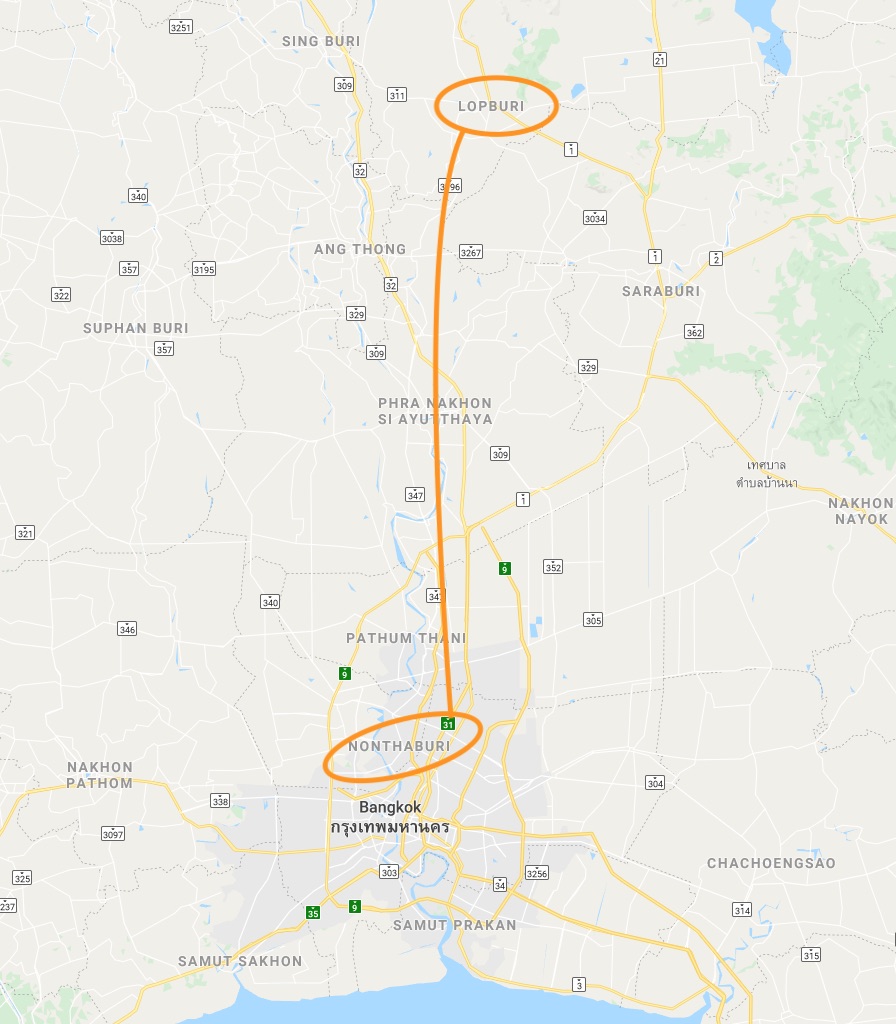 Just an easy 1 1/2 hour drive up a divided highway to Lopburi.
Just an easy 1 1/2 hour drive up a divided highway to Lopburi.
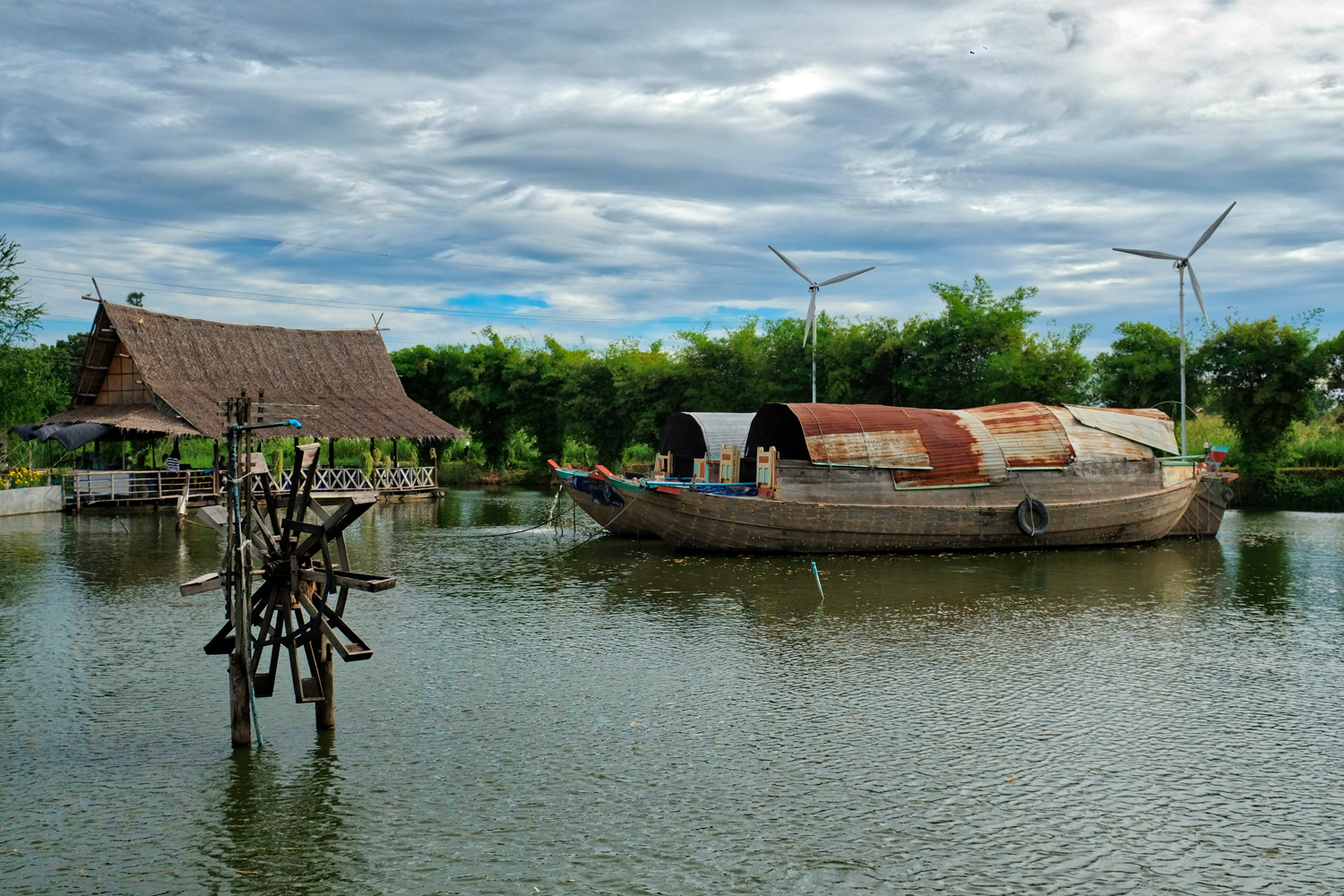 We began the day before first light, so when we came across this roadside restaurant on a pond, so we stopped.
We began the day before first light, so when we came across this roadside restaurant on a pond, so we stopped.
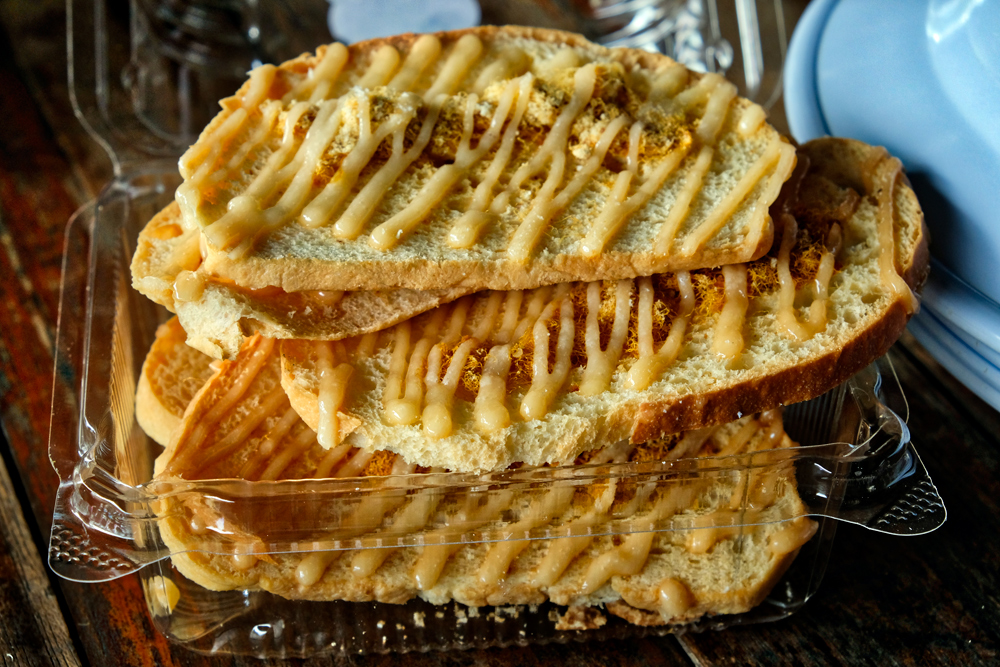 We enjoyed some good coffee (they had a grand Italian coffee-making machine!) and dry honey toast with pork floss.
We enjoyed some good coffee (they had a grand Italian coffee-making machine!) and dry honey toast with pork floss.
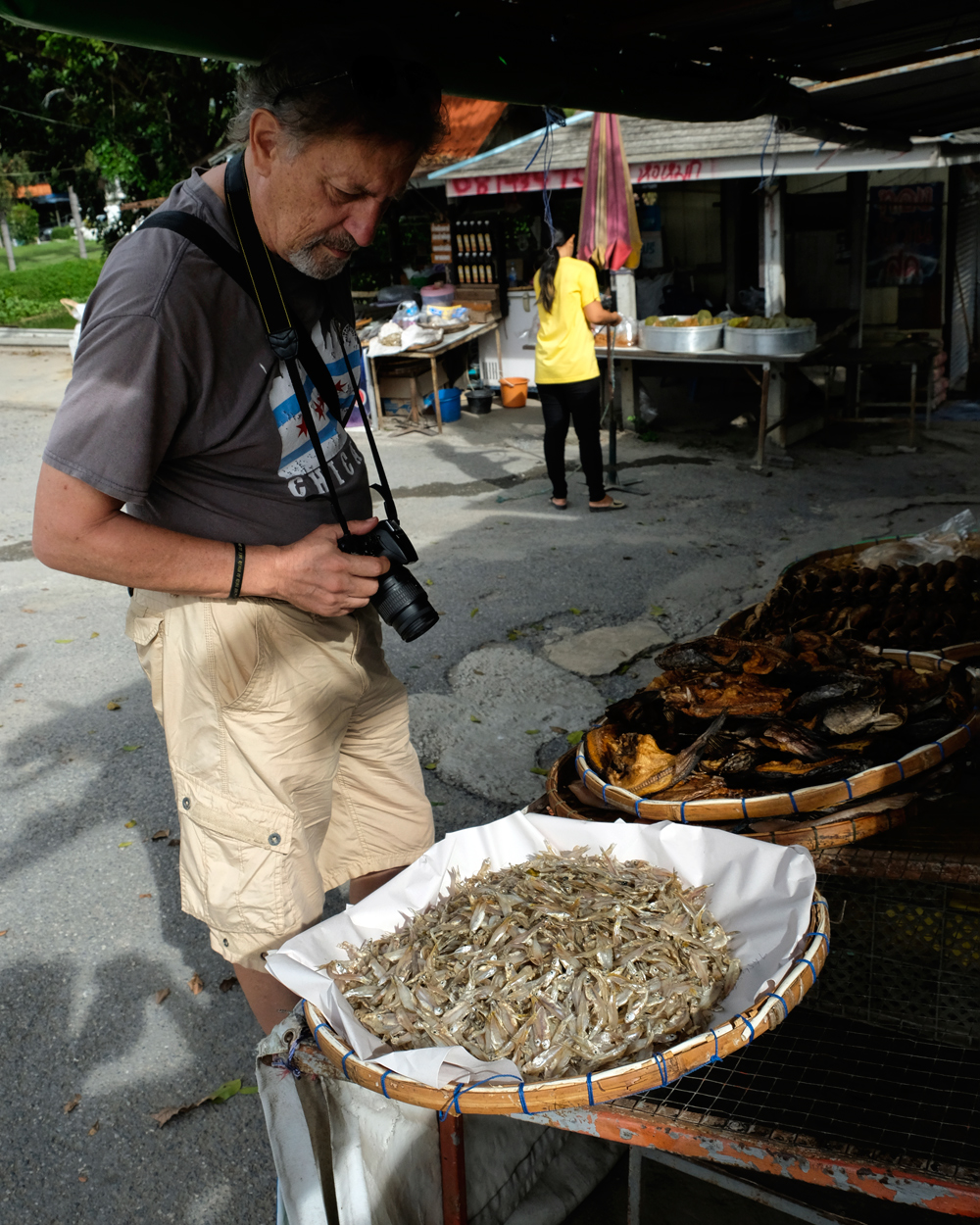 There was a dried fish stand setting up outside the restaurant when we arrived. Very photogenic. We would see a lot of dried fish throughout the day.
There was a dried fish stand setting up outside the restaurant when we arrived. Very photogenic. We would see a lot of dried fish throughout the day.
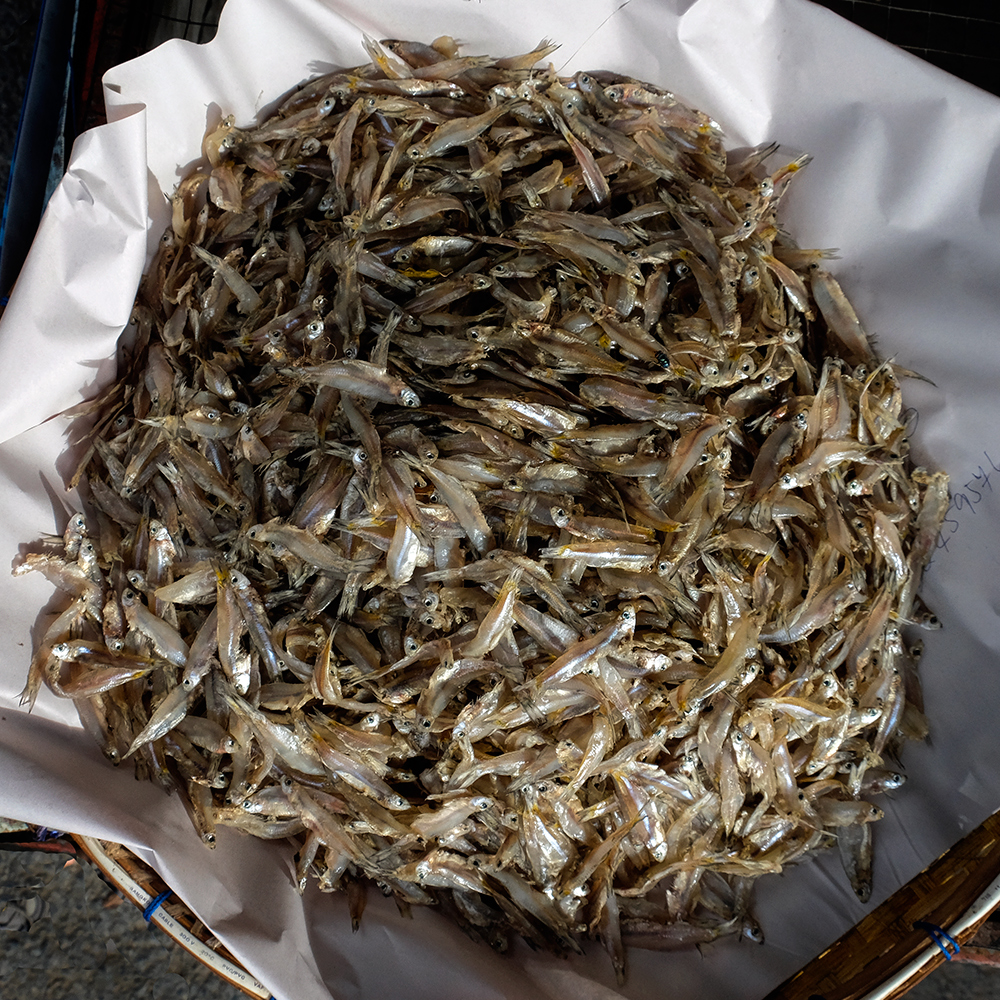 Small dried 'sprats' . . . my favorite.
Small dried 'sprats' . . . my favorite.
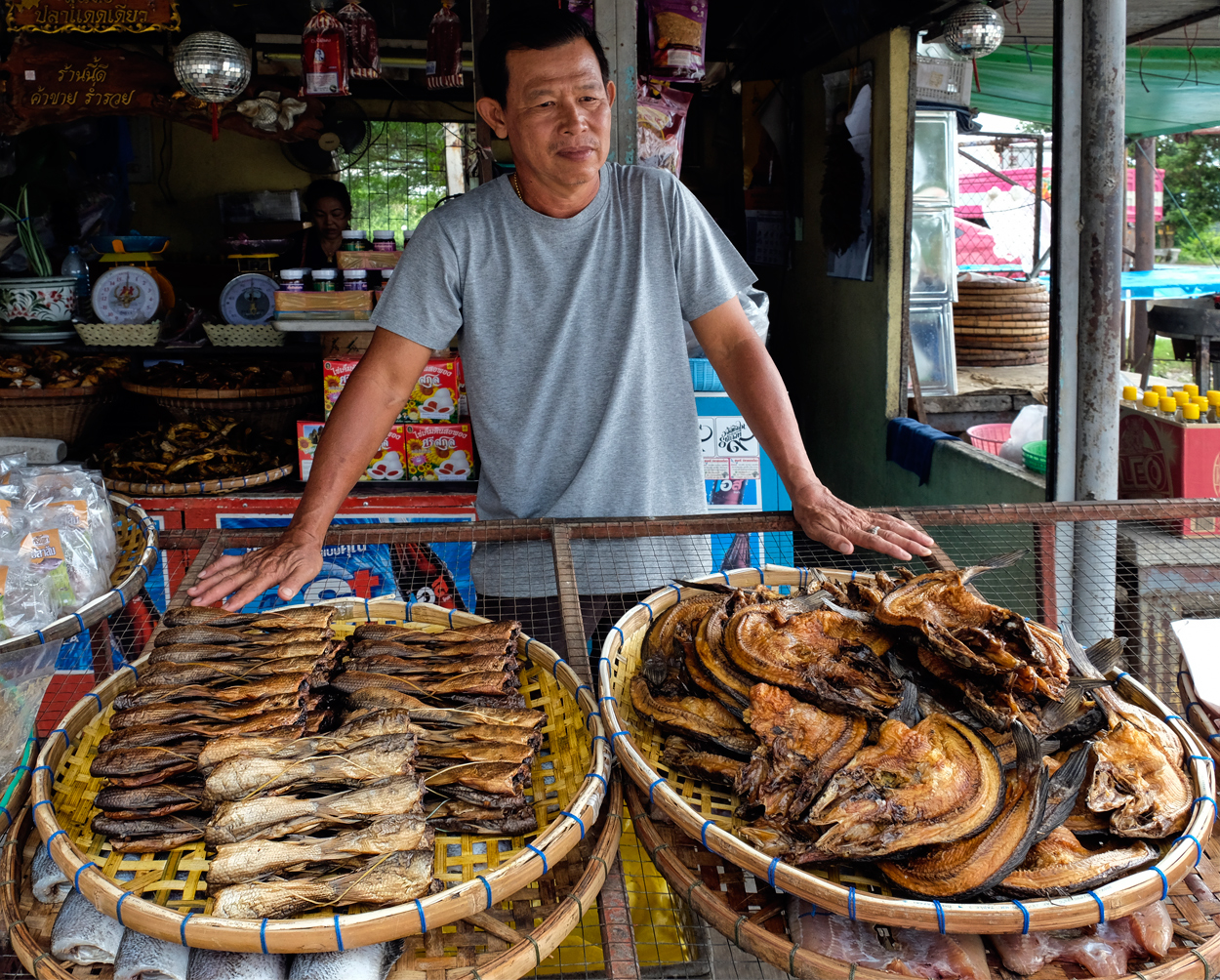 The fish hawker and his beautifully arranged fish.
The fish hawker and his beautifully arranged fish.
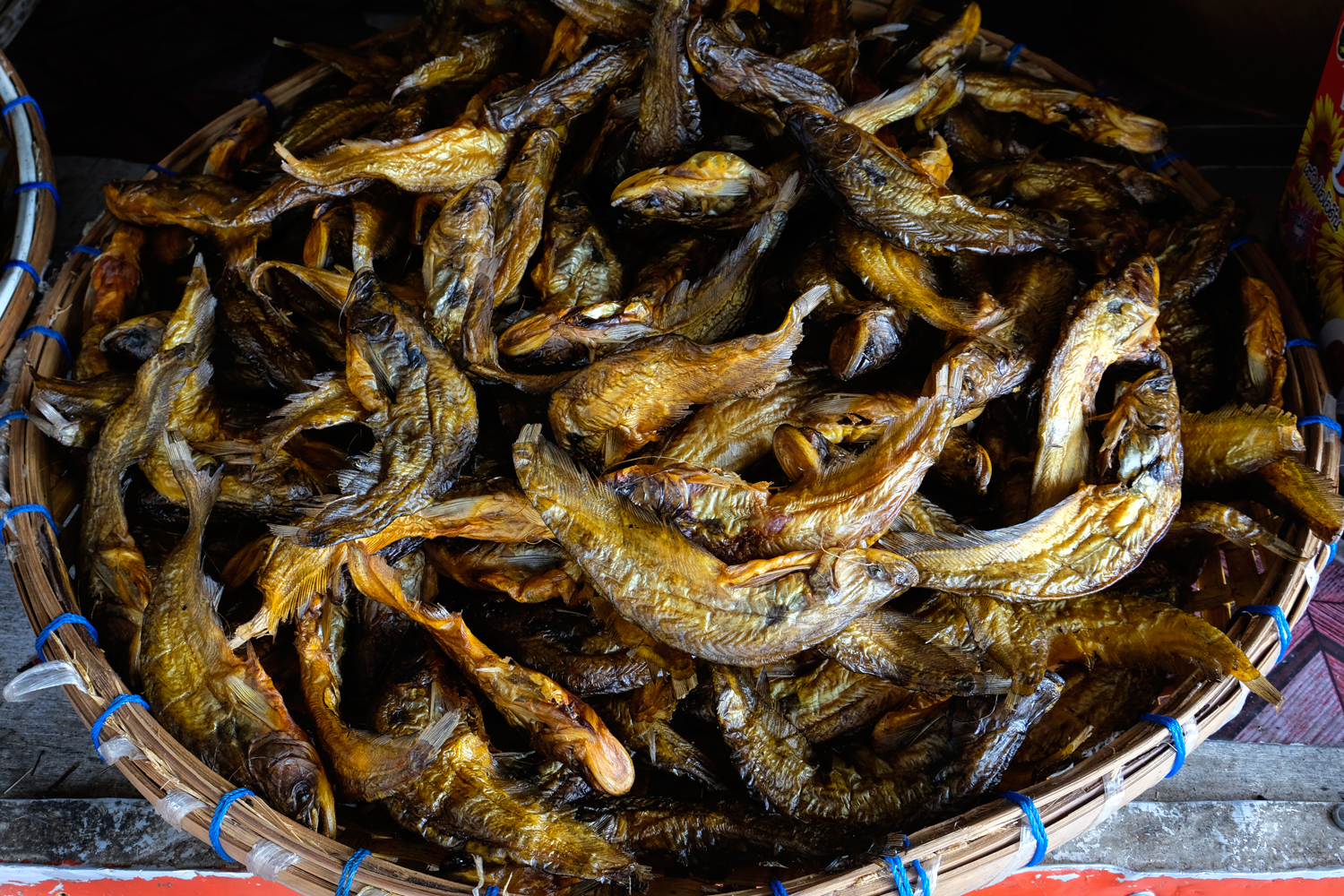 The colors and arrangement oft these dried fish were captivating.
The colors and arrangement oft these dried fish were captivating.
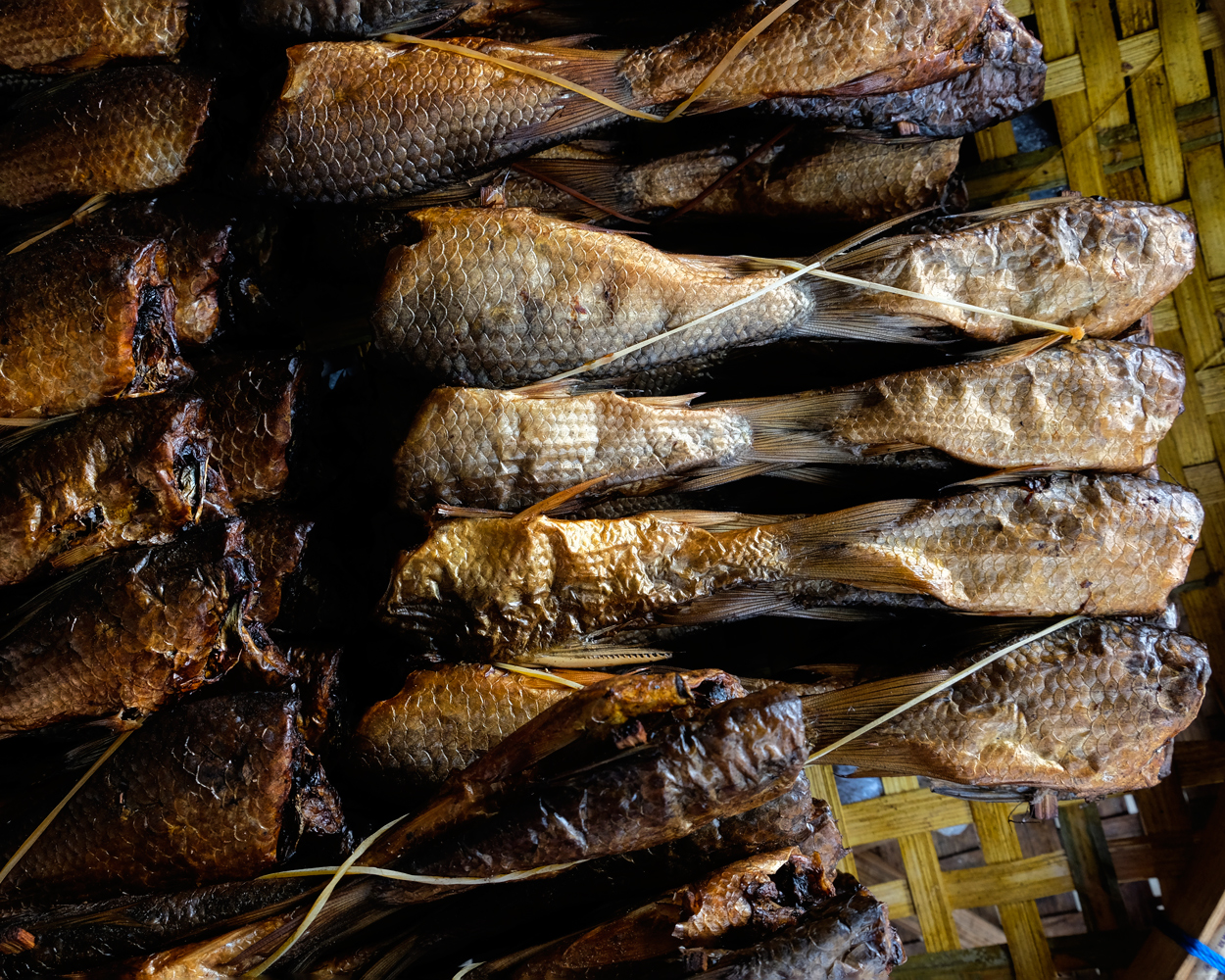 Good in soups and salads.
Good in soups and salads.
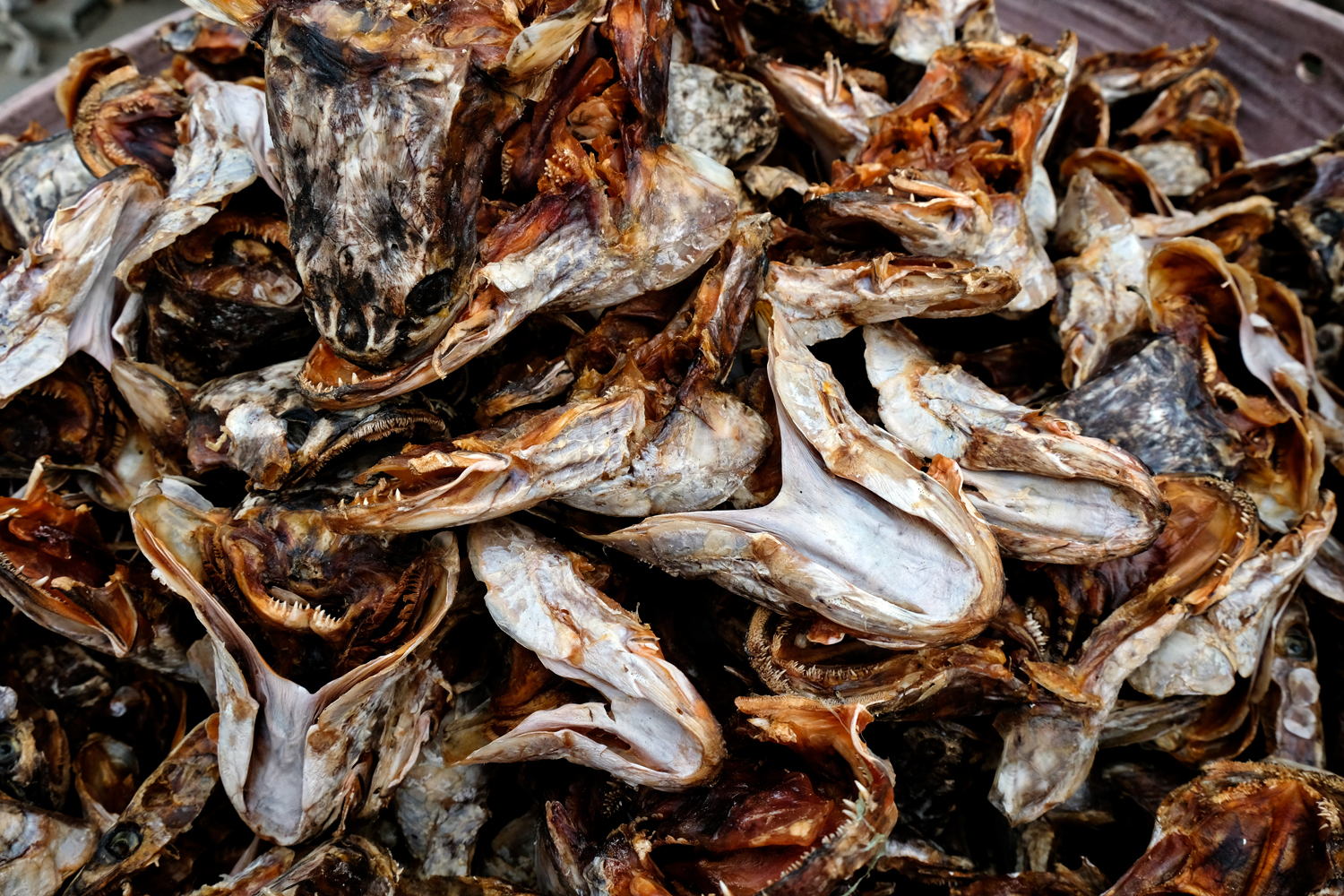 A heap of dried fish heads . . . for making fish head soup!
A heap of dried fish heads . . . for making fish head soup!
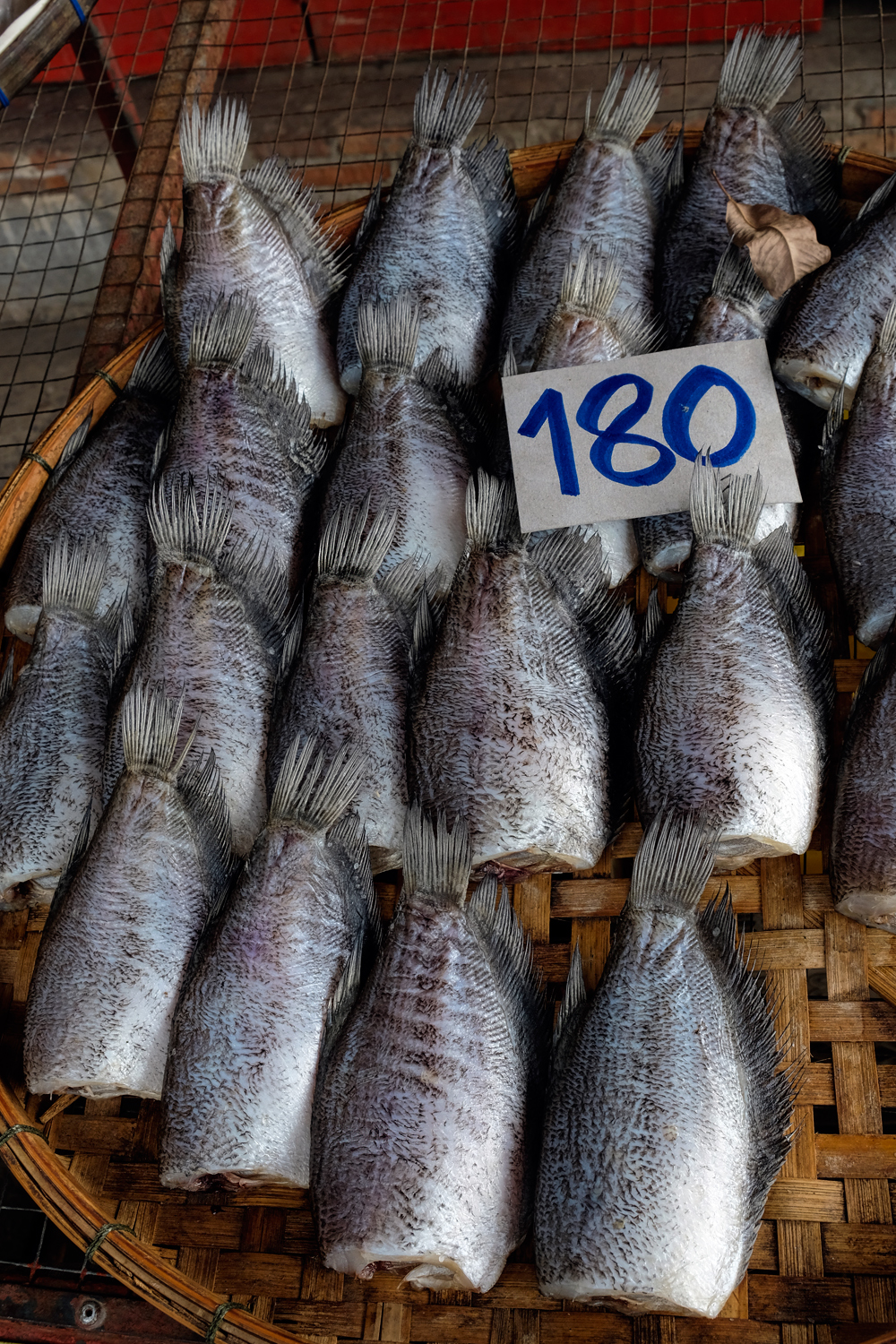 There were also some fresh fish for sale as well.
There were also some fresh fish for sale as well.
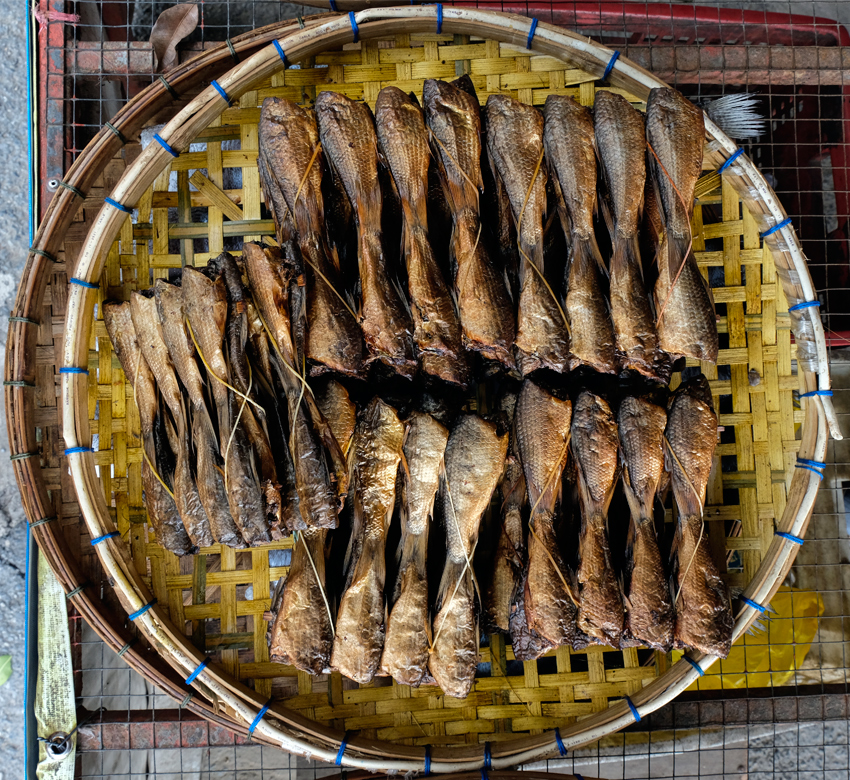 Drying fish on the round baskets.
Drying fish on the round baskets.
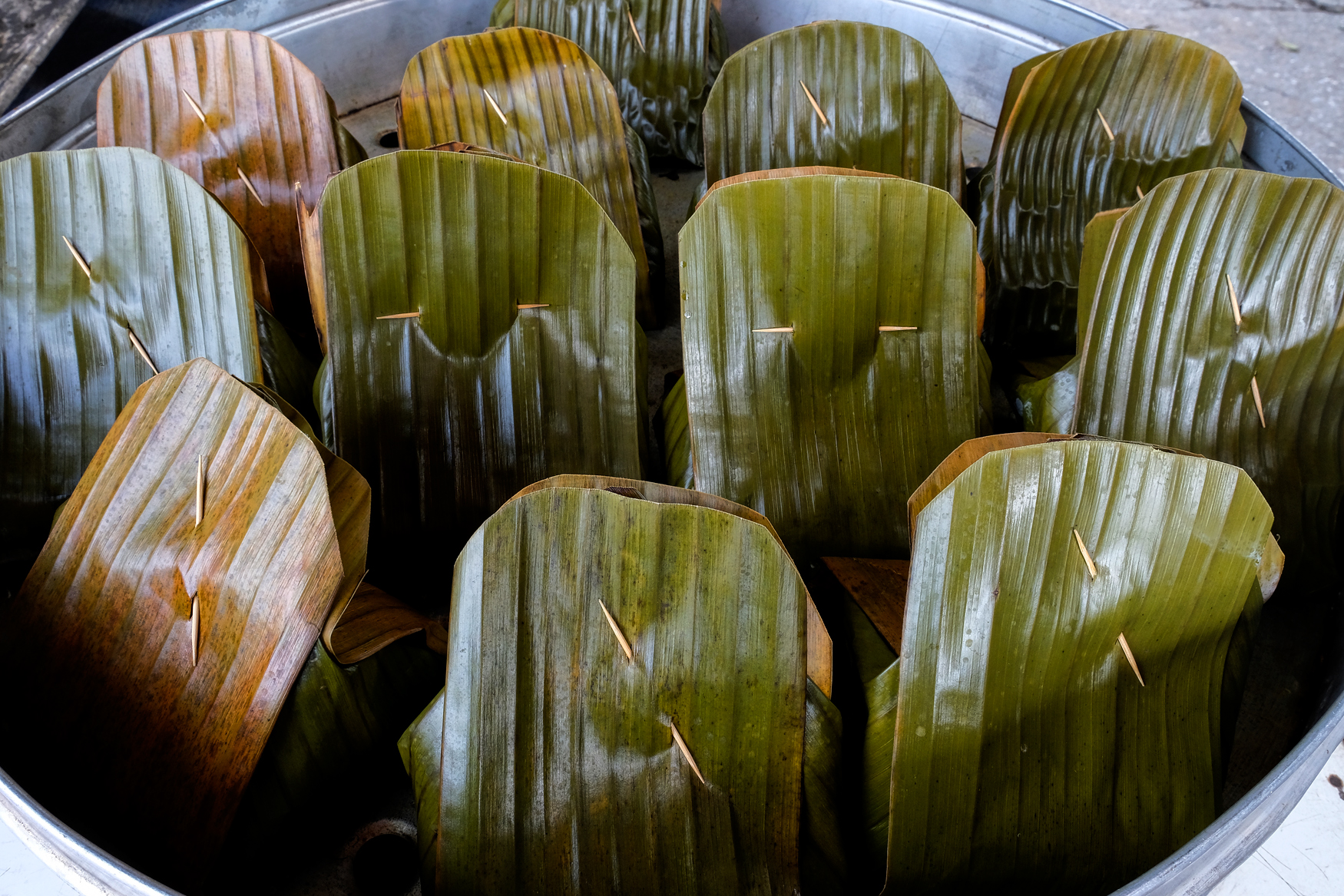 These are rice treats with either fish, beans, or sweets wrapped in leaves. We didn't buy any fish or rice treats . . . and headed up the rural road toward Lopburi.
These are rice treats with either fish, beans, or sweets wrapped in leaves. We didn't buy any fish or rice treats . . . and headed up the rural road toward Lopburi.
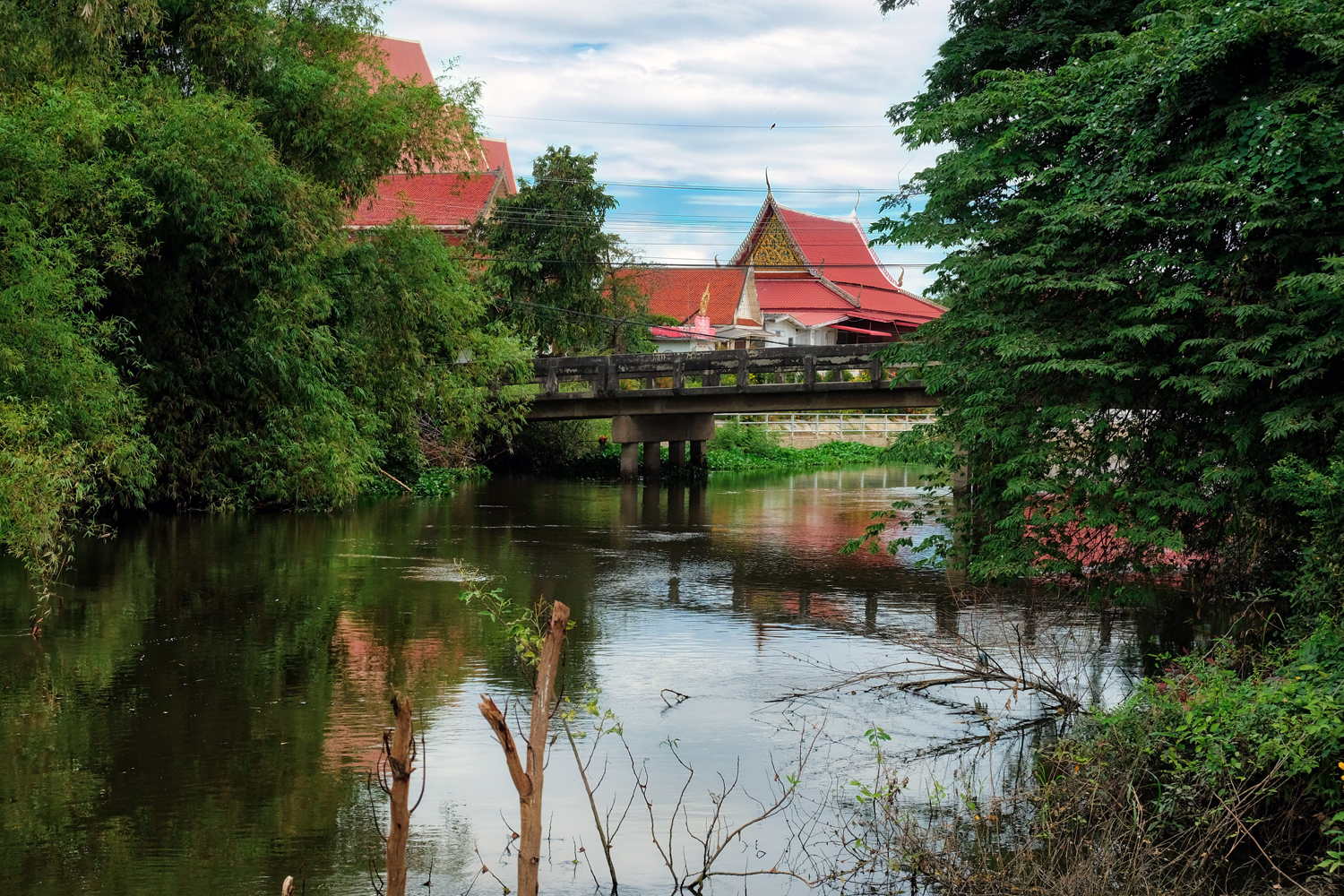 We left Bangkok (Minburi) around 6:30 am, loaded a general Lopburi address into the GPS, and headed up the big highway for the hour and a half drive. When we got a few miles outside of Lopburi, we left the highway for the small roads . . . and found several wonderful small Buddhist Wats.
We left Bangkok (Minburi) around 6:30 am, loaded a general Lopburi address into the GPS, and headed up the big highway for the hour and a half drive. When we got a few miles outside of Lopburi, we left the highway for the small roads . . . and found several wonderful small Buddhist Wats.
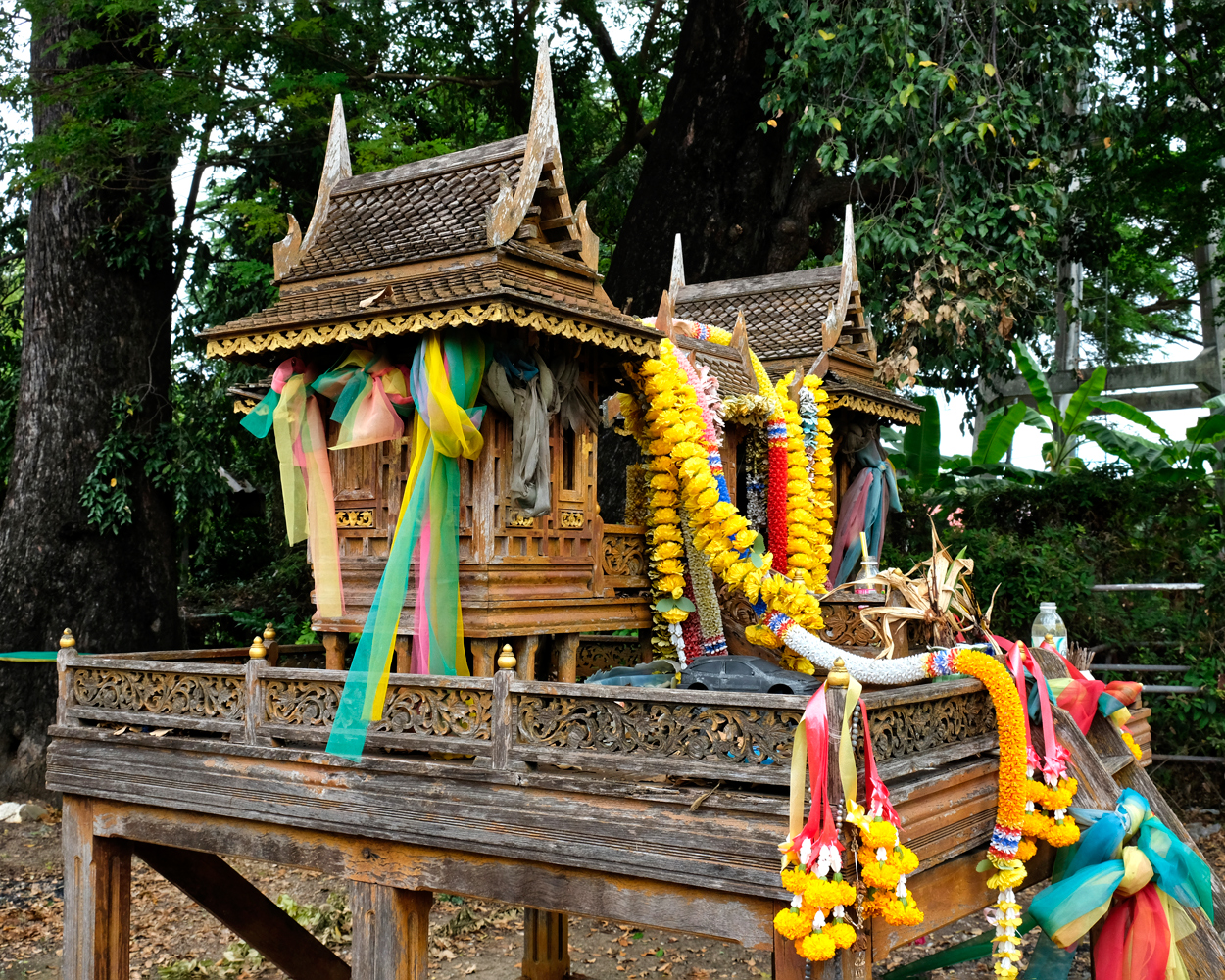 Right off a small road to Lopburi we found an ancient Wat . . . with a beautiful spirit house.
Right off a small road to Lopburi we found an ancient Wat . . . with a beautiful spirit house.
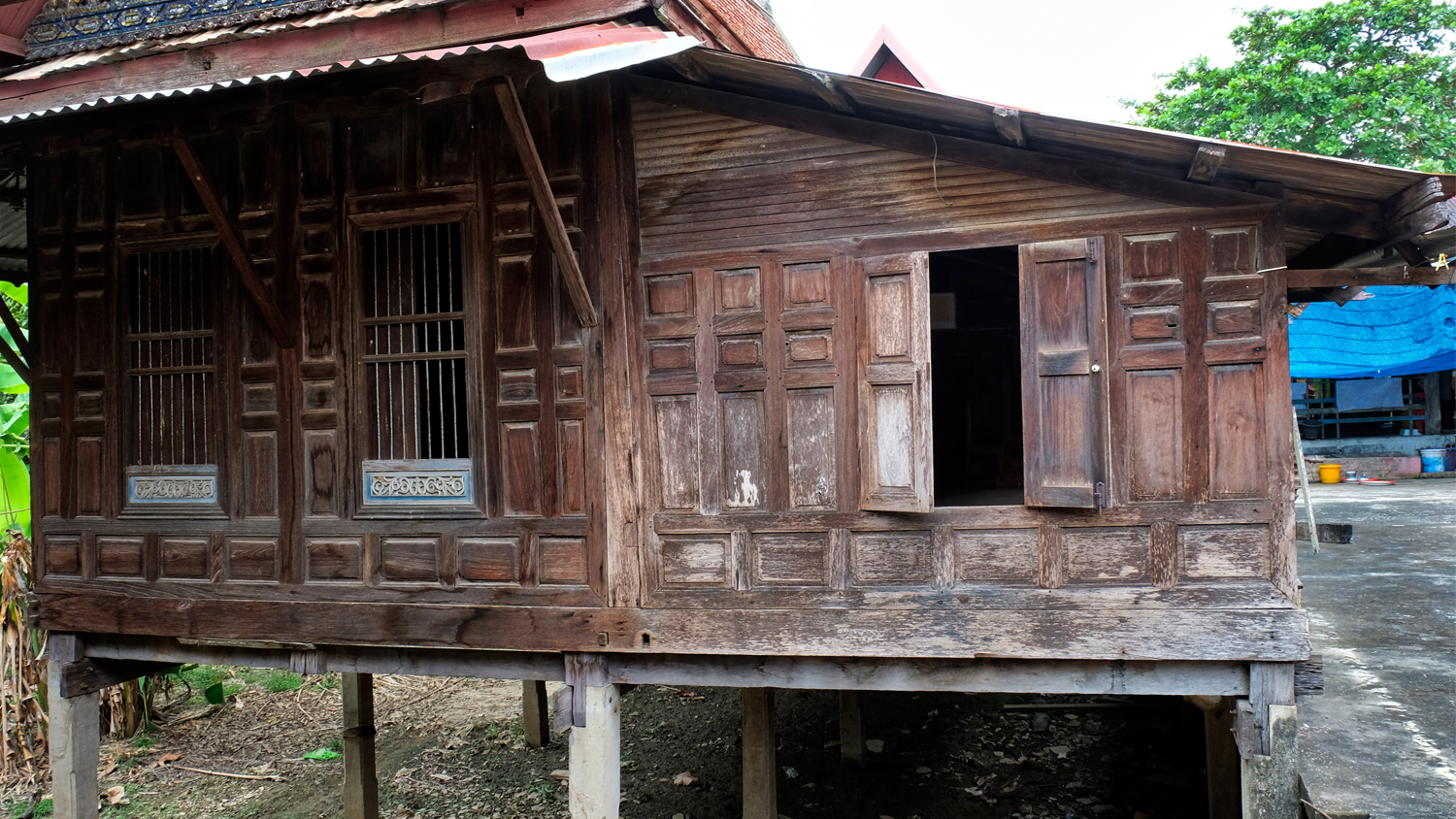 Monks quarters.
Monks quarters.
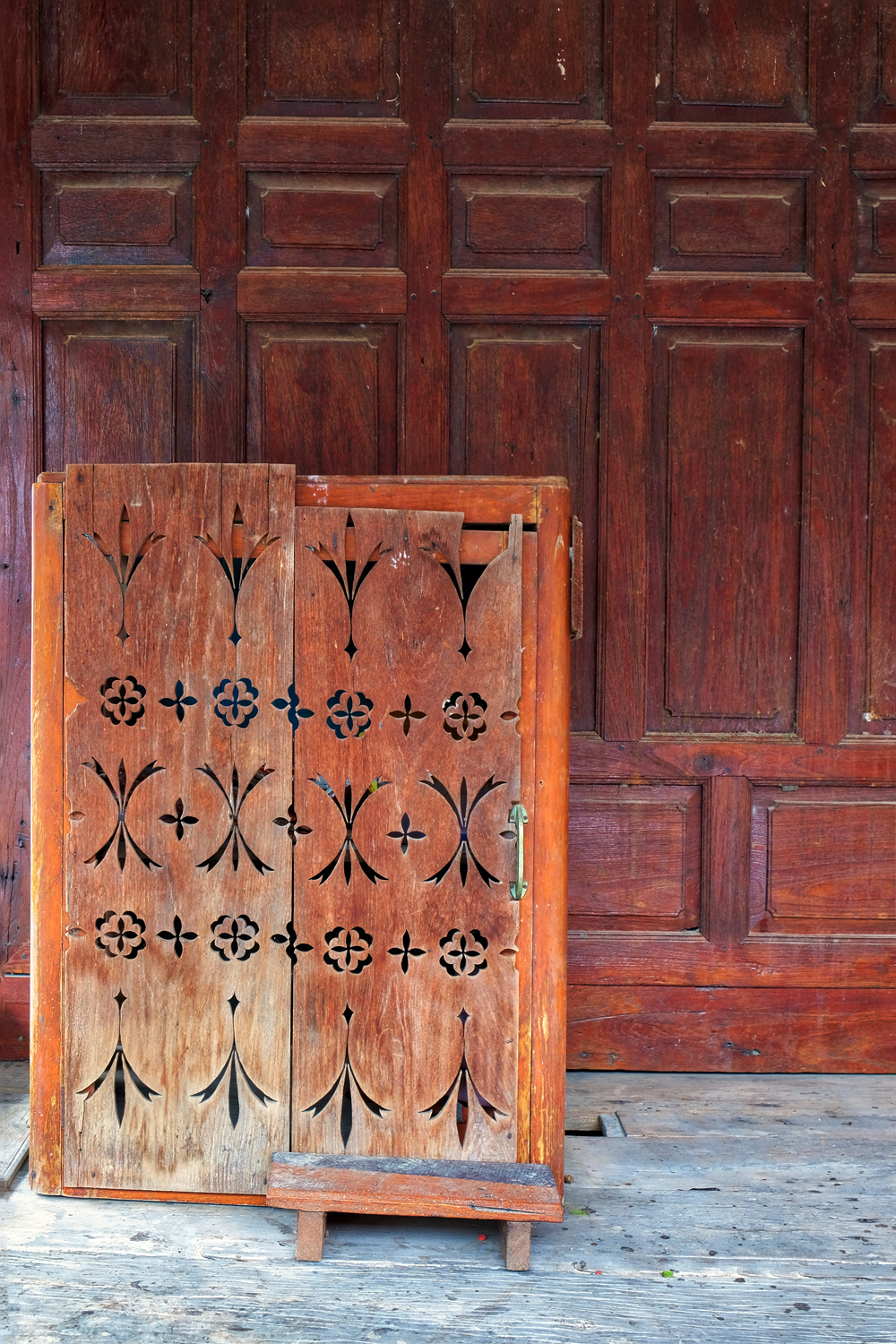 I enjoy walking around old Wats just to see what can be seen. Here, a still life portrait of items arranged in the space of a monks house porch. I love the makeshift, slapped together feel of the shoe box . . . no concern for aesthetic geometry . . . yet beauty was achieved.
I enjoy walking around old Wats just to see what can be seen. Here, a still life portrait of items arranged in the space of a monks house porch. I love the makeshift, slapped together feel of the shoe box . . . no concern for aesthetic geometry . . . yet beauty was achieved.
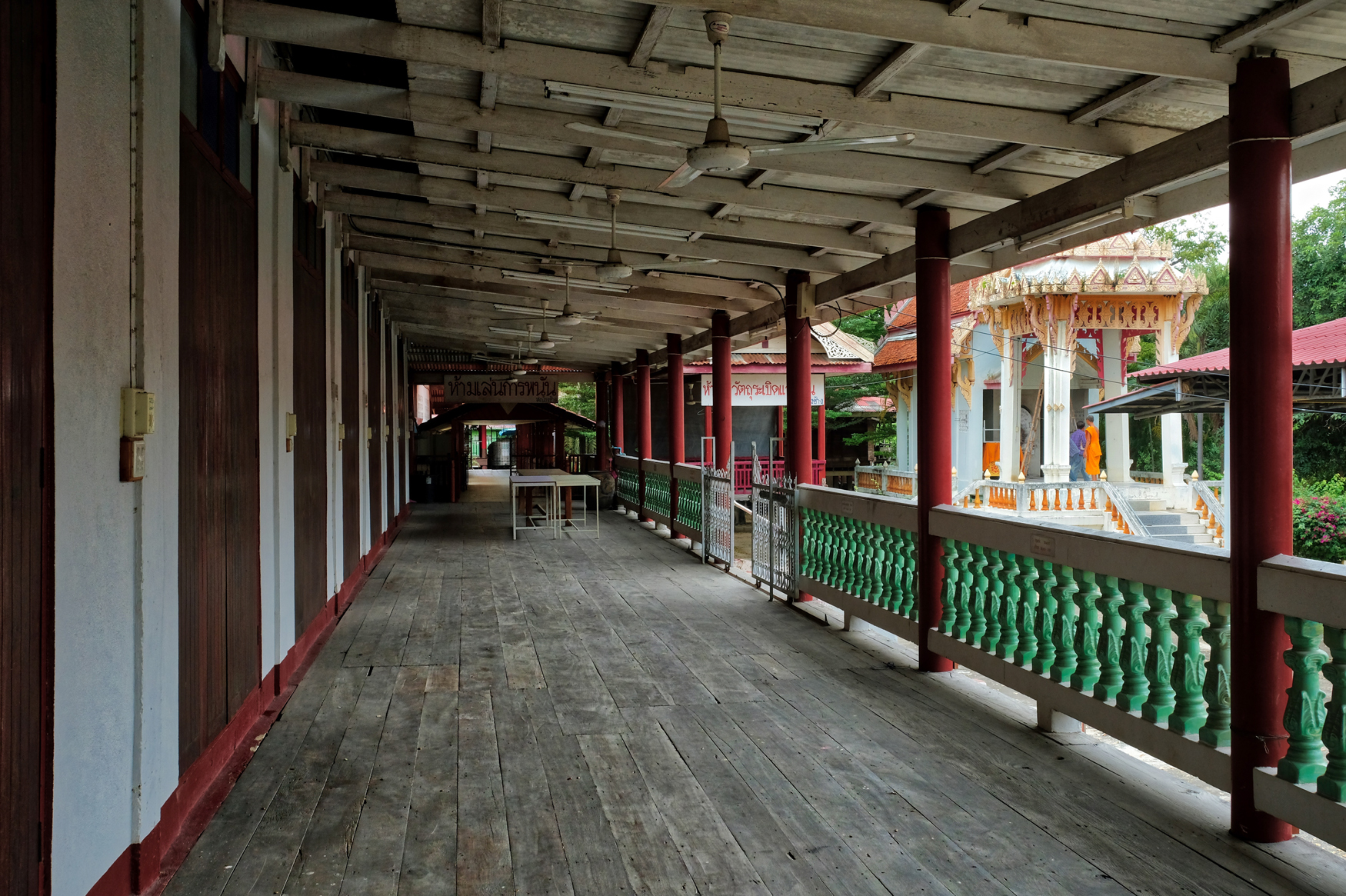 In front of a meditation hall. The crematorium can be seen at far right . . . the monks were consulting with contractors about repairs needed to the crematorium.
In front of a meditation hall. The crematorium can be seen at far right . . . the monks were consulting with contractors about repairs needed to the crematorium.
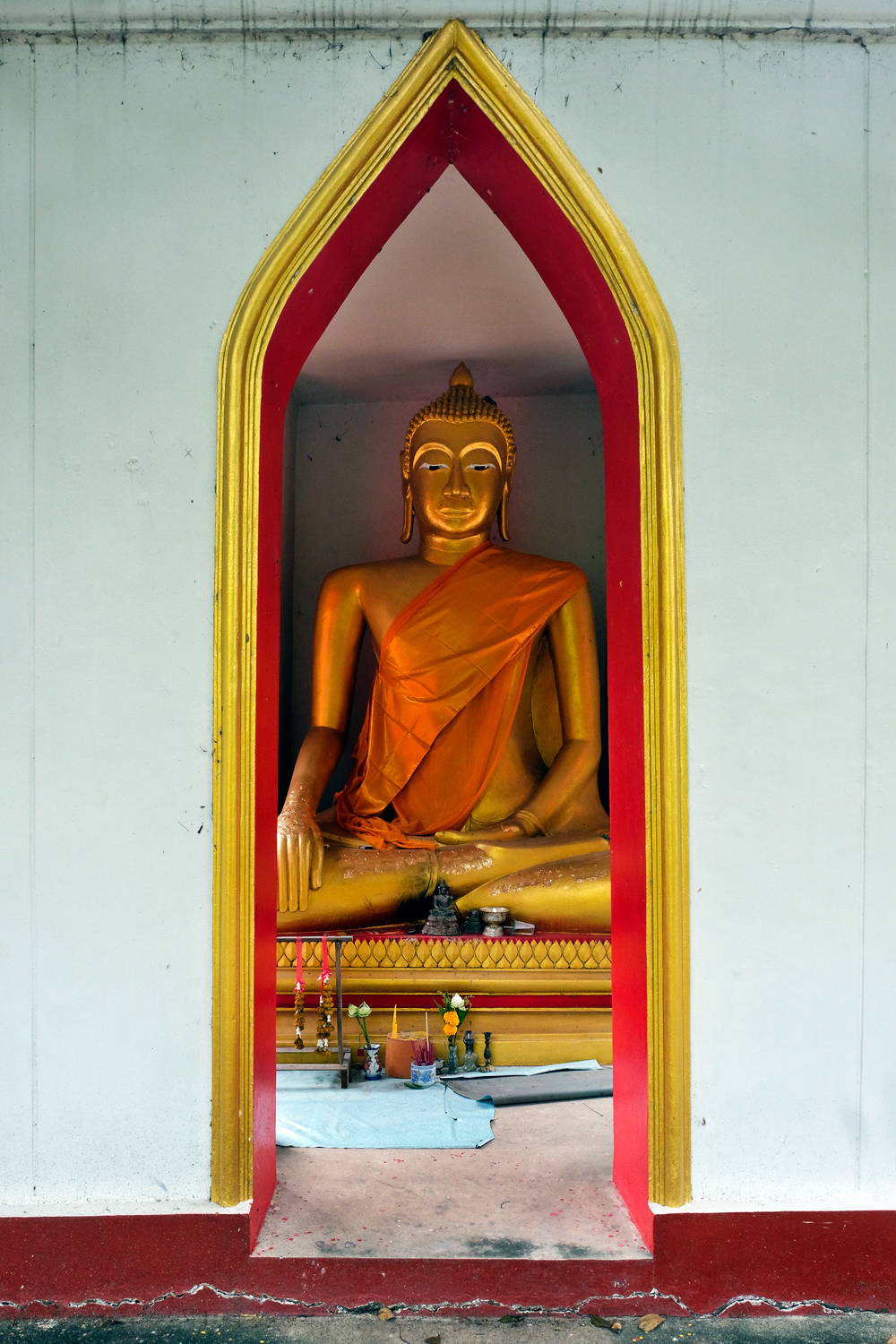 An alcove for a magnificent Buddha image.
An alcove for a magnificent Buddha image.
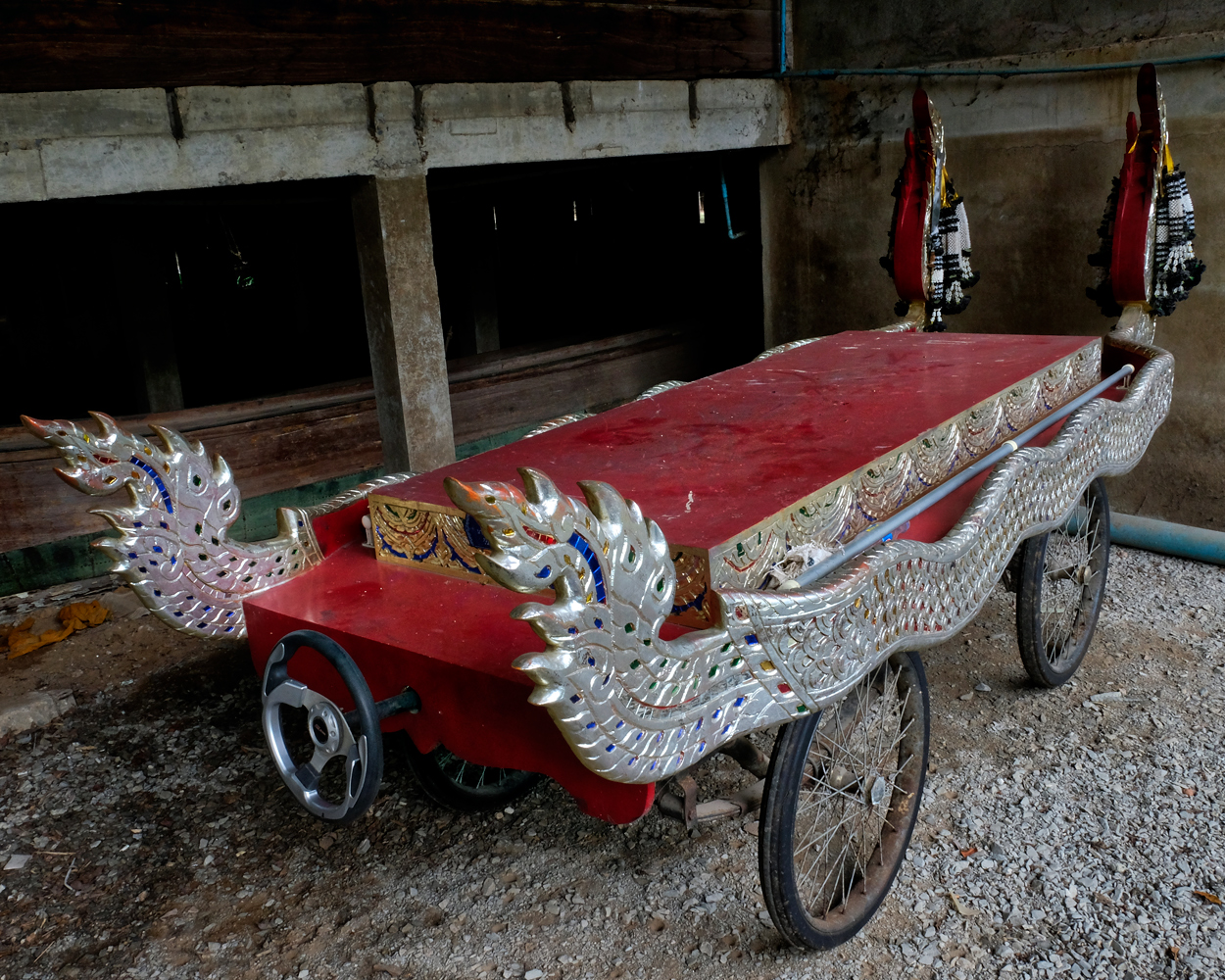 I found the steering wheel on this ceremonial cart interesting.
I found the steering wheel on this ceremonial cart interesting.
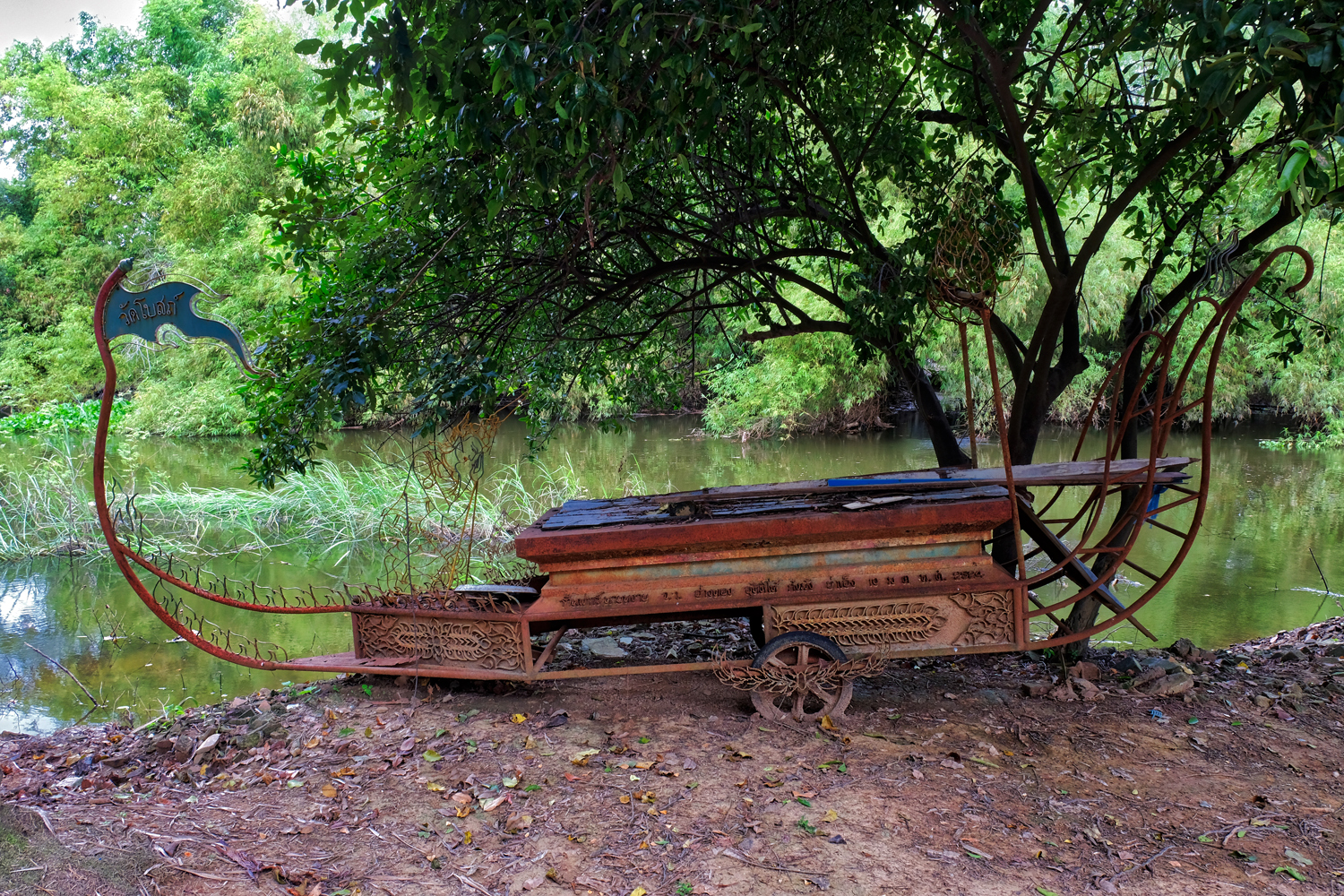 I love old unattended things. This ceremonial cart sitting beside a klong was a thing of beauty (to me).
I love old unattended things. This ceremonial cart sitting beside a klong was a thing of beauty (to me).
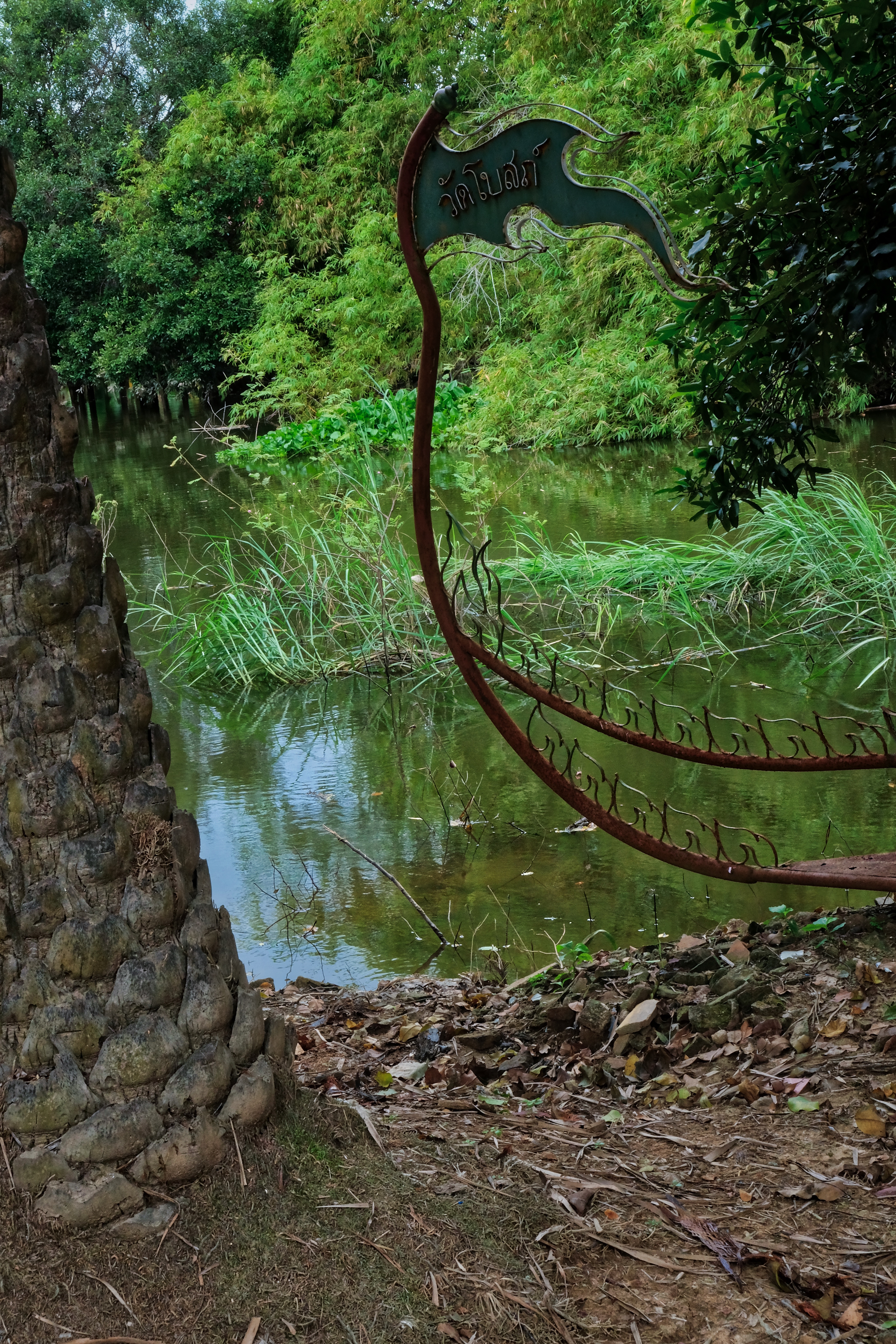 The old ceremonial cart by the klong.
The old ceremonial cart by the klong.
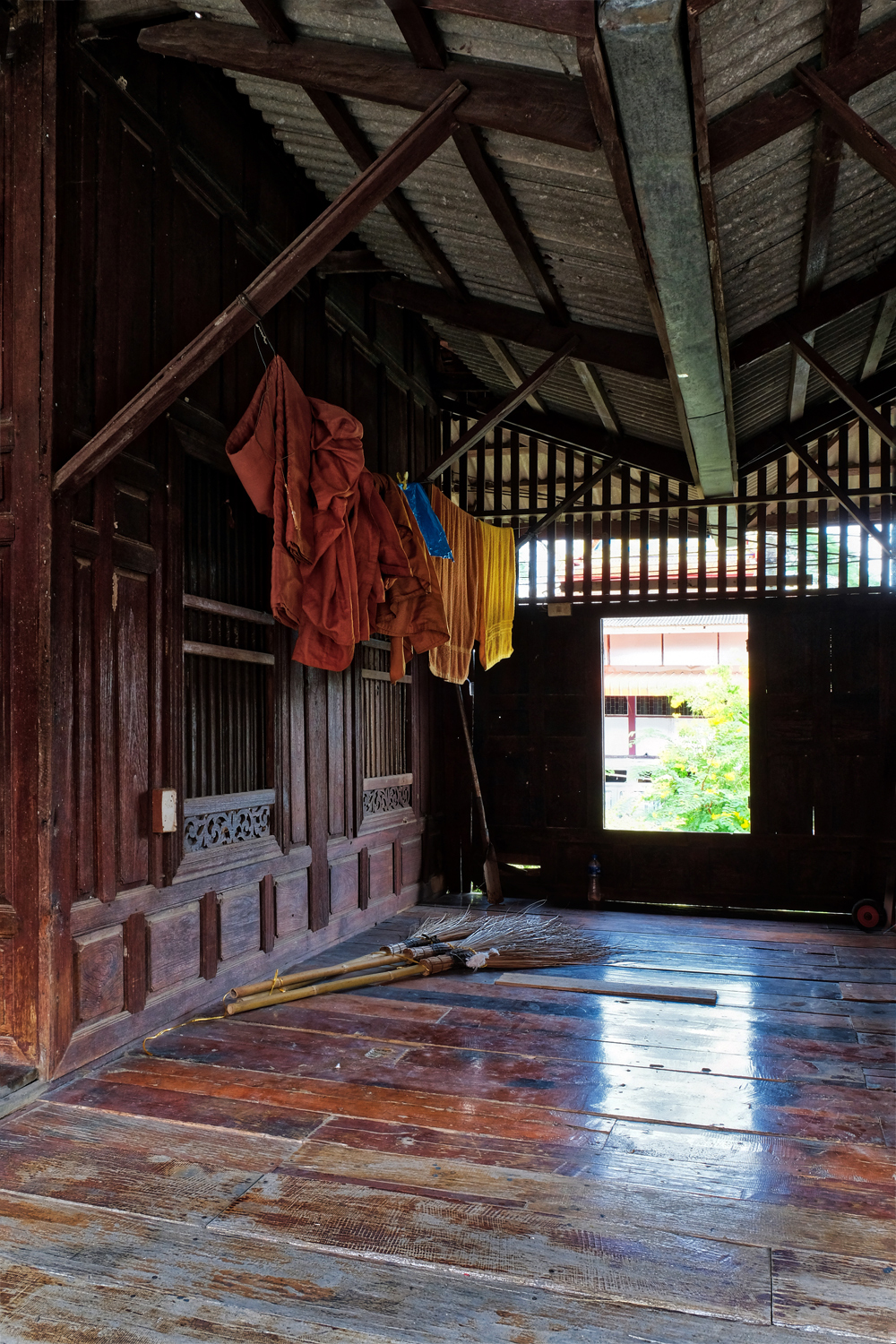 The old wooden Wats have so many beautiful scenes to photograph.
The old wooden Wats have so many beautiful scenes to photograph.
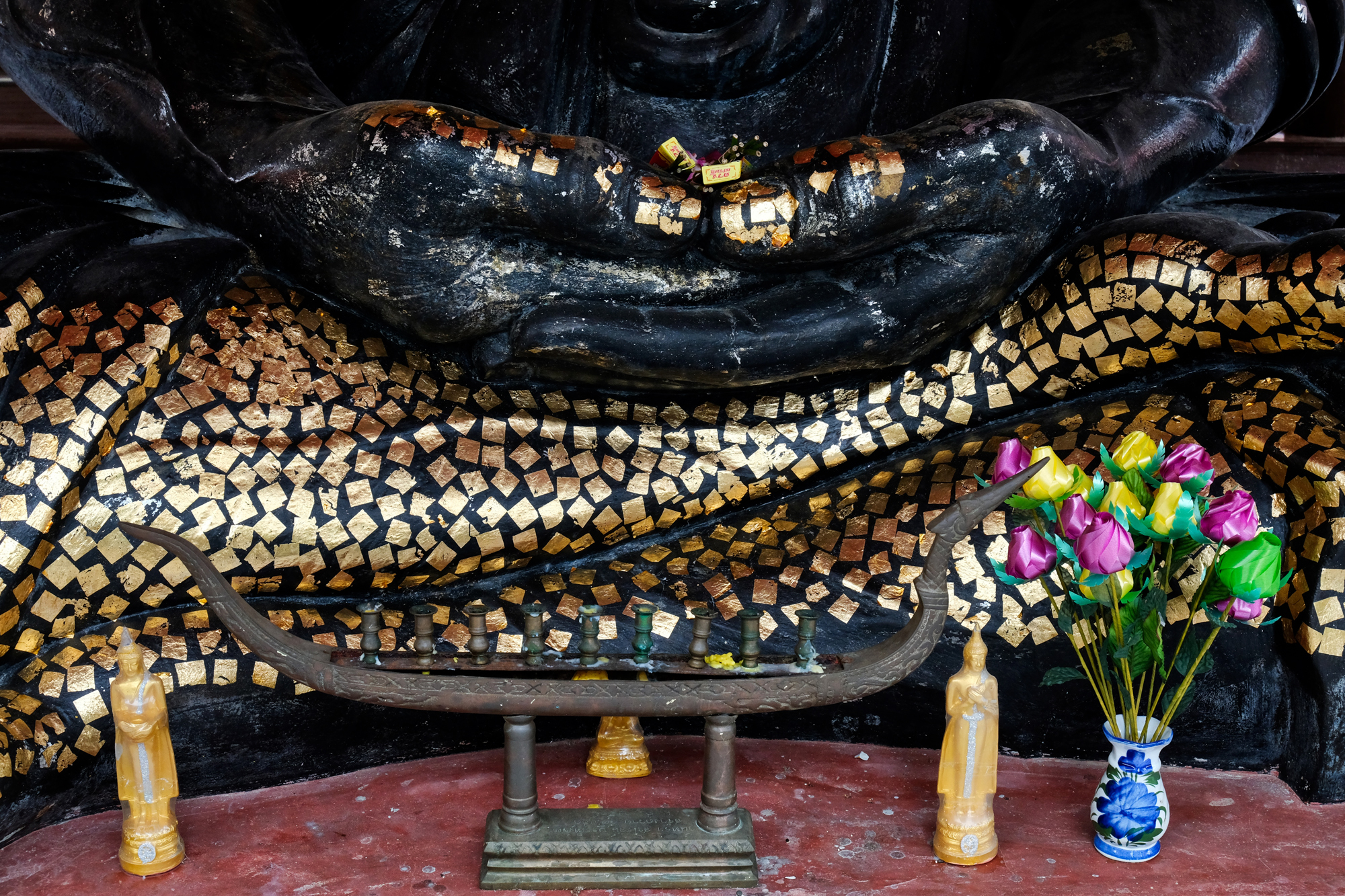 The old Wat held a beautiful black Buddha. I am always interested in the devotional markings pilgrims have left behind.
The old Wat held a beautiful black Buddha. I am always interested in the devotional markings pilgrims have left behind.
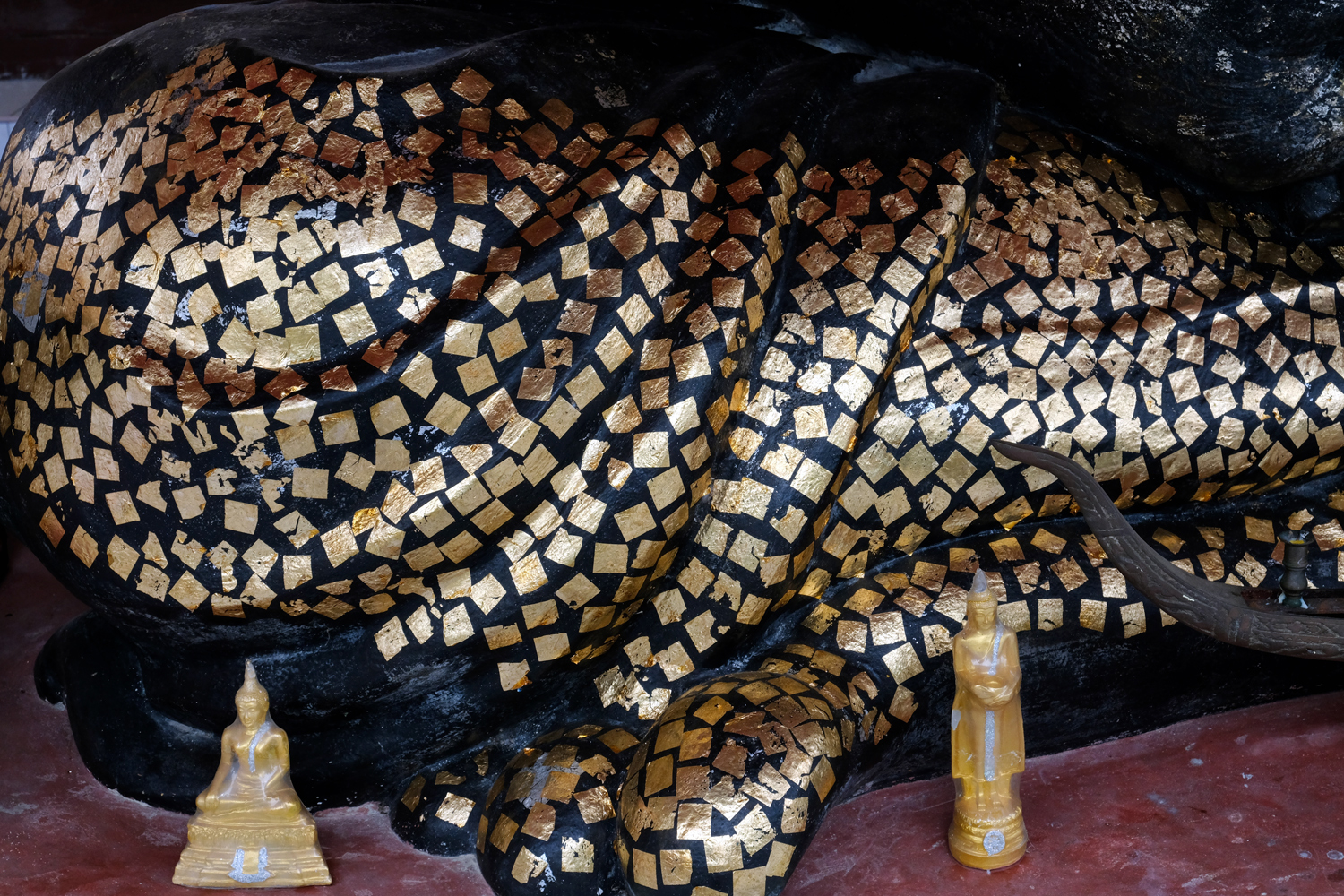 The pattern of the gold leaf applications is fantastic.
The pattern of the gold leaf applications is fantastic.
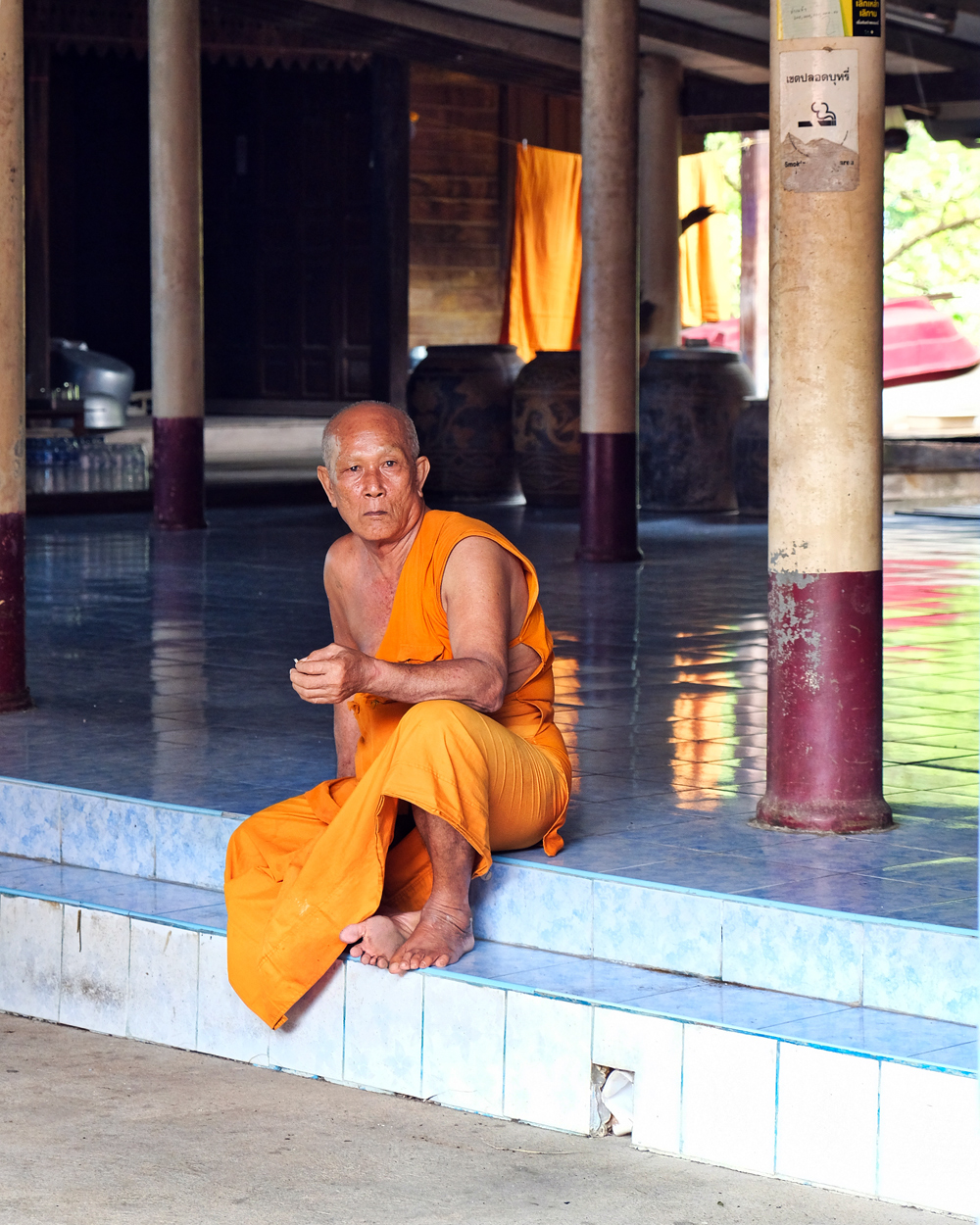 We saw only a few monks out and about. This monk stepped out for a cigarette. I asked if I could photograph him and he nodded OK.
We saw only a few monks out and about. This monk stepped out for a cigarette. I asked if I could photograph him and he nodded OK.
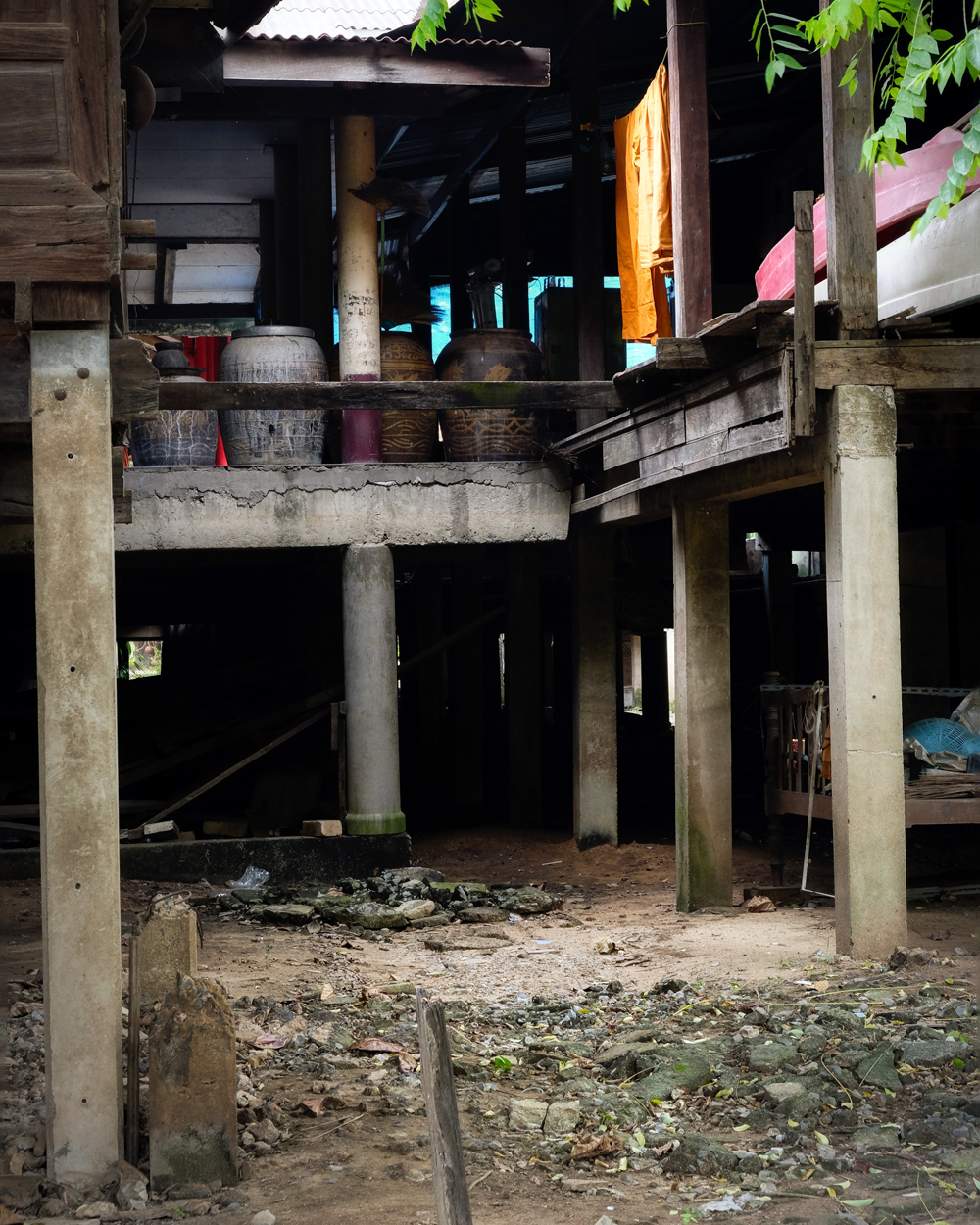 Around he back of the monk's quarters . . . rural Wats are sometimes disheveled like this. The monks are not there to garden, and the local people who support the Wat are busy working hard to stay alive.
Around he back of the monk's quarters . . . rural Wats are sometimes disheveled like this. The monks are not there to garden, and the local people who support the Wat are busy working hard to stay alive.
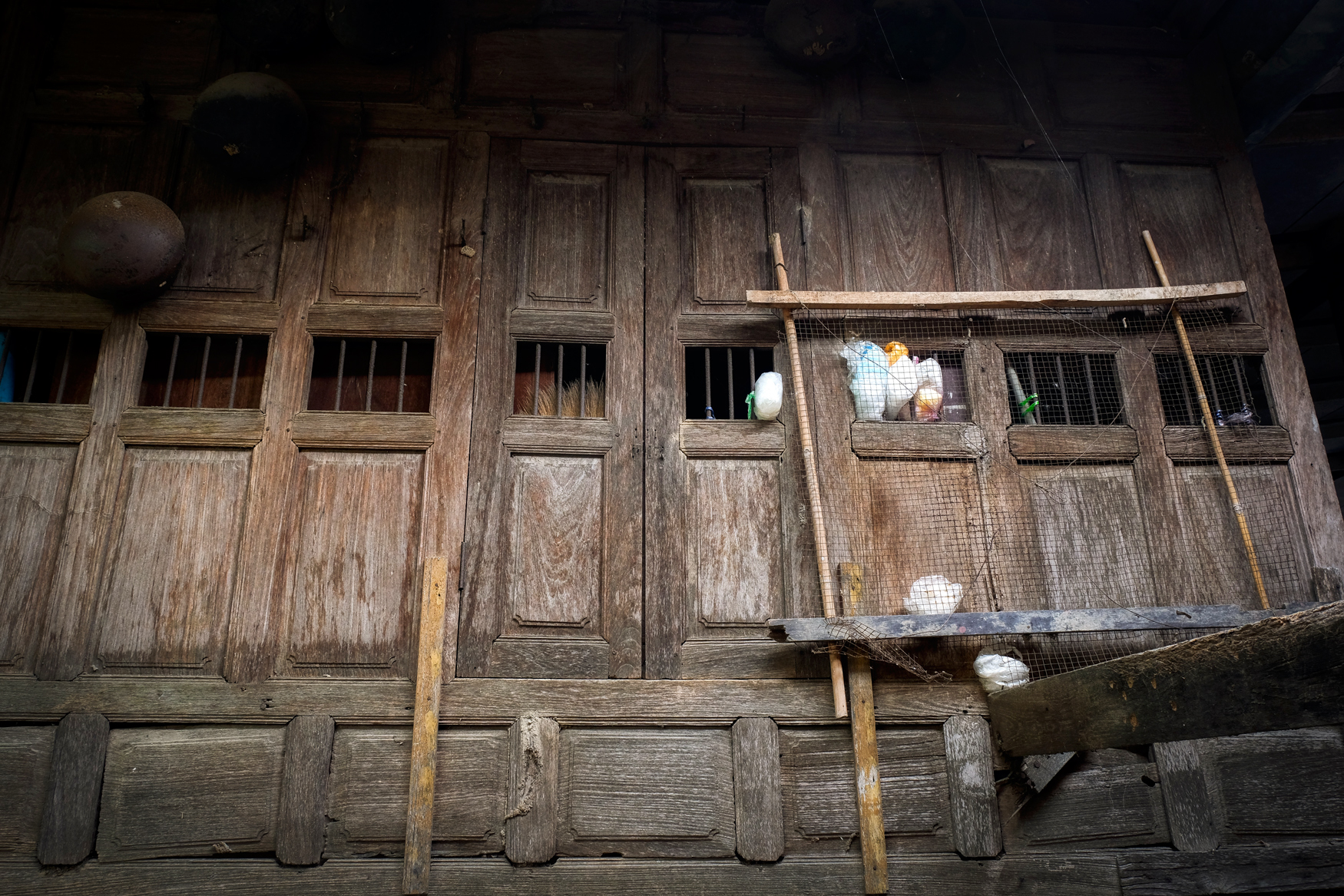 The old surfaces of the ancient monks' quarters had a marvelous patina.
The old surfaces of the ancient monks' quarters had a marvelous patina.
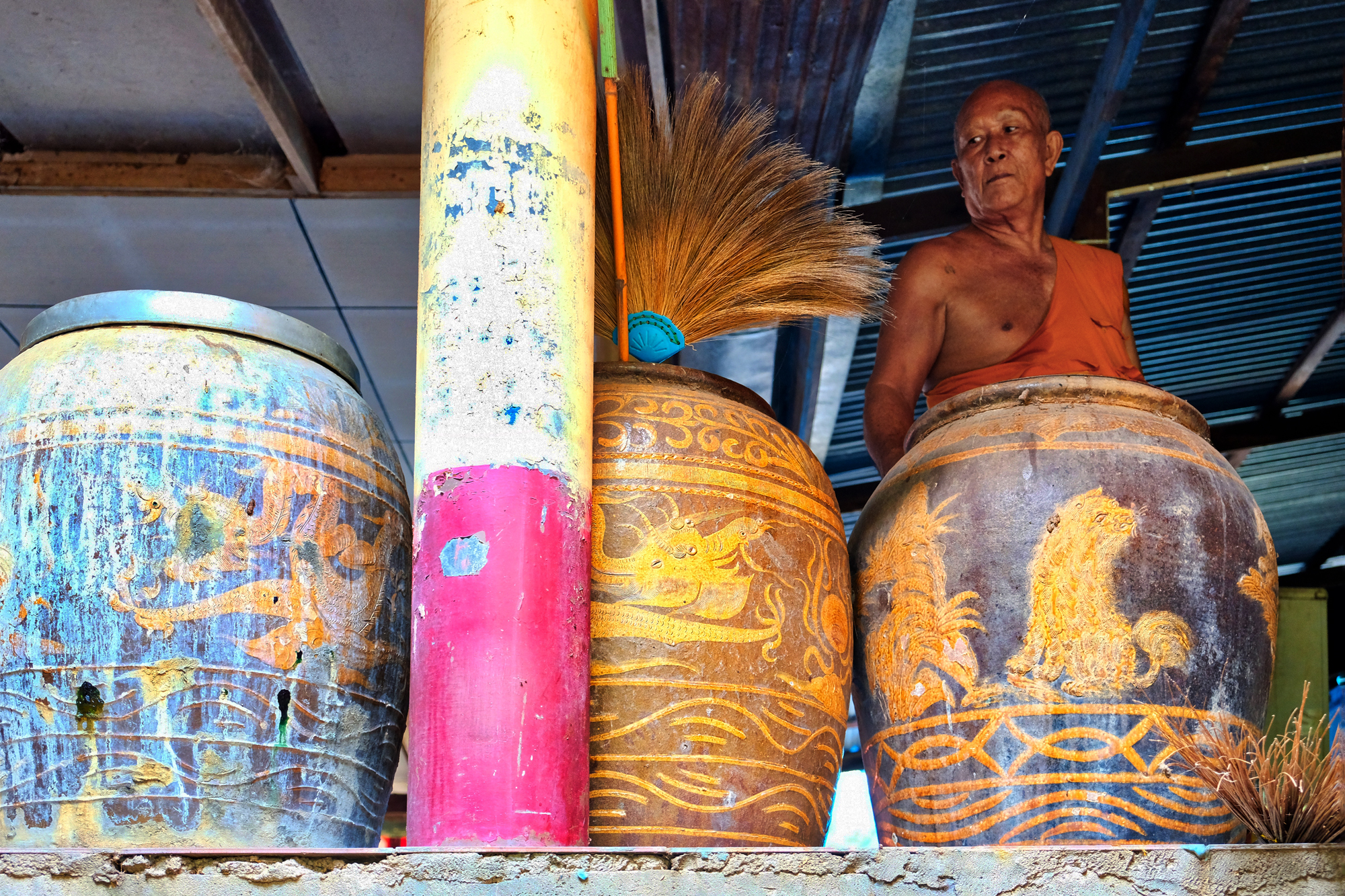 Monk and water urns.
Monk and water urns.
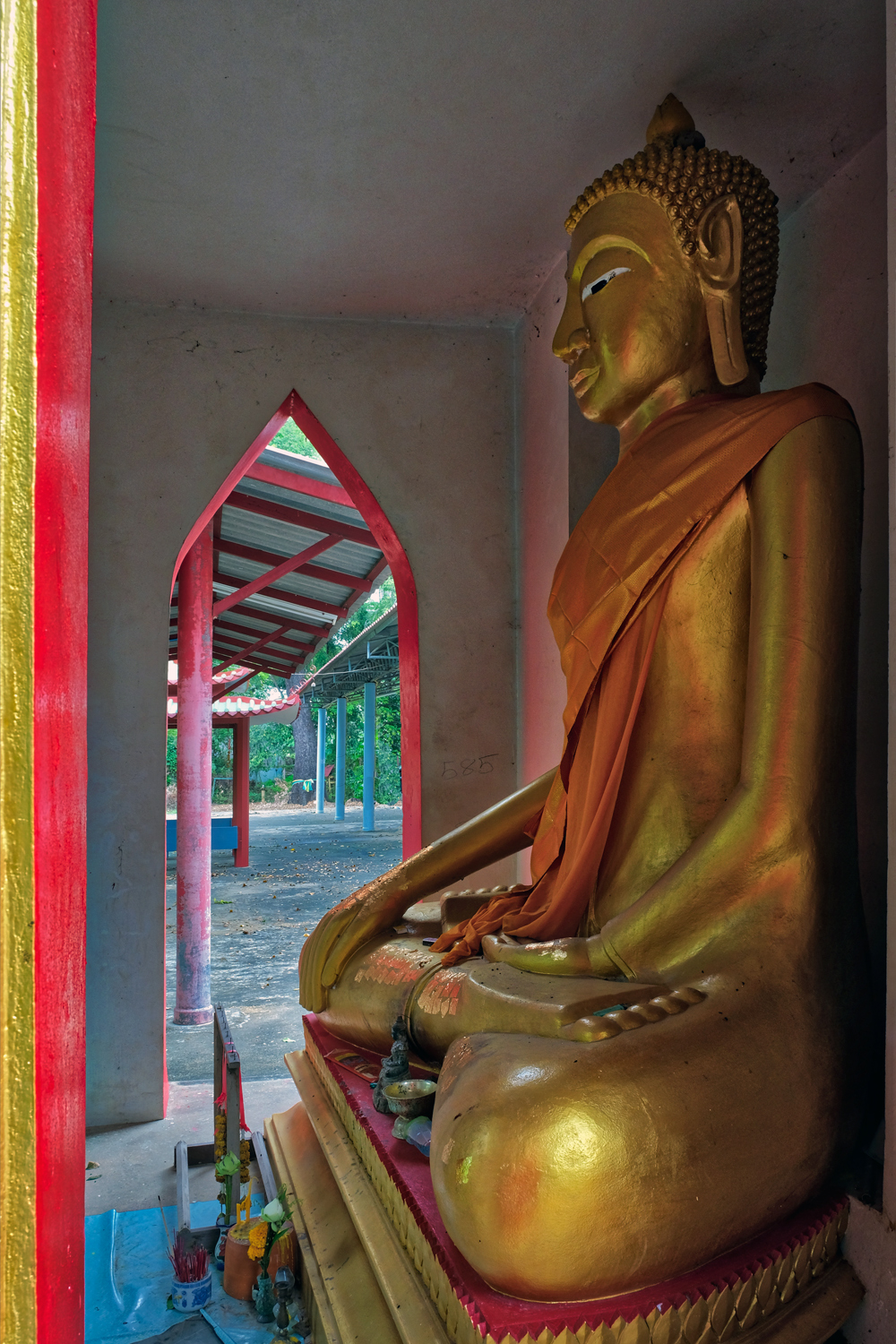 A powerful Buddha image.
A powerful Buddha image.
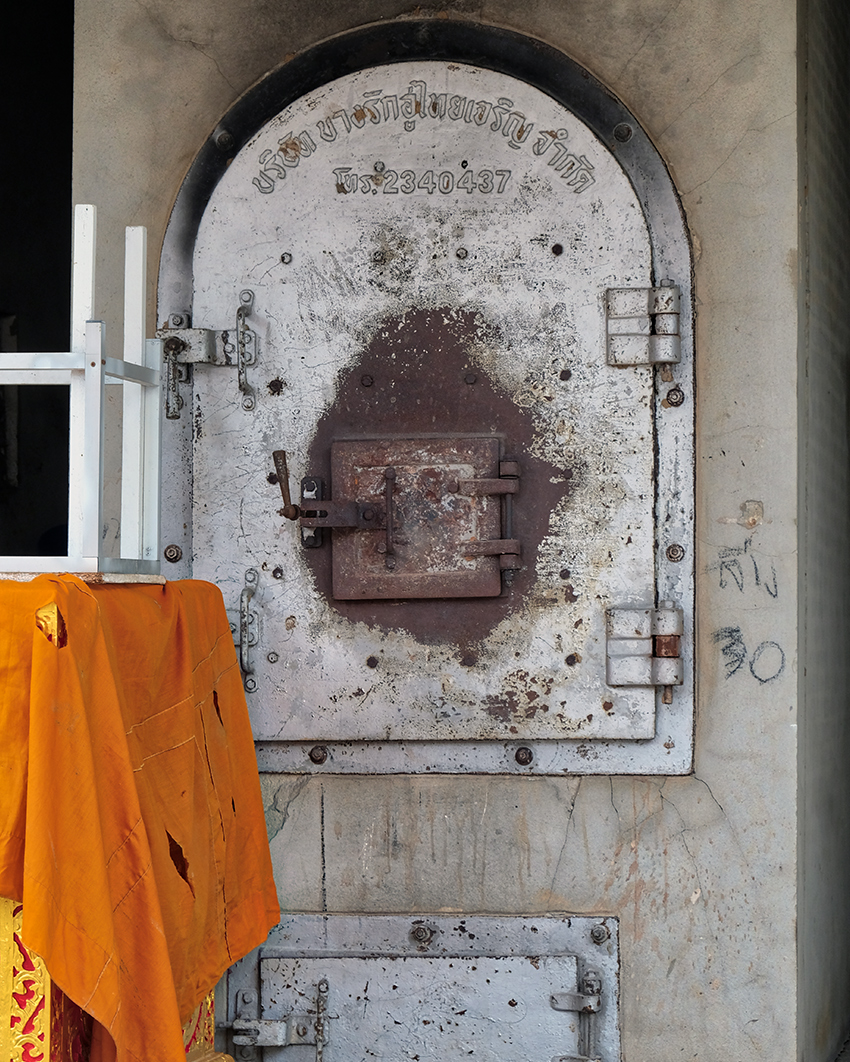 I looked one last time at my final destination . . .
I looked one last time at my final destination . . .
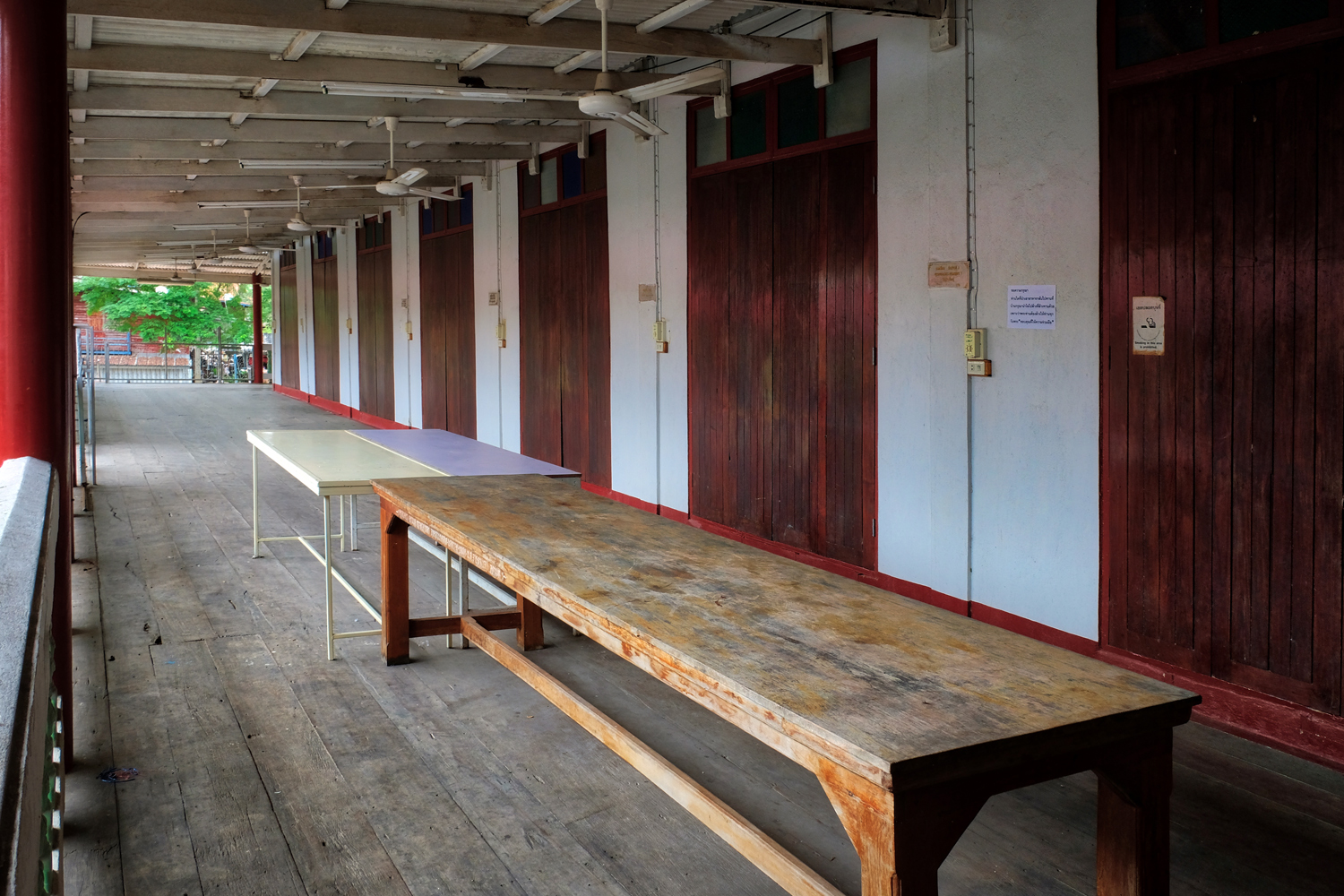 The practical side of Wat life. We left this wat and drove down a tiny rural farm road until we came to . . .
The practical side of Wat life. We left this wat and drove down a tiny rural farm road until we came to . . .
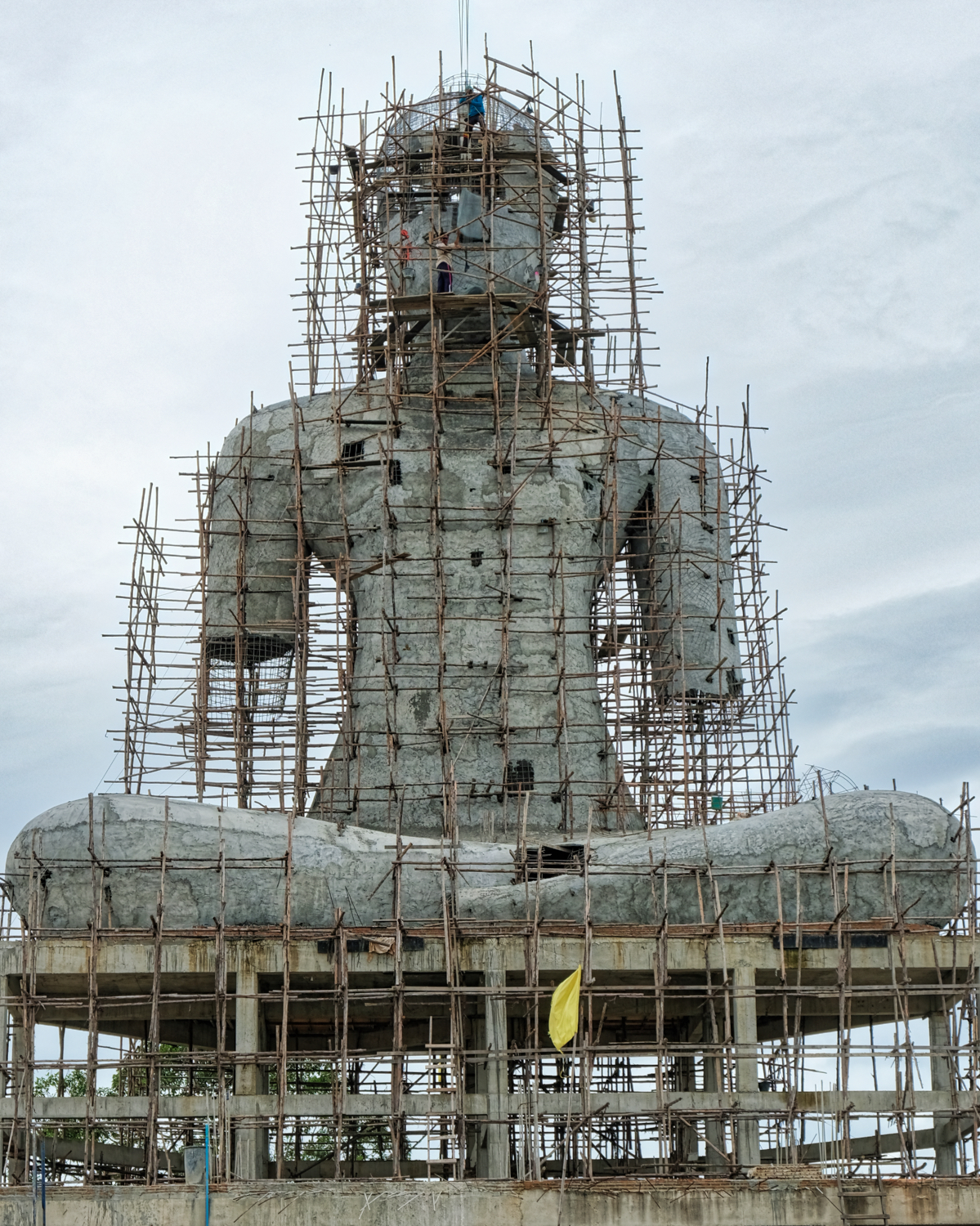 Just around the corner . . . a colossal Buddha image under construction. 10 stories tall with two workers crawling all over it.
Just around the corner . . . a colossal Buddha image under construction. 10 stories tall with two workers crawling all over it.
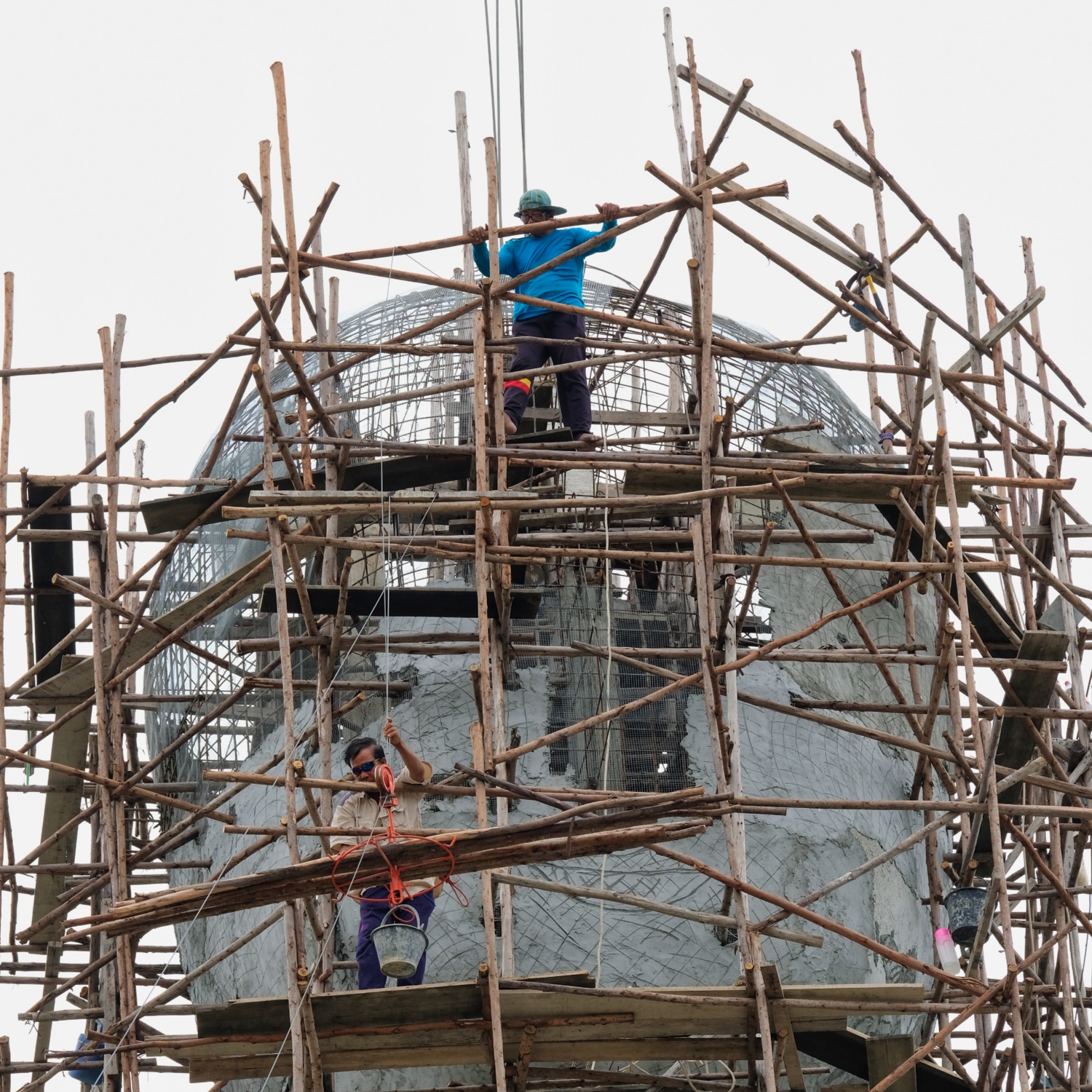 Sculpting the Buddha's head way up on bamboo scaffolding.
Sculpting the Buddha's head way up on bamboo scaffolding.
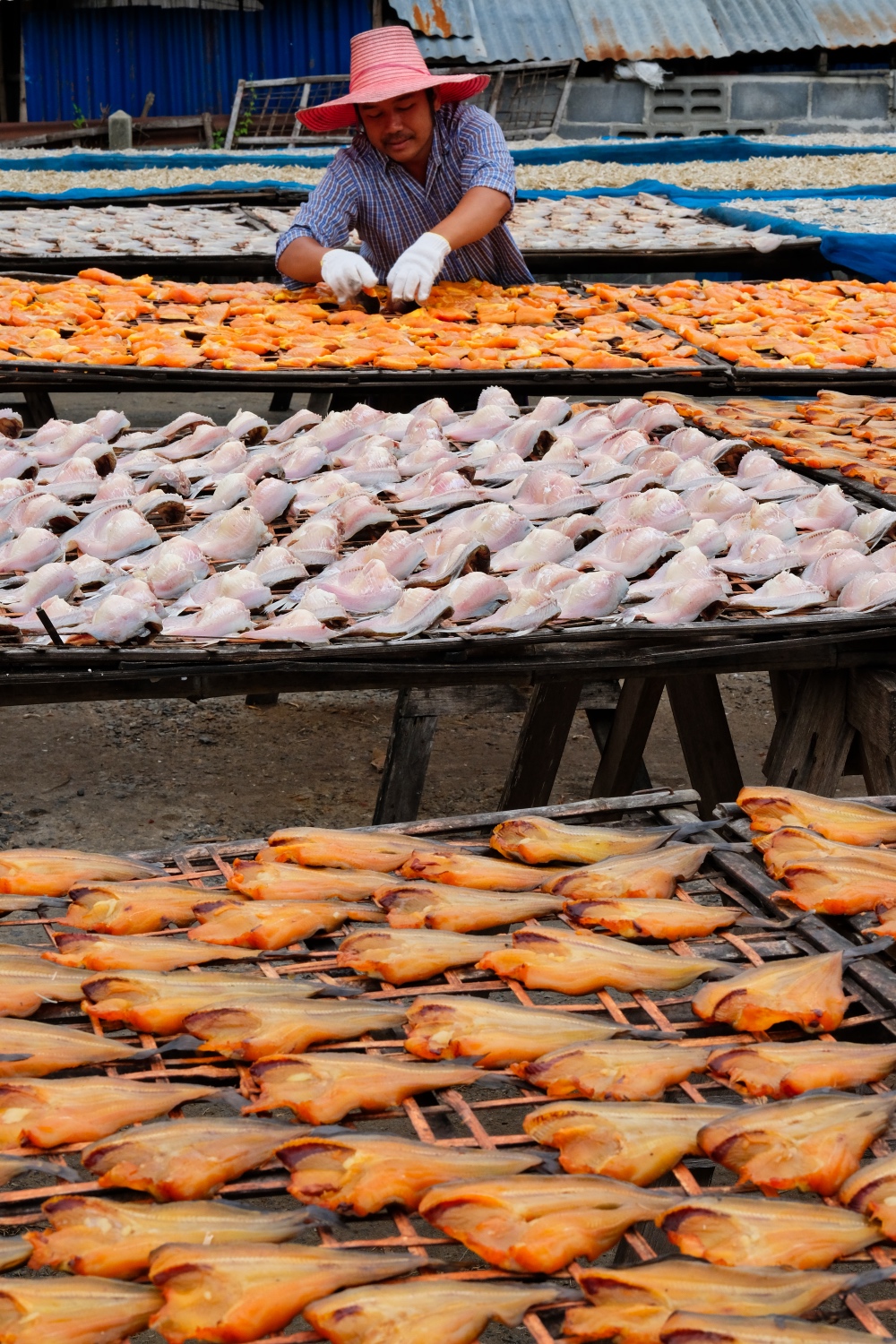 In a lot just in front of the giant Buddha under construction were these racks being filled with fish to be dried.
In a lot just in front of the giant Buddha under construction were these racks being filled with fish to be dried.
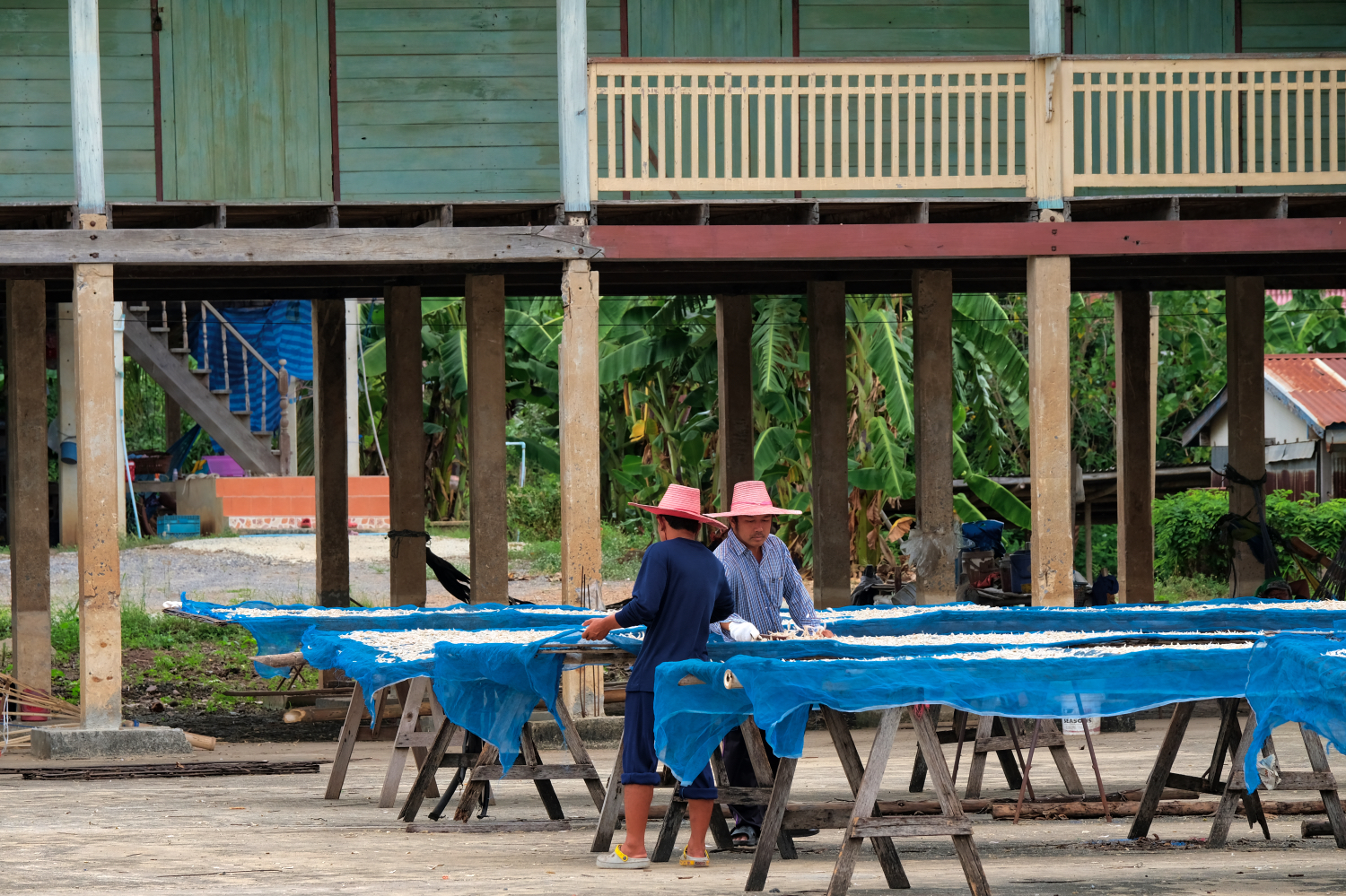 Fish spreaders . . .
Fish spreaders . . .
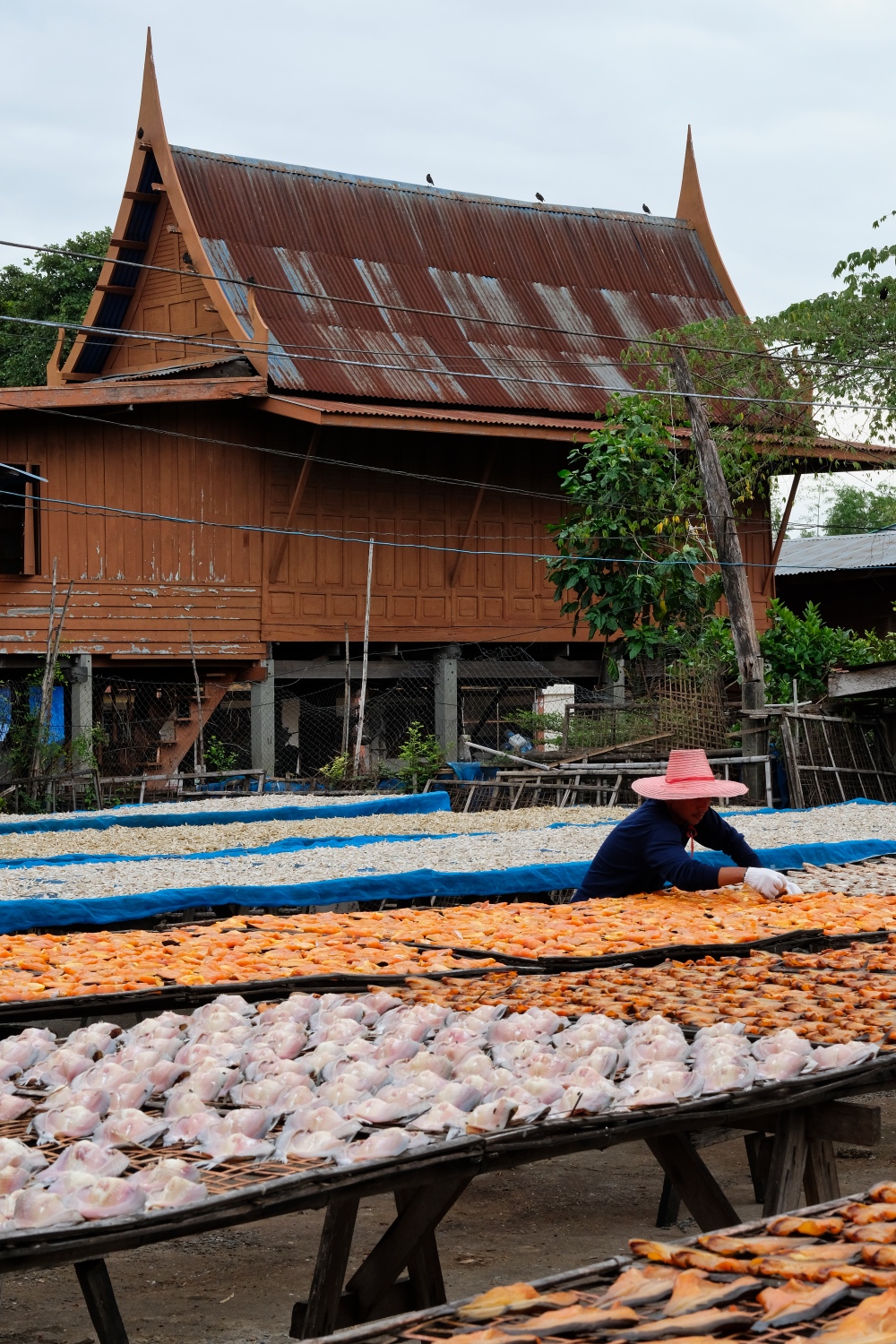 Another 500 meters walk up the country lane and we encountered another, bigger fish drying operation . . . and the same two guys spreading fish!
Another 500 meters walk up the country lane and we encountered another, bigger fish drying operation . . . and the same two guys spreading fish!
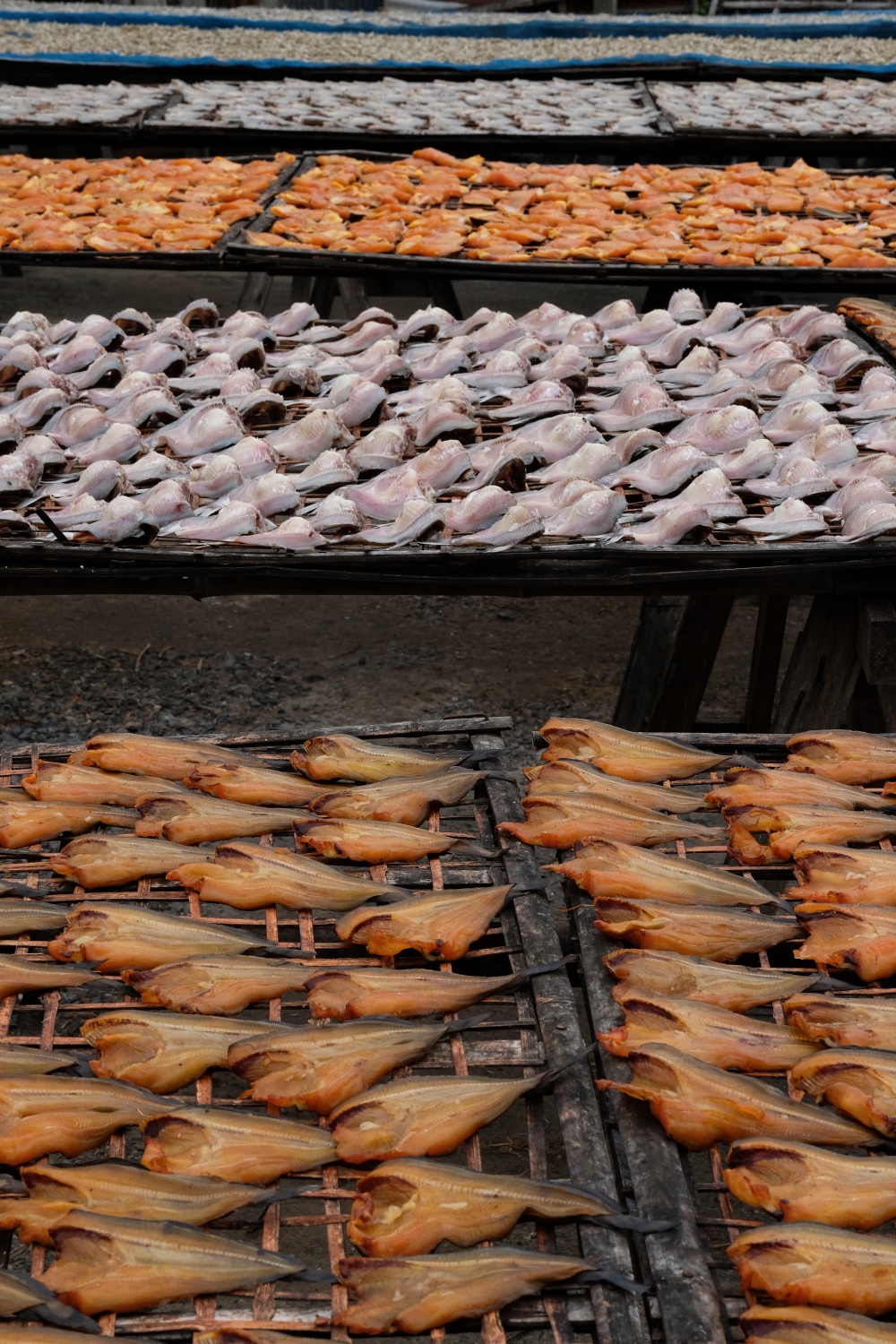 They were drying a variety of fish on bamboo racks.
They were drying a variety of fish on bamboo racks.
 Some of the drying fish had been split and skinned.
Some of the drying fish had been split and skinned.
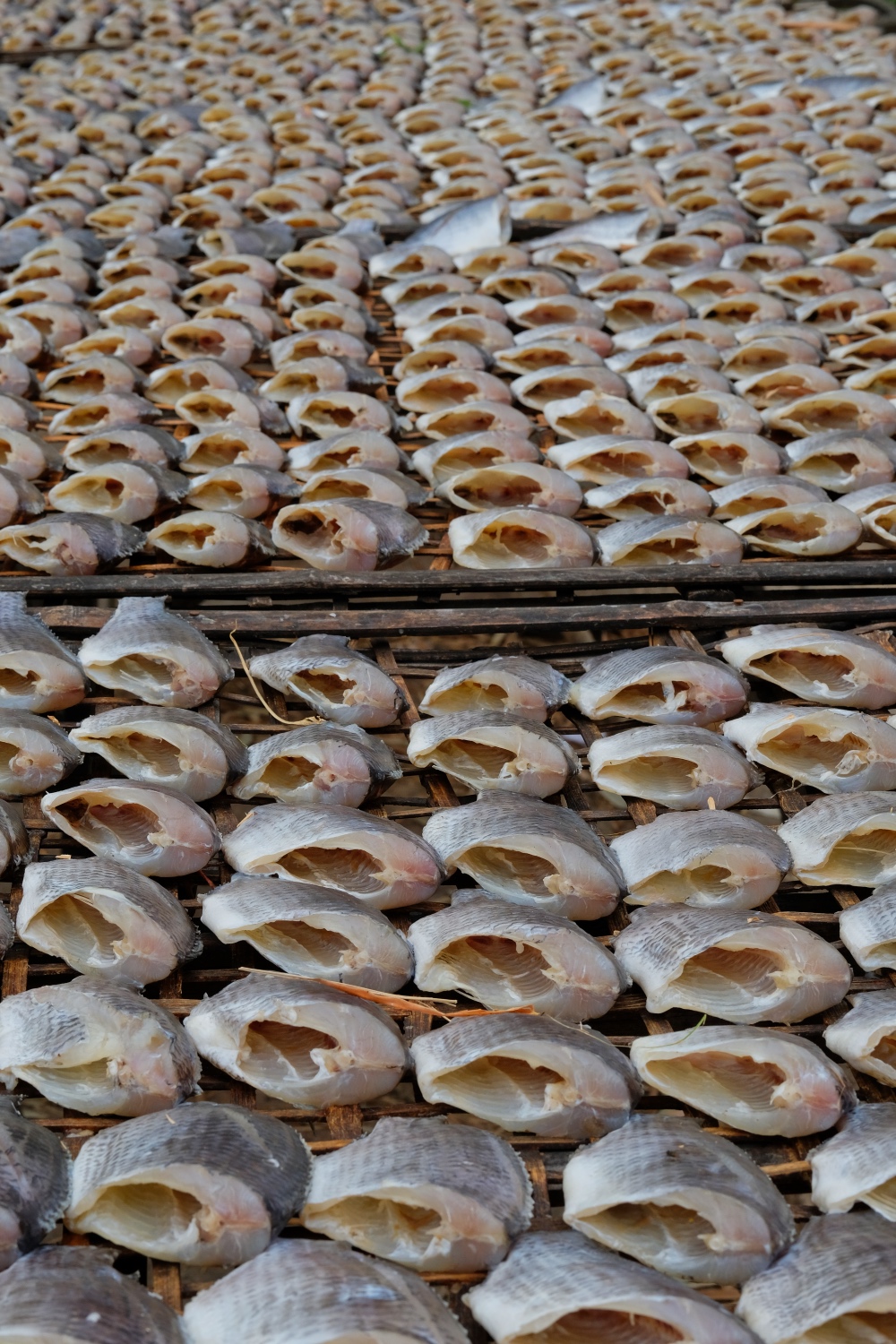 Some of the drying fish had been gutted and beheaded. There was a lot of drying fish here.
Some of the drying fish had been gutted and beheaded. There was a lot of drying fish here.
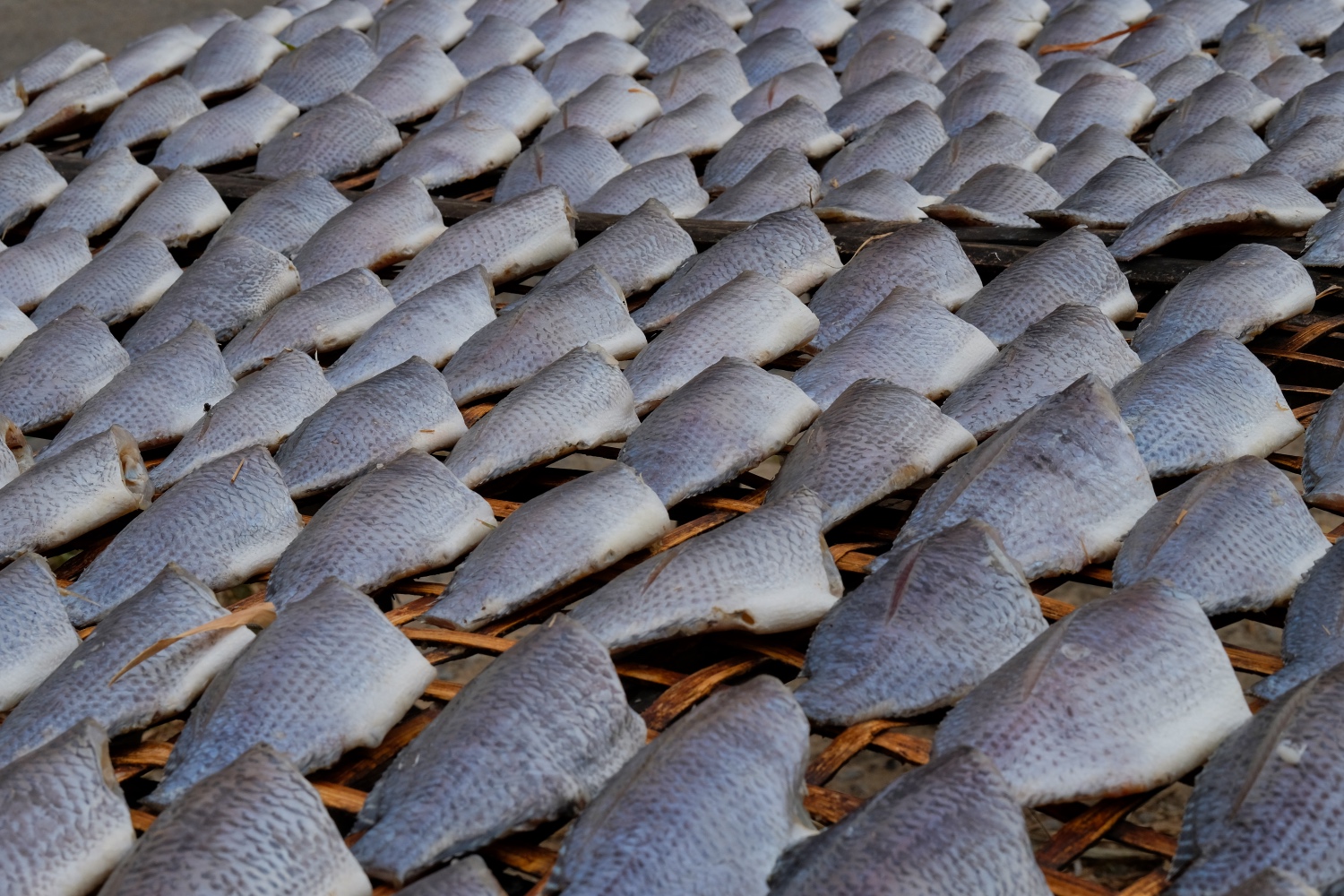 John asked one of the fish spreaders where the fish came from, since we were a couple hundred kilometers from the sea. They said it was all imported from Cambodia fresh every day.
John asked one of the fish spreaders where the fish came from, since we were a couple hundred kilometers from the sea. They said it was all imported from Cambodia fresh every day.
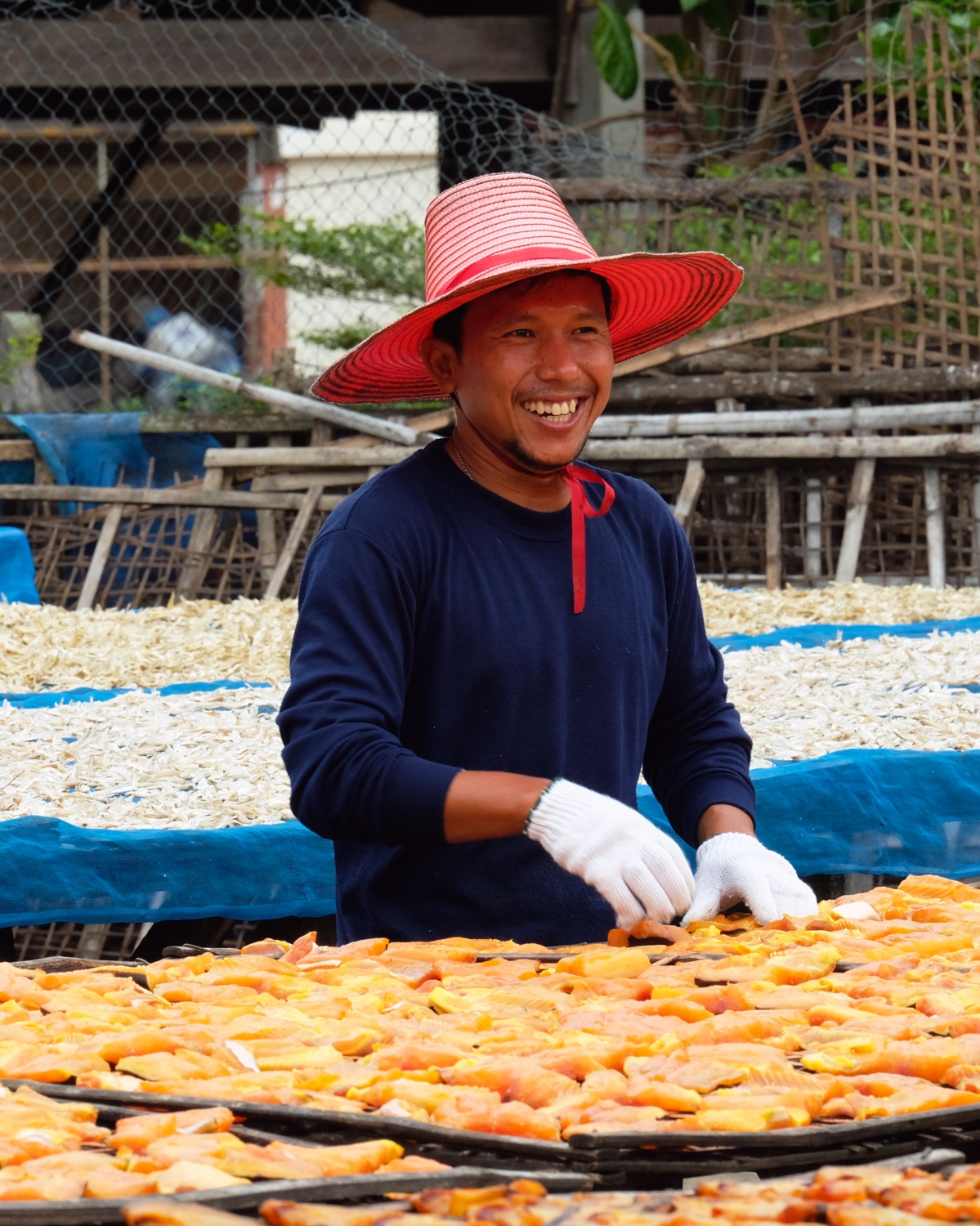 I'm afraid we made this guy a little selfconsious with all the photography . . . DAMN TOURISTS!
I'm afraid we made this guy a little selfconsious with all the photography . . . DAMN TOURISTS!
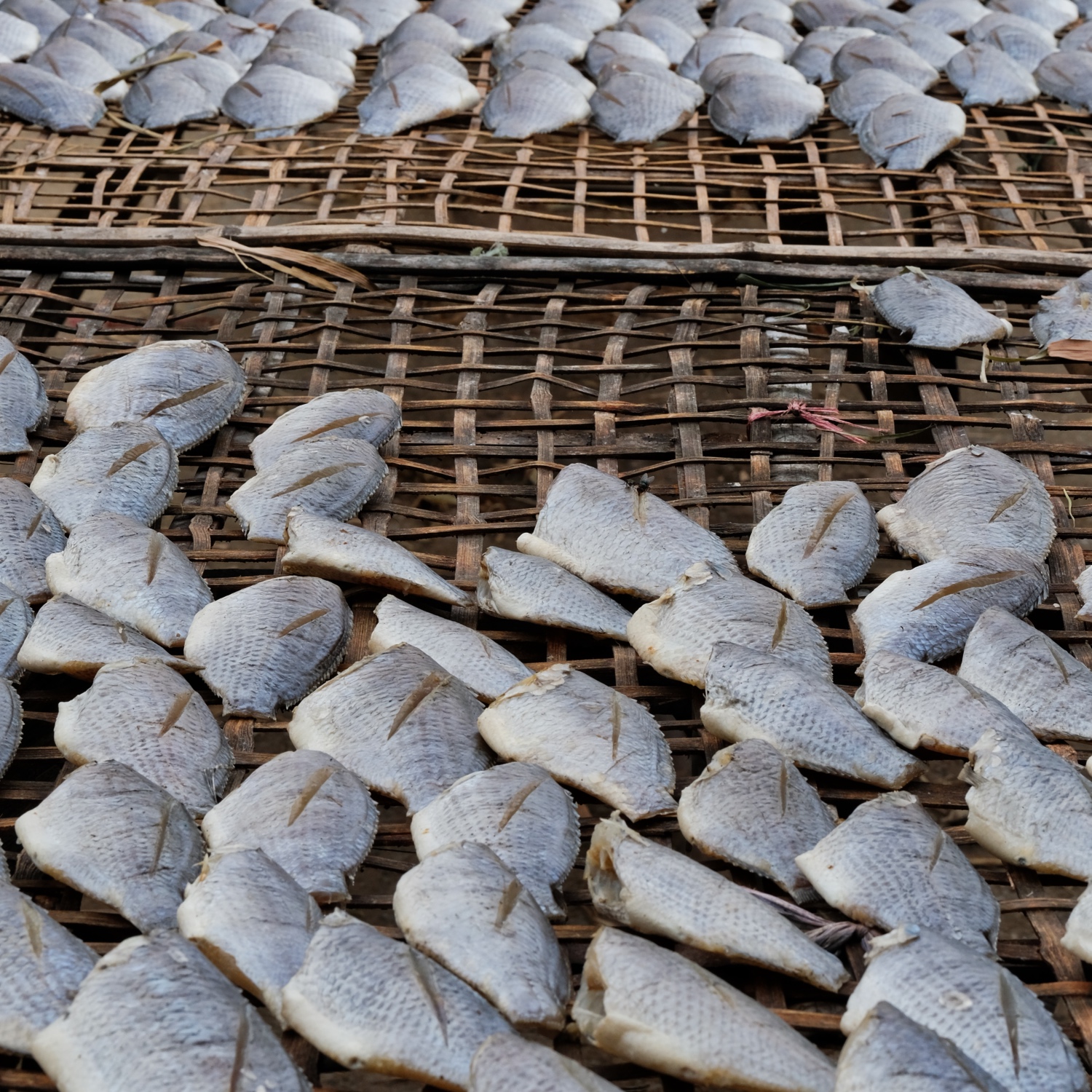 I took way too many photographs of these incredible fish patterns . . . .
I took way too many photographs of these incredible fish patterns . . . .
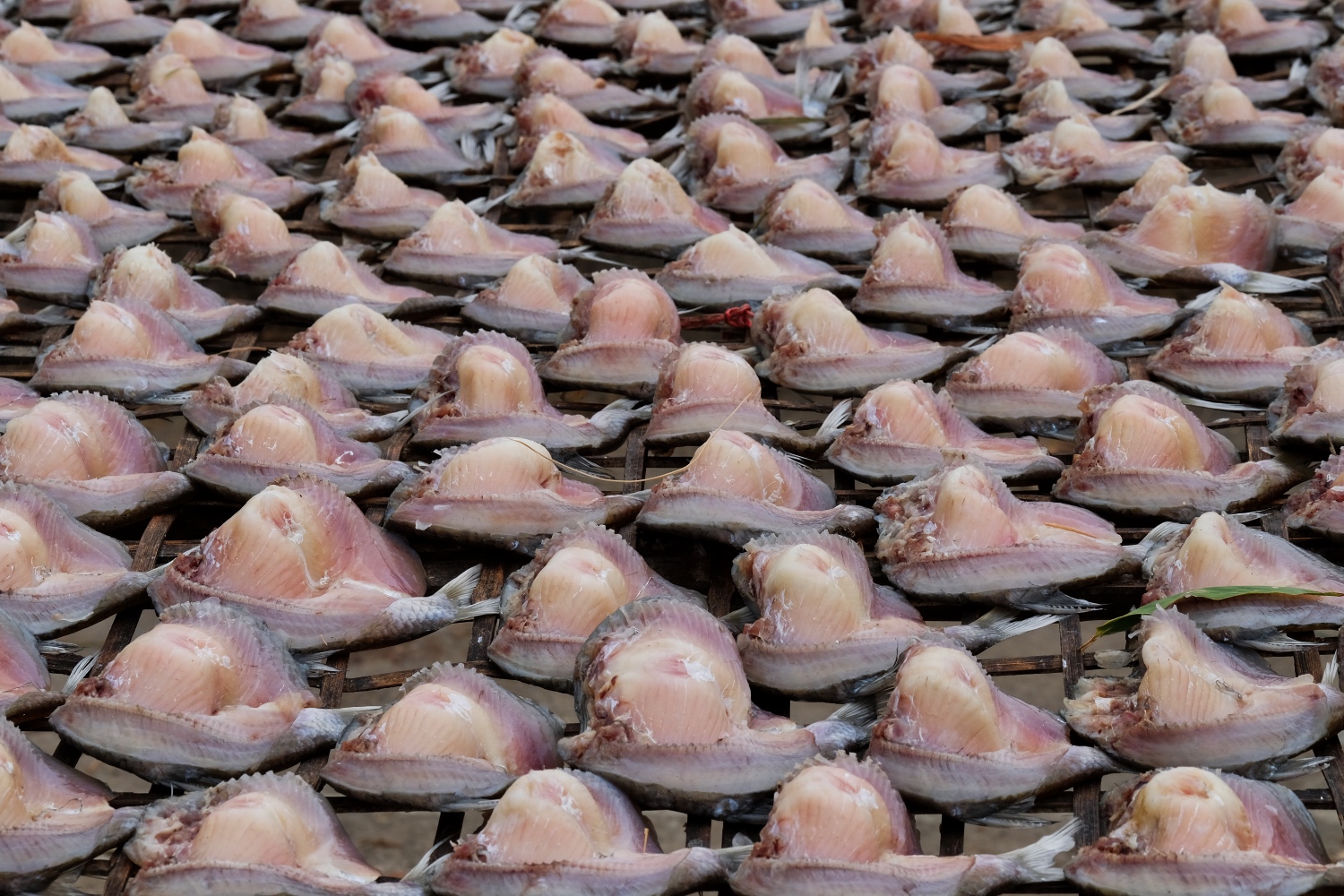 Very strange things to see out in the Thai countryside. We left the drying fish behind and went looking for the sunflower fields.
Very strange things to see out in the Thai countryside. We left the drying fish behind and went looking for the sunflower fields.
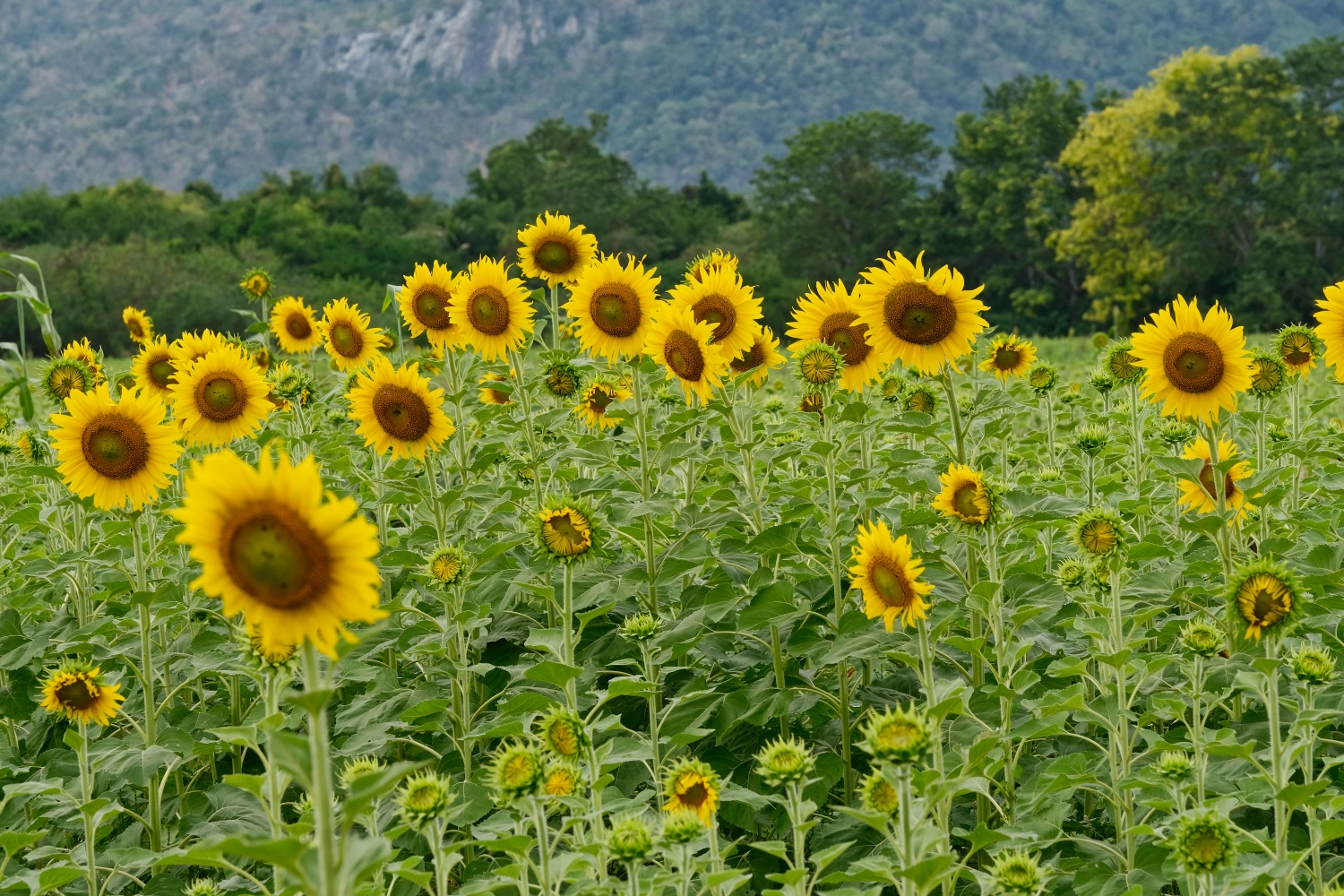 We eventually found a field that was just coming into flower.
We eventually found a field that was just coming into flower.
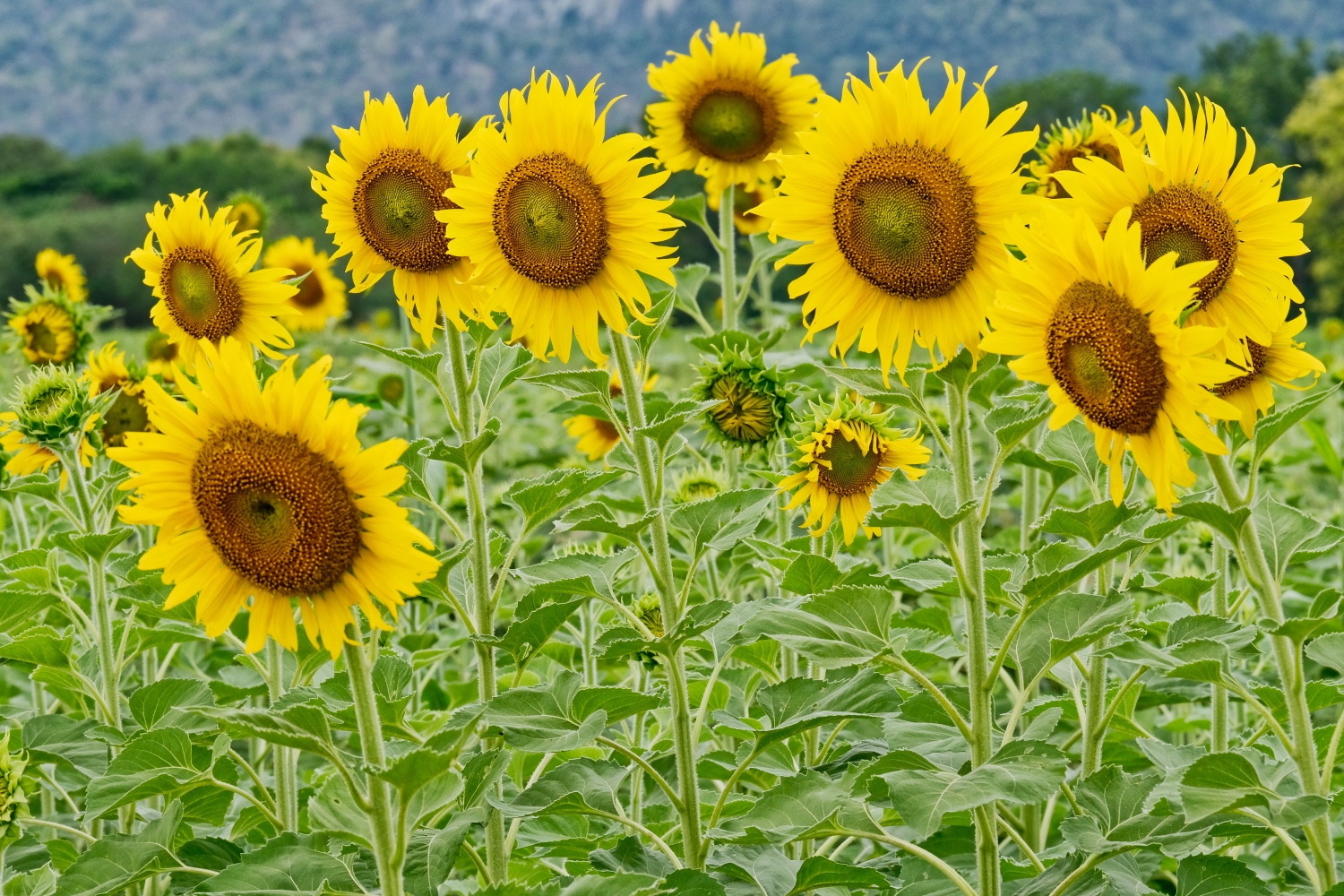 We first explored a little patch up a dirt path . . . away from another field that had quite a few other sunflower pilgrims.
We first explored a little patch up a dirt path . . . away from another field that had quite a few other sunflower pilgrims.
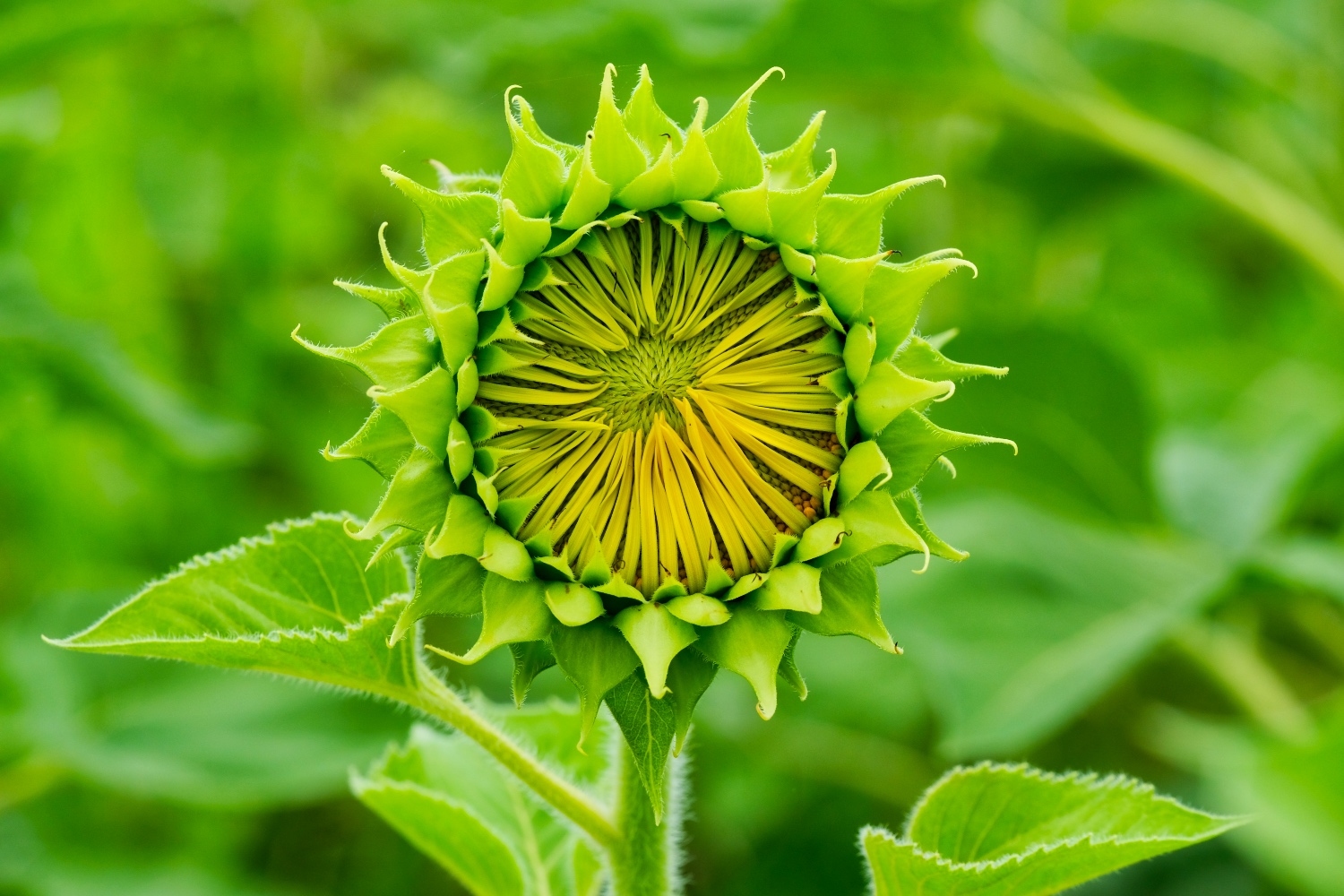 New sunflowers budding are fantastically interesting things.
New sunflowers budding are fantastically interesting things.
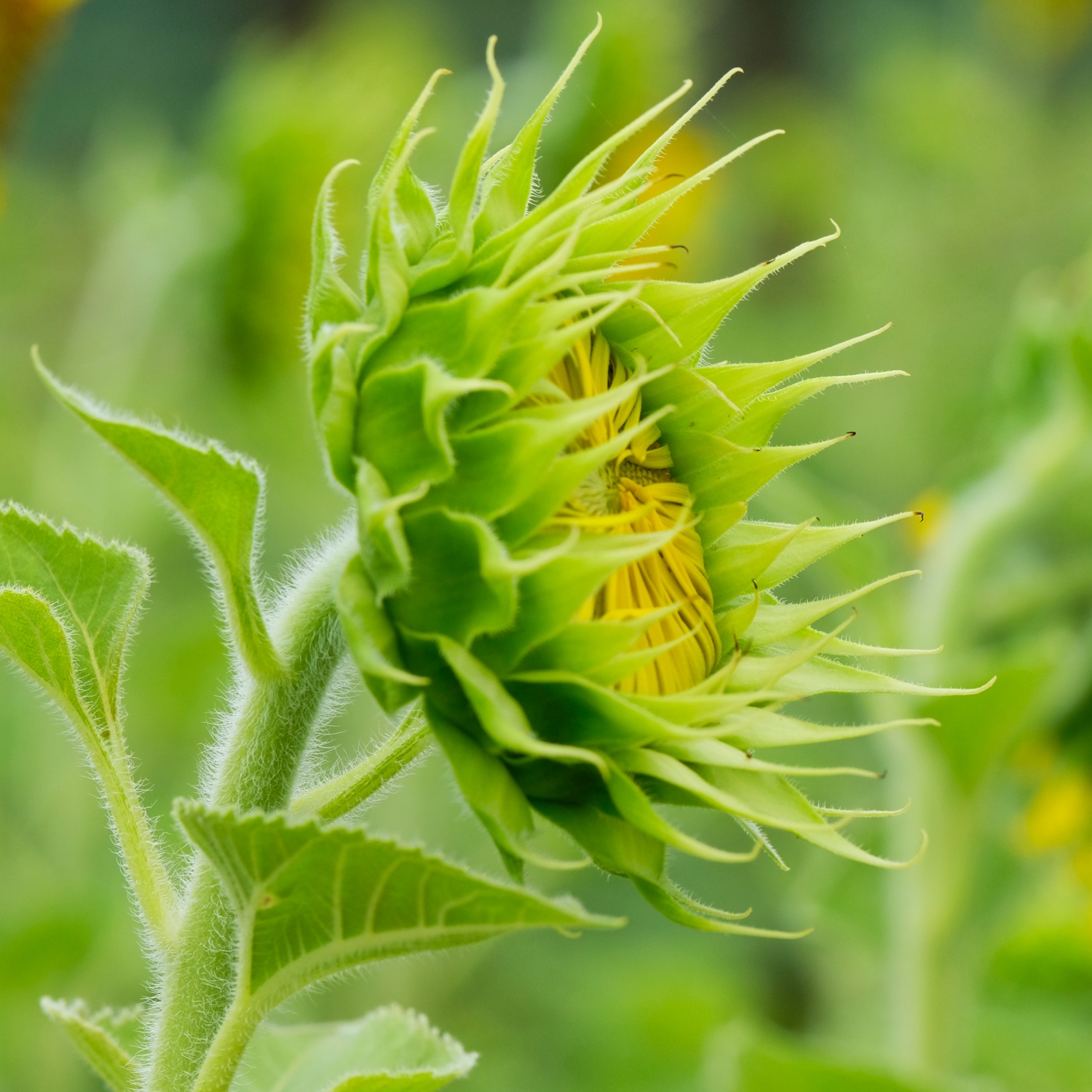 The sun was hiding behind the clouds, but that might have made the photography better . . . .
The sun was hiding behind the clouds, but that might have made the photography better . . . .
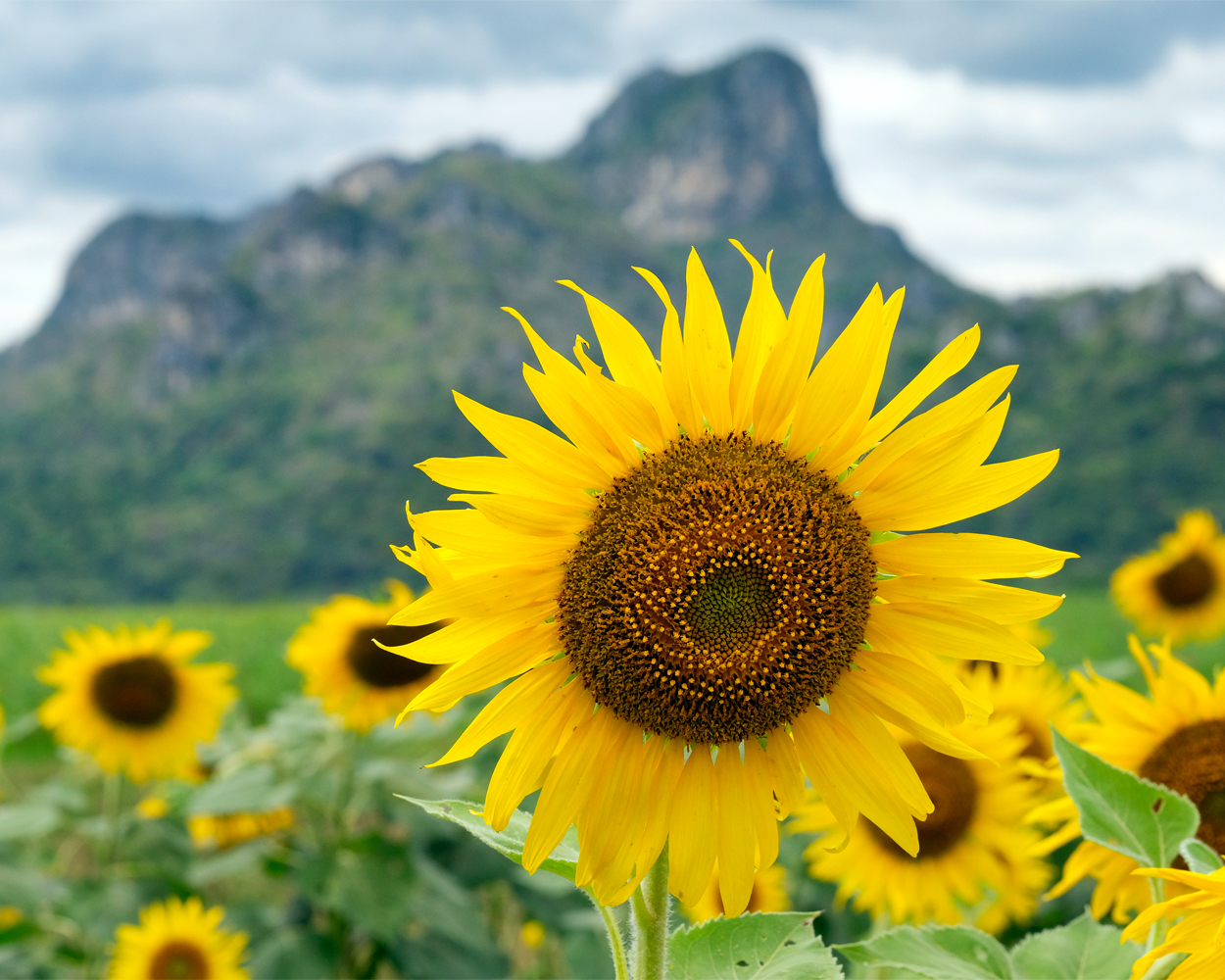 Beautiful sunflowers . . . they make you happy.
Beautiful sunflowers . . . they make you happy.
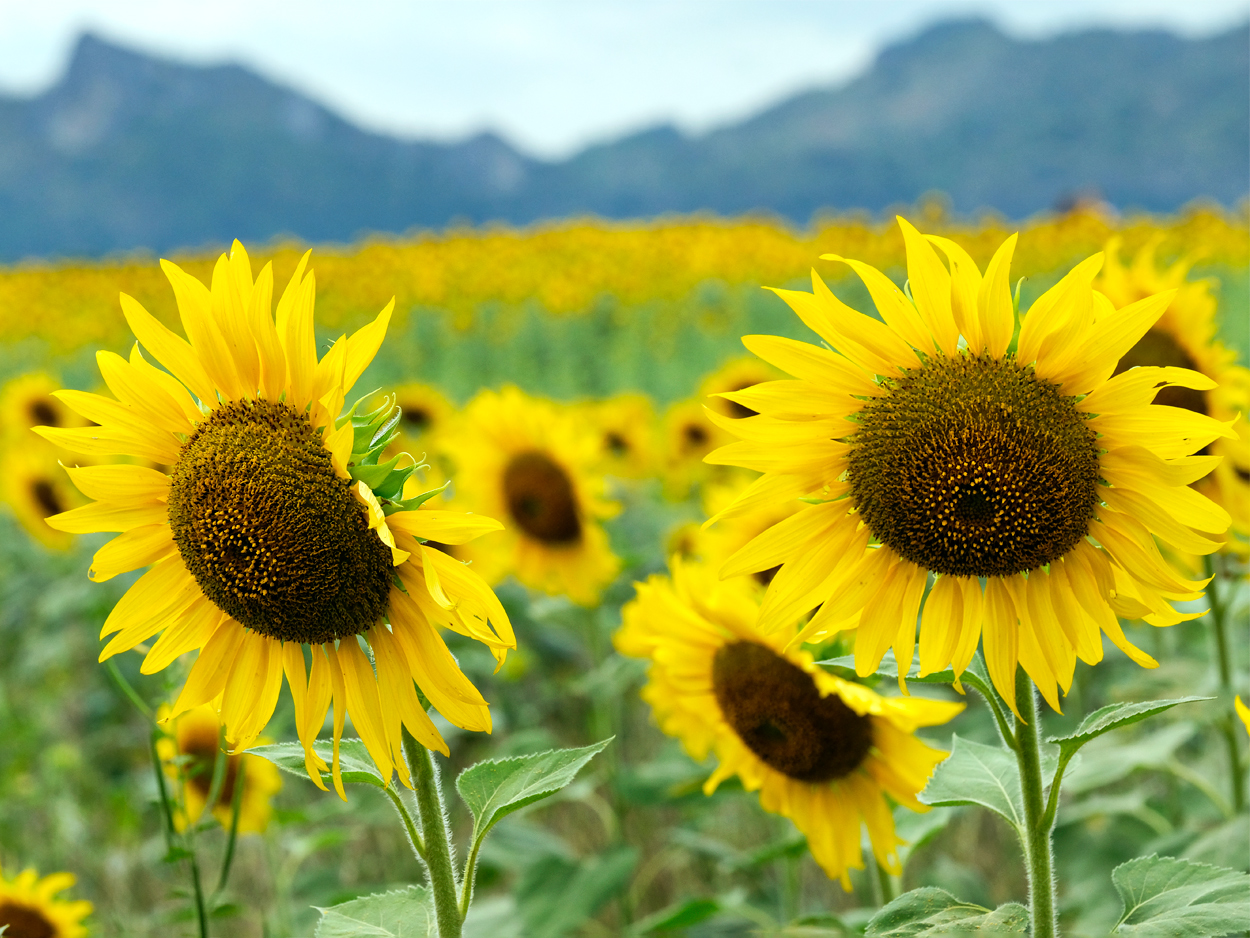 A beautiful place to be on a Monday afternoon . . .
A beautiful place to be on a Monday afternoon . . .
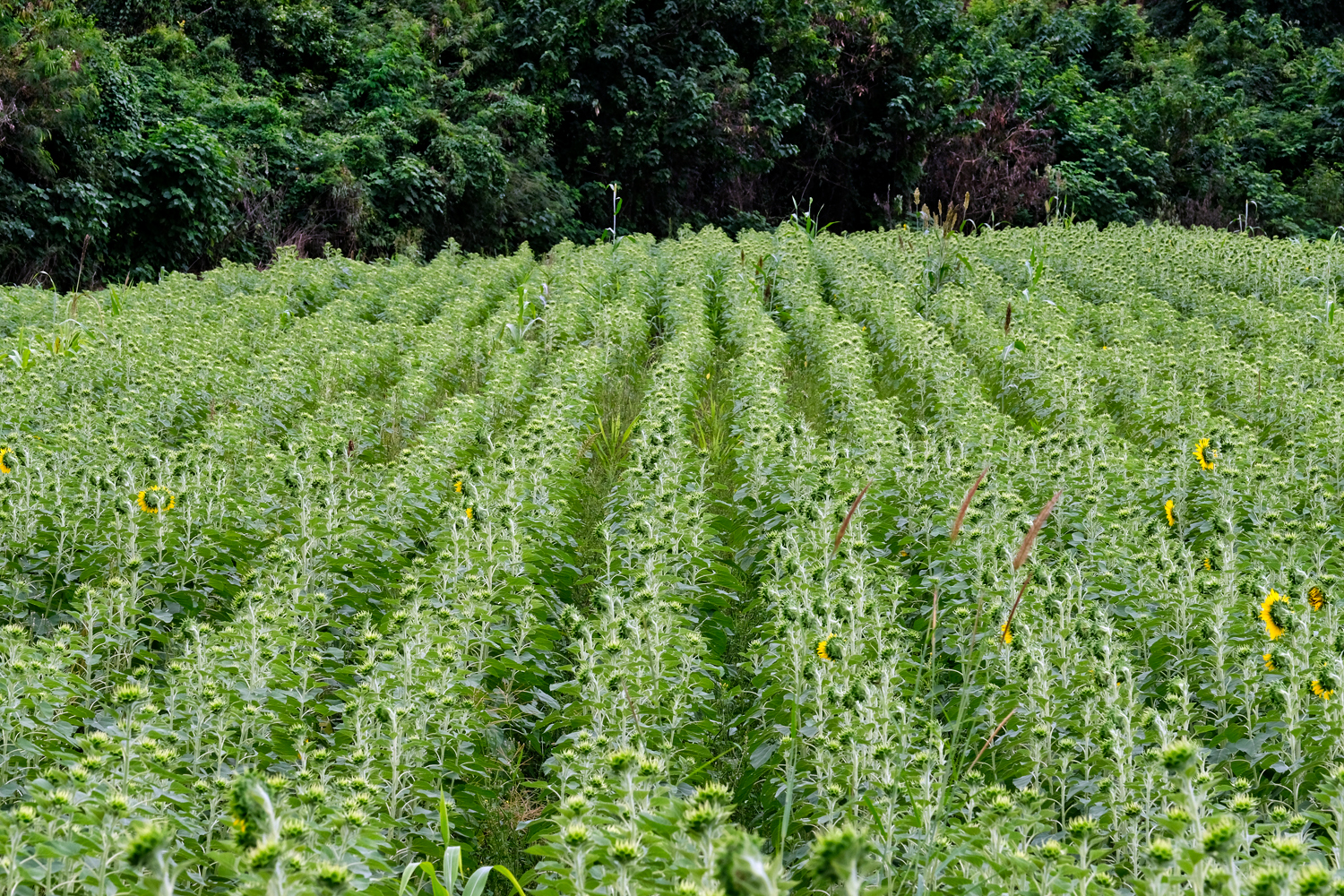 We passed by a field that had yet to flower. John, from Iowa and, like all people from Iowa, was an expert on sunflowers. He said that sunflowers have an 'internal clock' -- in other words, sunflowers planted a week after other sunflowers, will bloom one week later.
We passed by a field that had yet to flower. John, from Iowa and, like all people from Iowa, was an expert on sunflowers. He said that sunflowers have an 'internal clock' -- in other words, sunflowers planted a week after other sunflowers, will bloom one week later.
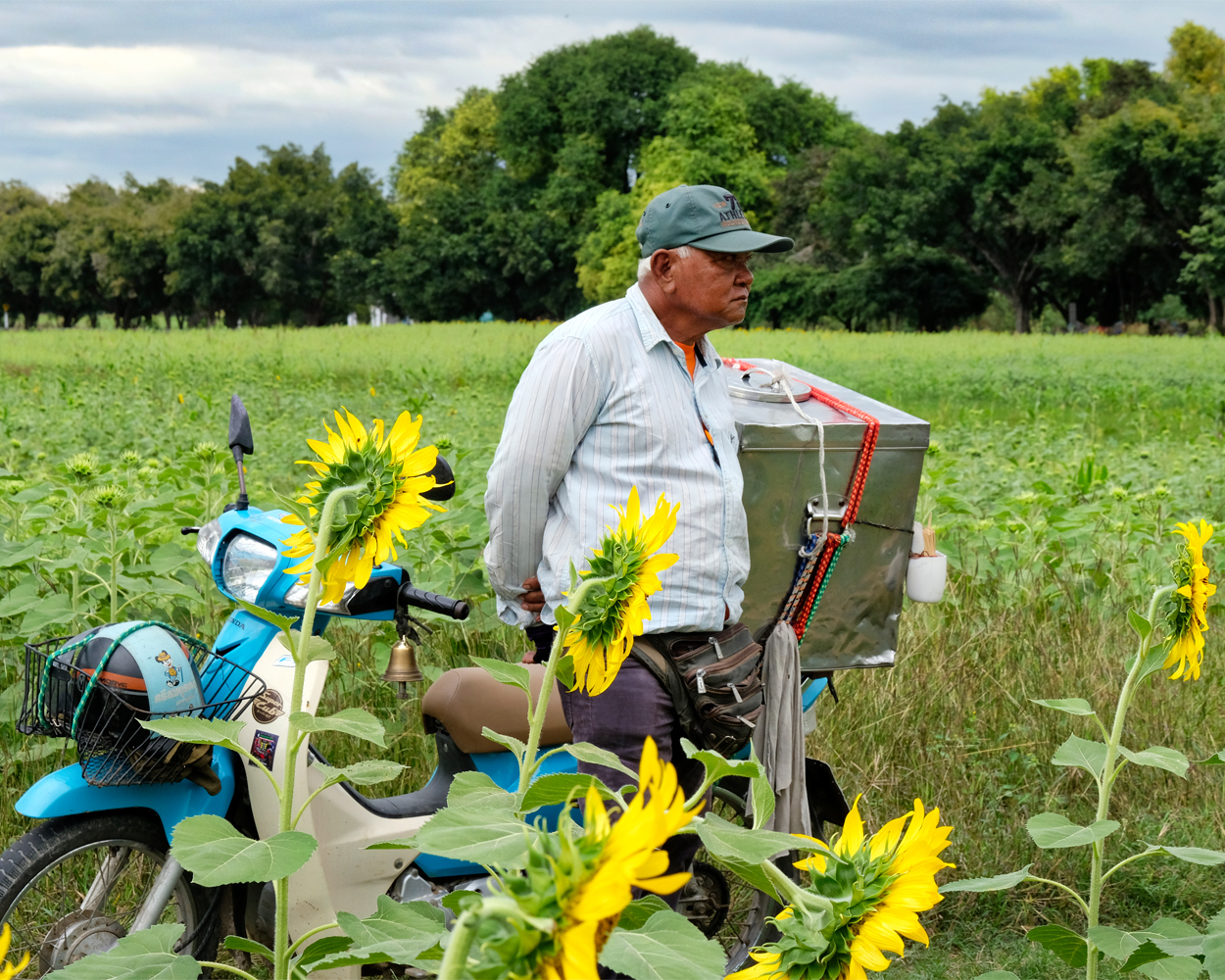 An ice cream hawker found his way to here the Thai tourists were . . . as we had.
An ice cream hawker found his way to here the Thai tourists were . . . as we had.
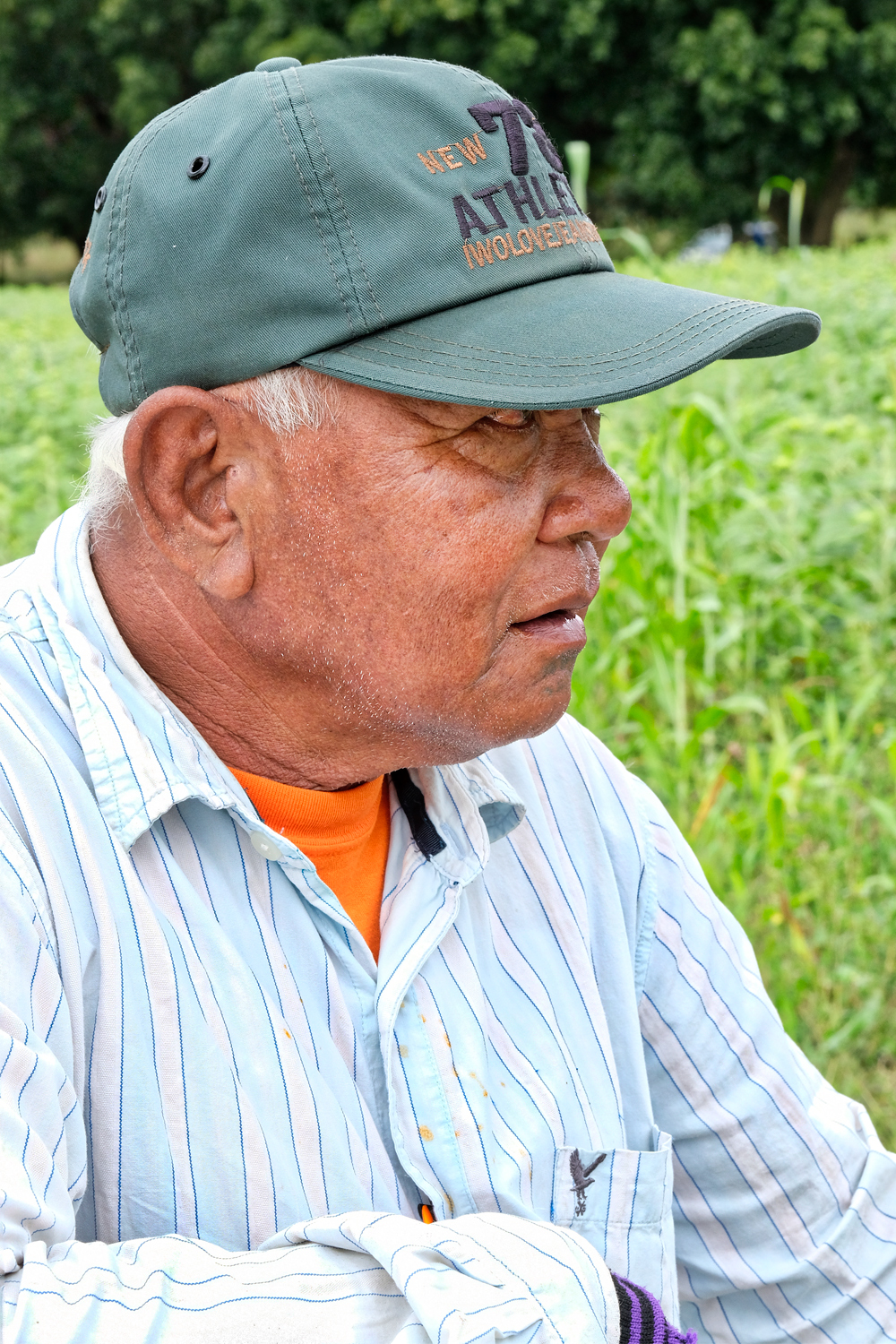 John bought an ice cream sandwich . . . literally, a slab of ice cream in between slices of bread. The hawker consented to this photograph.
John bought an ice cream sandwich . . . literally, a slab of ice cream in between slices of bread. The hawker consented to this photograph.
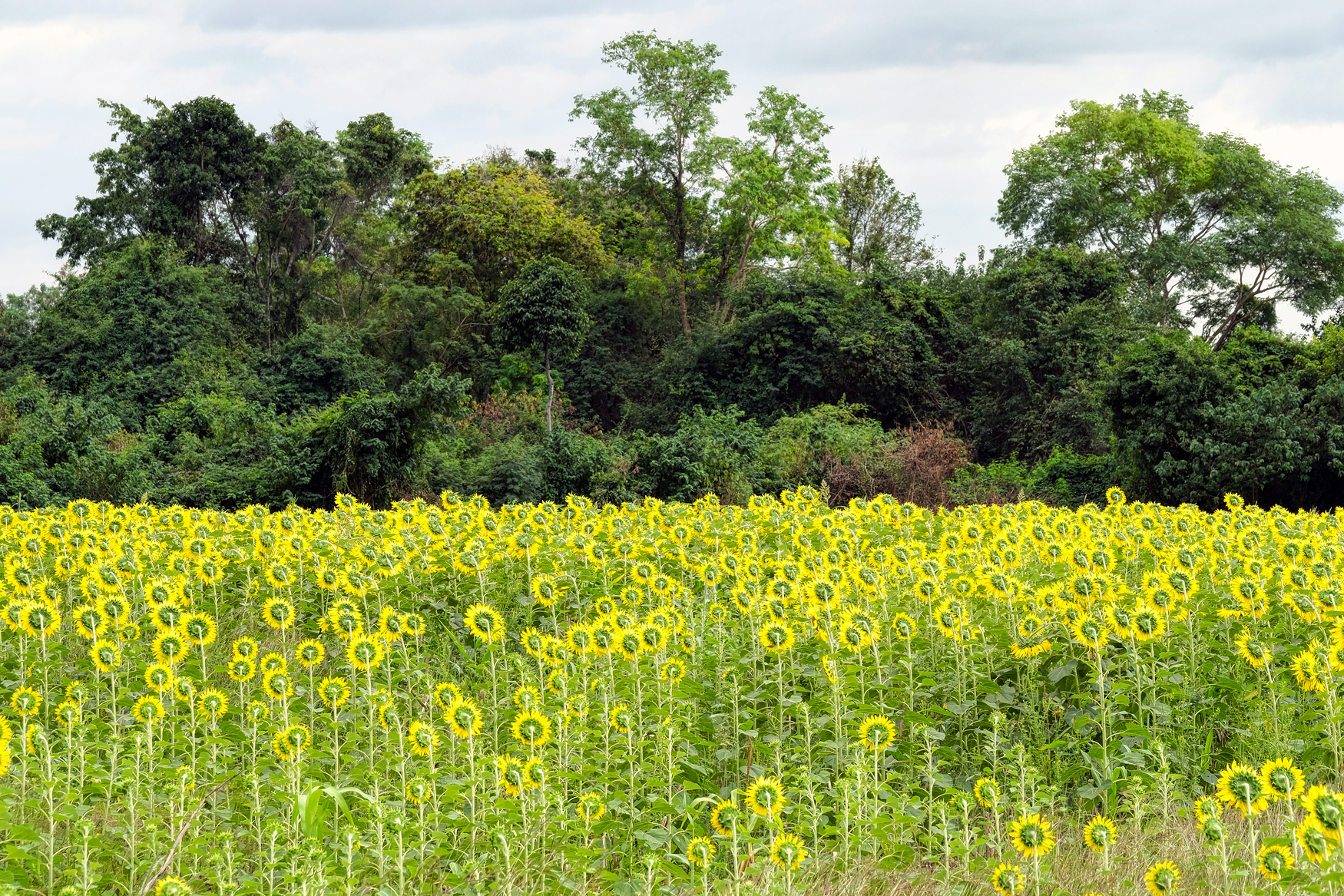 We found a larger field of blooms.
We found a larger field of blooms.
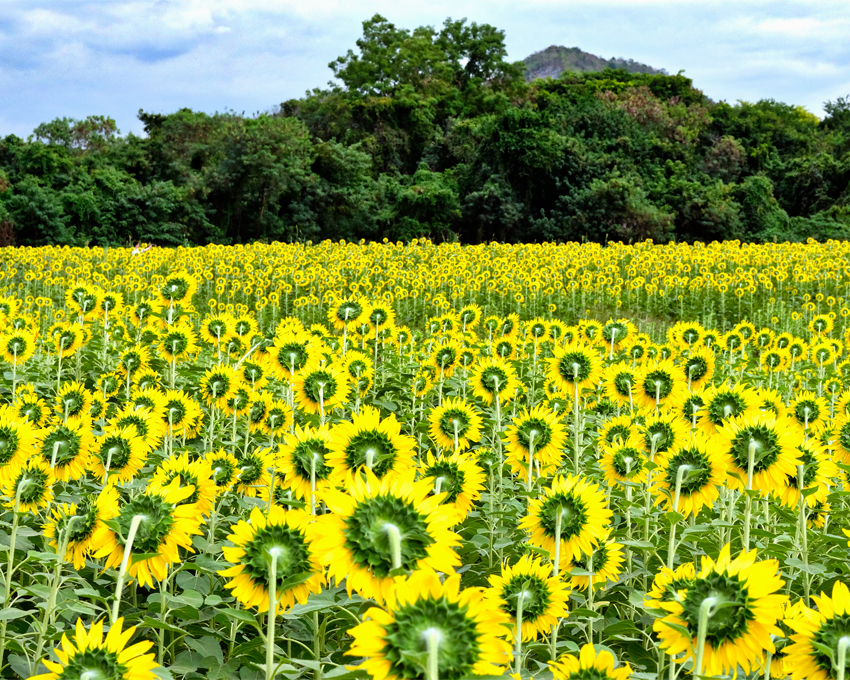 This is more like it.
This is more like it.
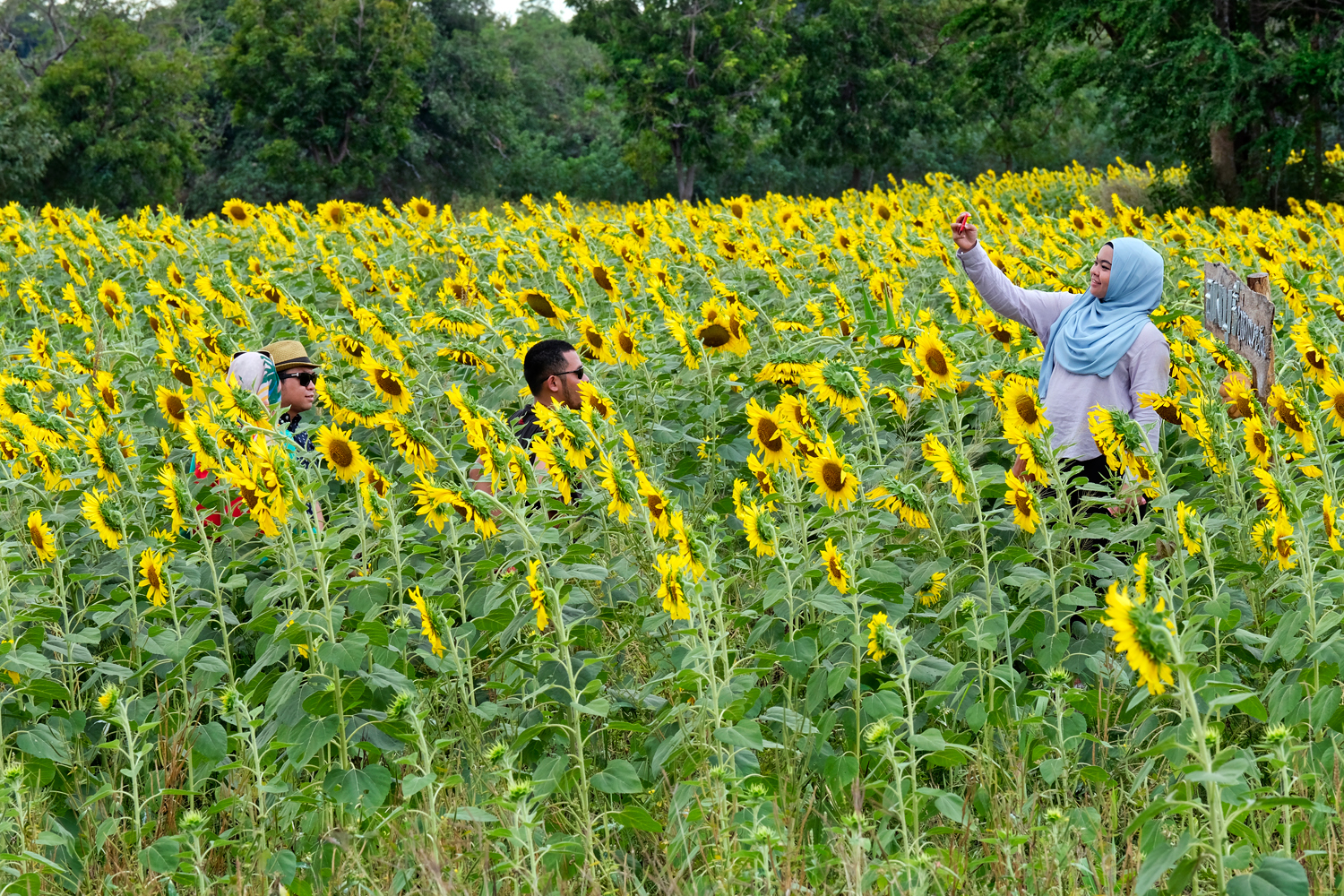 We were not alone, of course. Sunflower fields attract people like moths to a flame.
We were not alone, of course. Sunflower fields attract people like moths to a flame.
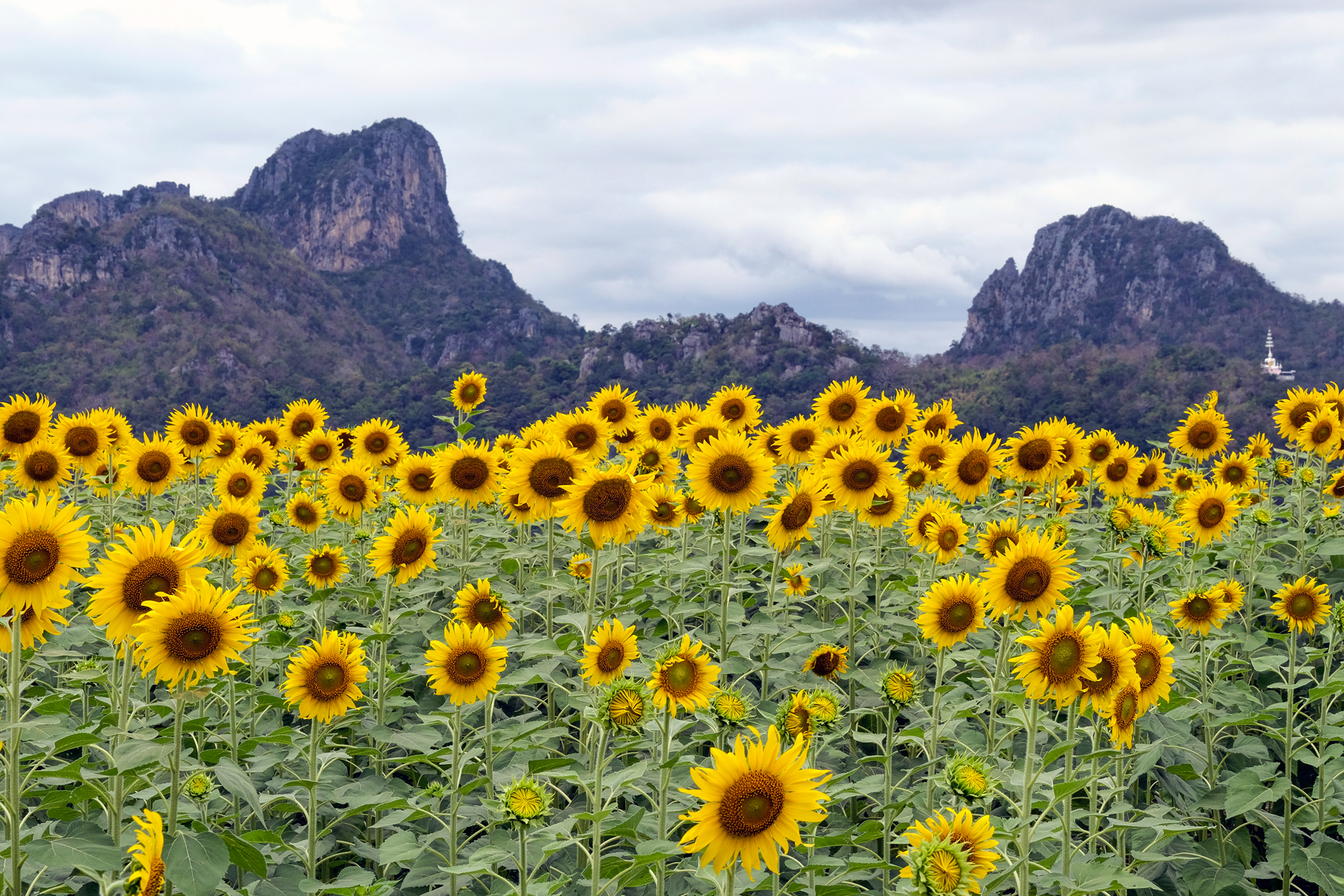 A gorgeous place to find a sunflower field . . . below the sharp hills with a Buddhist temple perched high up on a rise.
A gorgeous place to find a sunflower field . . . below the sharp hills with a Buddhist temple perched high up on a rise.
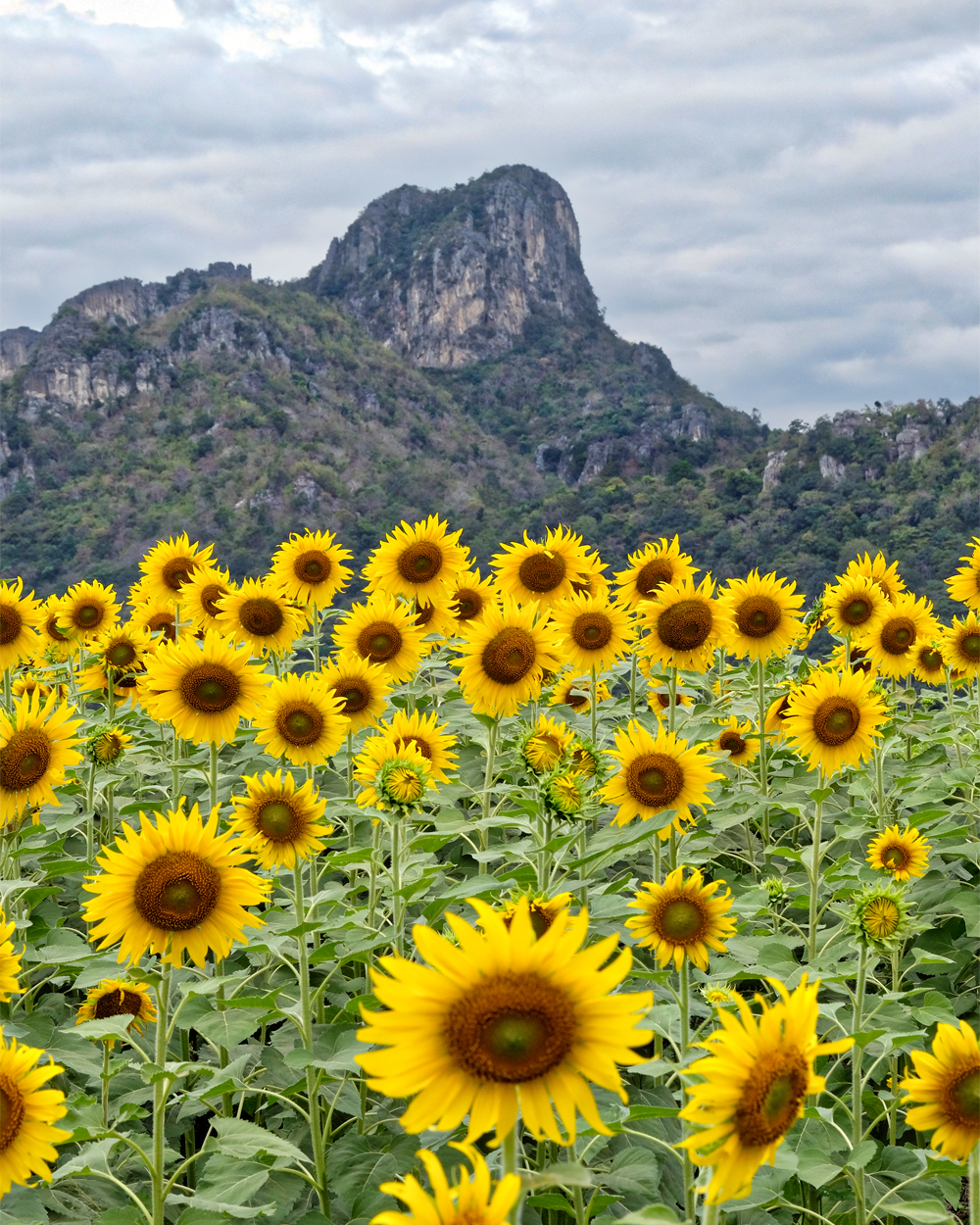 The light was starting to fade as we headed out of the beautiful fields . . . we had a hilltop Buddha image to get to.
The light was starting to fade as we headed out of the beautiful fields . . . we had a hilltop Buddha image to get to.
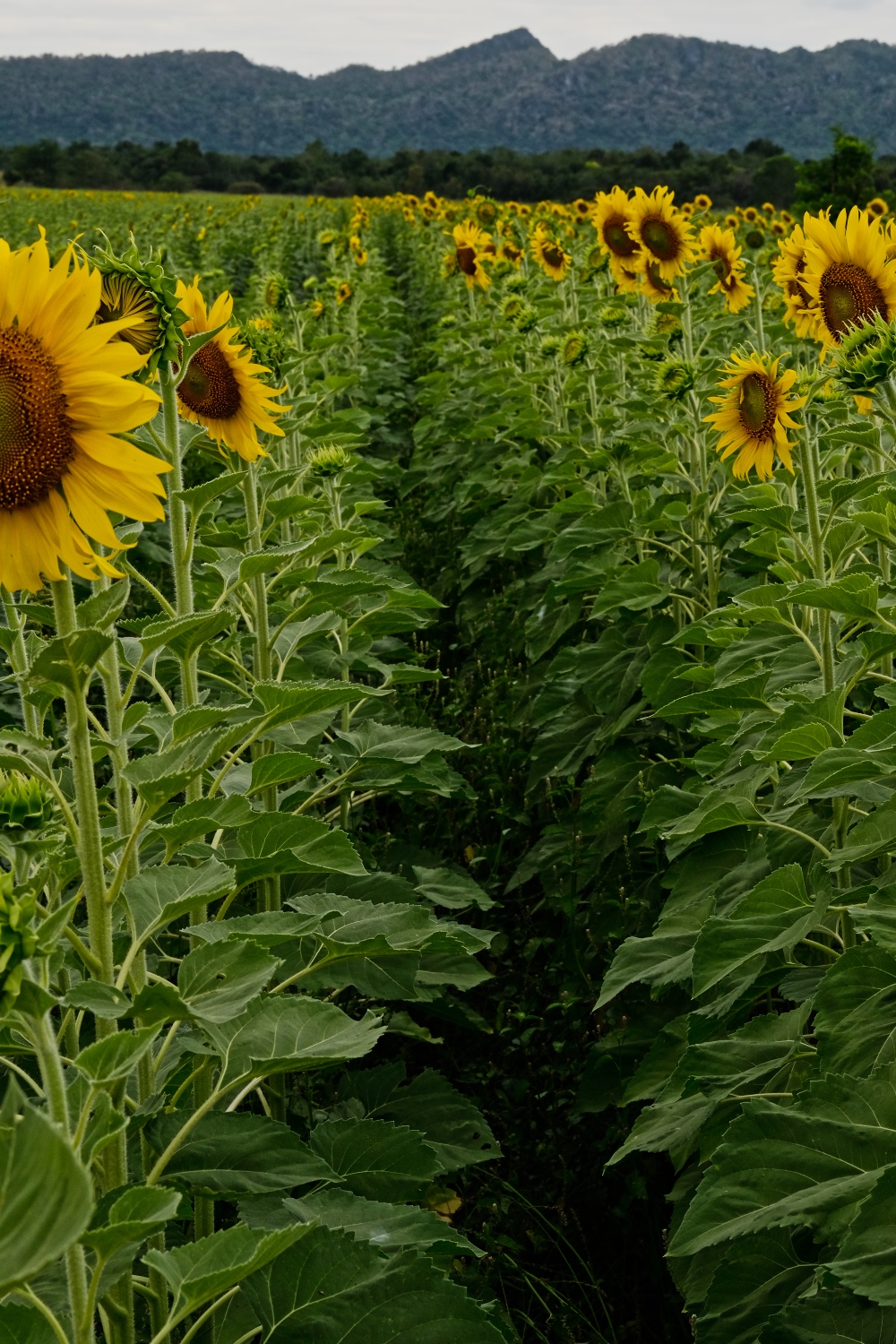 Rows and rows of sunflowers popping in and out of the sunlight.
Rows and rows of sunflowers popping in and out of the sunlight.
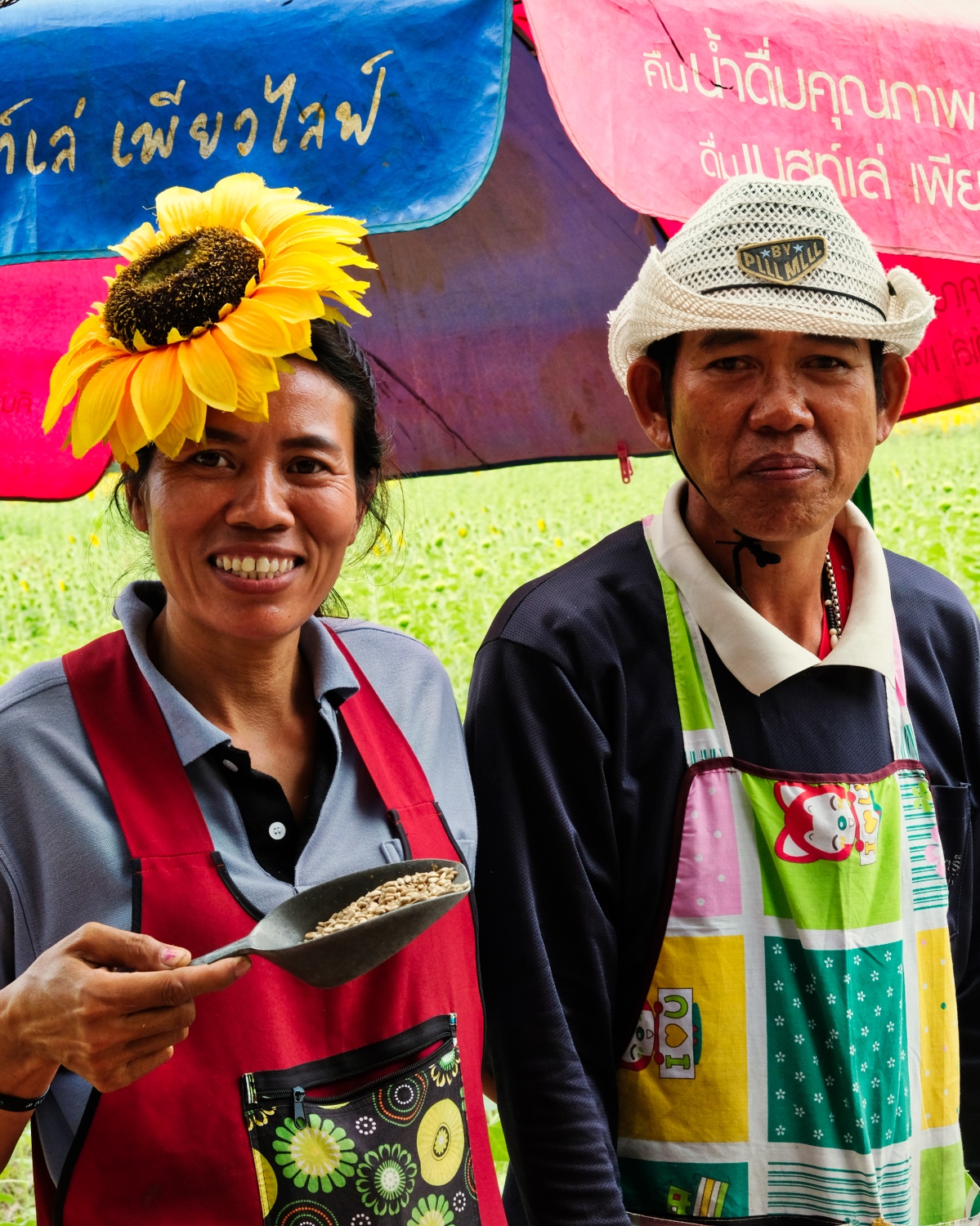 This sweet, and nutty, couple were selling freshly salted and roasted sunflower seeds. I bought a kilo (they were delicious).
This sweet, and nutty, couple were selling freshly salted and roasted sunflower seeds. I bought a kilo (they were delicious).
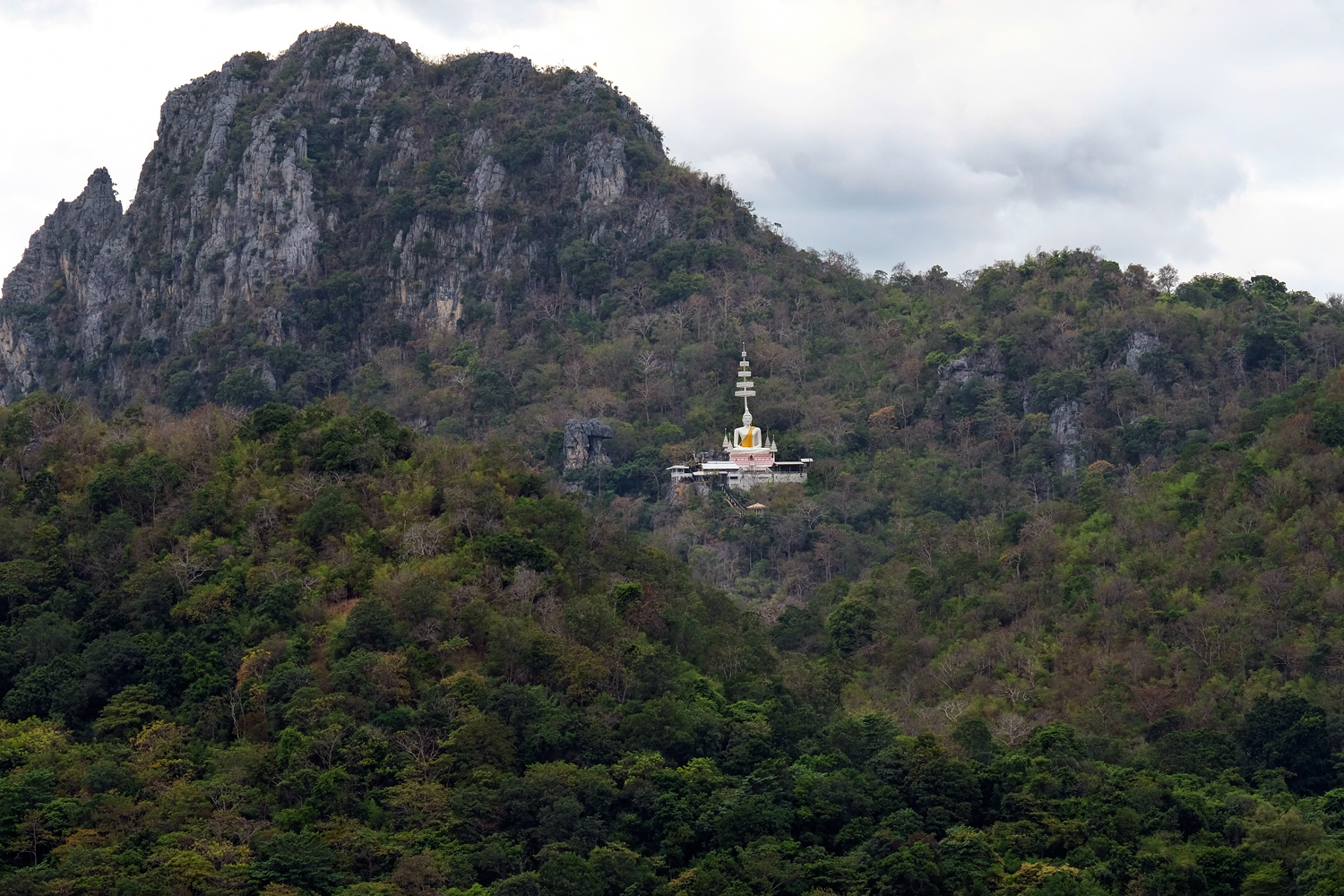 And off we went to find the hillside Buddha.
And off we went to find the hillside Buddha.
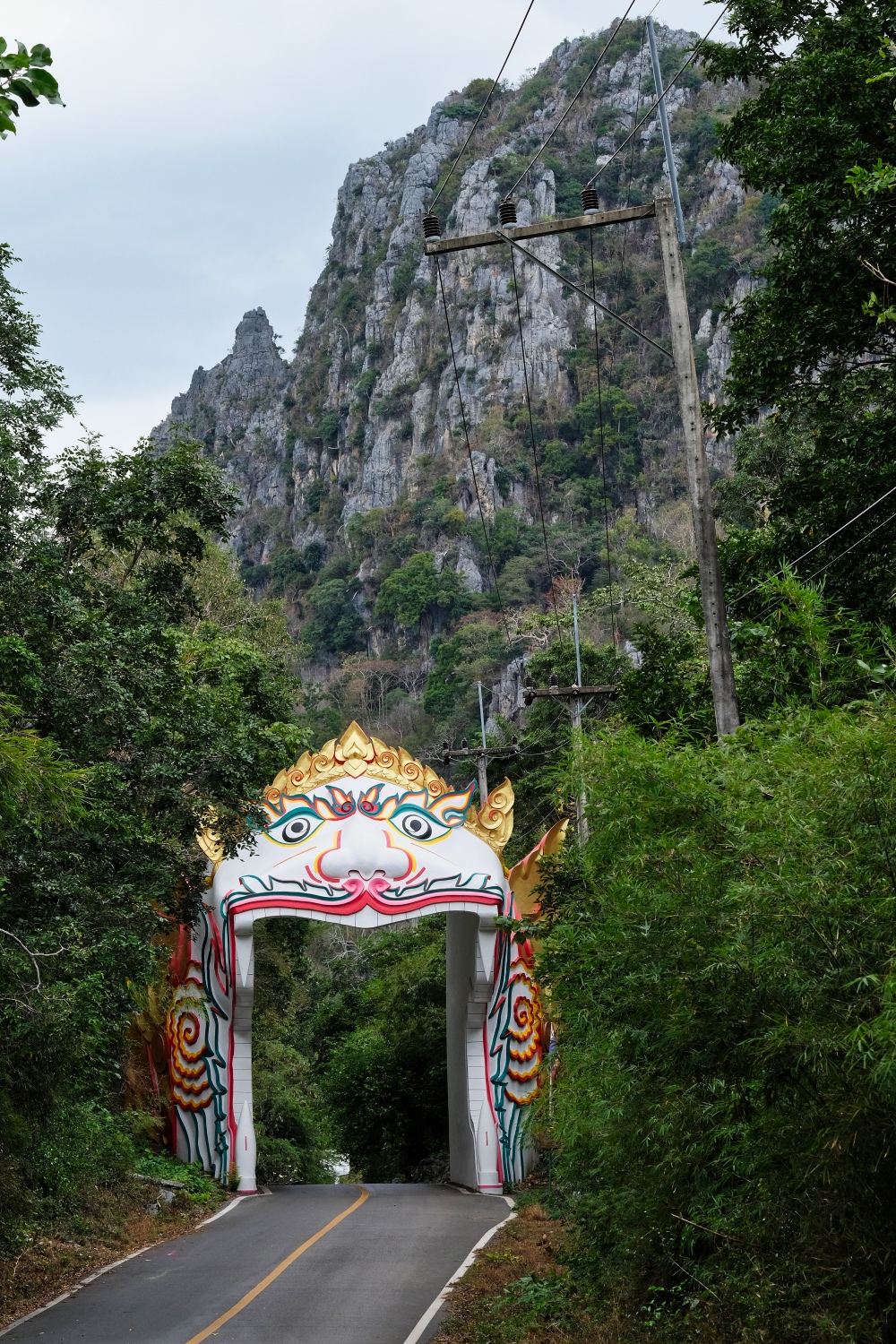 This MUST be the road!
This MUST be the road!
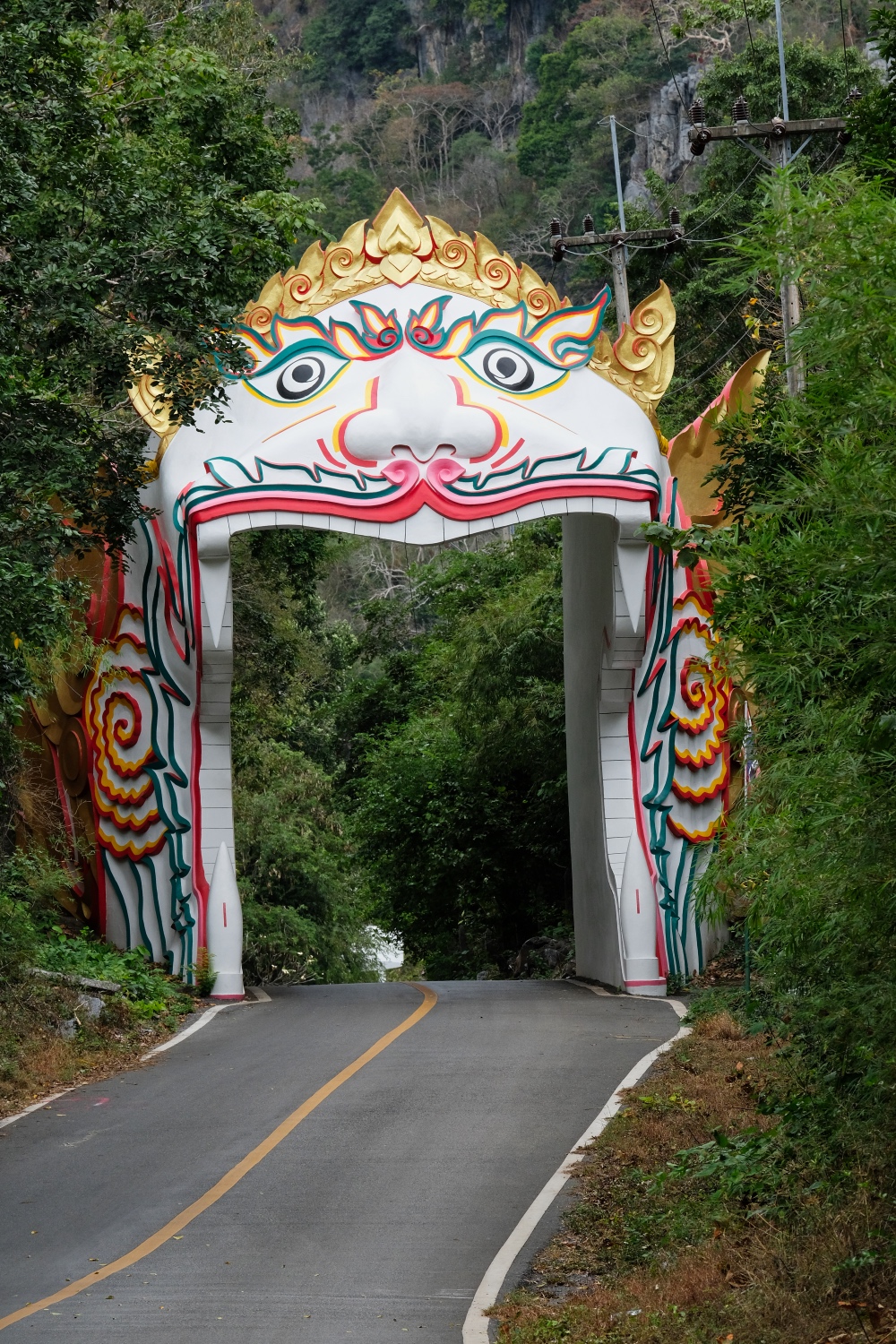 Yes, all the roads I have ever taken have led me to this place . . . the highway to hell!
Yes, all the roads I have ever taken have led me to this place . . . the highway to hell!
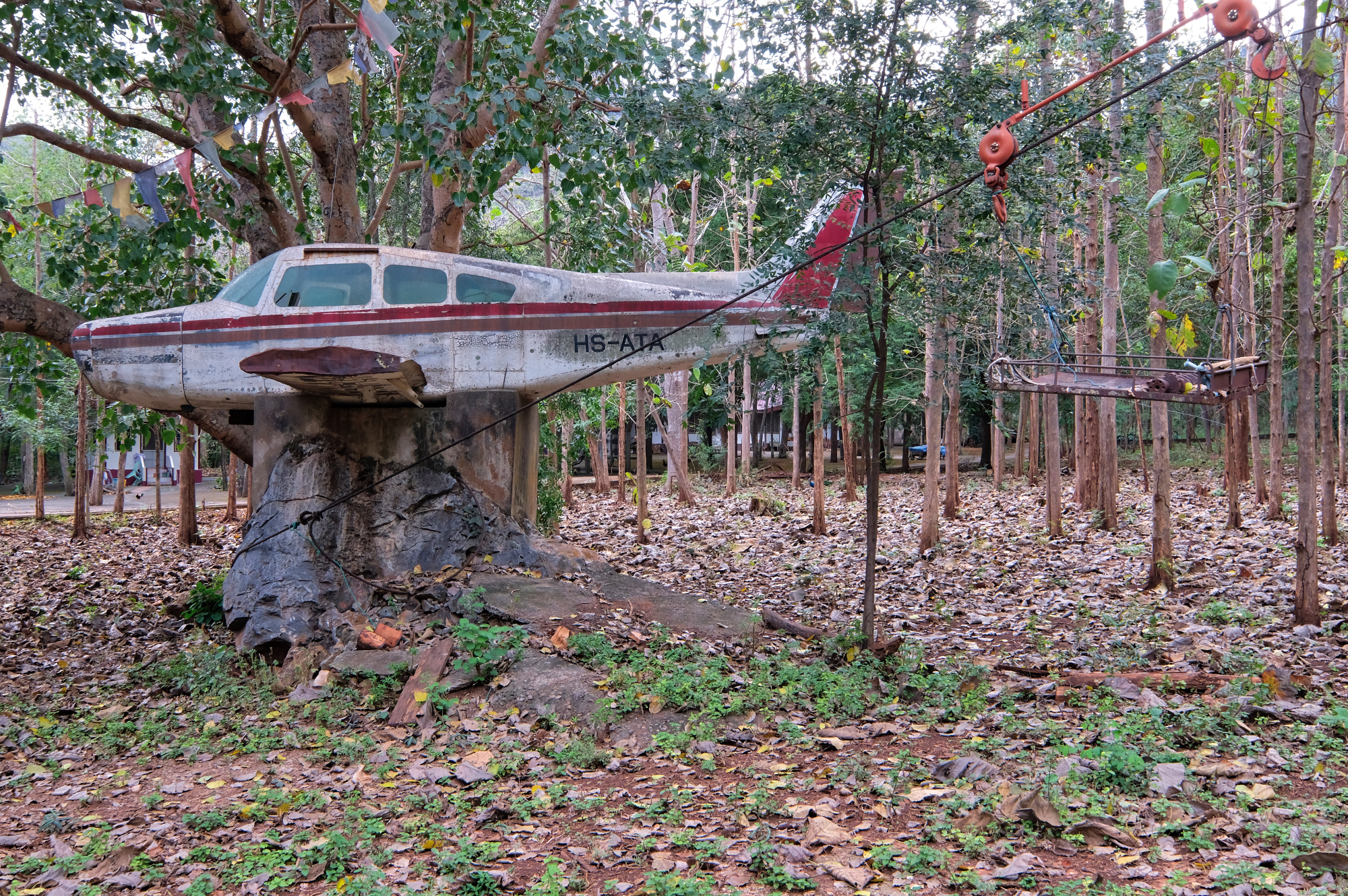 The Peacock Temple was . . . . very interesting, that is for sure.
The Peacock Temple was . . . . very interesting, that is for sure.
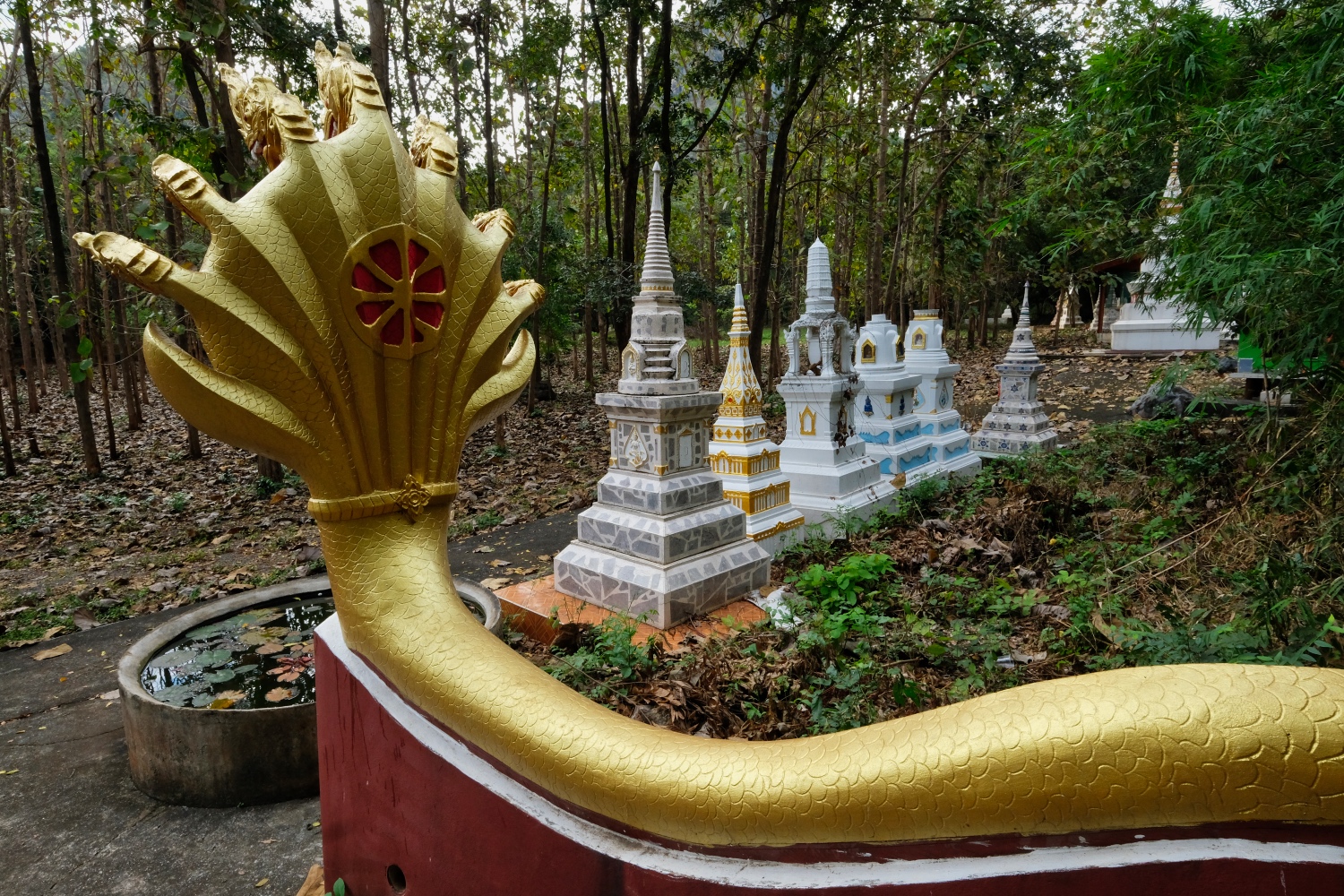 Chedis . . . and the snake-railed steps up to the big Buddha on the hill.
Chedis . . . and the snake-railed steps up to the big Buddha on the hill.
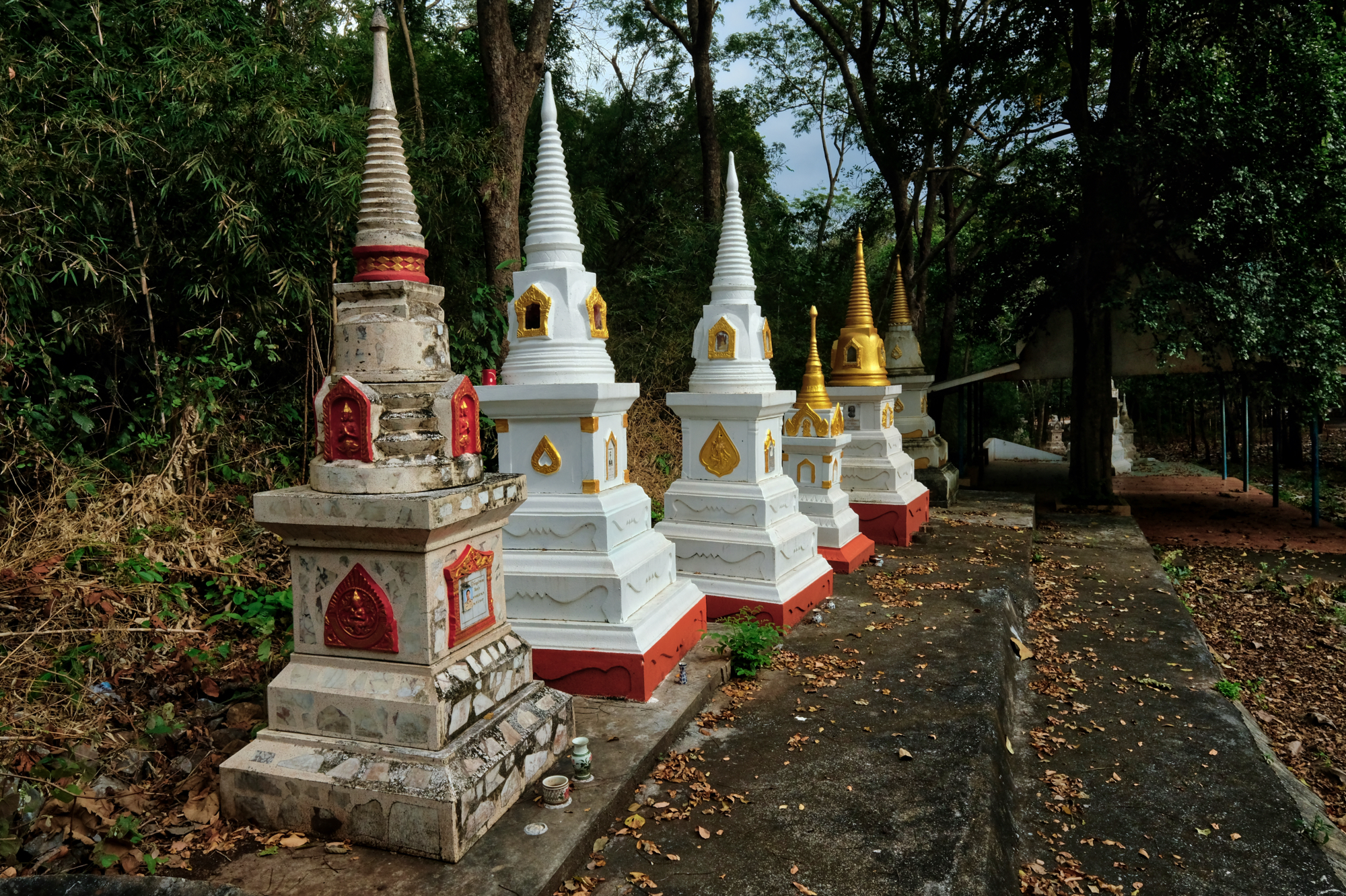 I love these rural Wats . . . in nature and not overly tended.
I love these rural Wats . . . in nature and not overly tended.
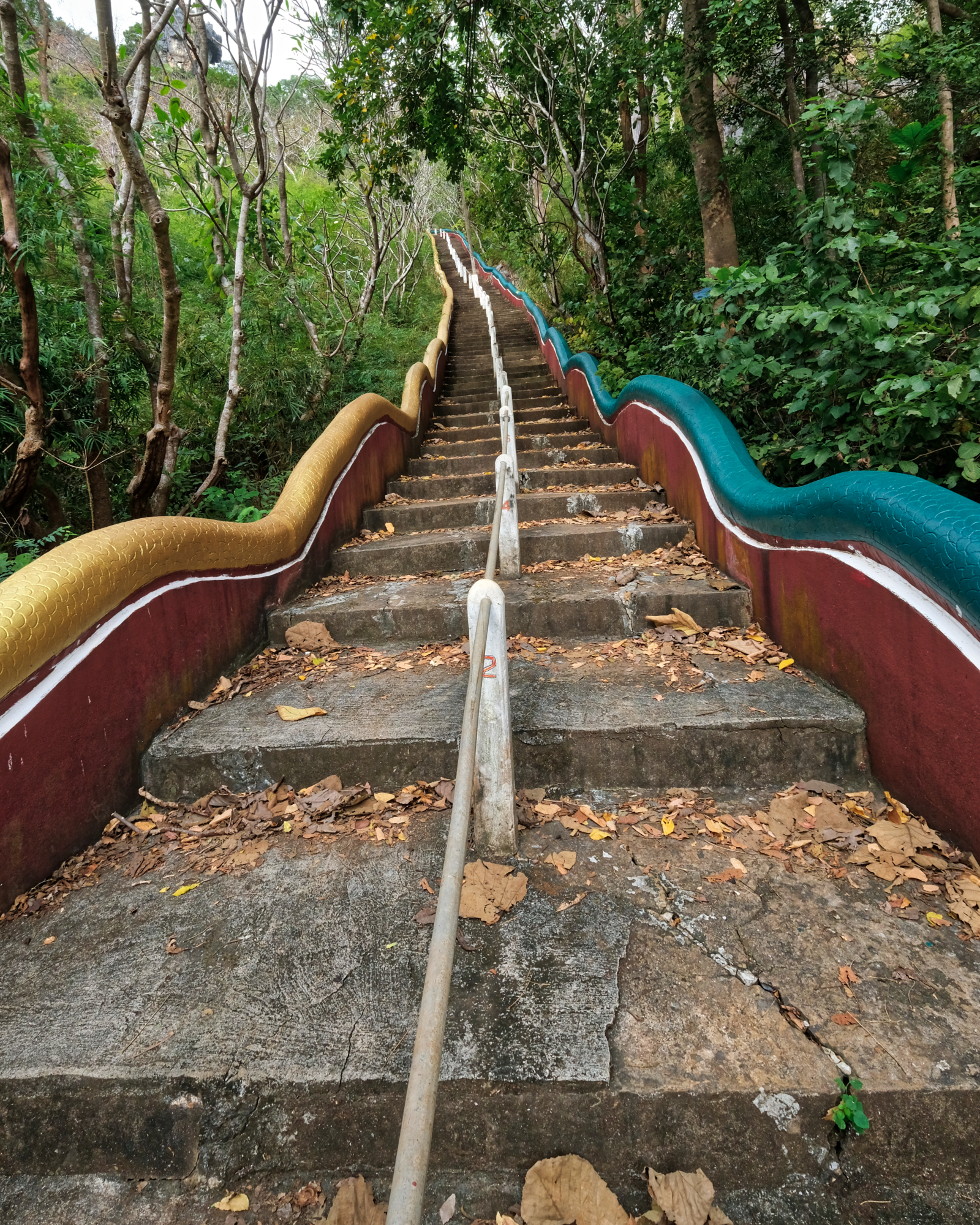 And so we started the climb up the temple stairs . . .
And so we started the climb up the temple stairs . . .
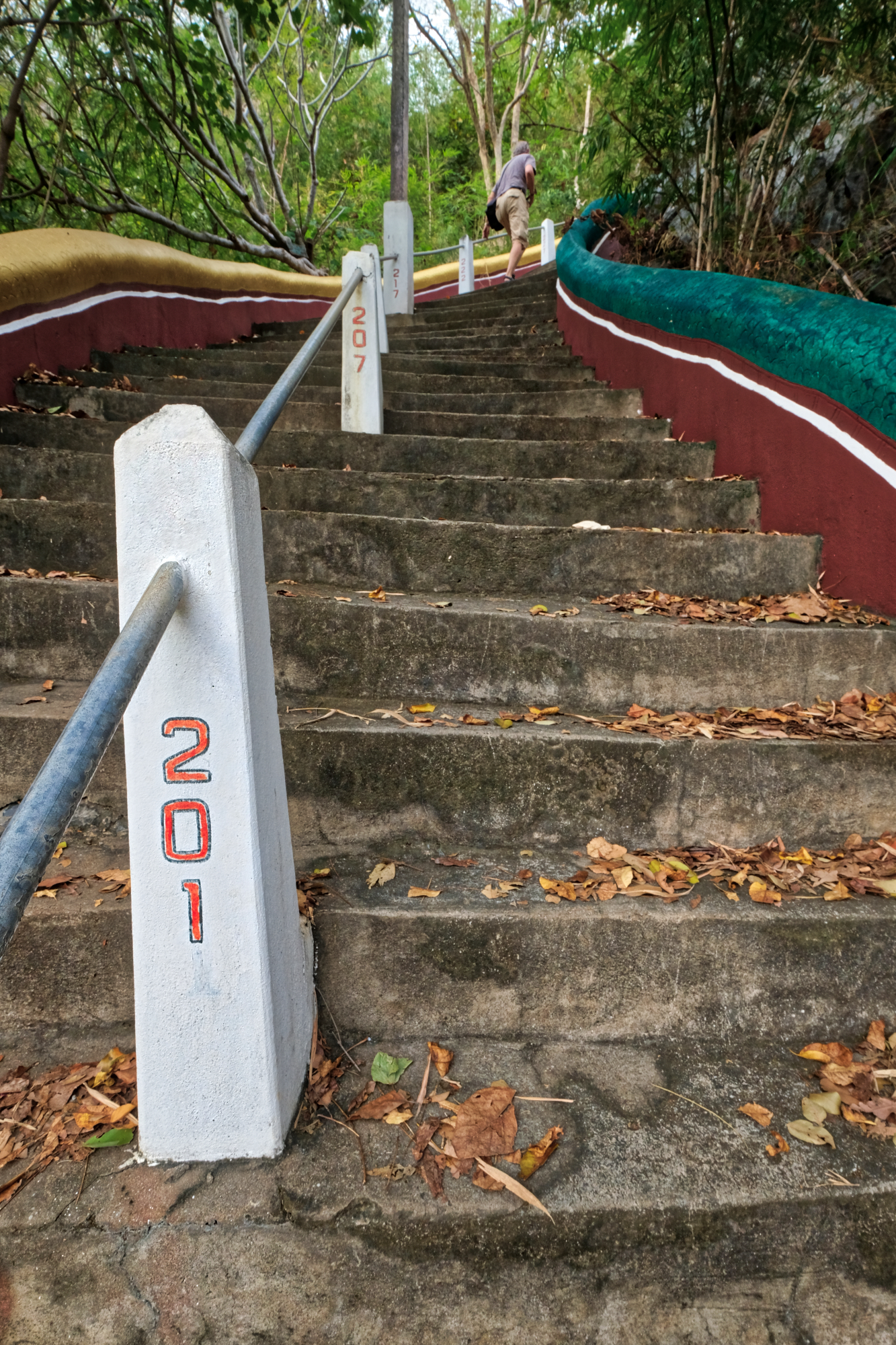 And up and up we went. The stairs were numbered, so we didn't have to count them ourselves. However, we did not know how many total steps there were going to be!
And up and up we went. The stairs were numbered, so we didn't have to count them ourselves. However, we did not know how many total steps there were going to be!
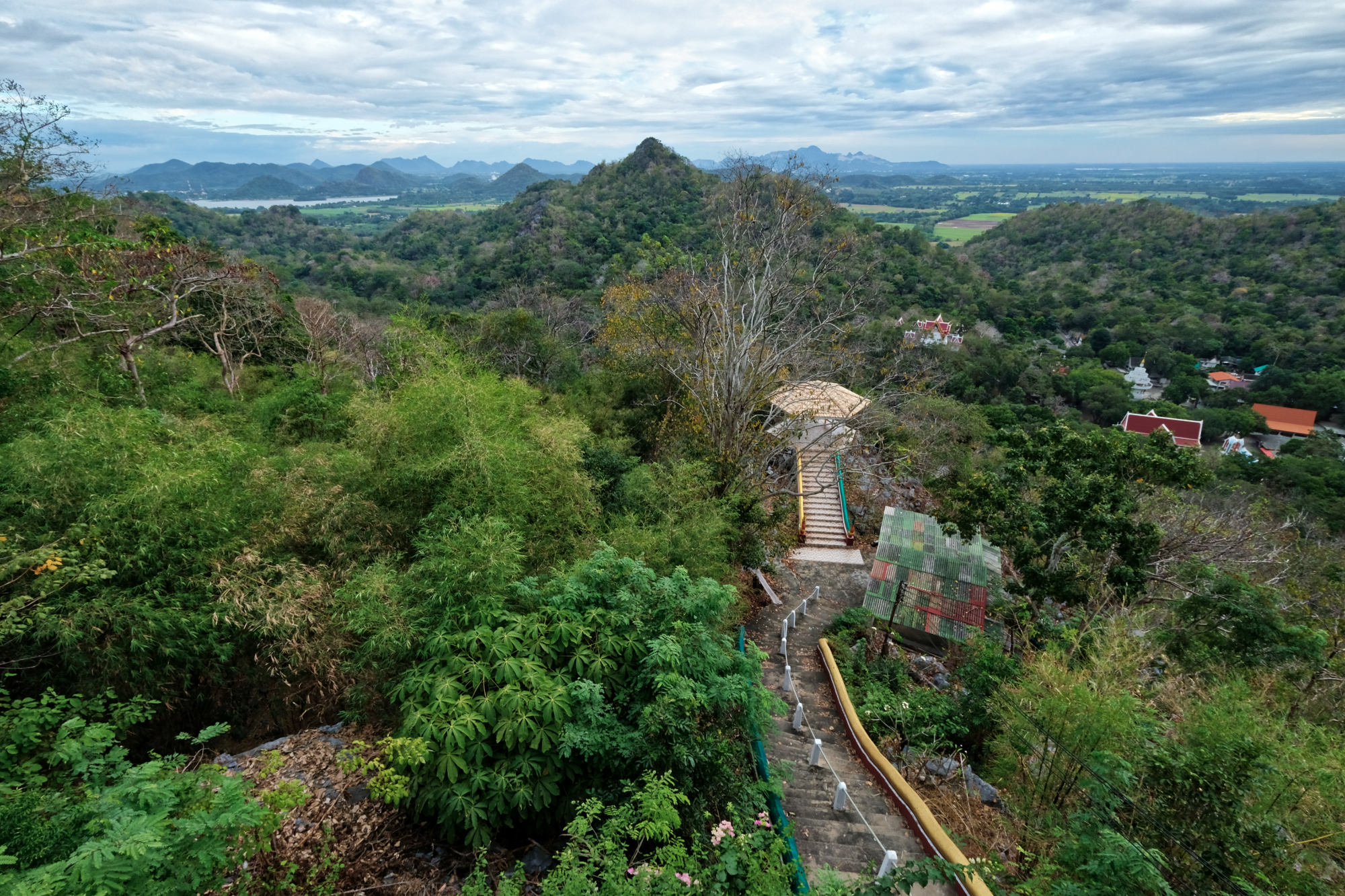 The walk to the top (436 steps in all) was well worth it . . . the view across the Thai landscape was remarkable!
The walk to the top (436 steps in all) was well worth it . . . the view across the Thai landscape was remarkable!
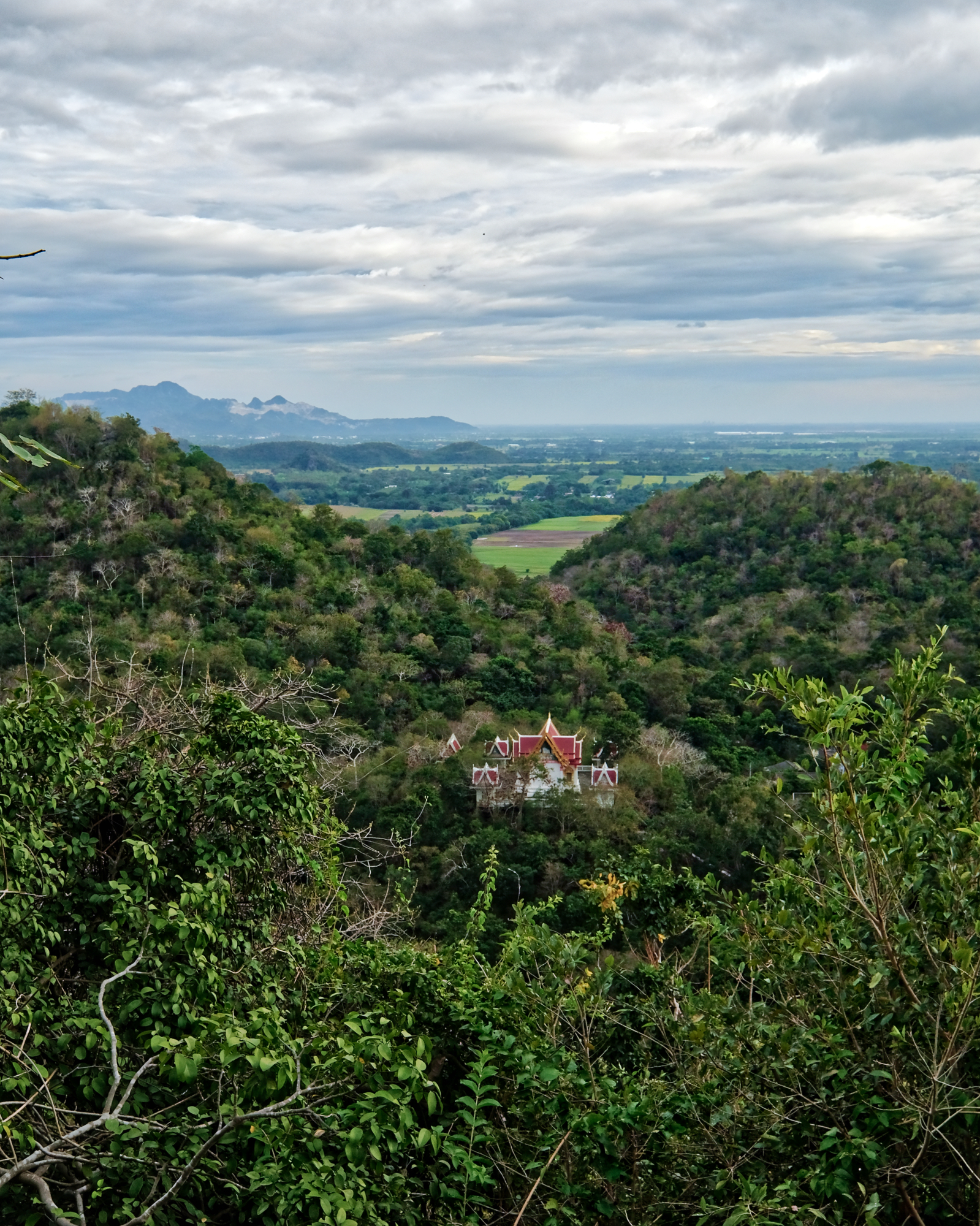 The Peacock Temple below.
The Peacock Temple below.
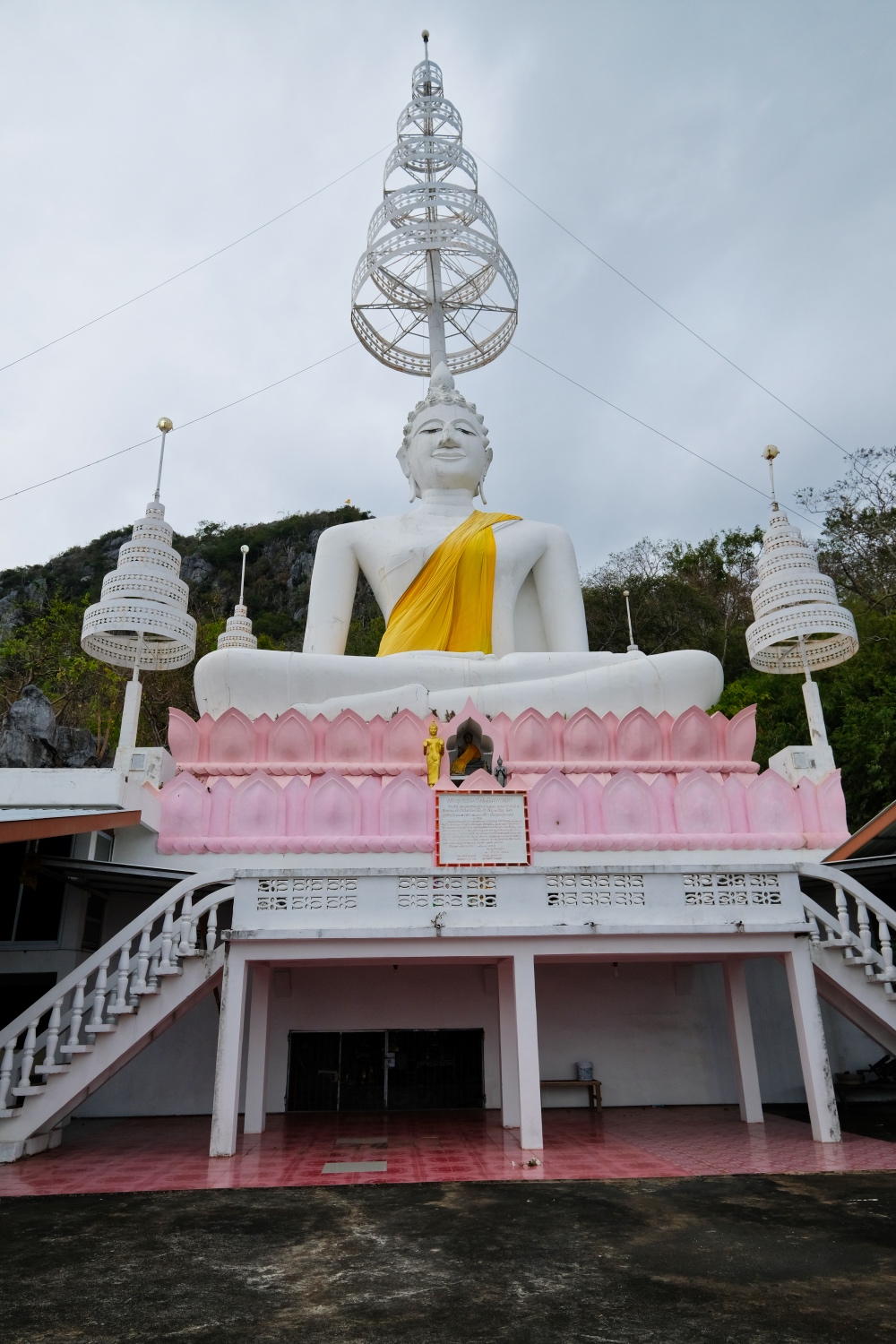 What we came to see: a giant Buddha image. Very beautiful.
What we came to see: a giant Buddha image. Very beautiful.
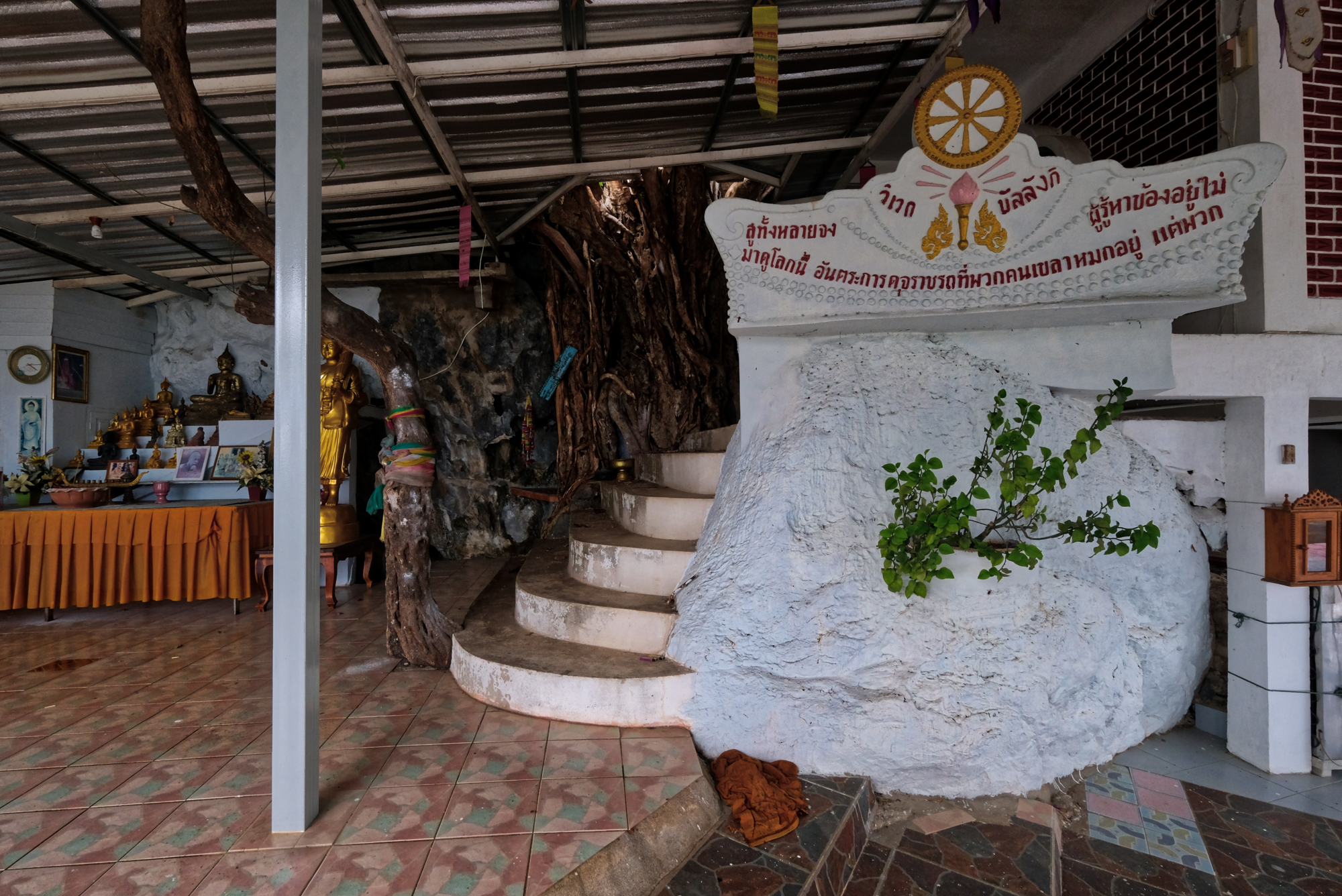 There were several altars in and around the top of the climb . . . as well as some tunnels that went inside the mountain . . . we didn't explore these.
There were several altars in and around the top of the climb . . . as well as some tunnels that went inside the mountain . . . we didn't explore these.
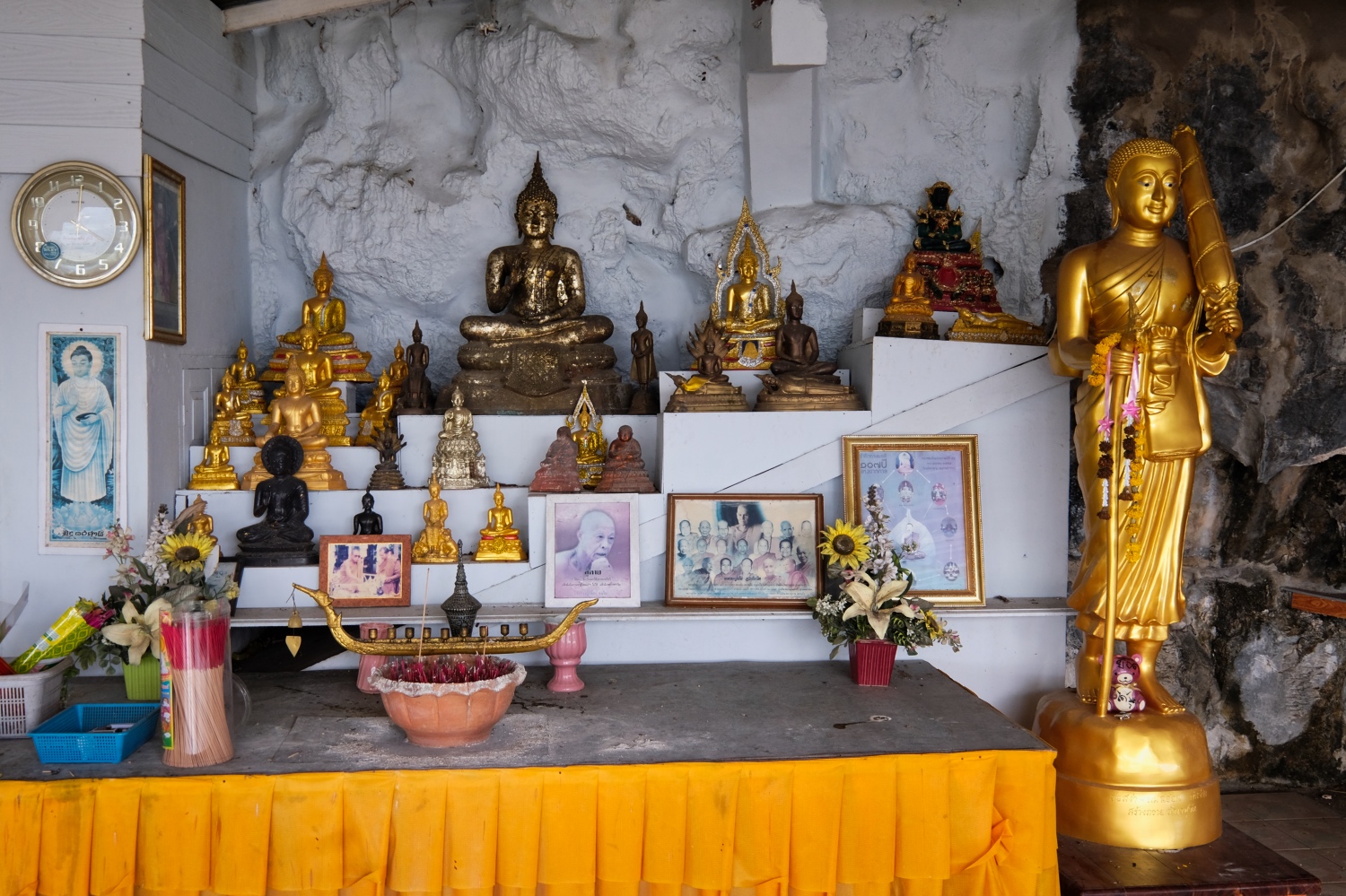 4:00pm at the top of a hill enjoying the view and the various altars.
4:00pm at the top of a hill enjoying the view and the various altars.
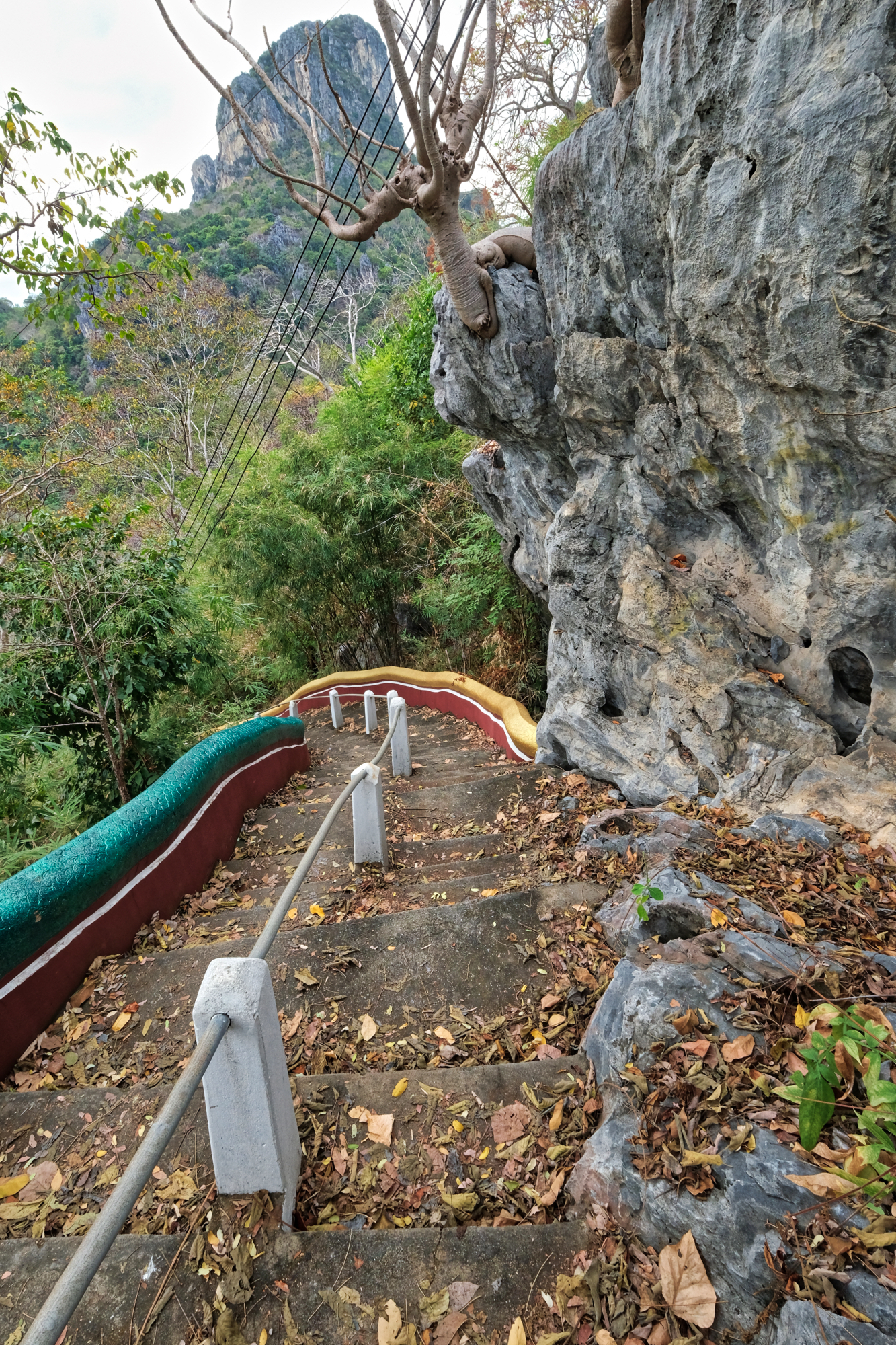 After 30 minutes on the top of the hill, we made our way back down the dry leaf covered 436 steps.
After 30 minutes on the top of the hill, we made our way back down the dry leaf covered 436 steps.
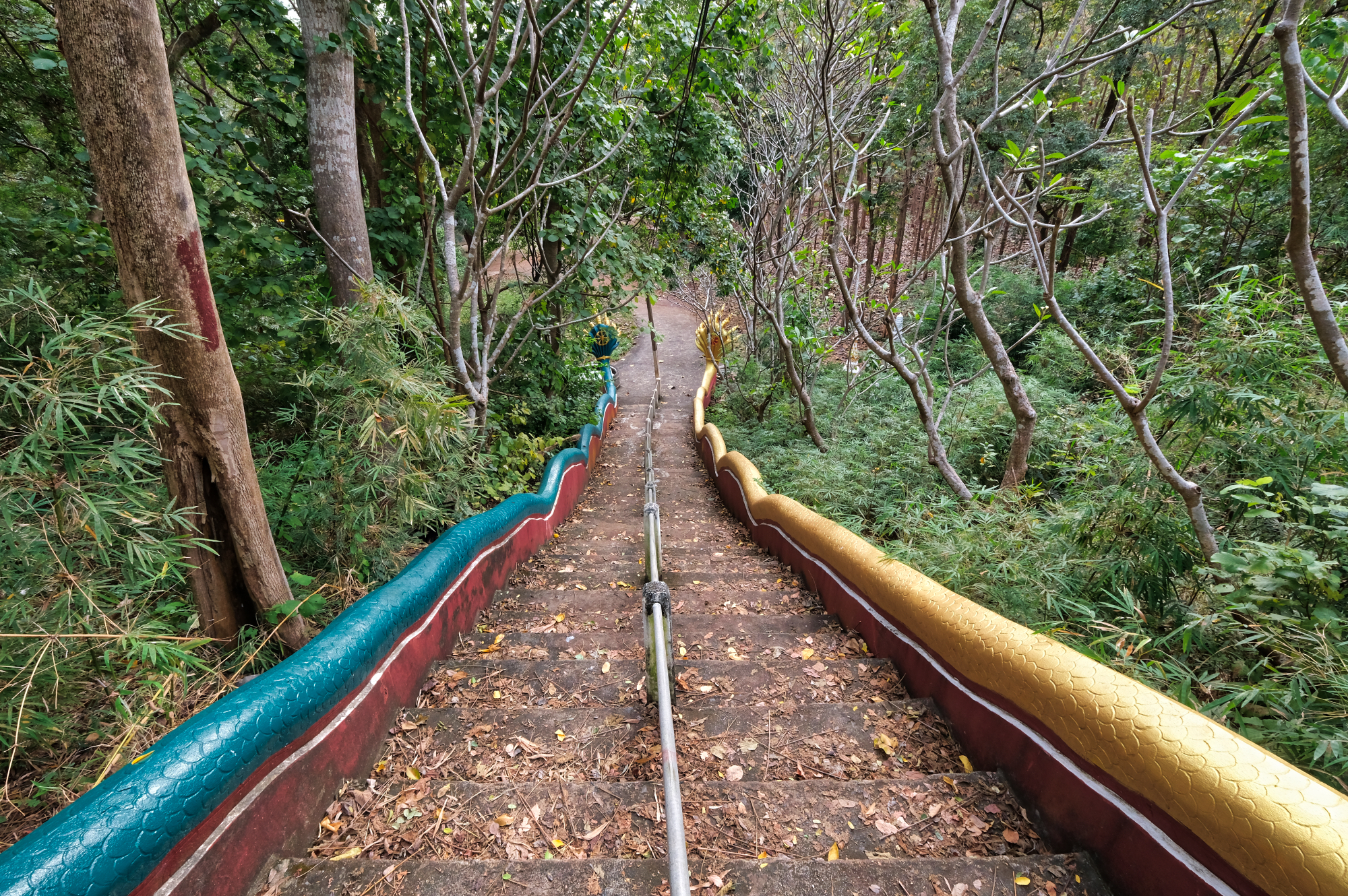 At last . . . the bottom in sight. And then into the car and off to a Wat we could see from the hilltop Buddha.
At last . . . the bottom in sight. And then into the car and off to a Wat we could see from the hilltop Buddha.
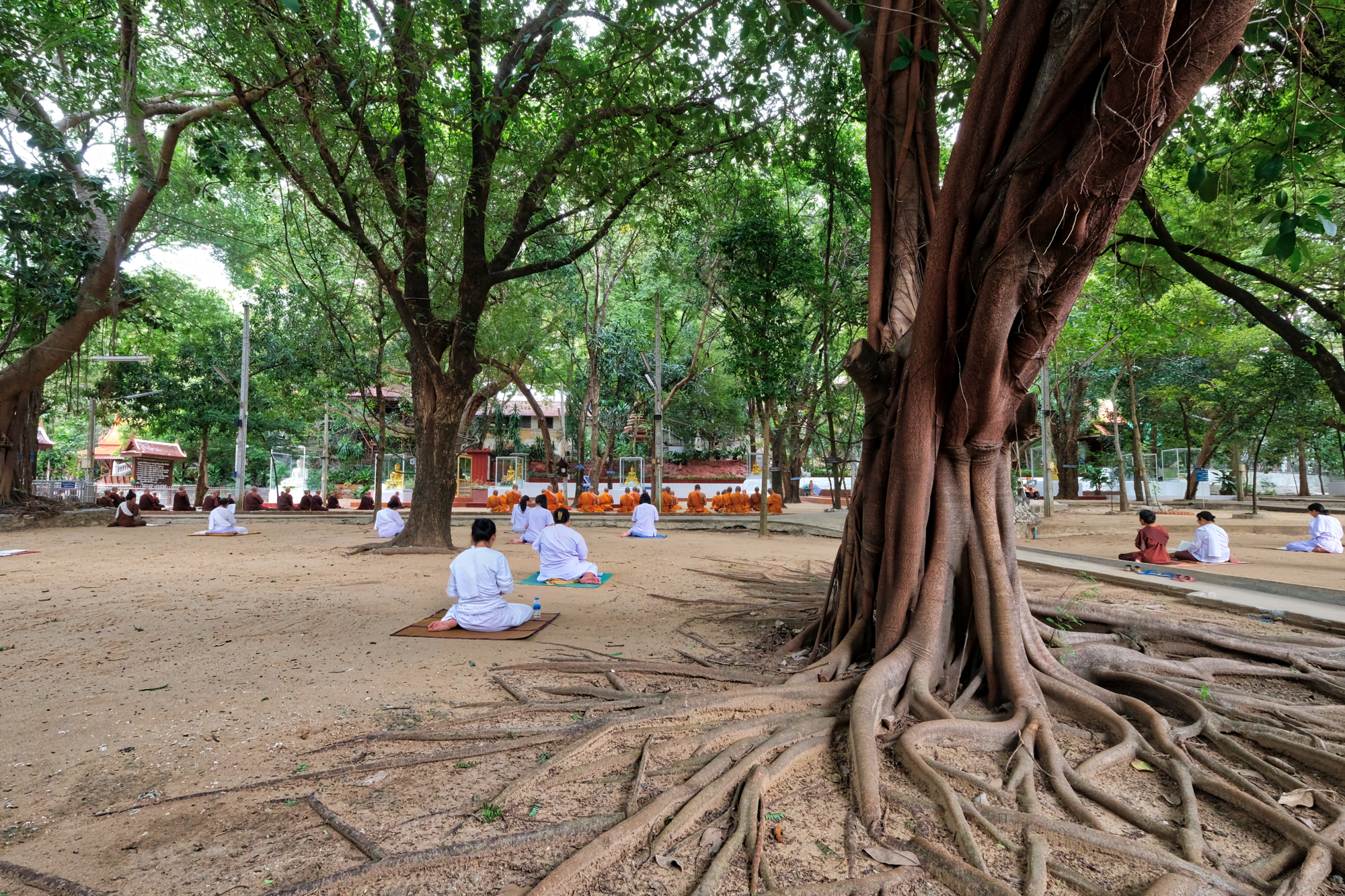 We arrived at a temple hosting a meditation retreat just at the moment they bikkus were in meditation.
We arrived at a temple hosting a meditation retreat just at the moment they bikkus were in meditation.
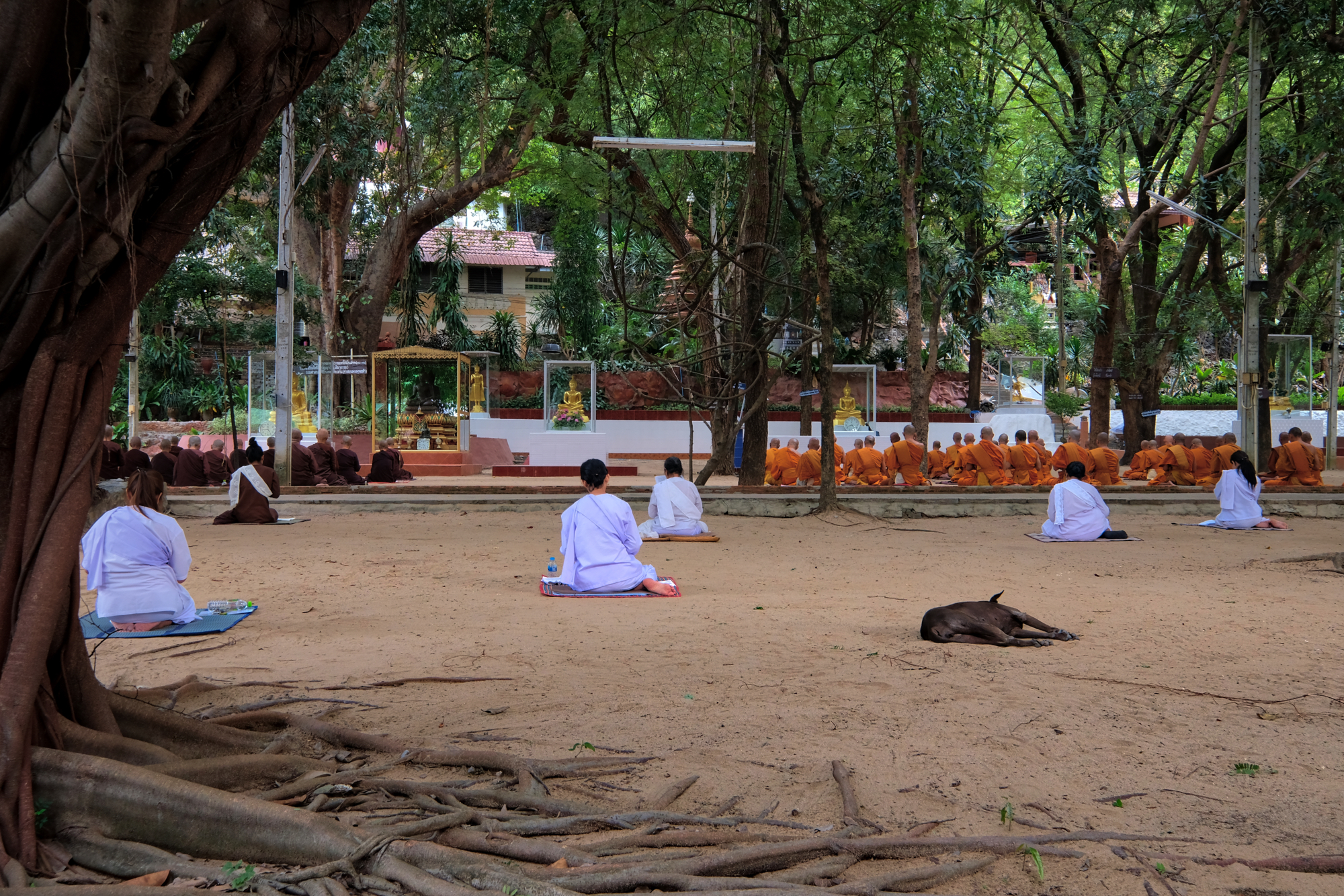 Such a beautifully spiritual place. We were at first reluctant to take photographs until a Wat attendant came over and indicated that it was OK for us to use our cameras. We took full advantage.
Such a beautifully spiritual place. We were at first reluctant to take photographs until a Wat attendant came over and indicated that it was OK for us to use our cameras. We took full advantage.
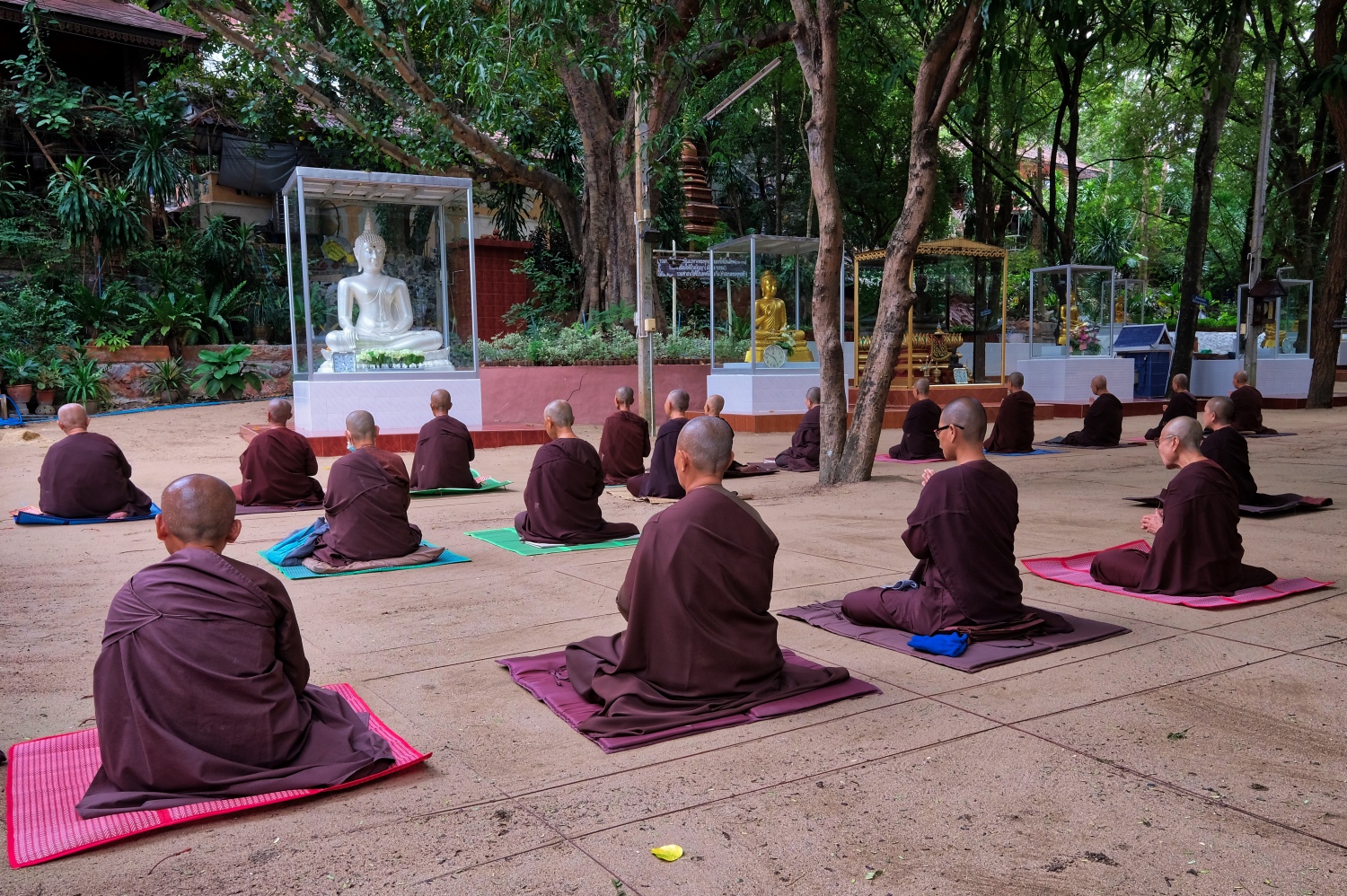 These Buddhist 'nuns' were in colored robes normally associated with Tibetan Buddhists.
These Buddhist 'nuns' were in colored robes normally associated with Tibetan Buddhists.
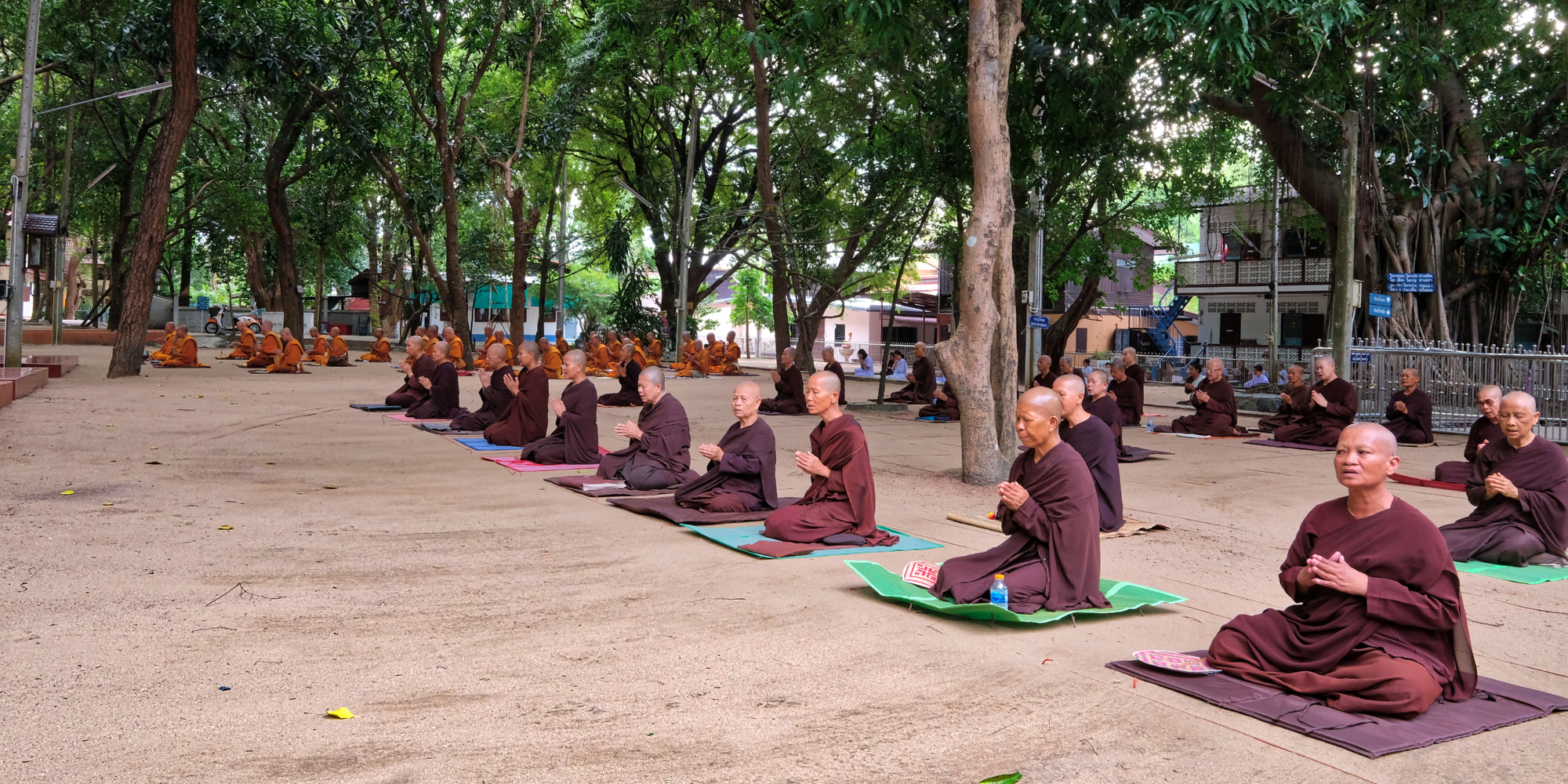 We did our best not to disturb the meditating nuns and monks. Here, a photo during their break. Monks on one side, nuns on the other.
We did our best not to disturb the meditating nuns and monks. Here, a photo during their break. Monks on one side, nuns on the other.
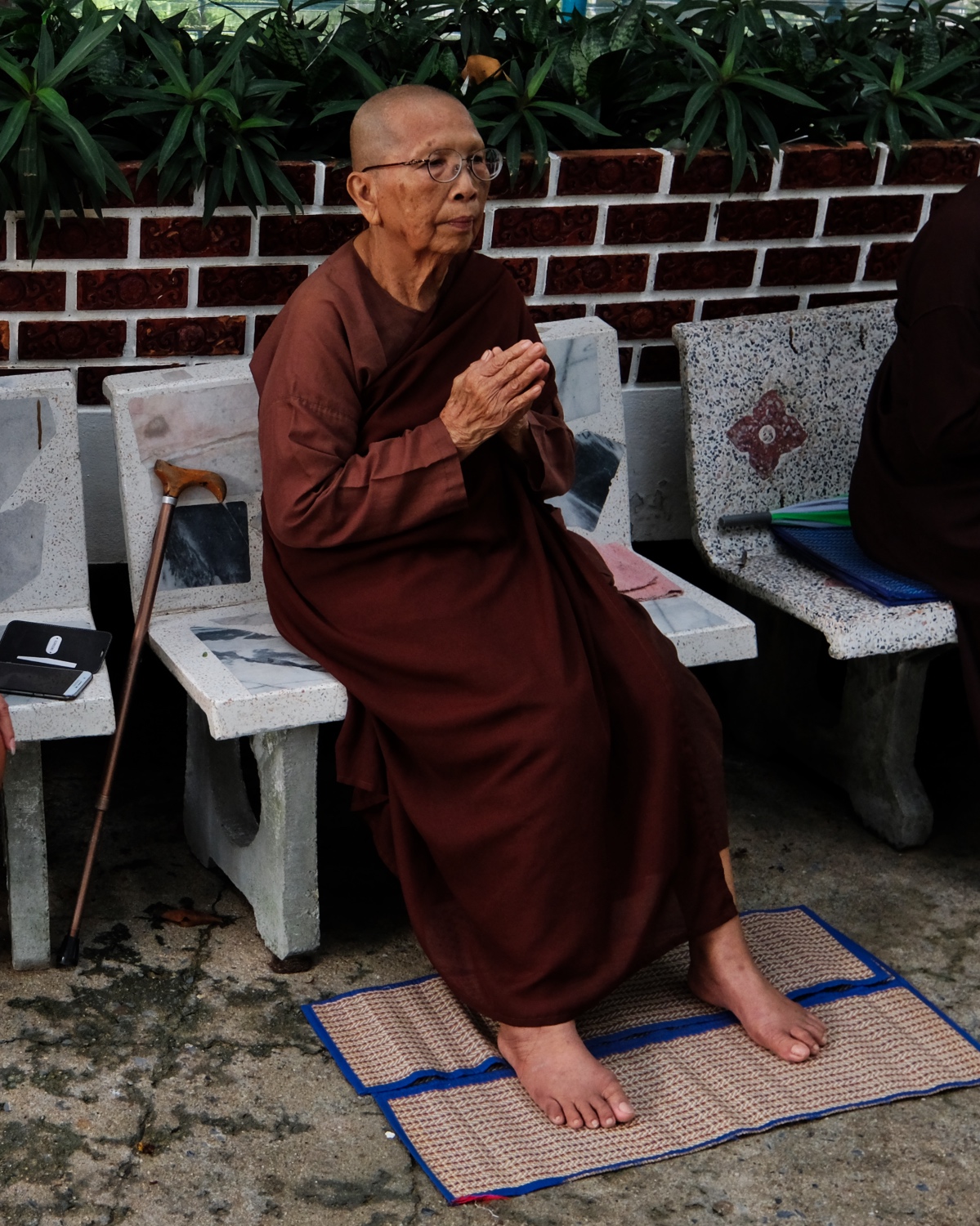 An elderly nun.
An elderly nun.
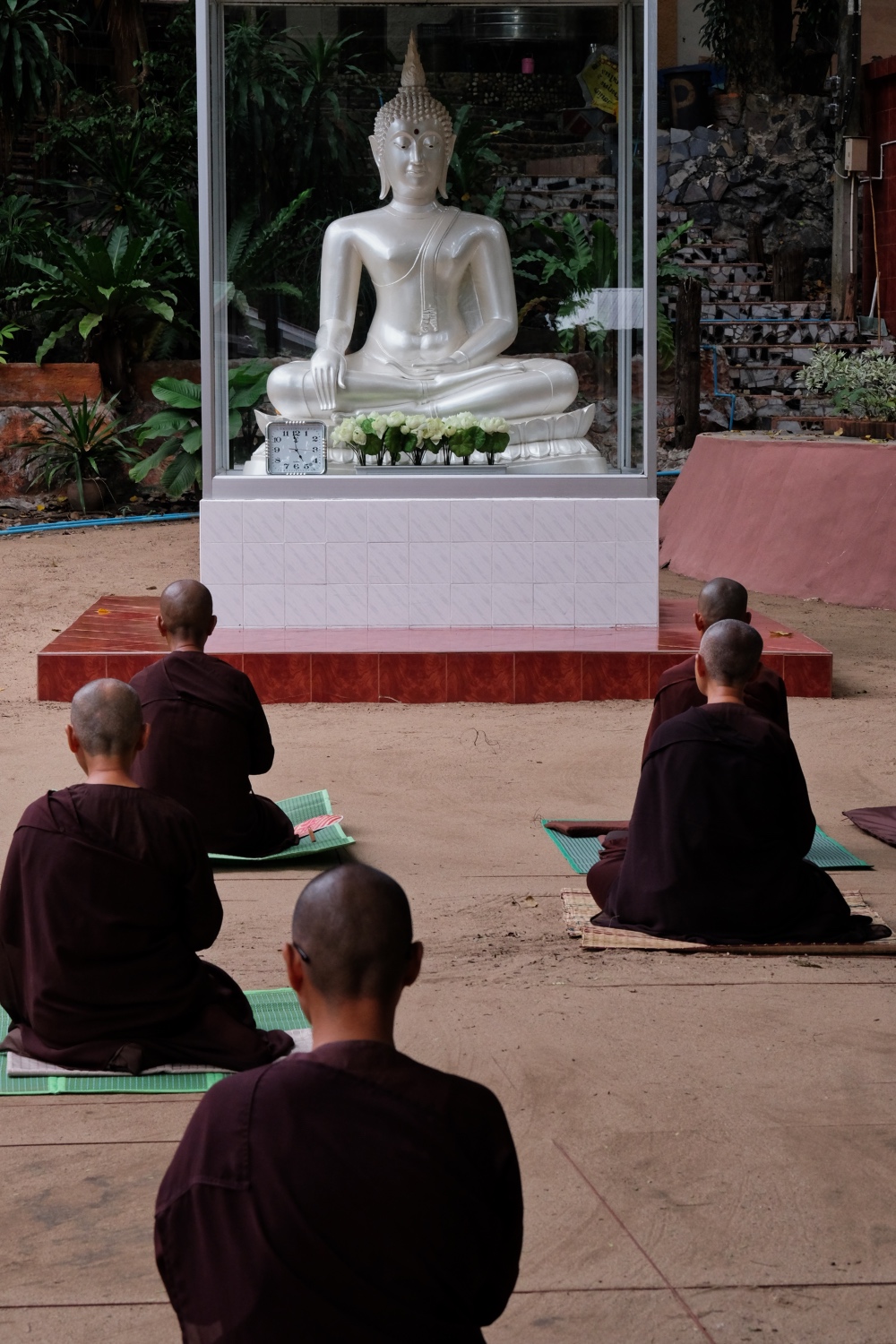 I felt that this was a meditation center I would enjoy attending.
I felt that this was a meditation center I would enjoy attending.
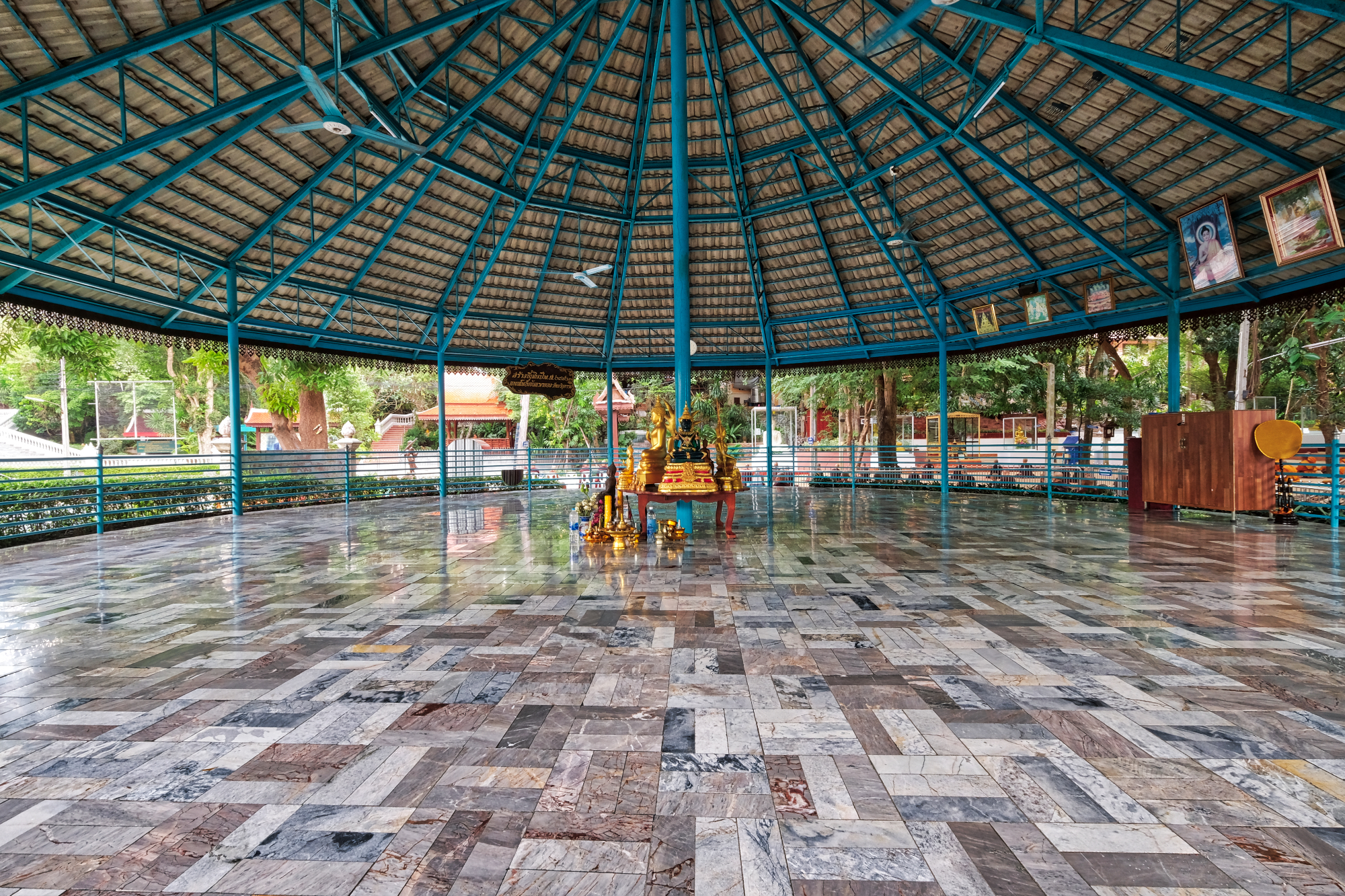 A beautiful 'sala' . . . one assumes it is used in case of heavy rain during meditation times.
A beautiful 'sala' . . . one assumes it is used in case of heavy rain during meditation times.
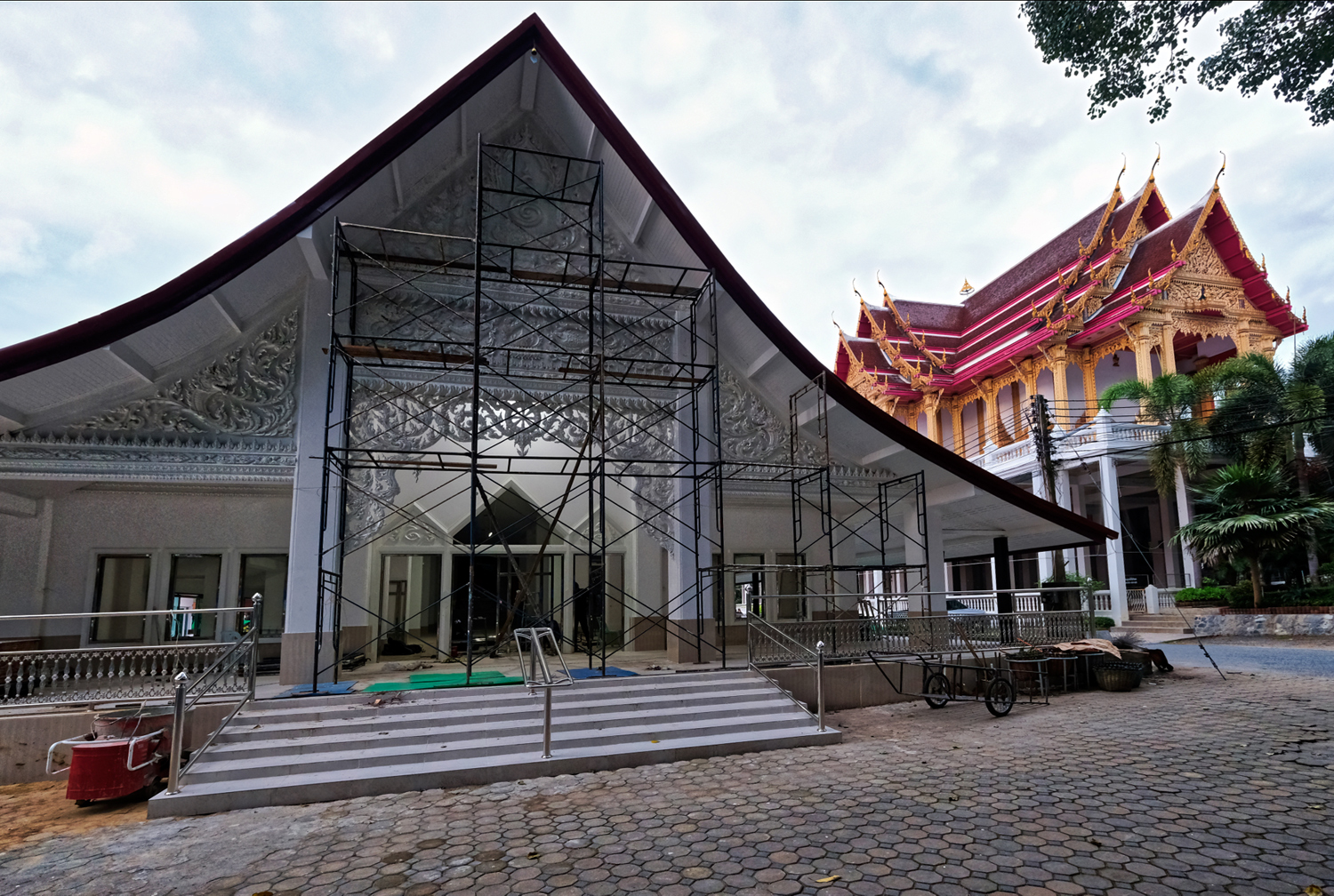 The Wat seemed very prosperous, with new structures under construction.
The Wat seemed very prosperous, with new structures under construction.
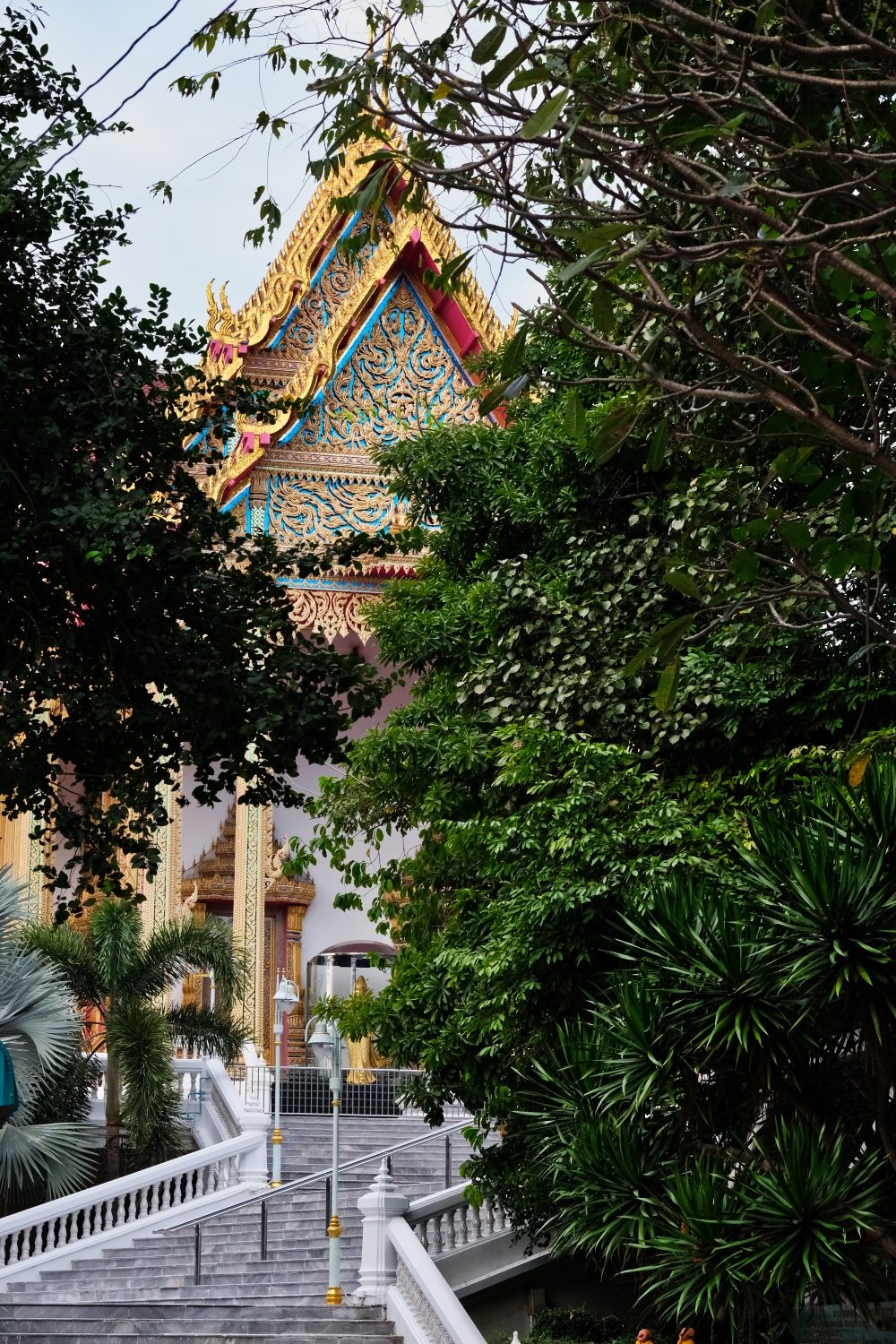 After the meditation stopped, John and I walked around the Wat grounds.
After the meditation stopped, John and I walked around the Wat grounds.
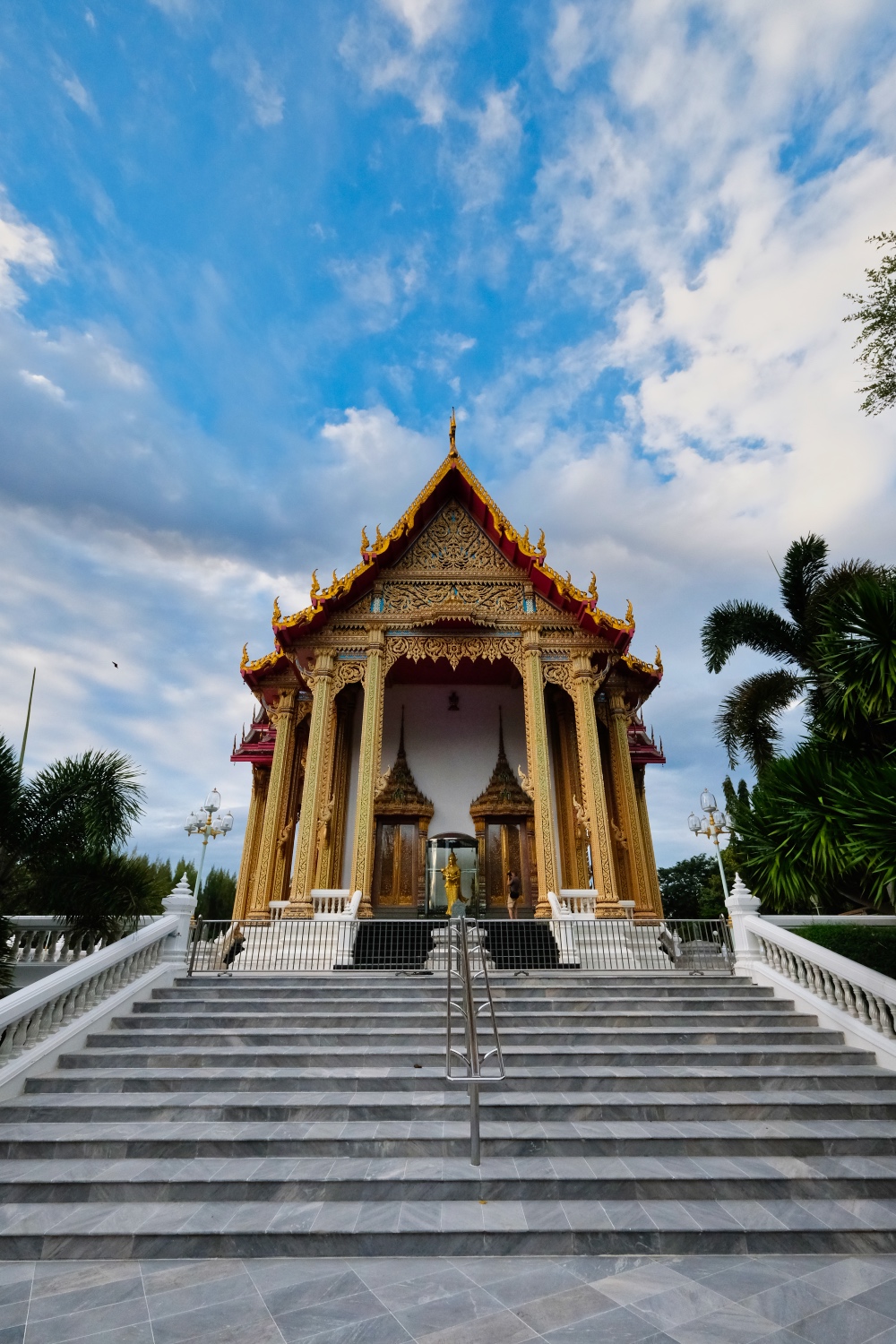 The main Wat structure.
The main Wat structure.
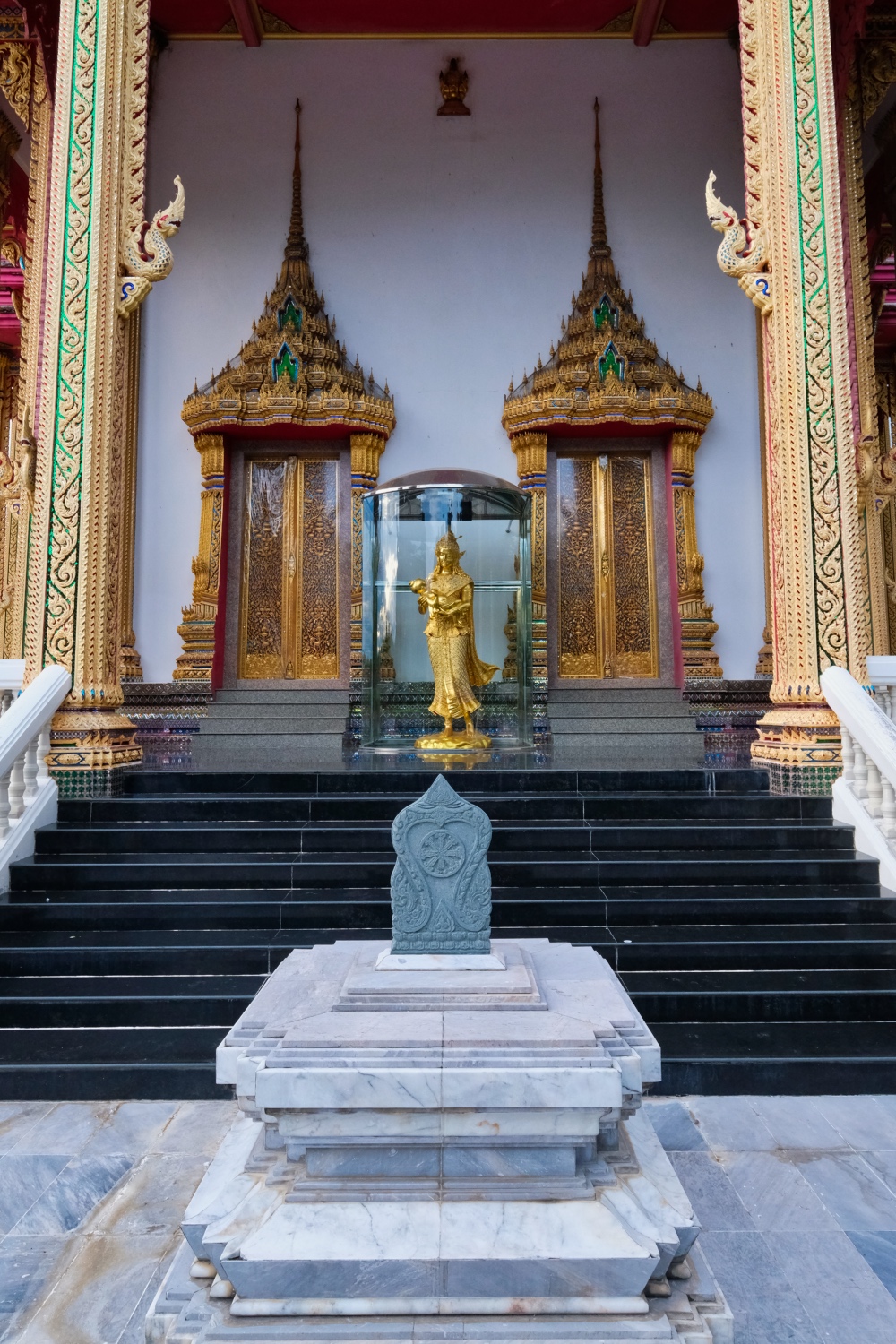 Fantastic design and excellent workmanship.
Fantastic design and excellent workmanship.
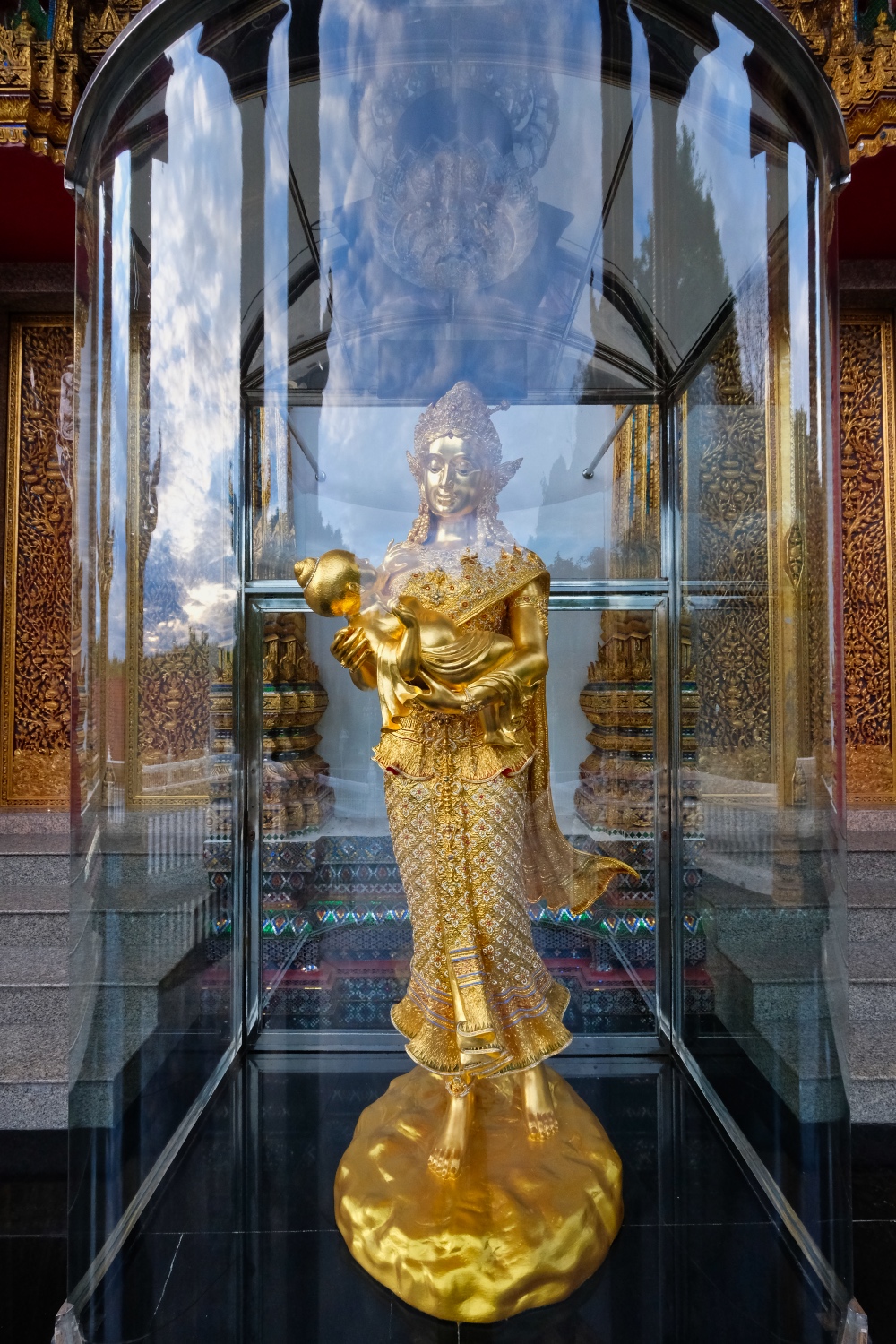 This 'Thai Angel' was outside the front entrance to the large Wat . . . and very unusual to see with a baby, almost in a Virgin Mary pose. Is this the baby Buddha Gotama? I do not know.
This 'Thai Angel' was outside the front entrance to the large Wat . . . and very unusual to see with a baby, almost in a Virgin Mary pose. Is this the baby Buddha Gotama? I do not know.
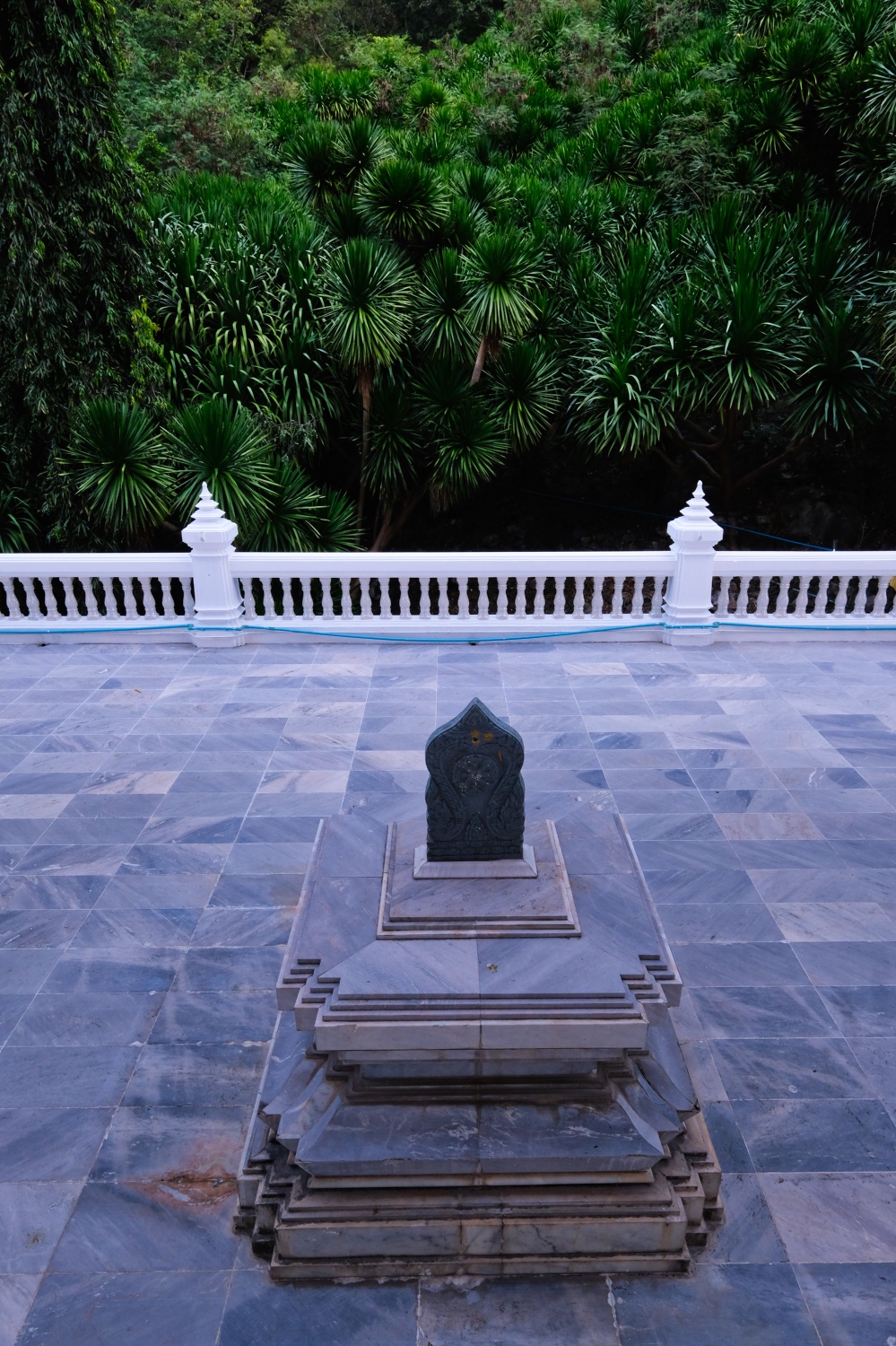 We walked around all sides of the Wat main structure.
We walked around all sides of the Wat main structure.
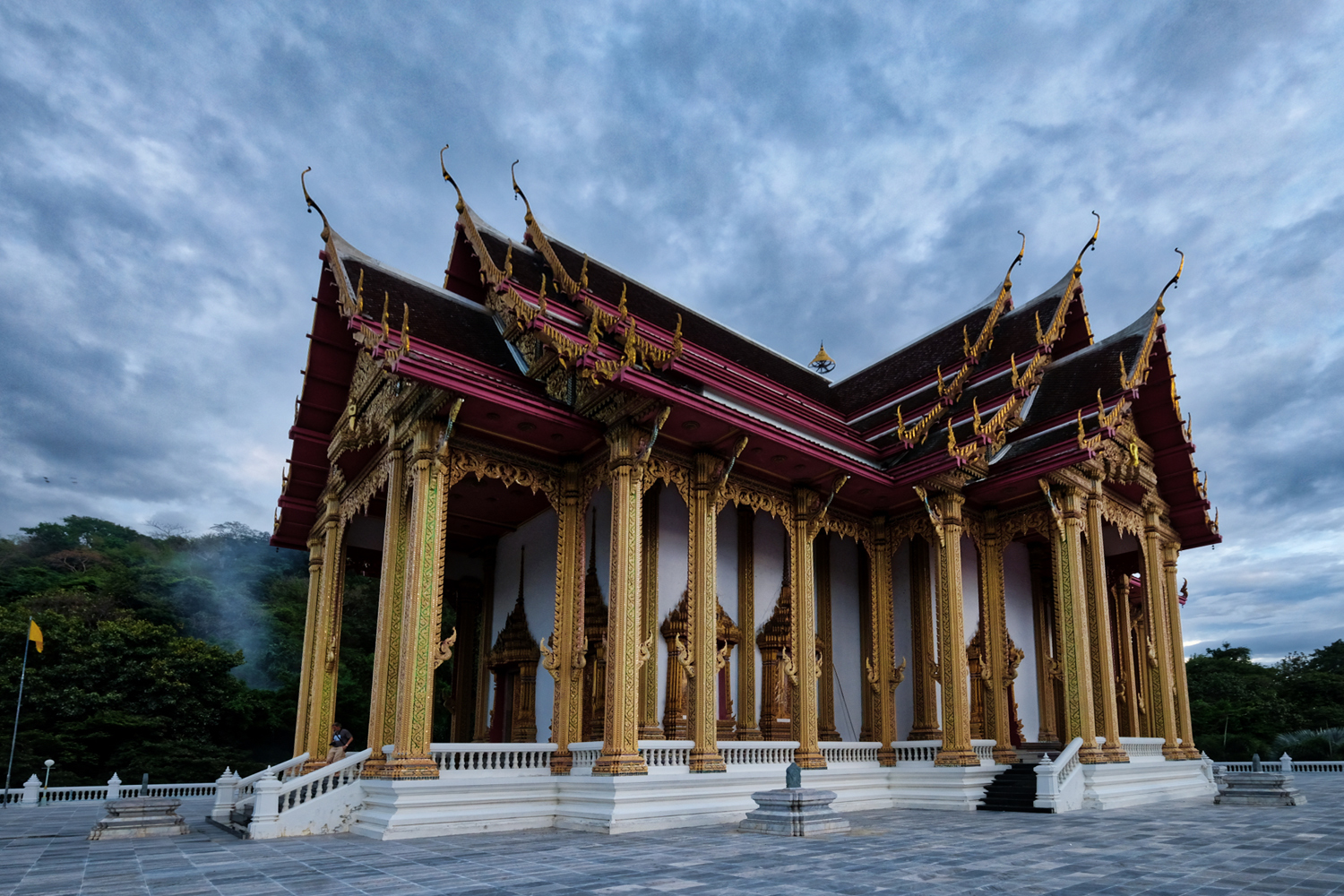 A Thai Wat in the fading light.
A Thai Wat in the fading light.
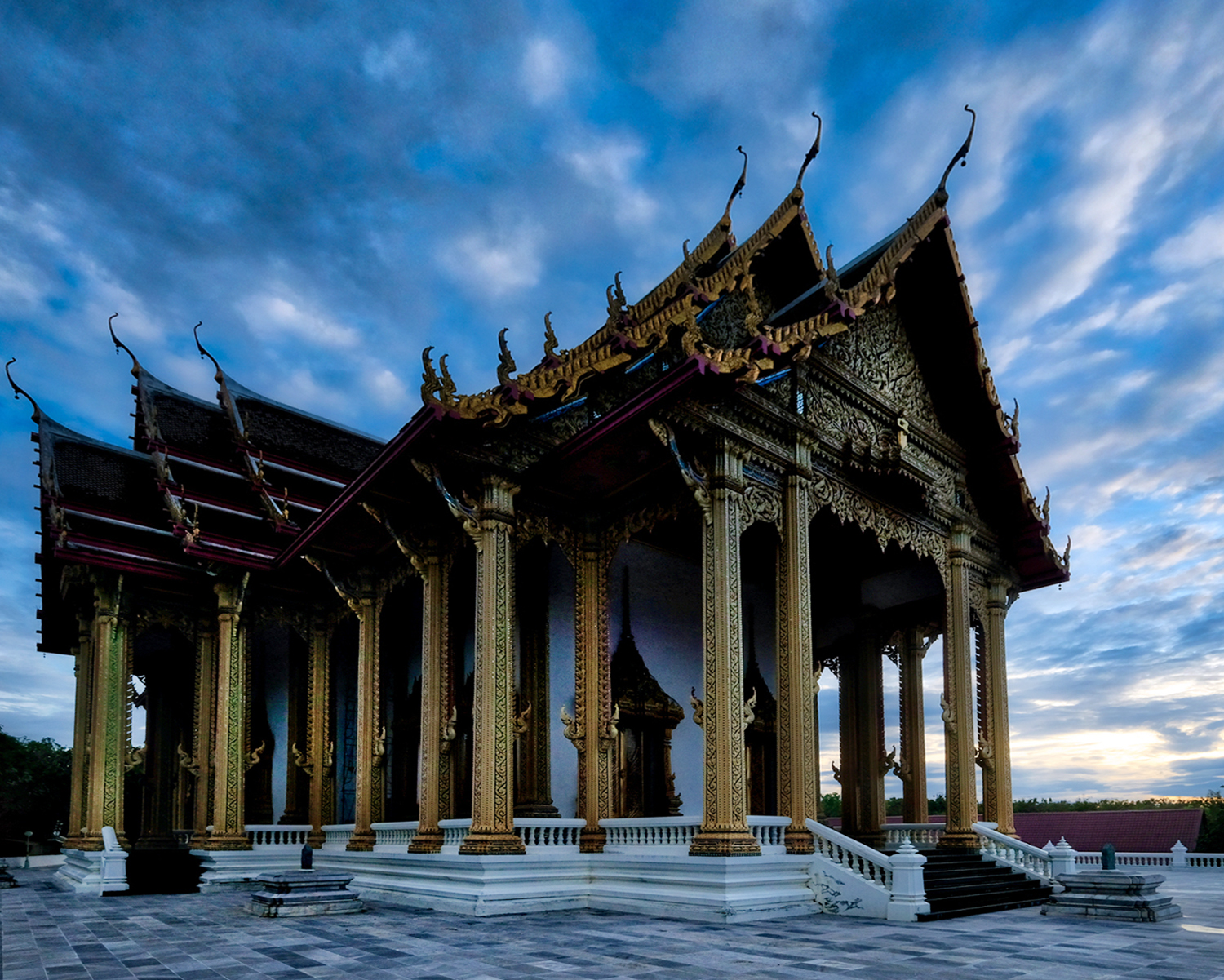 Nearly last light.
Nearly last light.
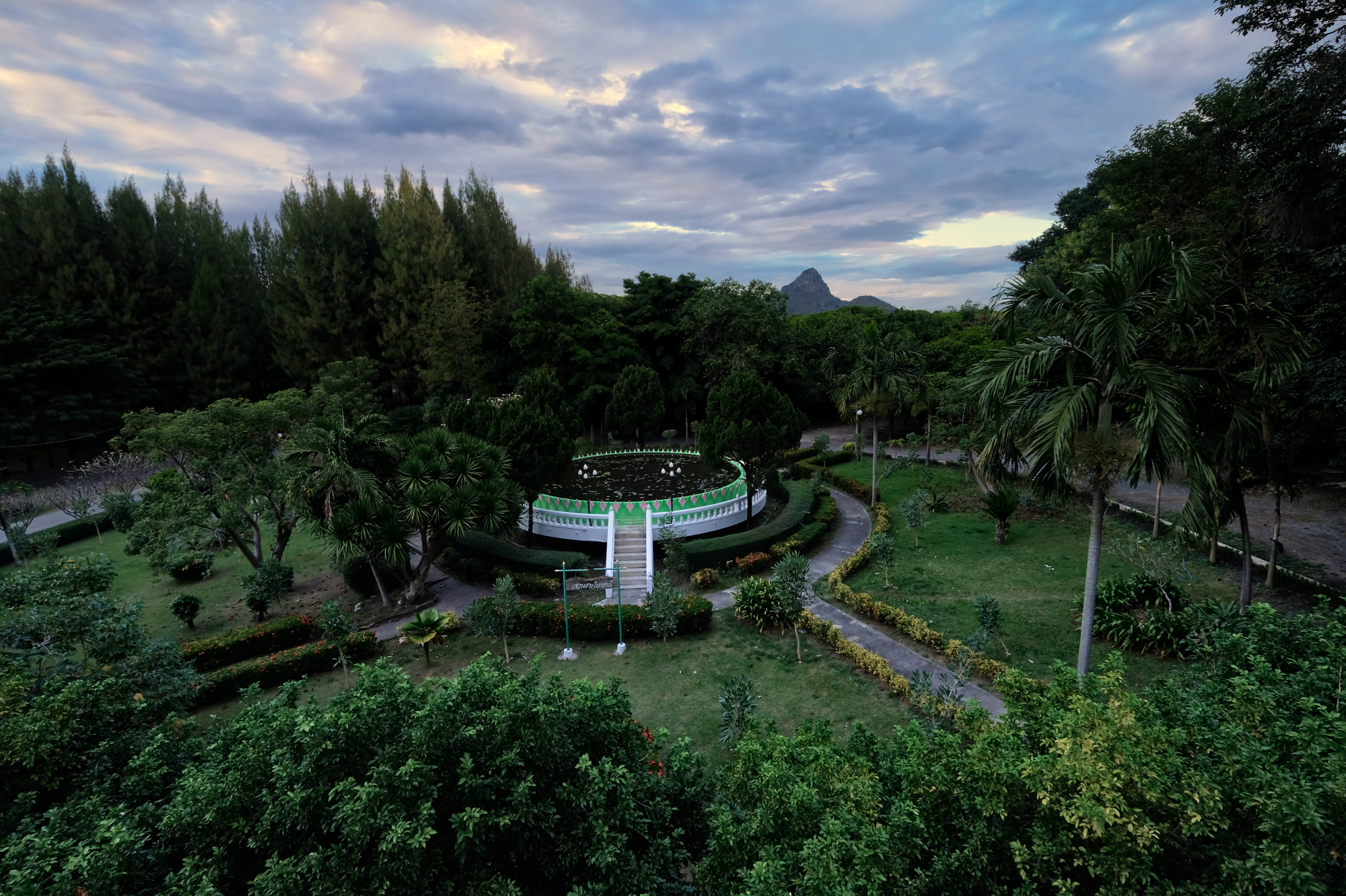 One last look around the ground gardens.
One last look around the ground gardens.
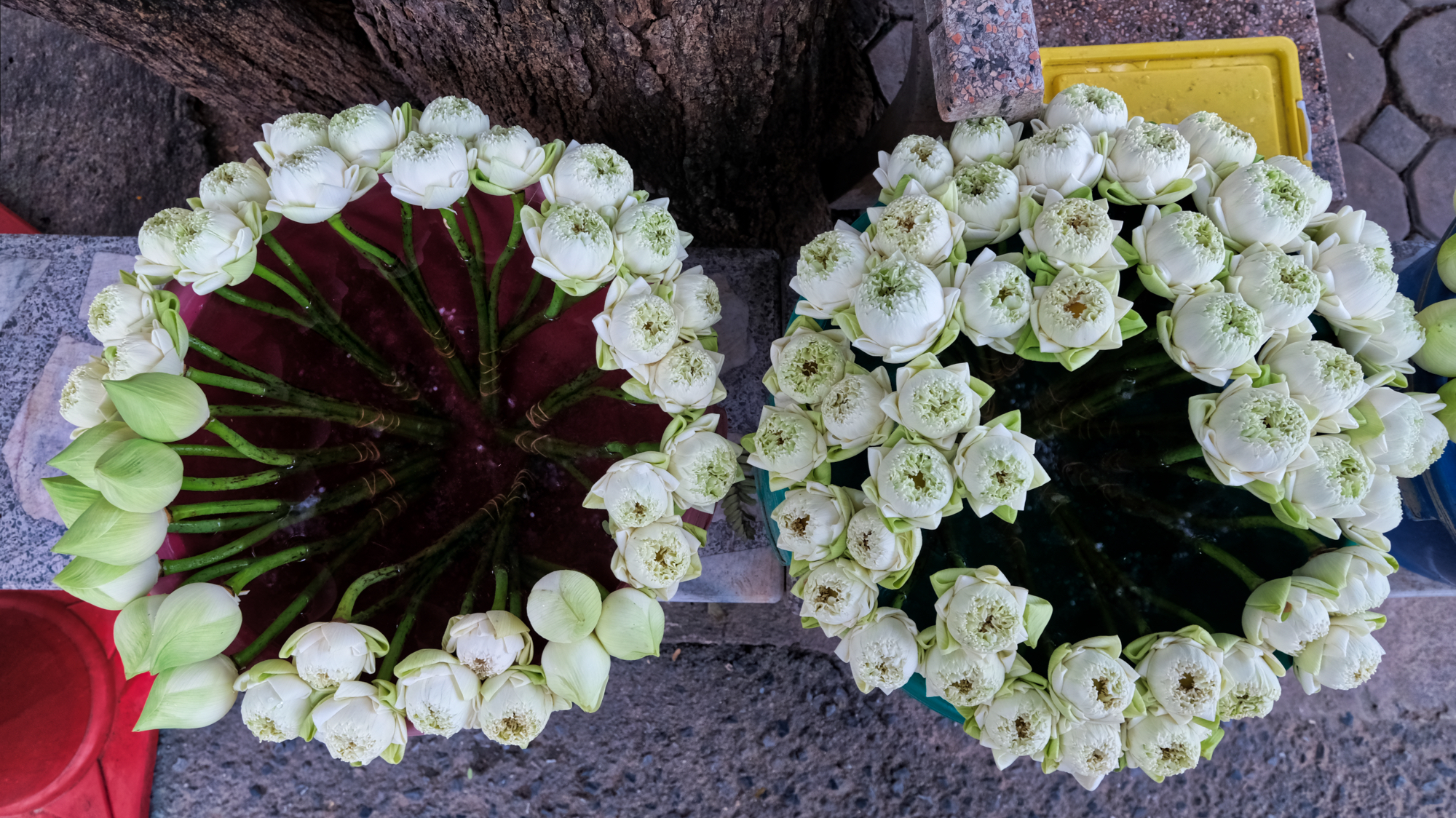 We passed a lotus hawker on the way to our car . . . and drove home in the dark: another satisfying and inspirational day out in the world.
We passed a lotus hawker on the way to our car . . . and drove home in the dark: another satisfying and inspirational day out in the world.
Chachoengsao: A Daytrip East of Bangkok
 Sunday, December 17, 2017 at 1:52PM
Sunday, December 17, 2017 at 1:52PM 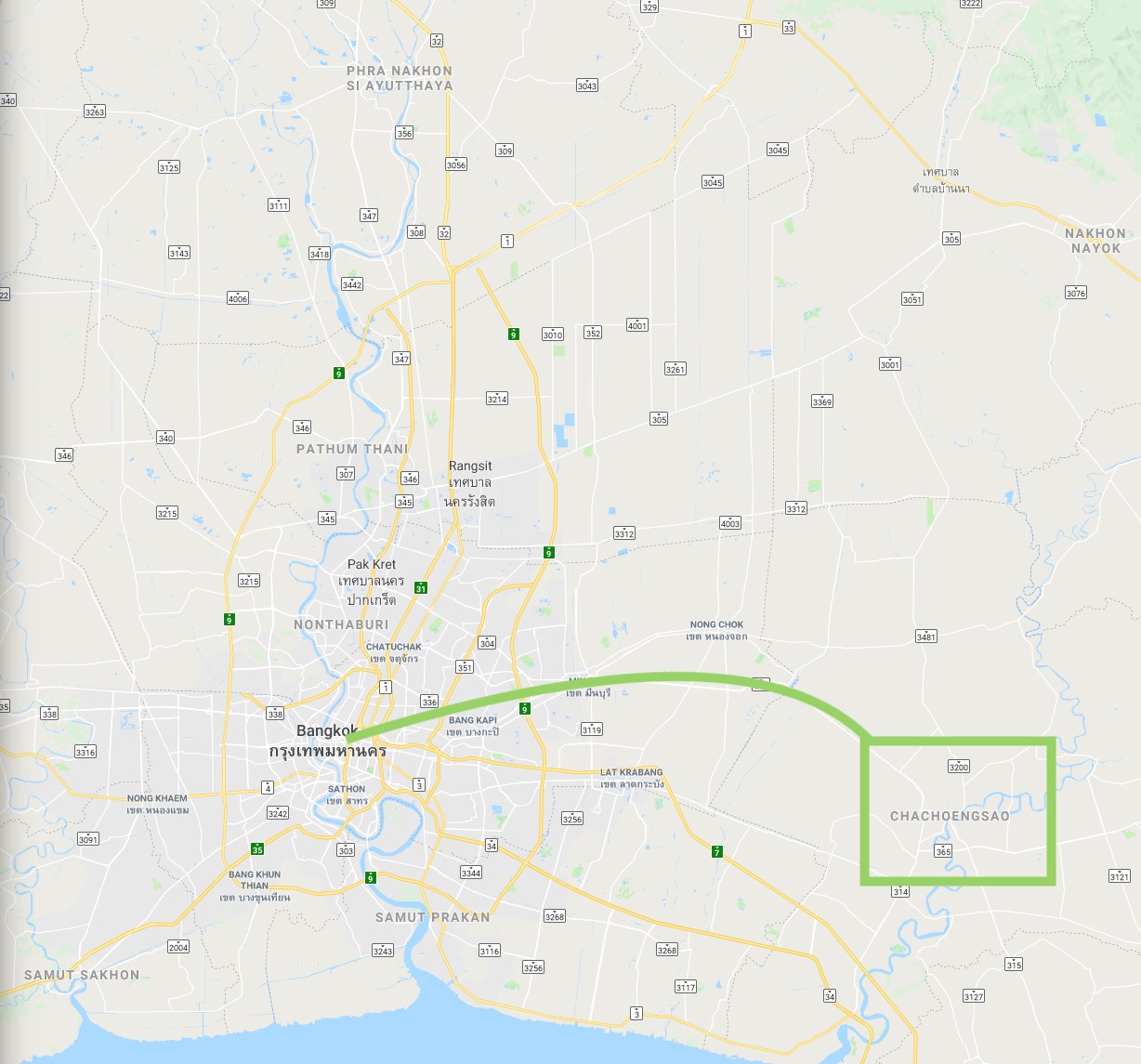 Although the city/region of Chachoengsao is not far from Bangkok, I had never visited this part of Thailand in the 20+ years I have lived here.
Although the city/region of Chachoengsao is not far from Bangkok, I had never visited this part of Thailand in the 20+ years I have lived here.
PART ONE: A RURAL ANCIENT MARKET
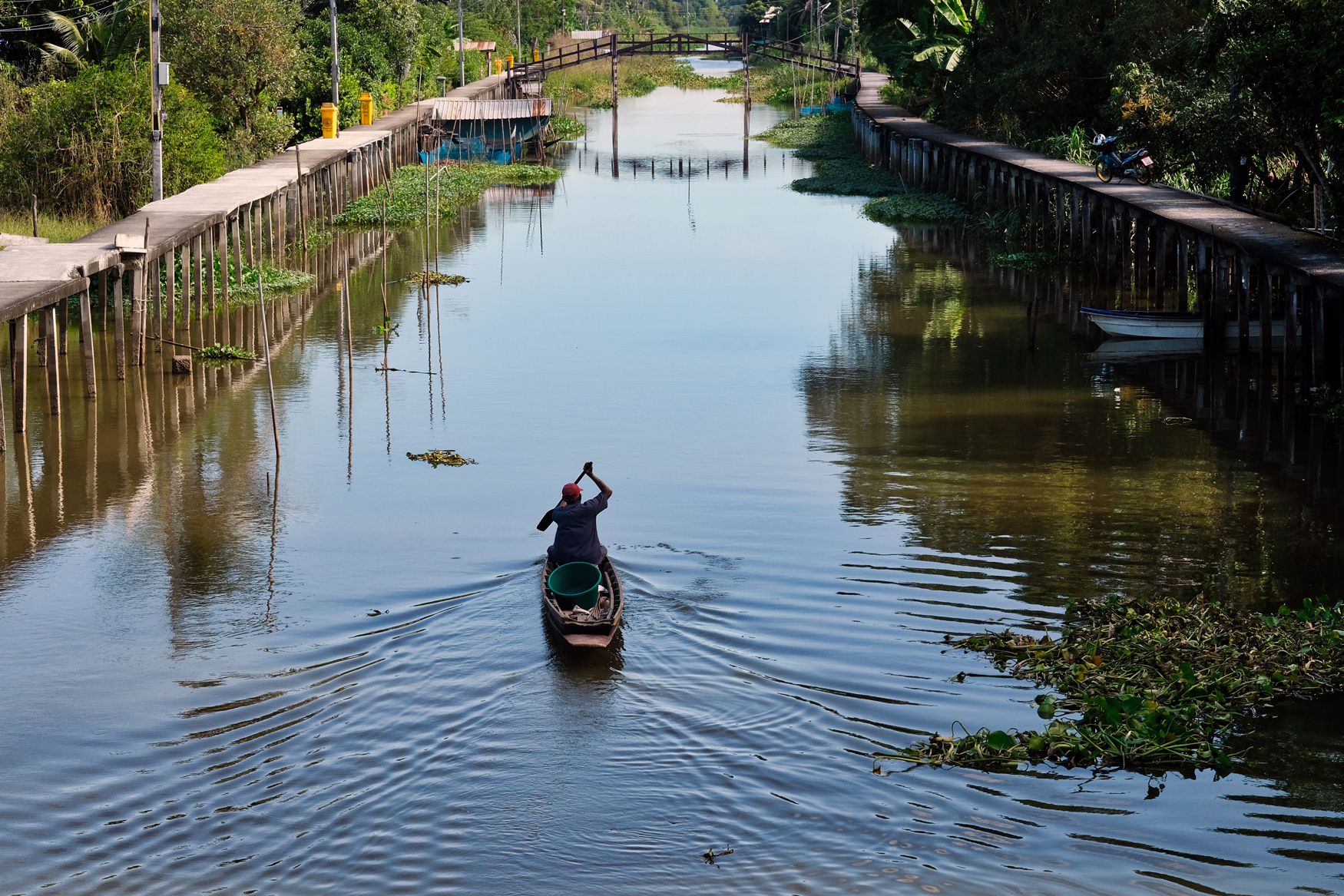 Our first stop, based on a roadside sign, was to the Chachoengsao Ancient Market.
Our first stop, based on a roadside sign, was to the Chachoengsao Ancient Market.
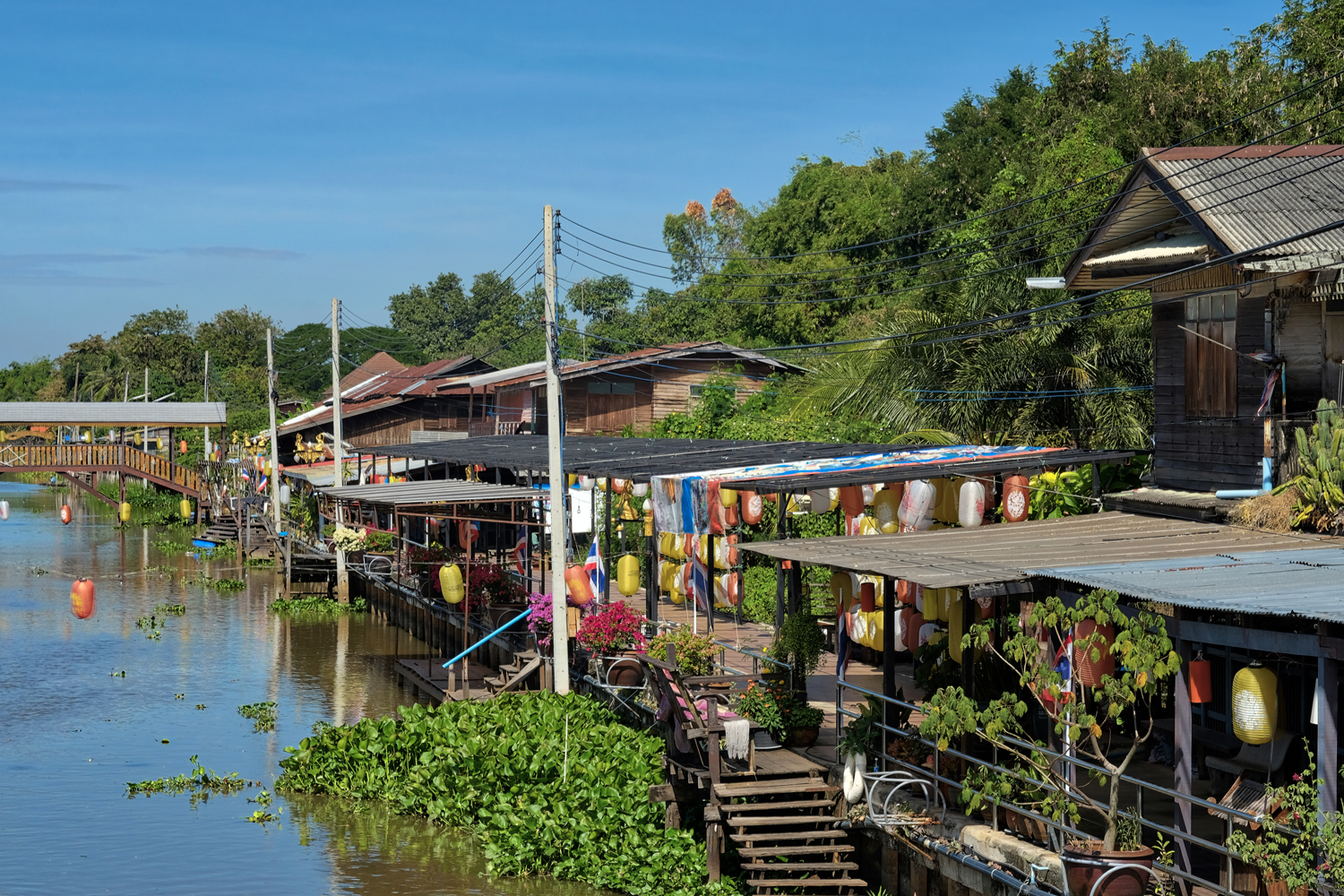 The market is on a klong system which has many old houses alongside.
The market is on a klong system which has many old houses alongside.
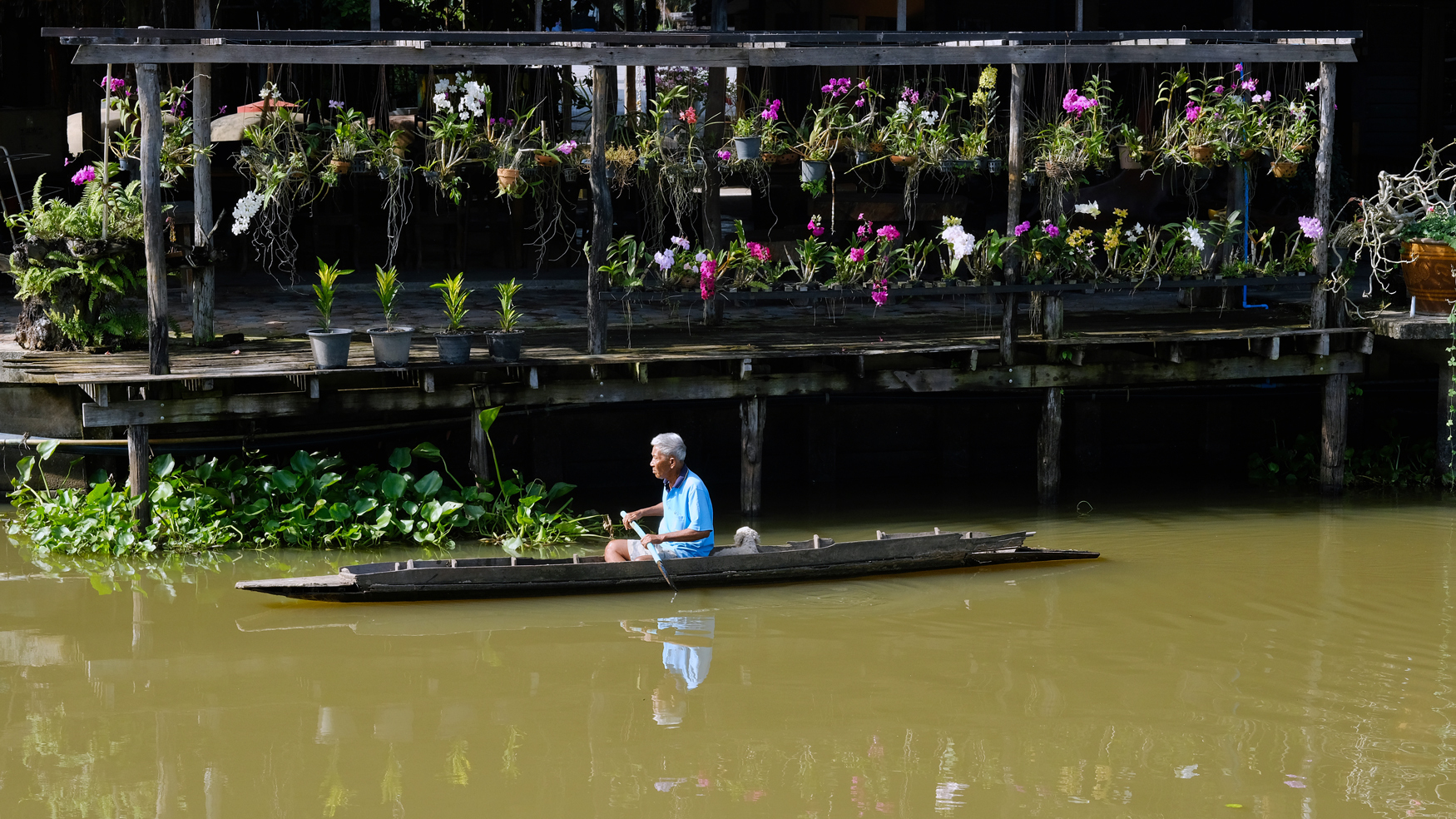 This very photogenic fisherman and his dog appeared as if from nowhere . . .
This very photogenic fisherman and his dog appeared as if from nowhere . . .
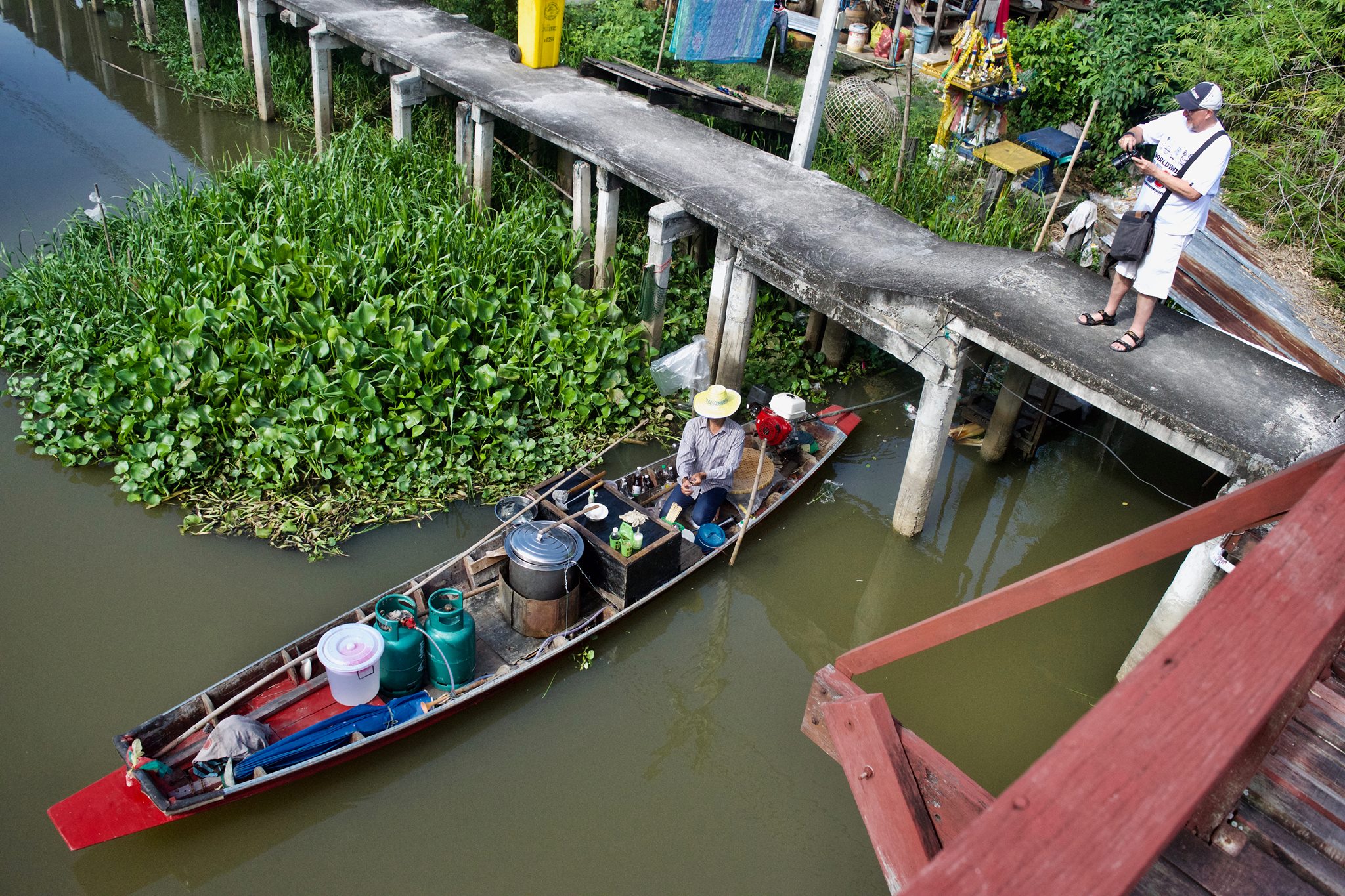 My friend John Stiles went with me on this ramble . . . and took this photo of me enjoying myself and my new Fuji X-T2 camera.
My friend John Stiles went with me on this ramble . . . and took this photo of me enjoying myself and my new Fuji X-T2 camera.
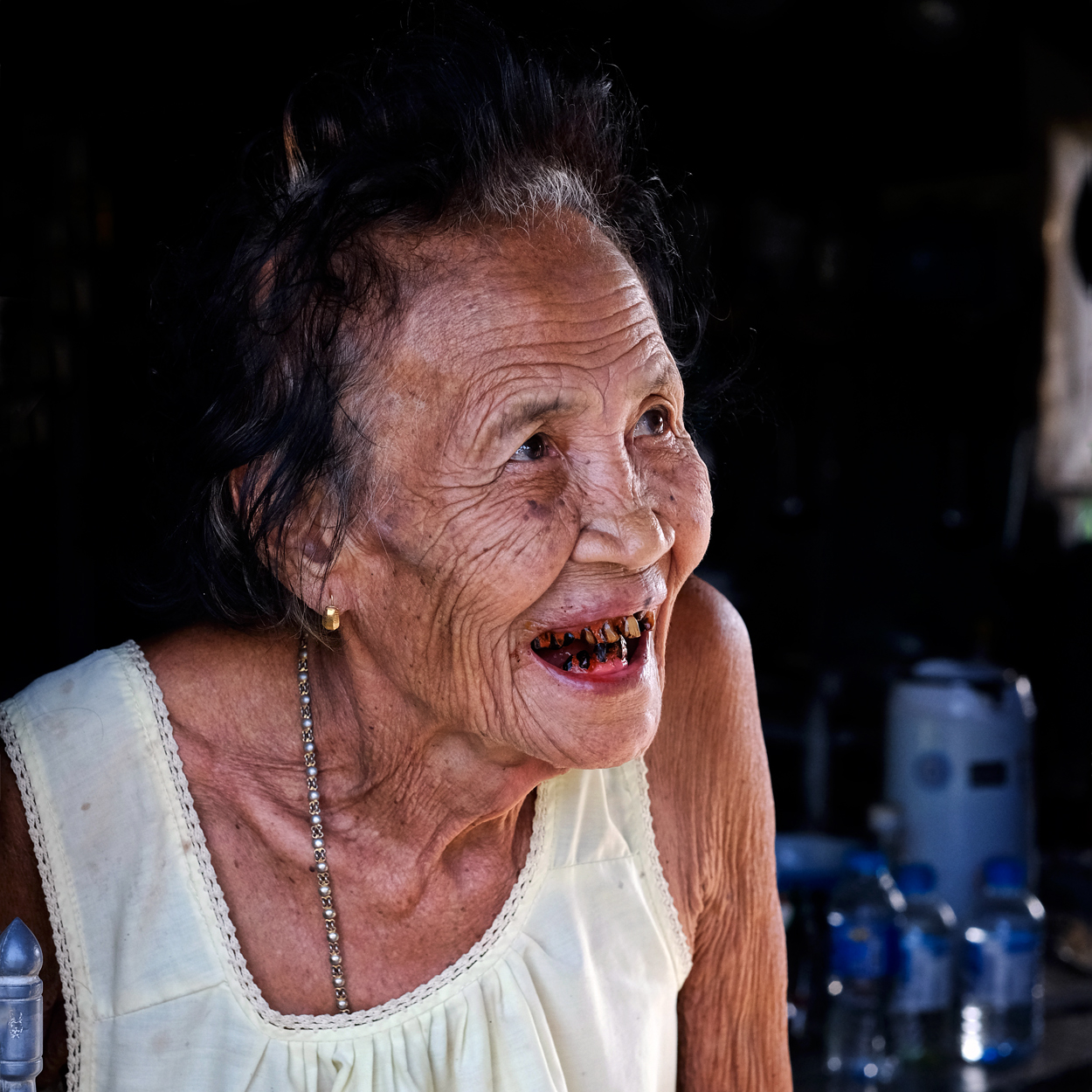 82 years old and a regular betel-nut user . . . she was very glad to chat with us while she visited her friend next door.
82 years old and a regular betel-nut user . . . she was very glad to chat with us while she visited her friend next door.
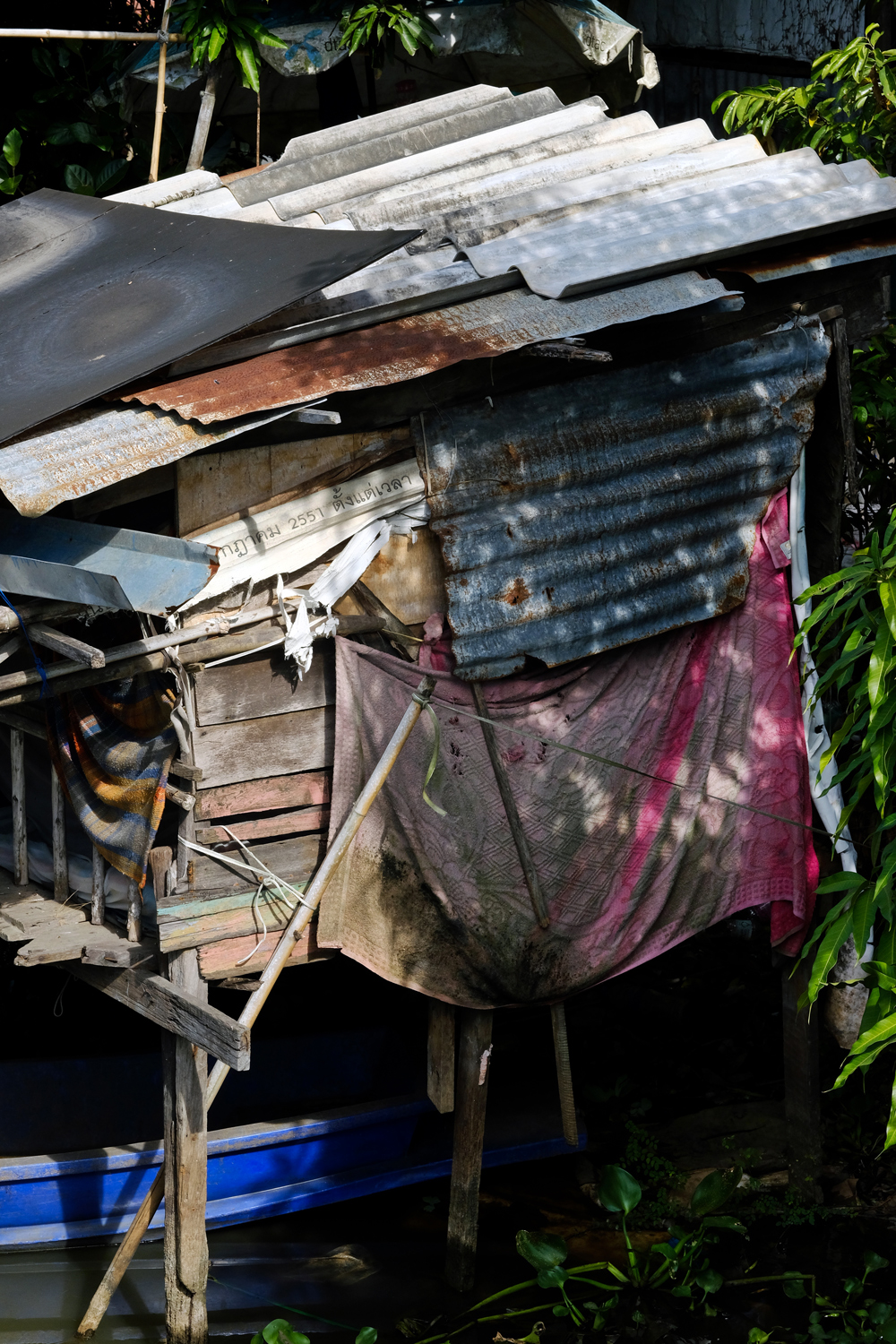 Next door was the old woman's 'home' -- a hovel along the klong. Abject poverty.
Next door was the old woman's 'home' -- a hovel along the klong. Abject poverty.
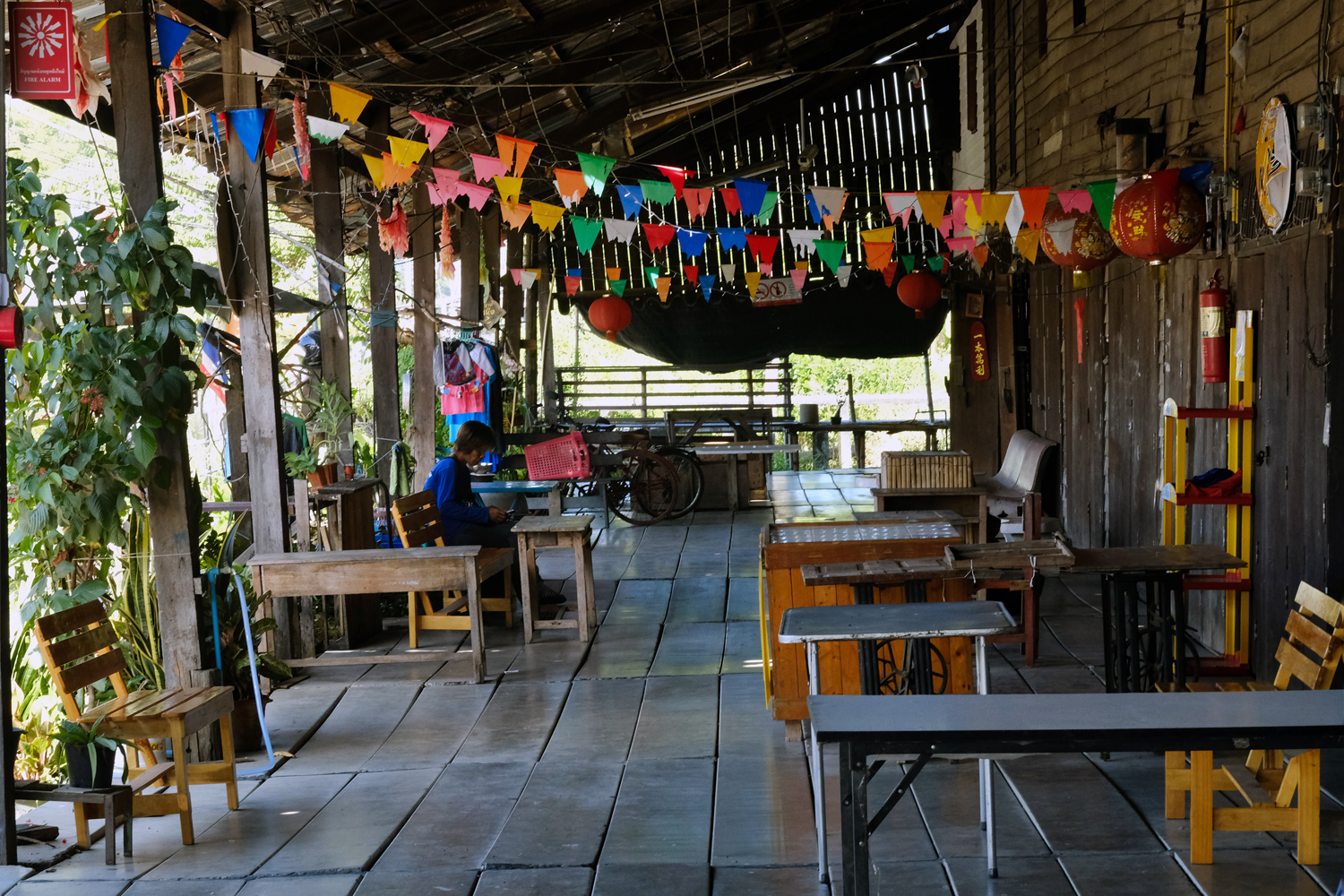 The market is opened only on week-ends, but we were there on a Monday, and glad of it. The old wooden structures built on stilts over the klong made a picturesque environment.
The market is opened only on week-ends, but we were there on a Monday, and glad of it. The old wooden structures built on stilts over the klong made a picturesque environment.
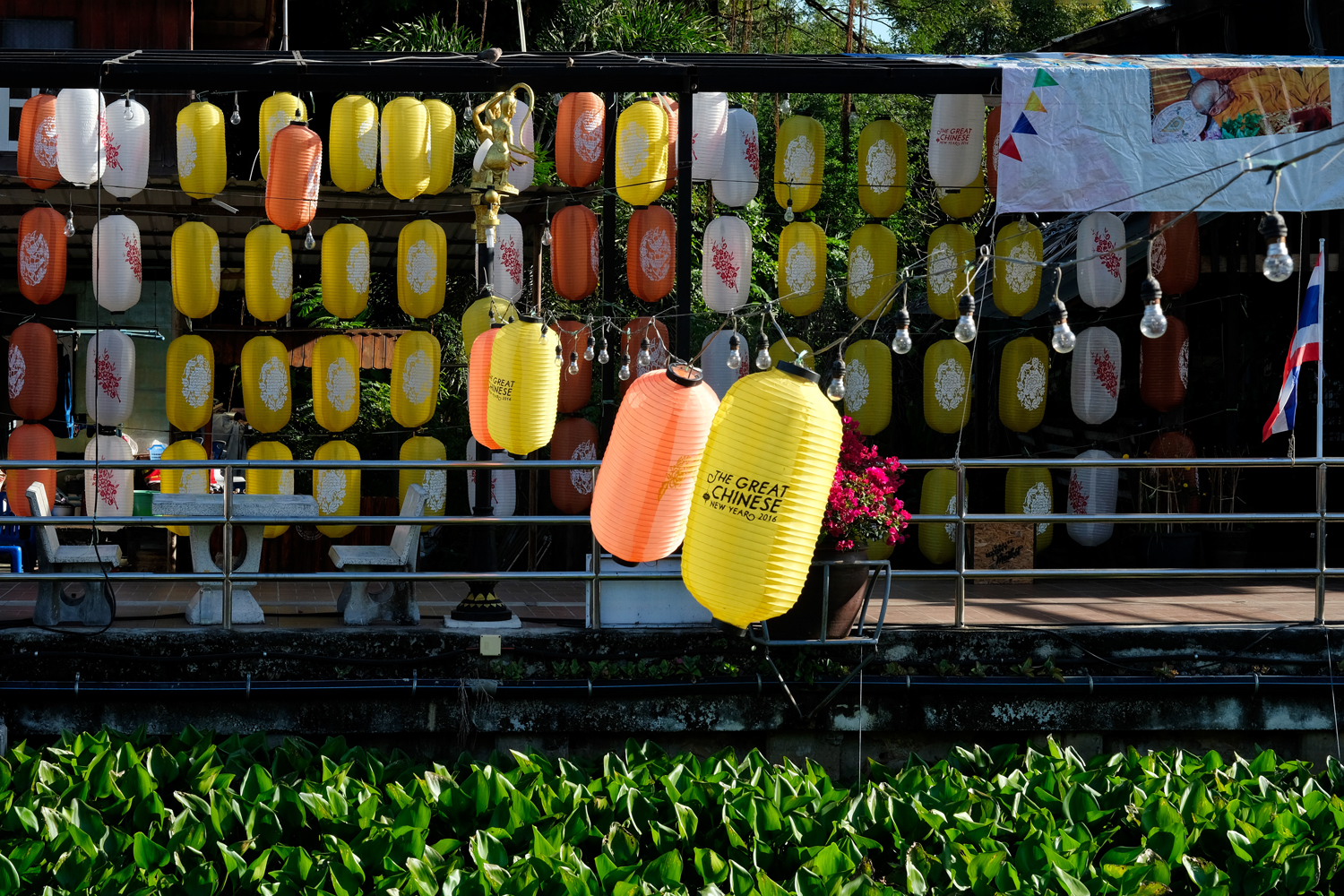 Lanterns from last years' Chinese New Years still festooned the old market.
Lanterns from last years' Chinese New Years still festooned the old market.
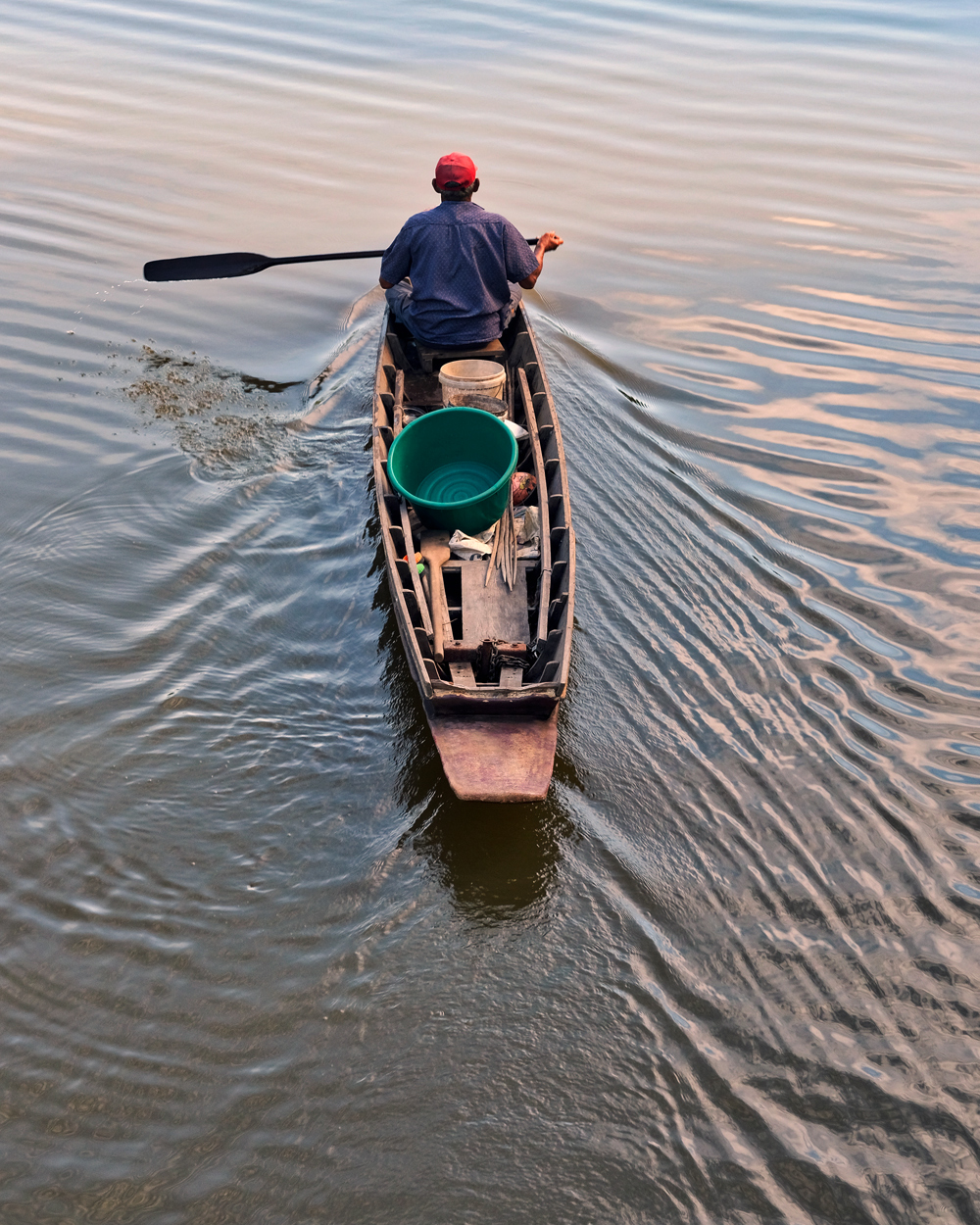 A klong boatman, Chachoengsao.
A klong boatman, Chachoengsao.
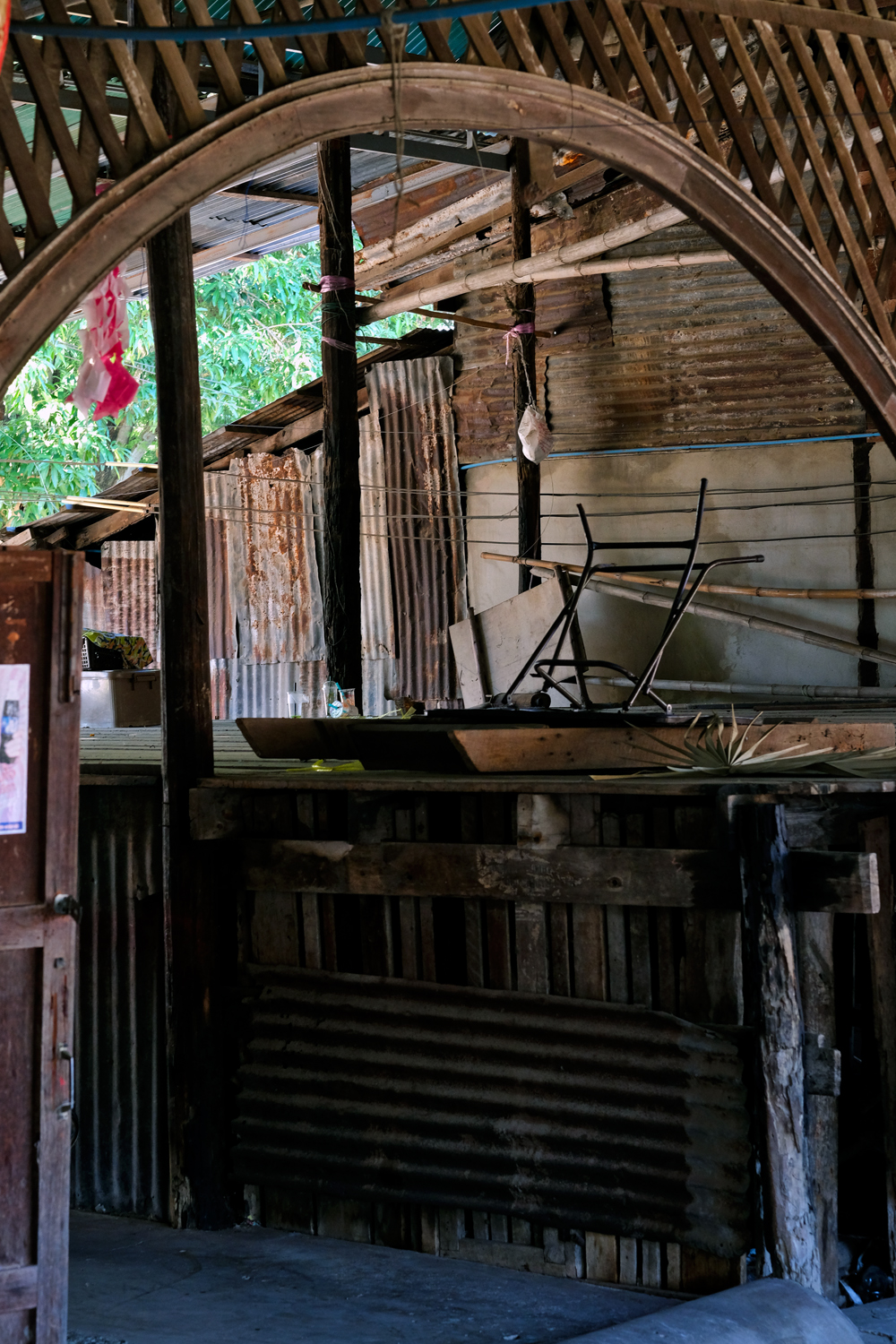 The old market looked like it had seen better days: here an old stage for ceremonies and performances.
The old market looked like it had seen better days: here an old stage for ceremonies and performances.
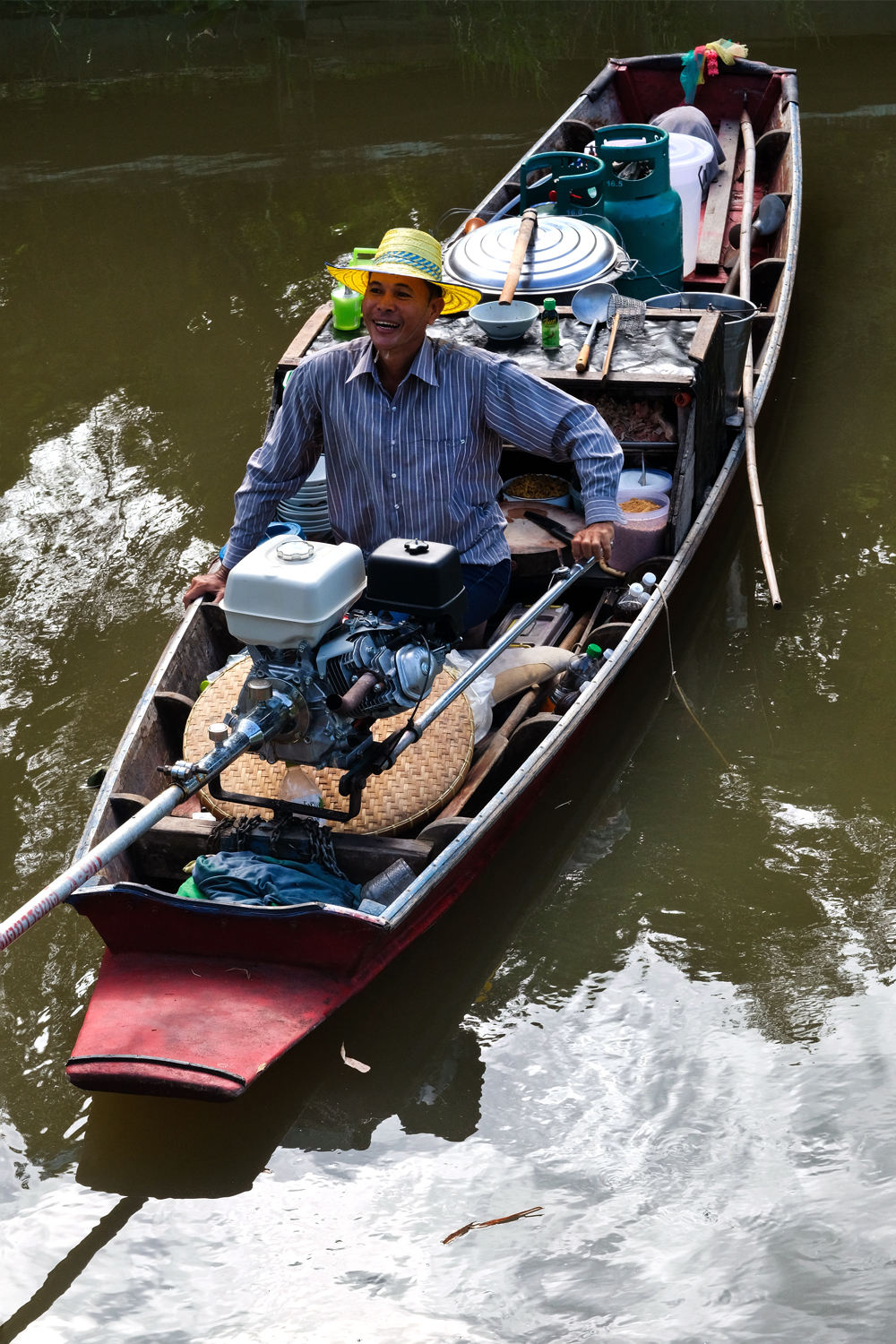 Although the market was closed, some of the vendors live permanently at the site. This man sold lunch to the local residents.
Although the market was closed, some of the vendors live permanently at the site. This man sold lunch to the local residents.
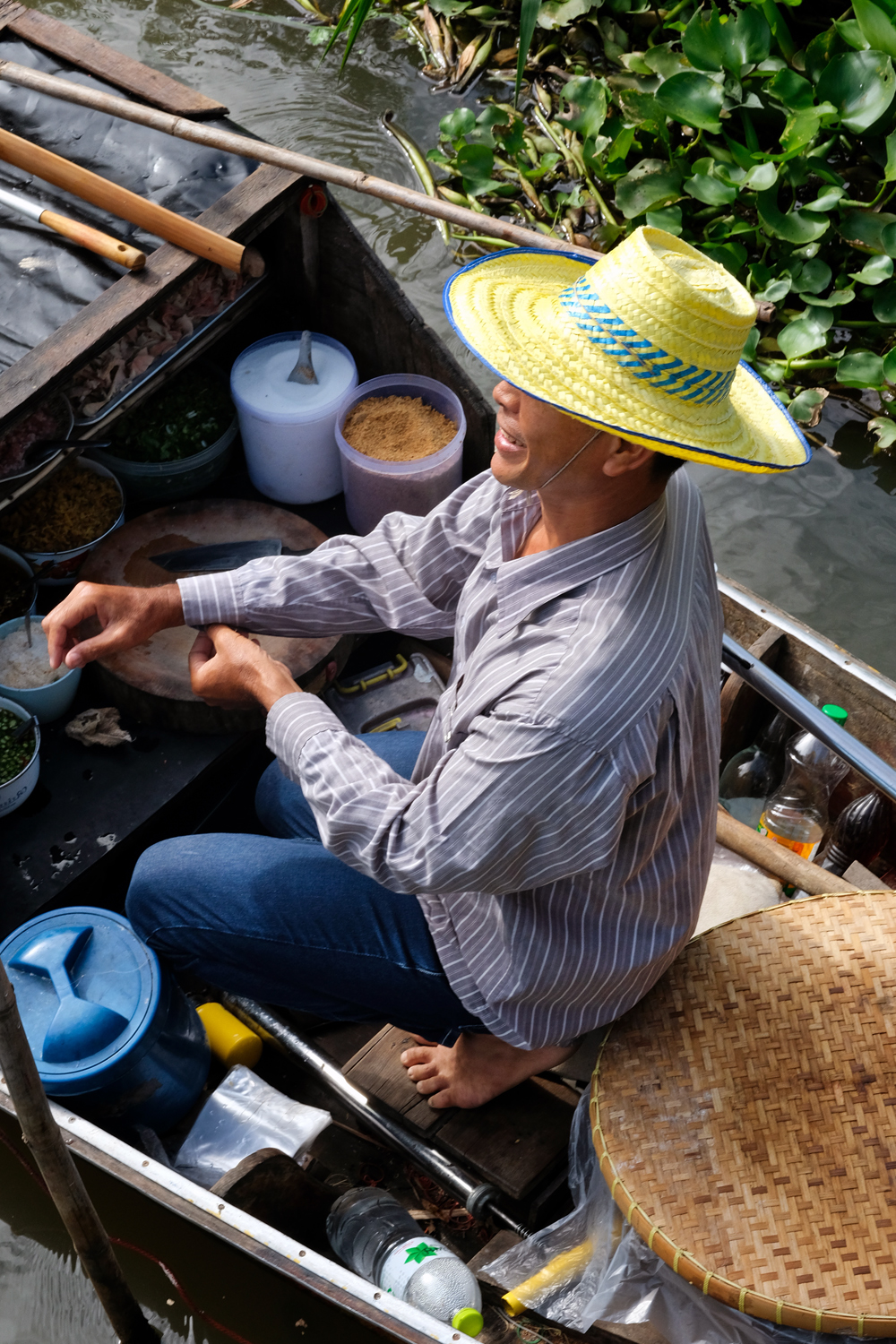 Taking an order.
Taking an order.
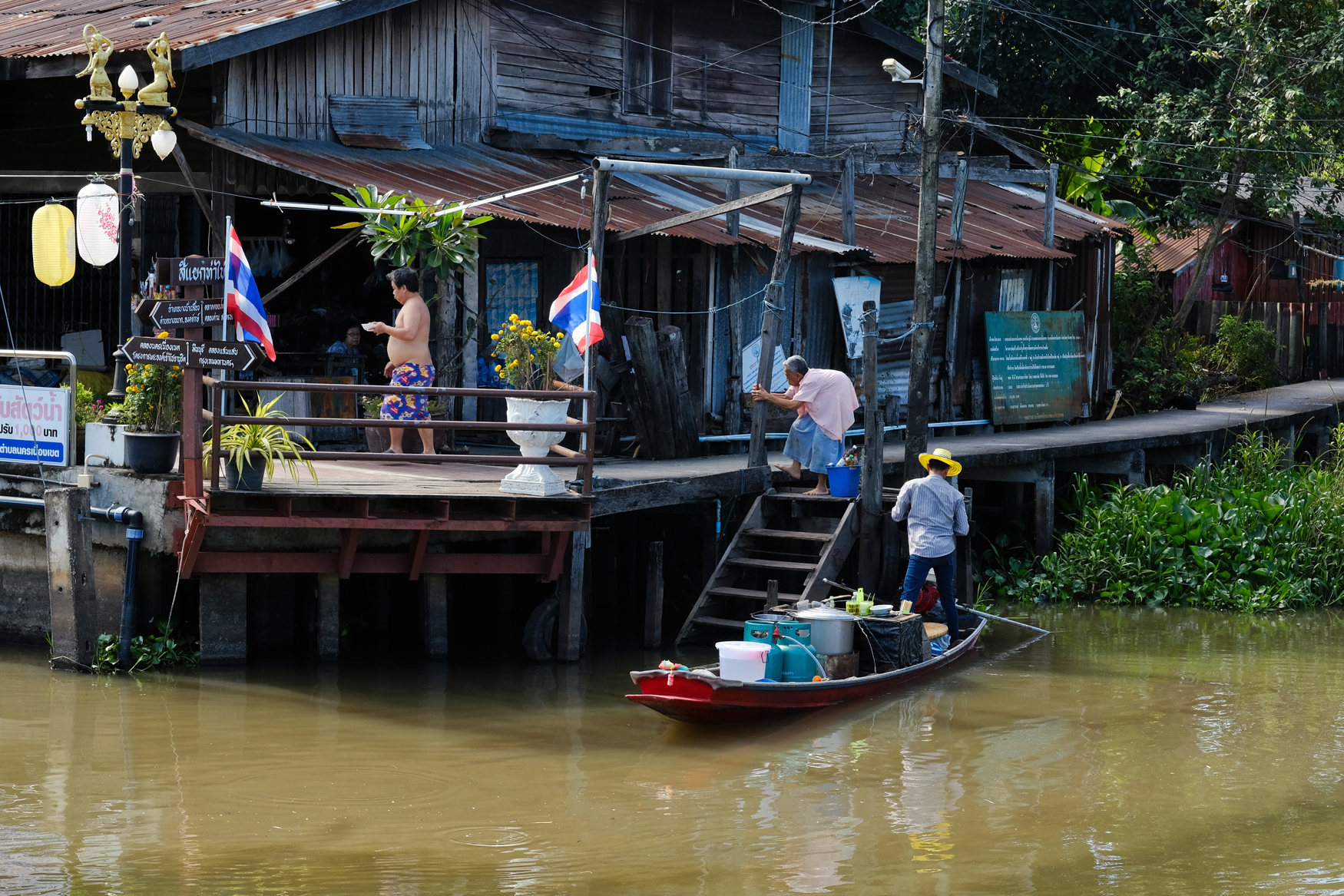 Life along the klong . . . at lunchtime.
Life along the klong . . . at lunchtime.
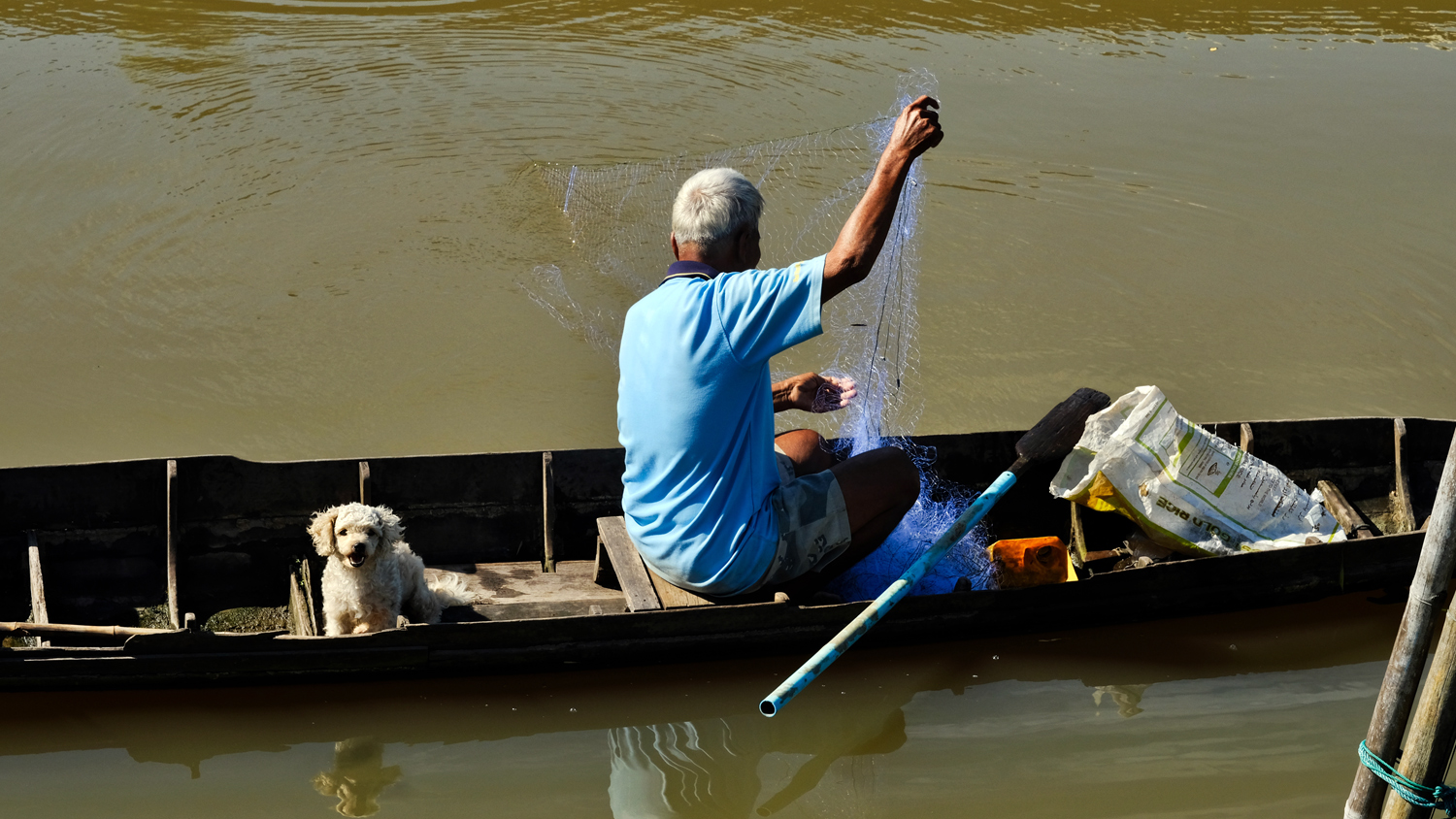 A fisherman and his dog. We did not see him catch any fish . . . he said there weren't very many to catch, when asked.
A fisherman and his dog. We did not see him catch any fish . . . he said there weren't very many to catch, when asked.
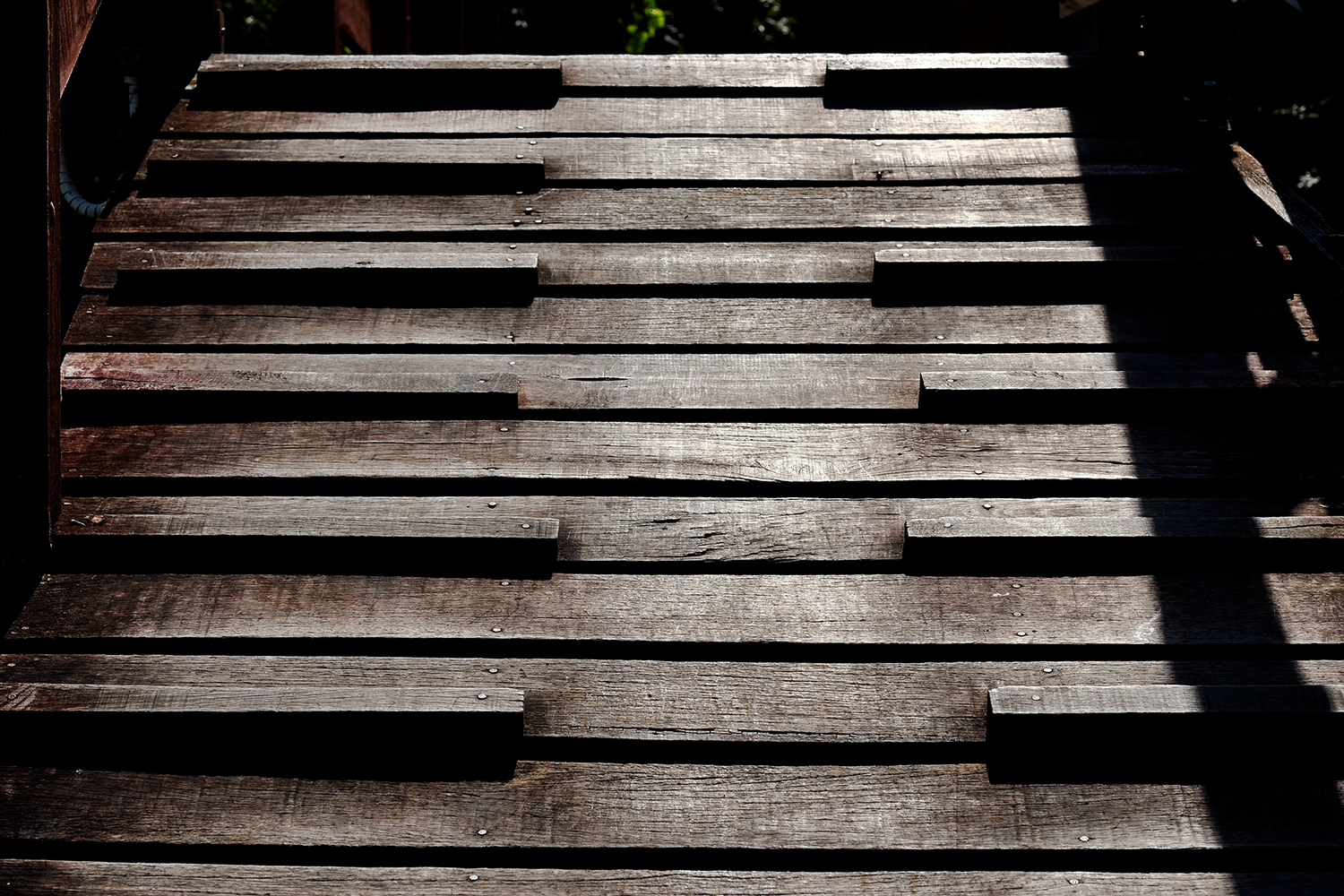 The old weathered wood and sharp light made for some nice 'minimalist' photos.
The old weathered wood and sharp light made for some nice 'minimalist' photos.
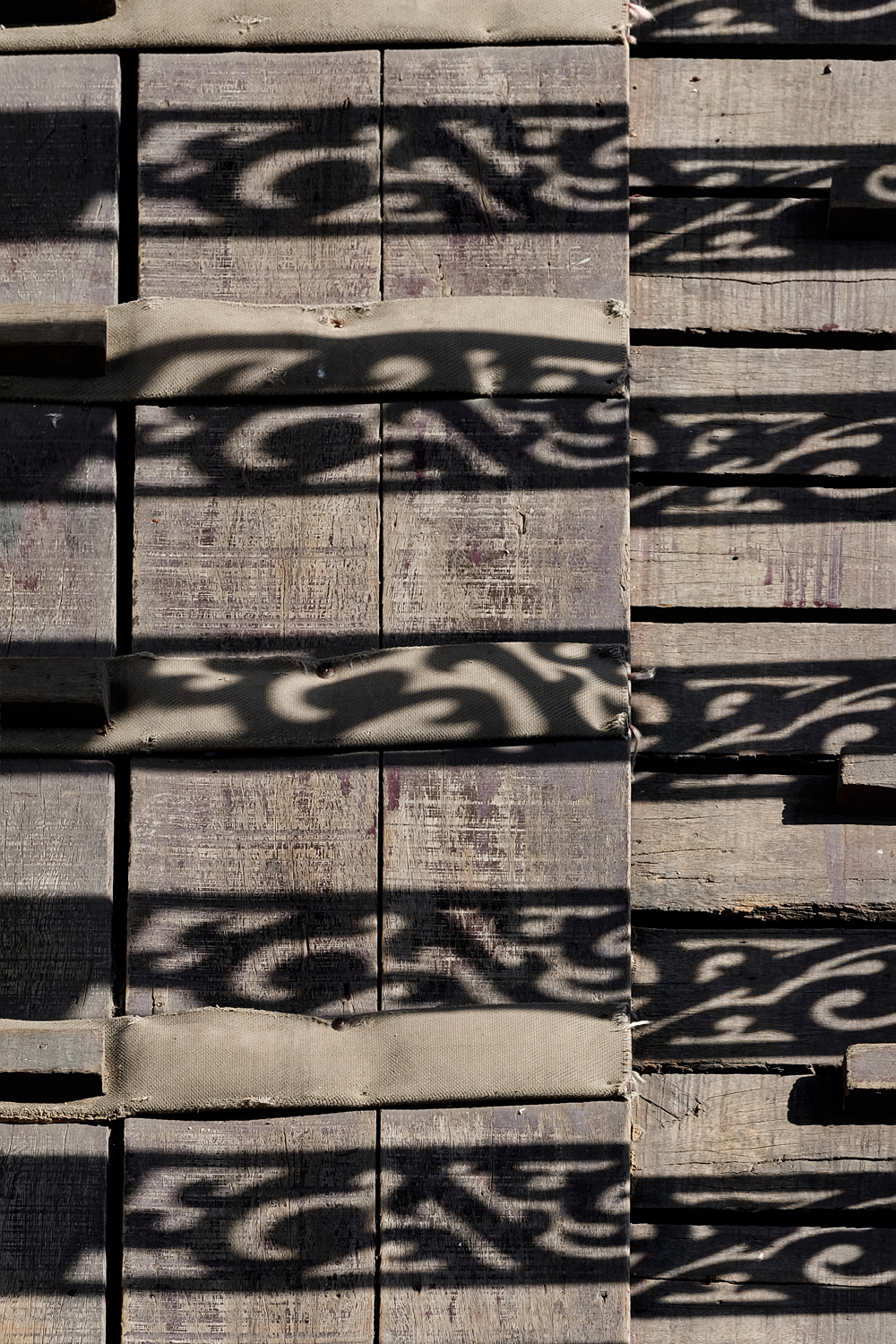 Light, shadow, texture . . . a bridge.
Light, shadow, texture . . . a bridge.
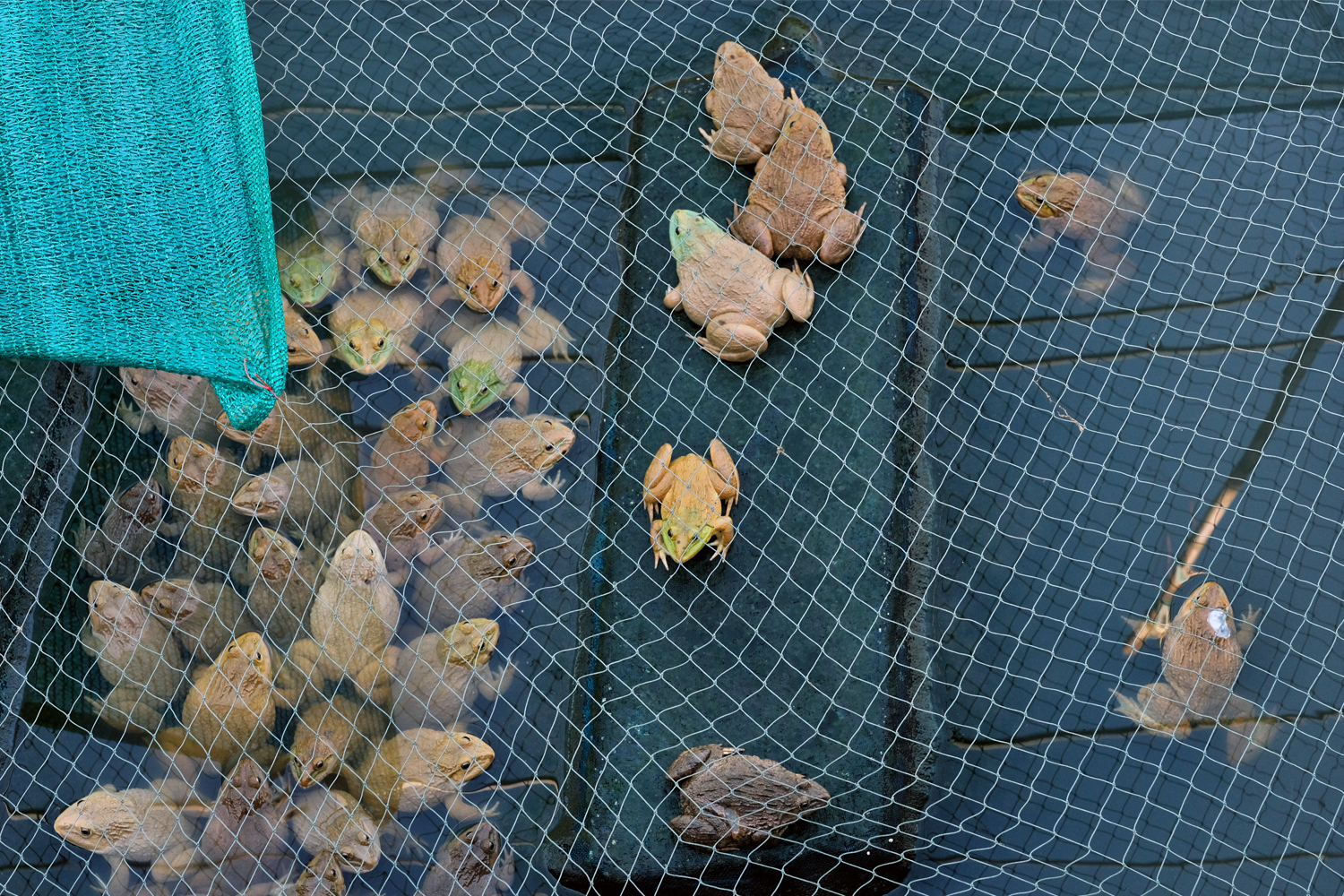 There was some aquaculture along the klongs . . . frog farming.
There was some aquaculture along the klongs . . . frog farming.
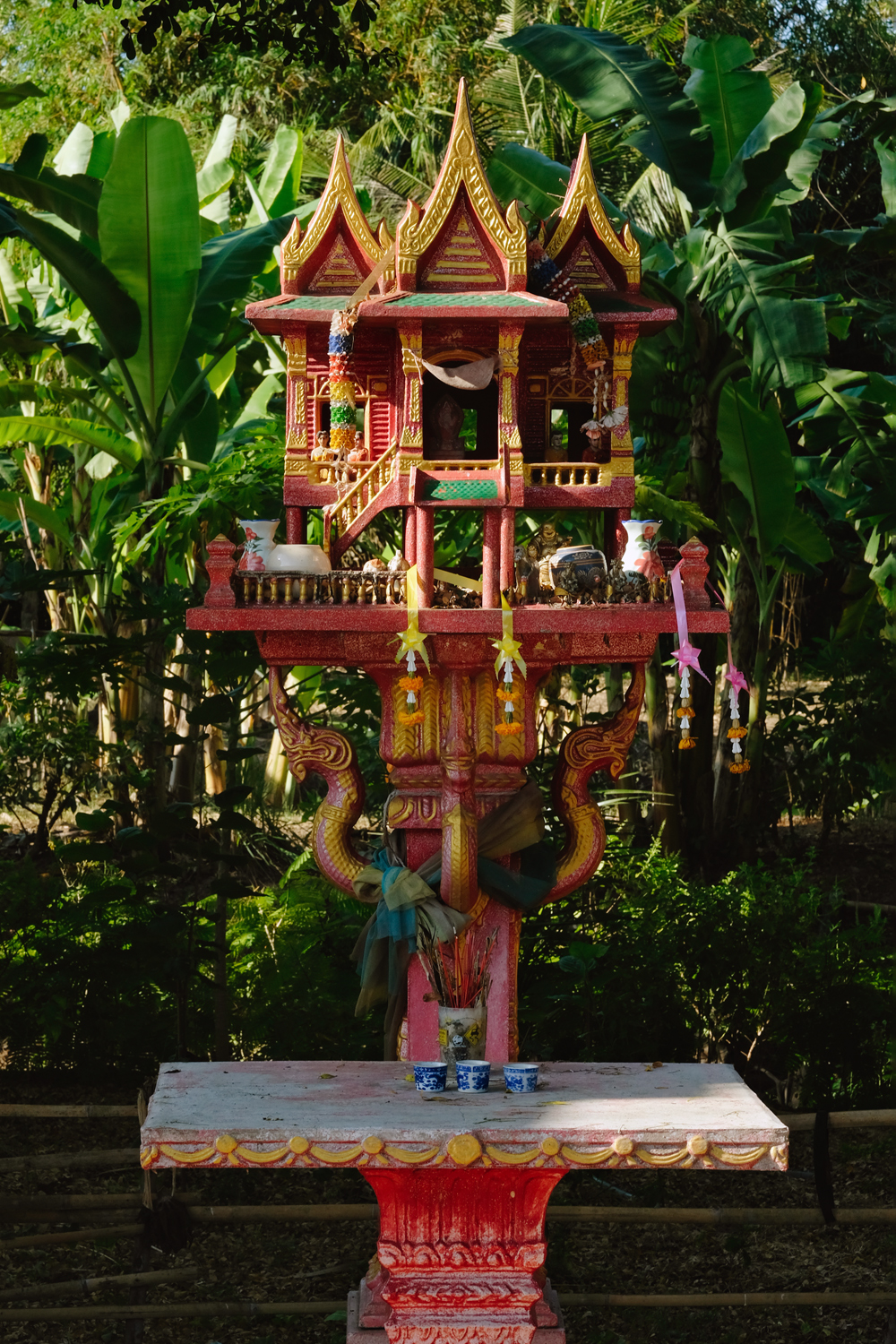 And, as always, the ubiquitous spirit houses.
And, as always, the ubiquitous spirit houses.
 The doors of the closed market shops were in themselves things of beauty.
The doors of the closed market shops were in themselves things of beauty.
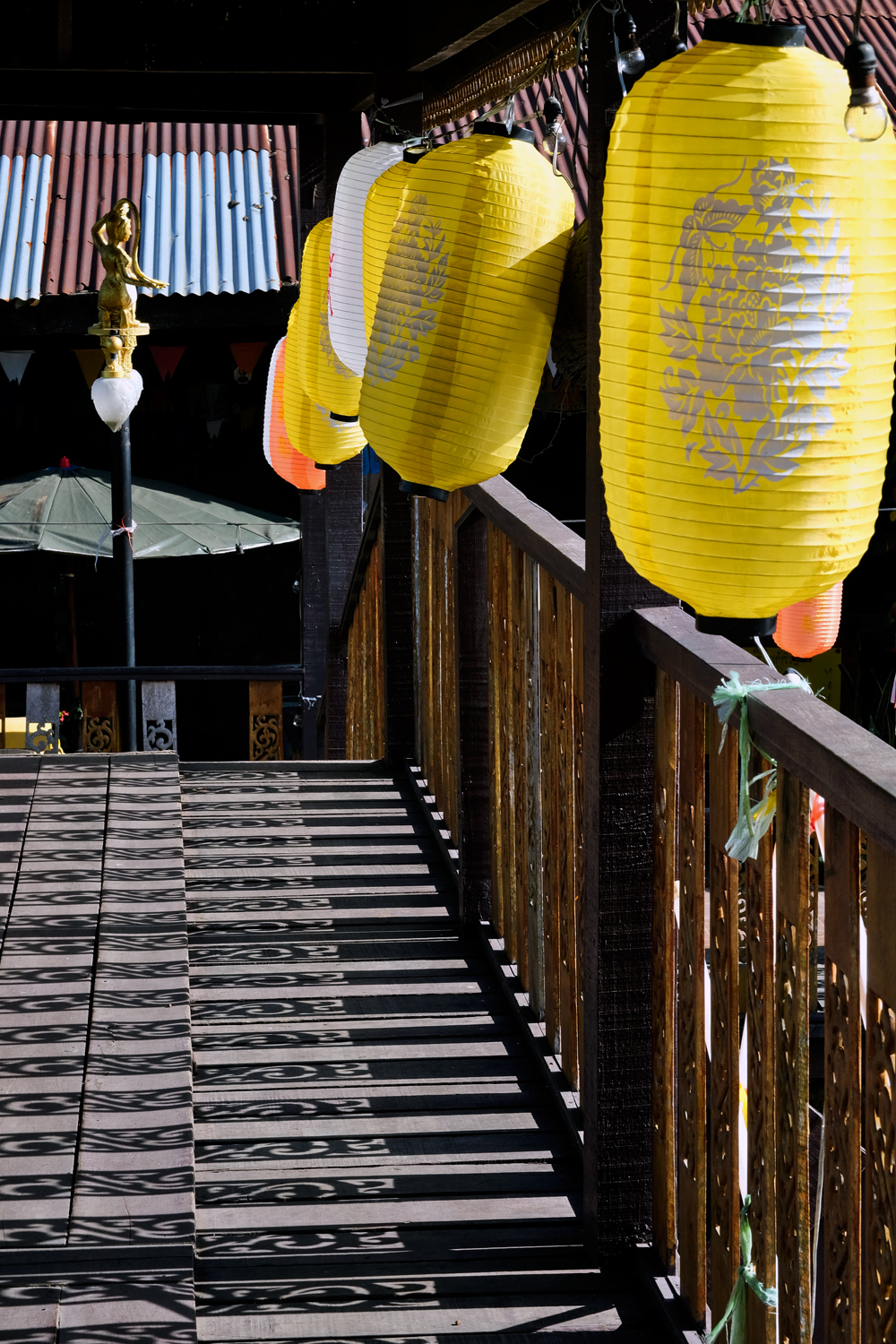 We walked around for several hours finding an endless number of interesting things to photograph.
We walked around for several hours finding an endless number of interesting things to photograph.
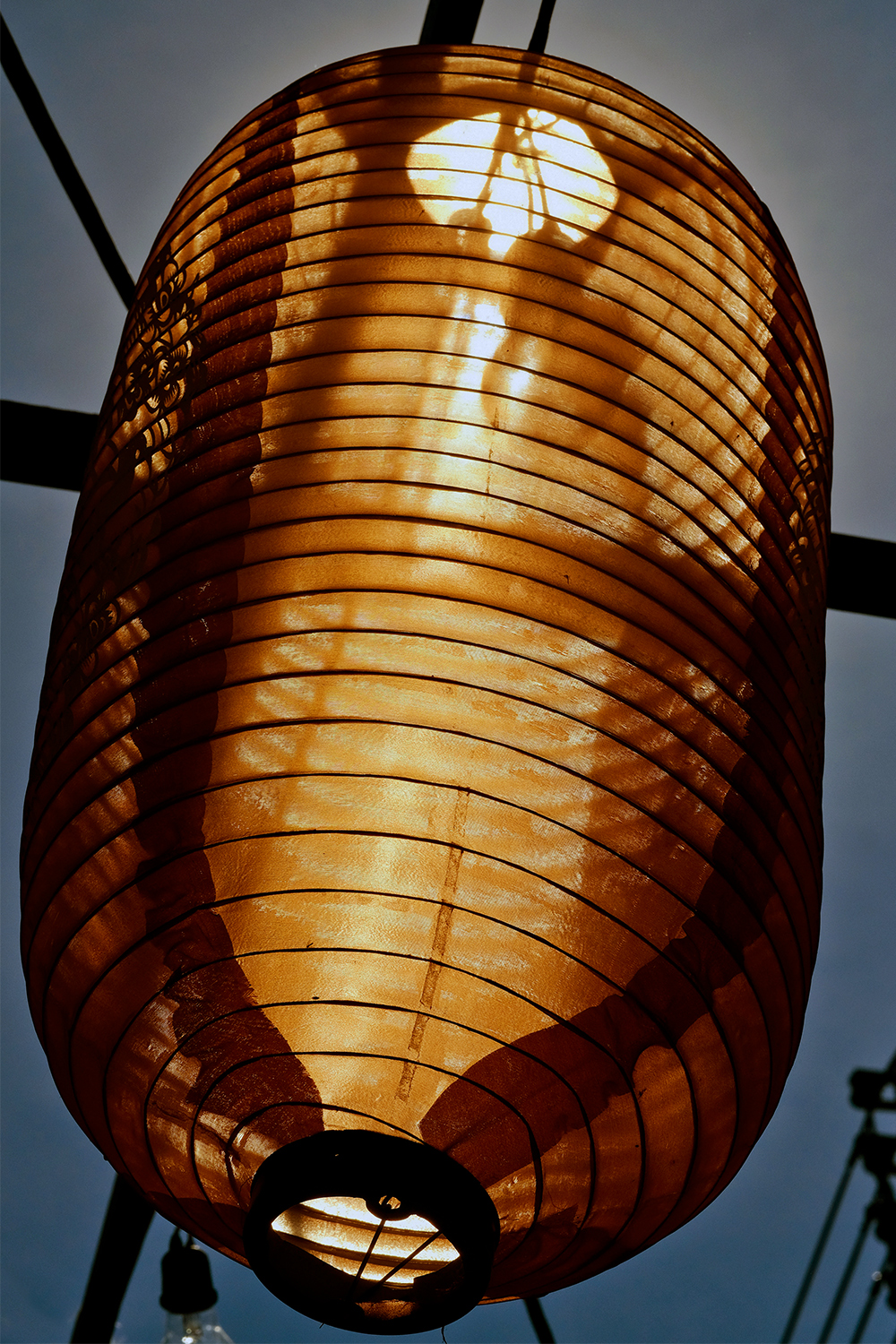 Sun behind a lantern.
Sun behind a lantern.
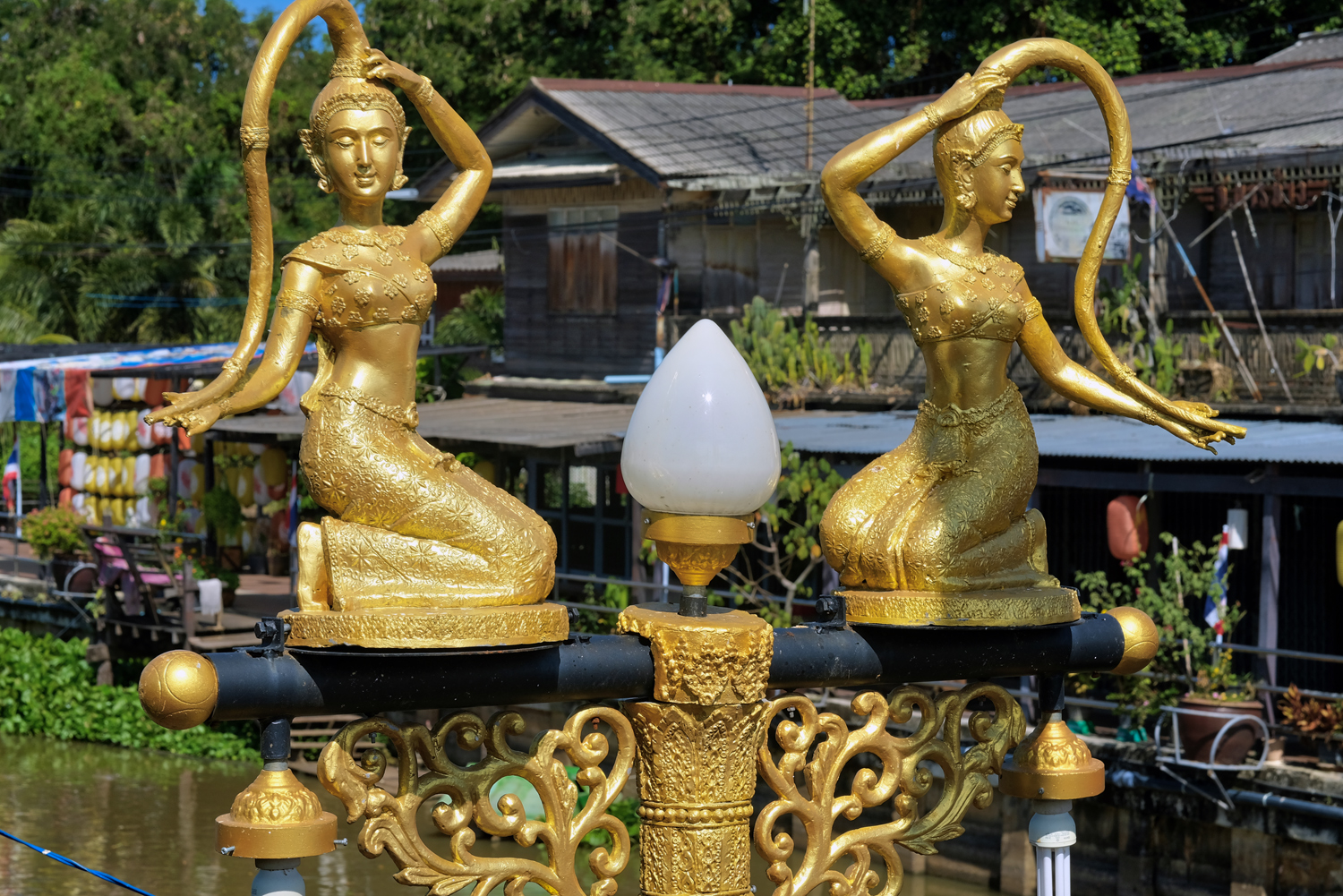 Signs of coordinated development: the market was lined with these very attractive street lights.
Signs of coordinated development: the market was lined with these very attractive street lights.
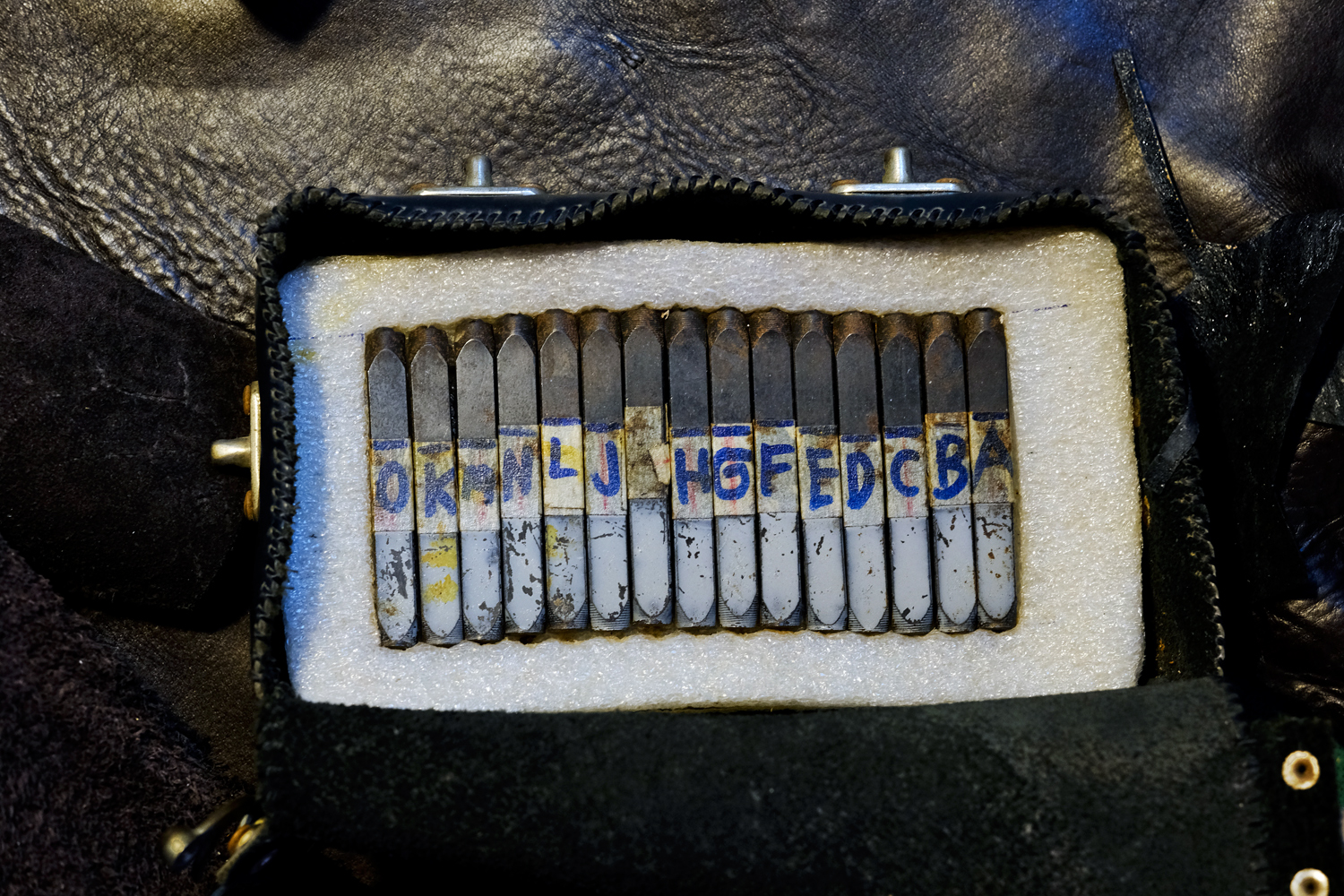 I bought a leather pouch for my sunglasses and the seller put my name on it with these old tools.
I bought a leather pouch for my sunglasses and the seller put my name on it with these old tools.
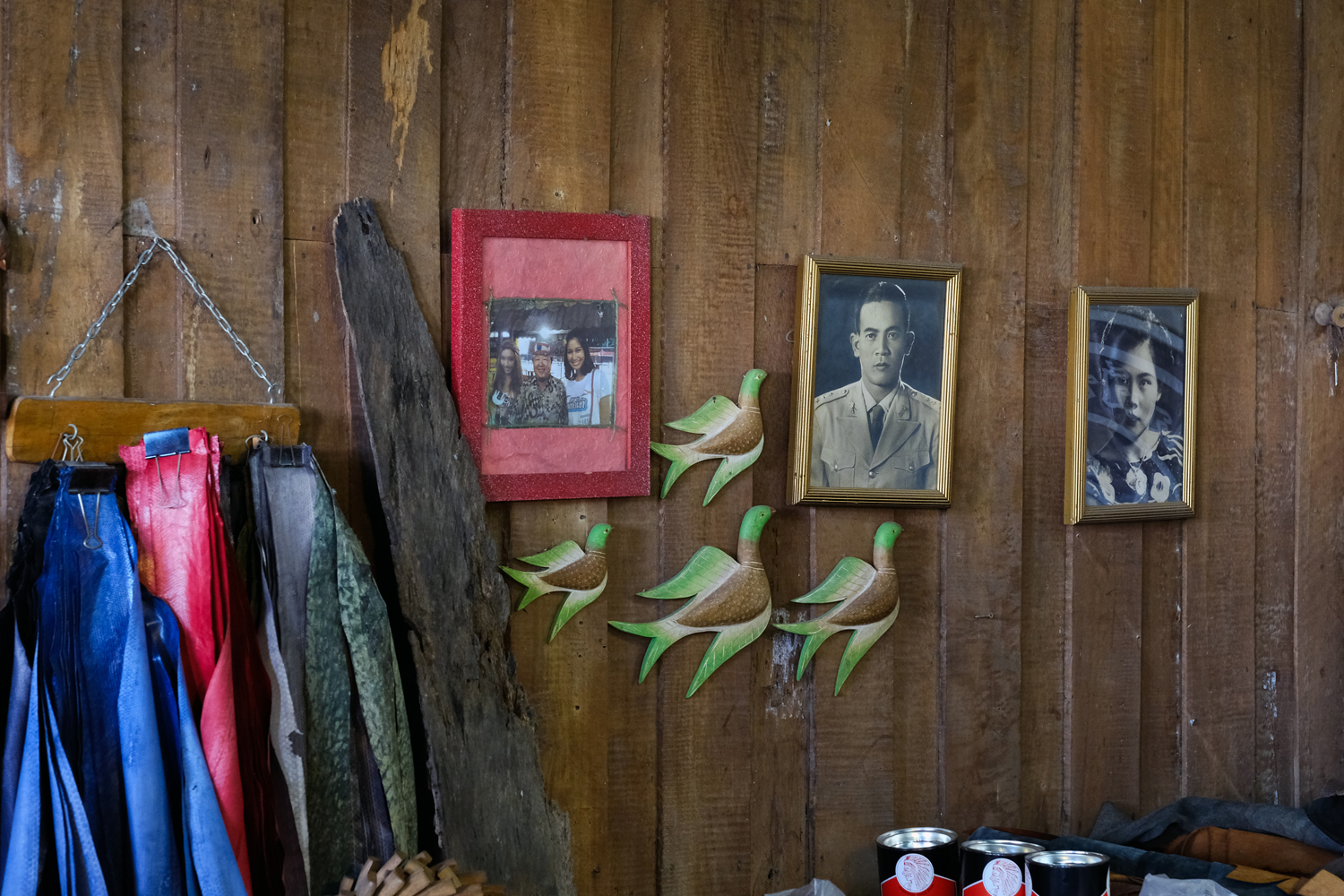 A wall in the leather shop with framed photos of the owner's wife's parents. Very touching.
A wall in the leather shop with framed photos of the owner's wife's parents. Very touching.
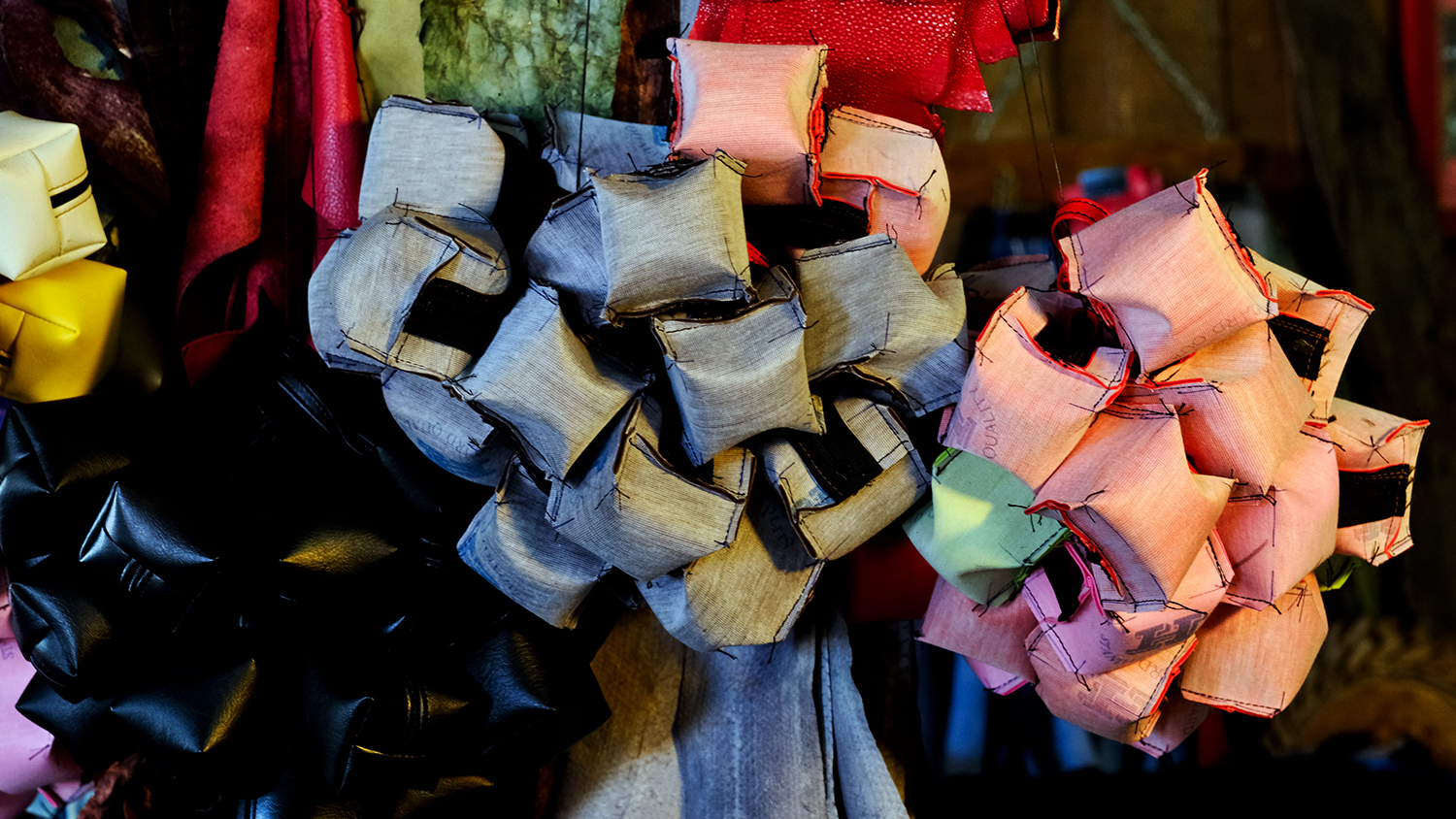 The leathergoods shop had these for sale, but I could not figure out what they were for.
The leathergoods shop had these for sale, but I could not figure out what they were for.
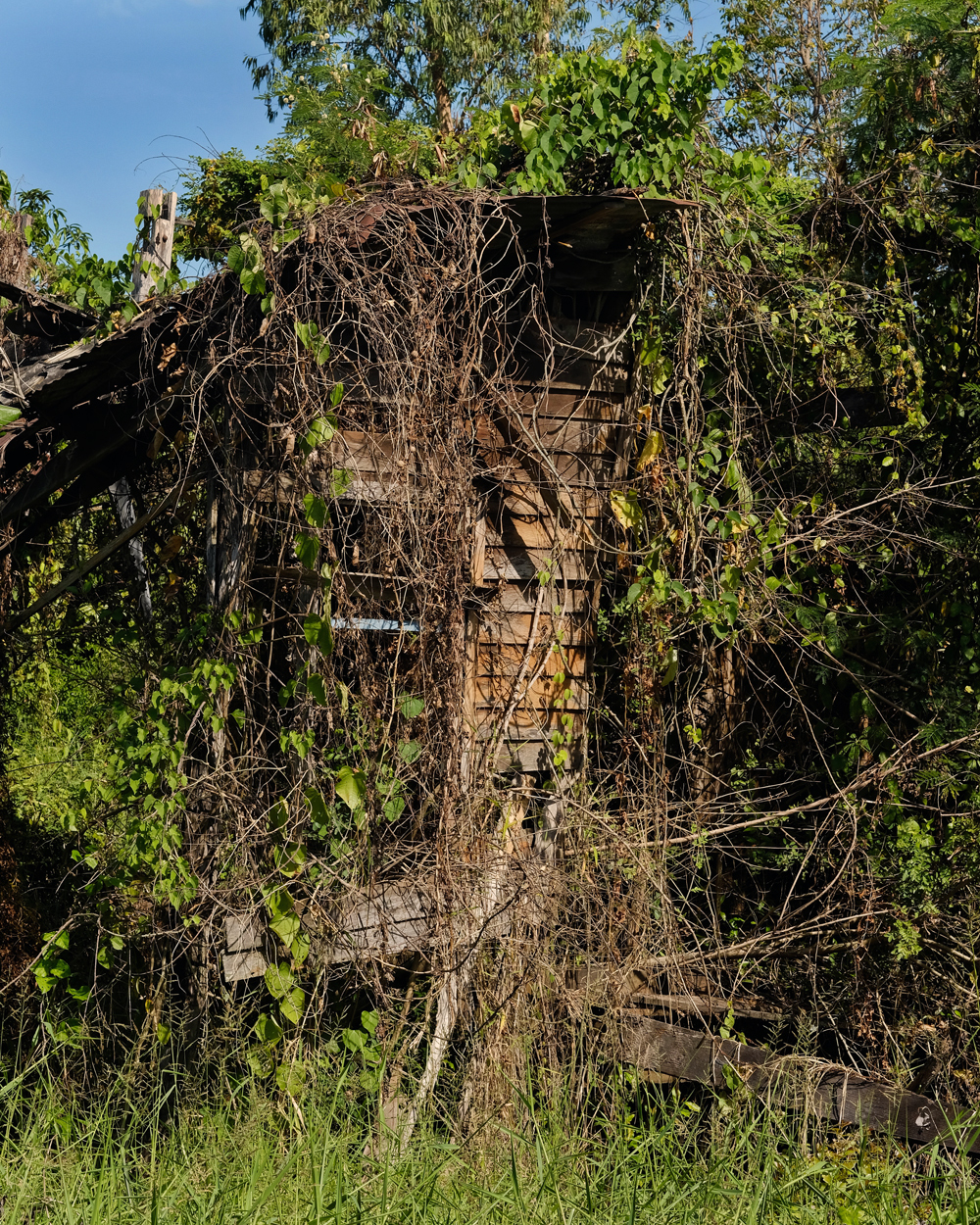 There were a number of empty, abandoned houses.
There were a number of empty, abandoned houses.
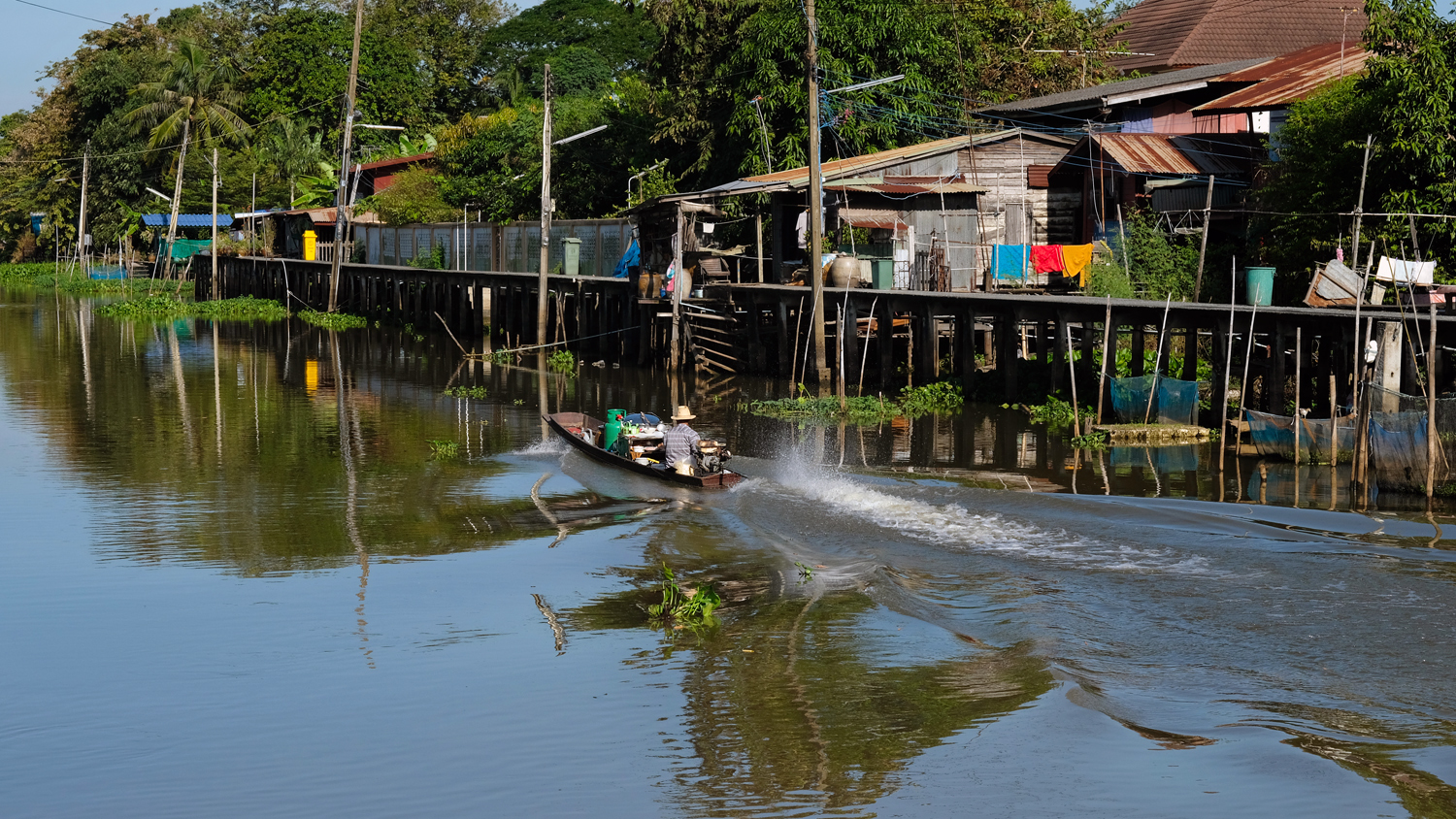 A lovely morning spent along the old klongs of rural Thailand.
A lovely morning spent along the old klongs of rural Thailand.
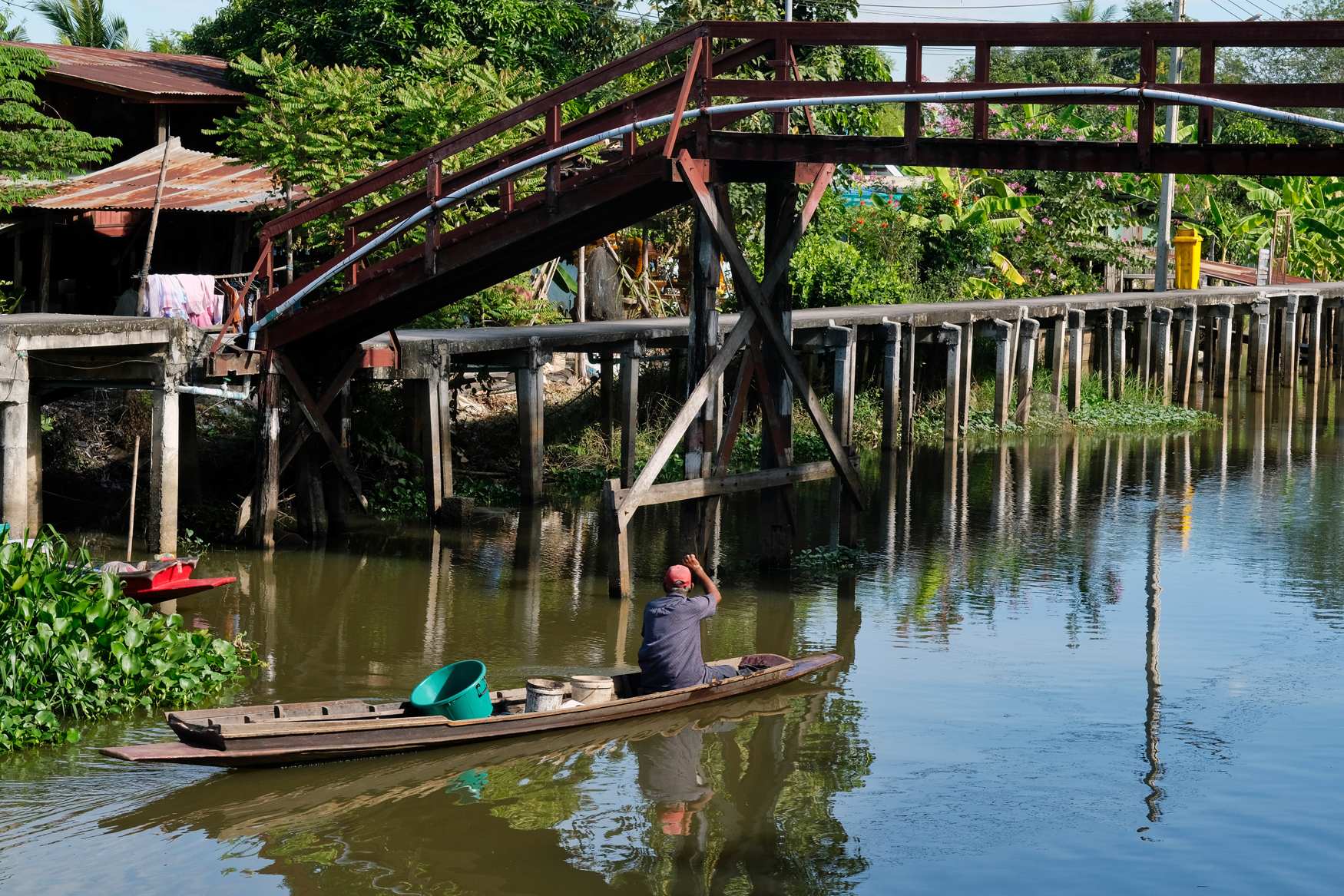 I could have stayed all day in this peaceful place . . but we moved on up the road.
I could have stayed all day in this peaceful place . . but we moved on up the road.
PART TWO: A RURAL WAT
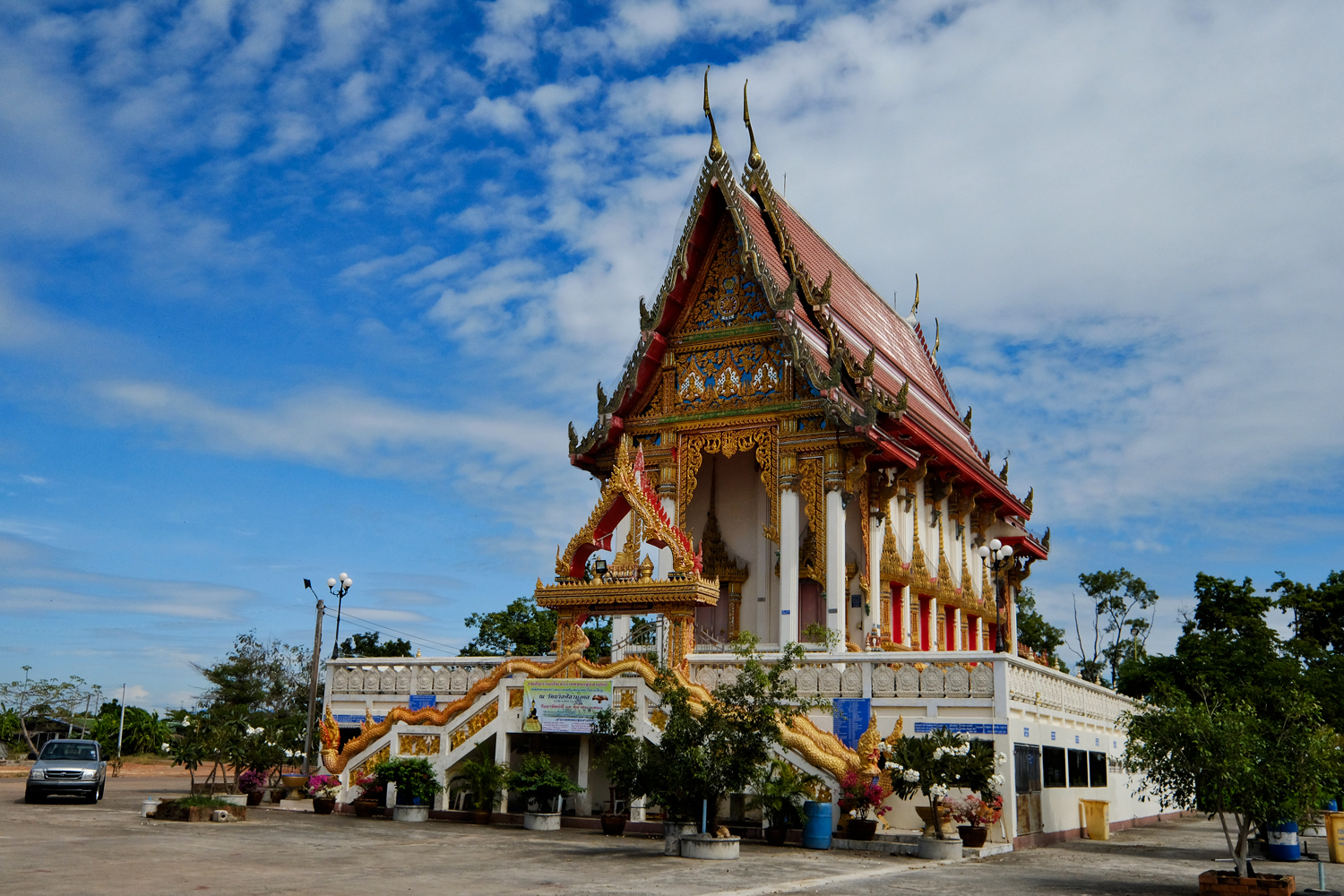 We set the GPS to the town and headed up the road . . . and missed our turn and instead discovered this wonderful Wat.
We set the GPS to the town and headed up the road . . . and missed our turn and instead discovered this wonderful Wat.
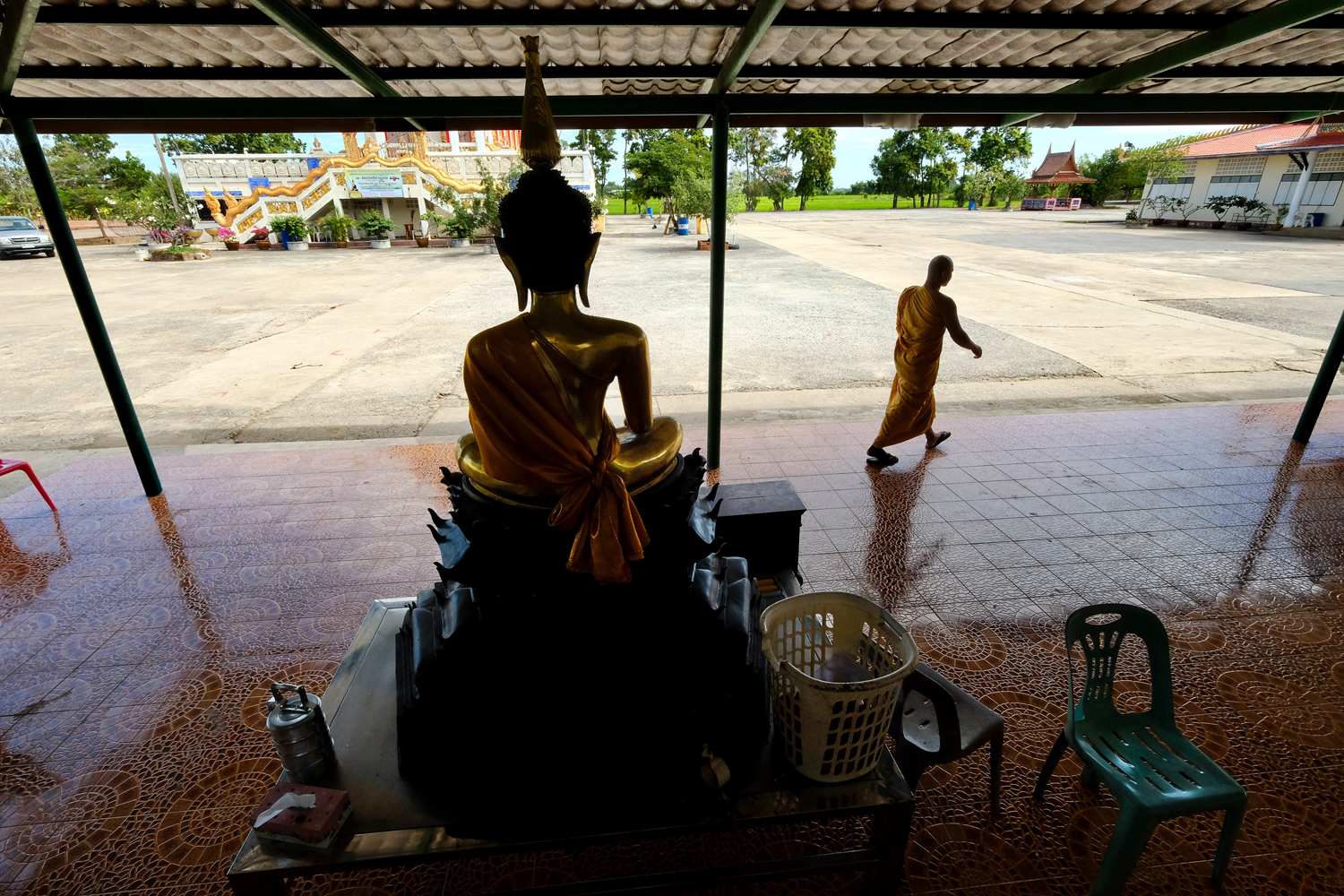 This Wat was a long way from any village or town . . . a very peaceful place.
This Wat was a long way from any village or town . . . a very peaceful place.
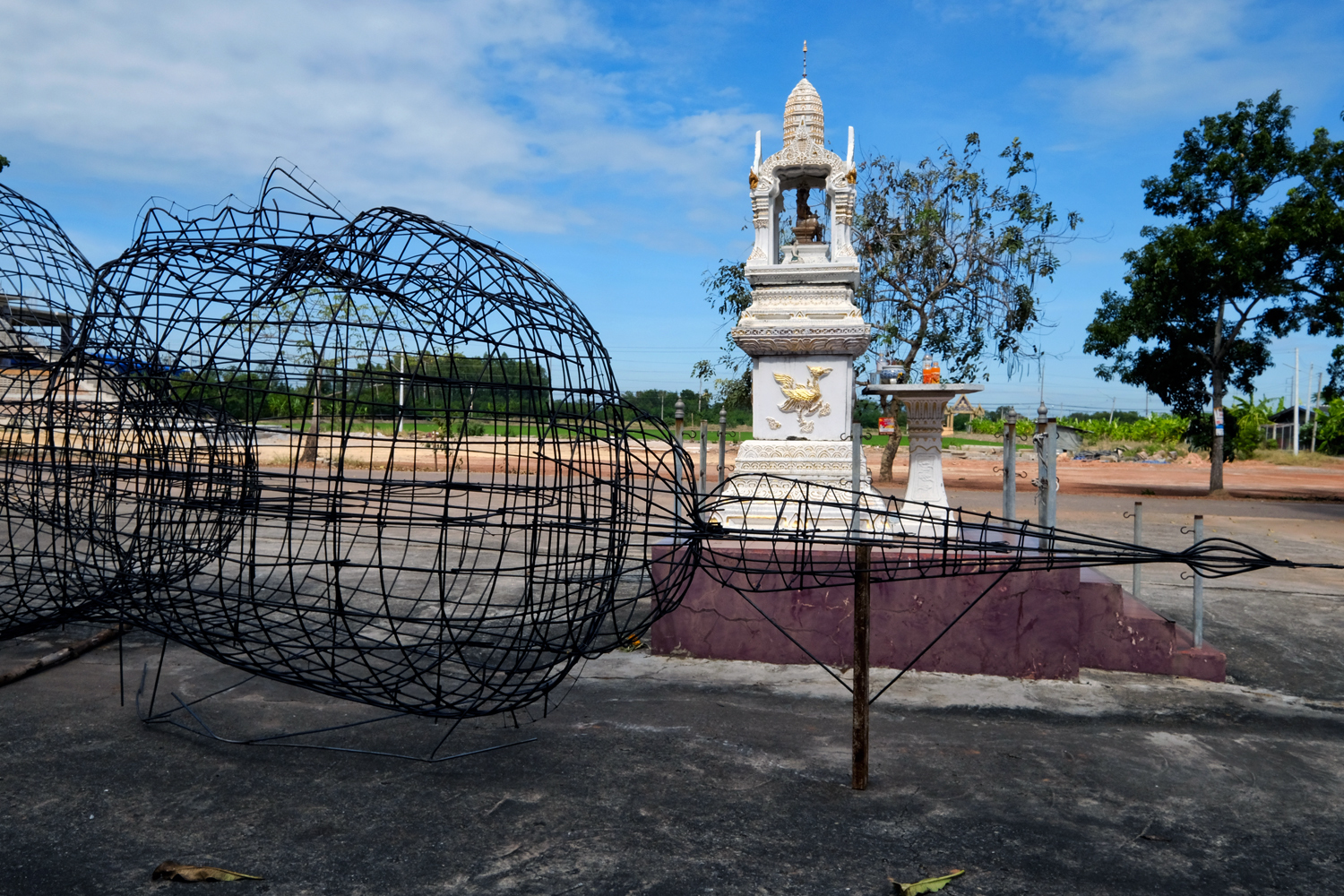 The Wat was at the beginning phase of erecting a colossal Buddha image. It was interesting to see the rebar mesh getting ready to be plastered.
The Wat was at the beginning phase of erecting a colossal Buddha image. It was interesting to see the rebar mesh getting ready to be plastered.
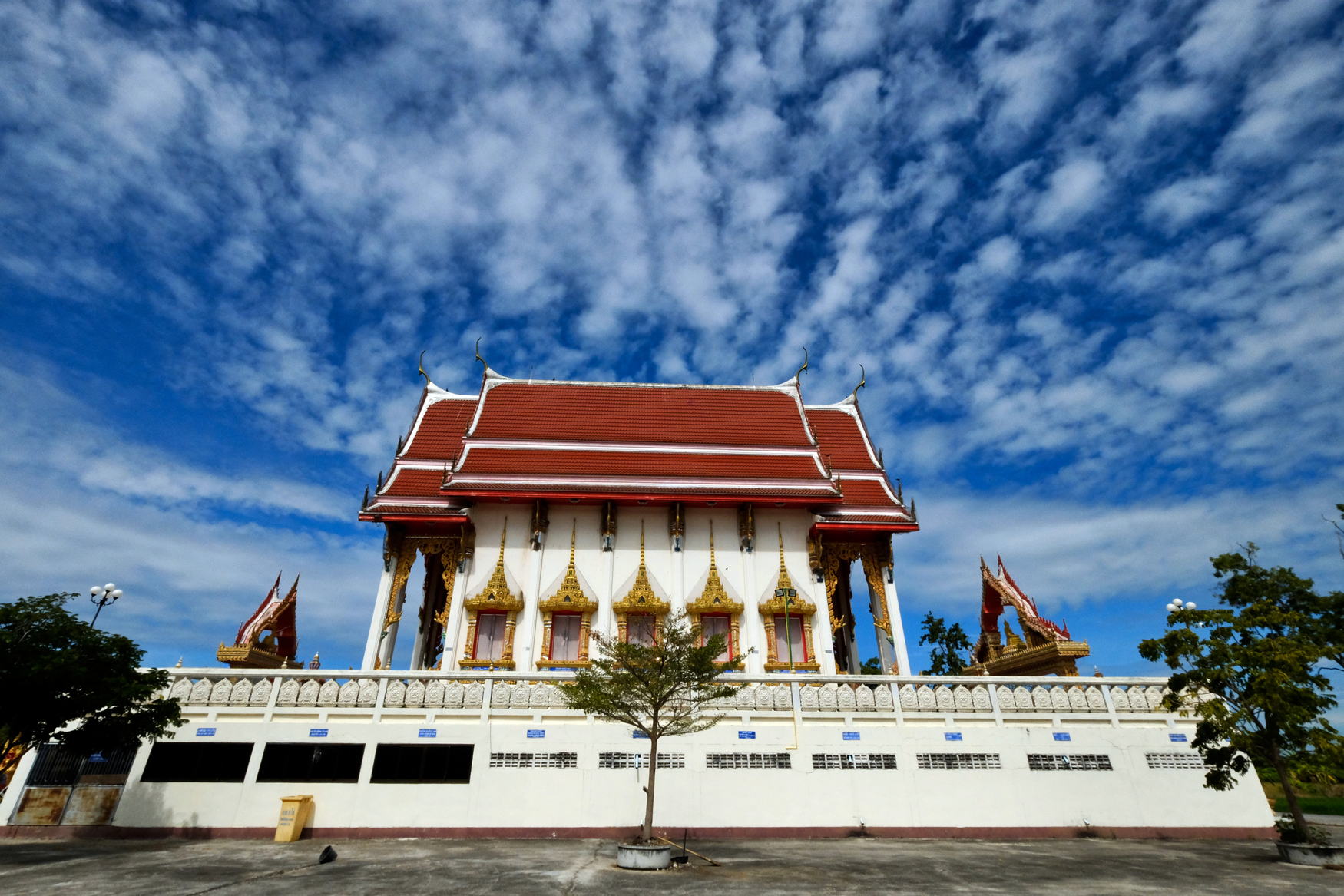 A beautiful rural wat under a giant sky. We are all so small in the scheme of things . . . if there is a scheme.
A beautiful rural wat under a giant sky. We are all so small in the scheme of things . . . if there is a scheme.
PART THREE: A CHACHOENGSAO NEIGBORHOOD WAT
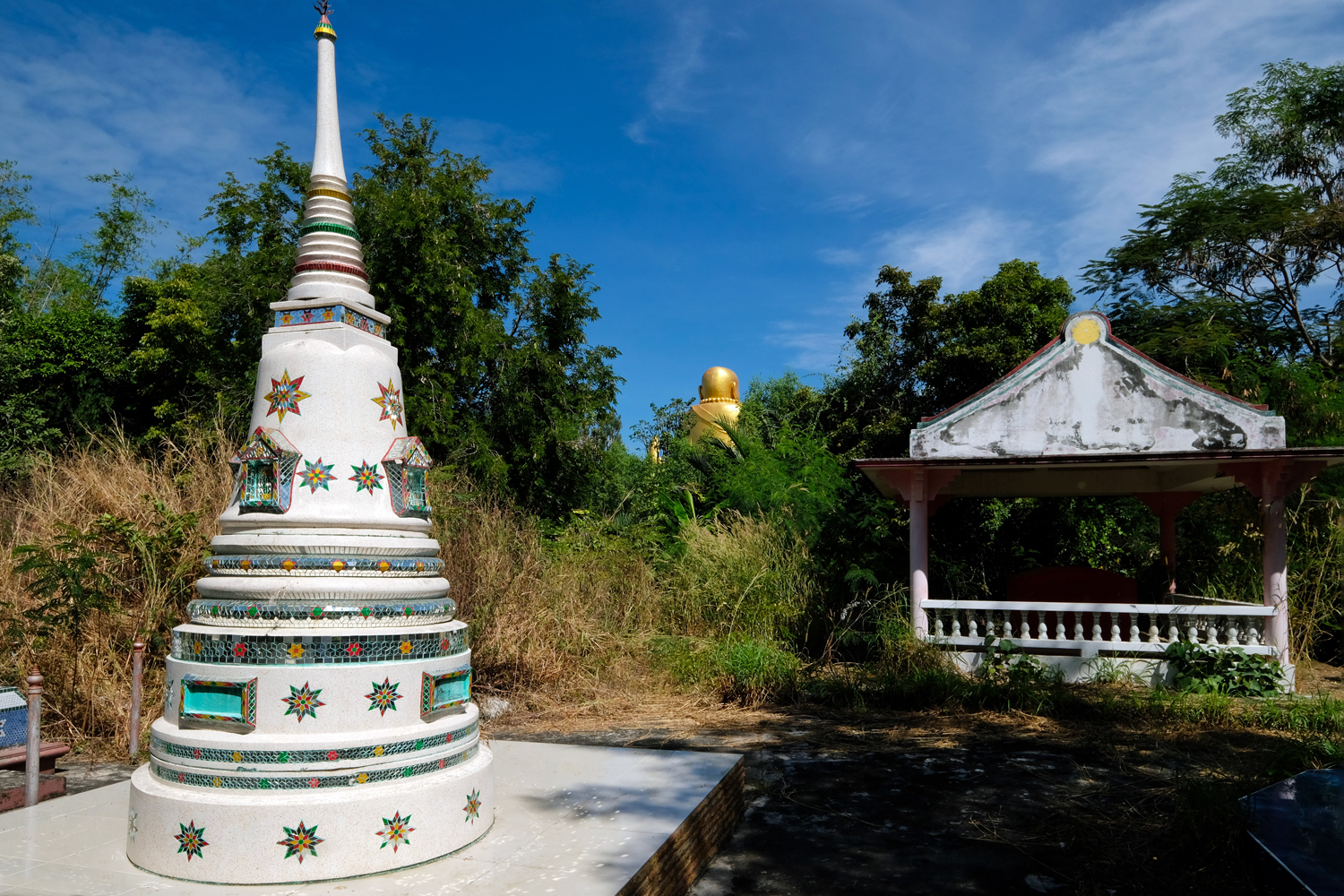 We got a little lost in the small lanes the GPS decided to send us on . . . until we spotted a giant Buddha up between the trees . . and followed an ally to where we thought it might be . . . it wasn't the 'right' Wat, but it was very interesting in its own right.
We got a little lost in the small lanes the GPS decided to send us on . . . until we spotted a giant Buddha up between the trees . . and followed an ally to where we thought it might be . . . it wasn't the 'right' Wat, but it was very interesting in its own right.
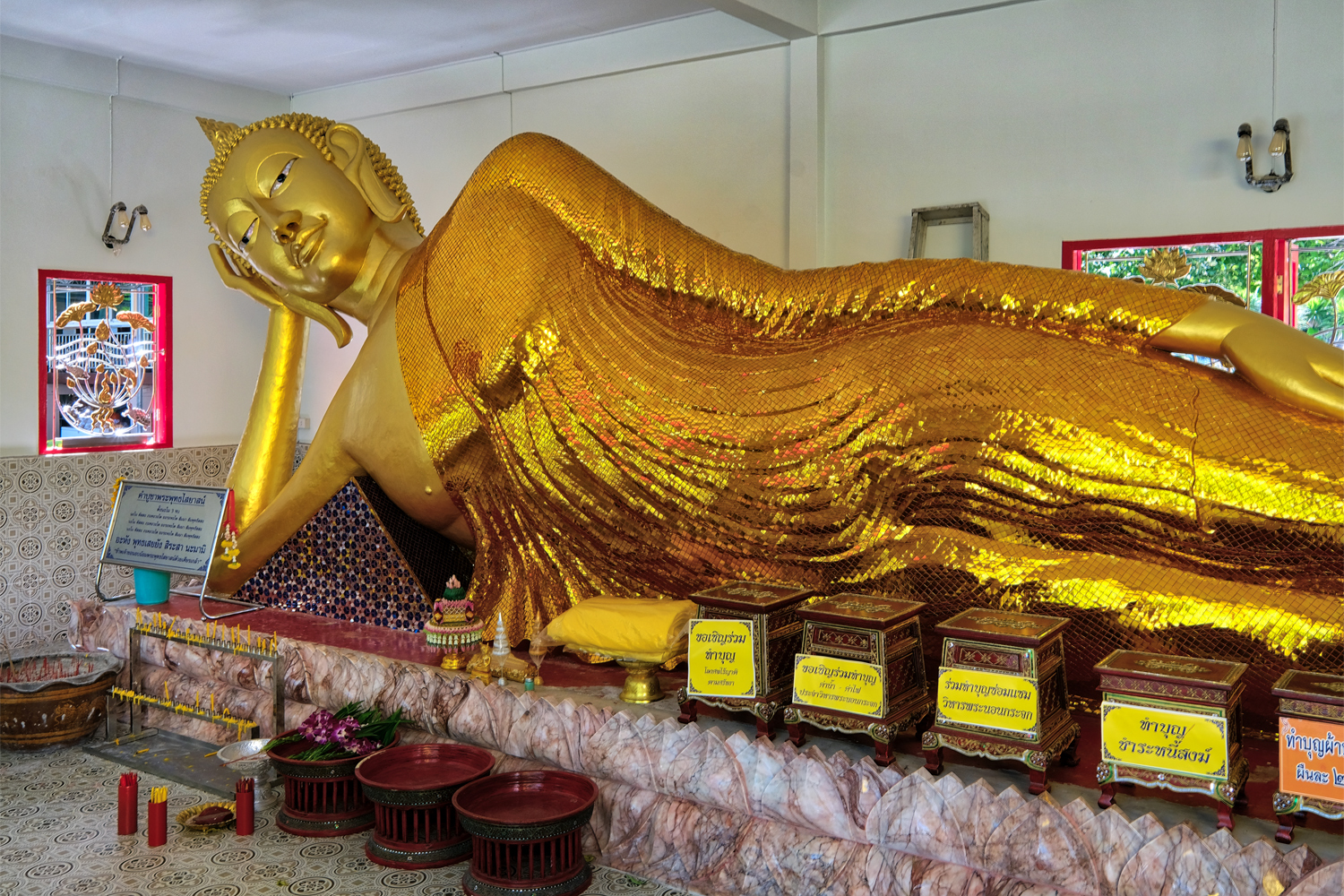 It was an interesting old wat that backed up to a klong . . . a klong that separated us from the giant Buddha we spotted from the road. We decided to walk and see if there was a bridge . . .
It was an interesting old wat that backed up to a klong . . . a klong that separated us from the giant Buddha we spotted from the road. We decided to walk and see if there was a bridge . . .
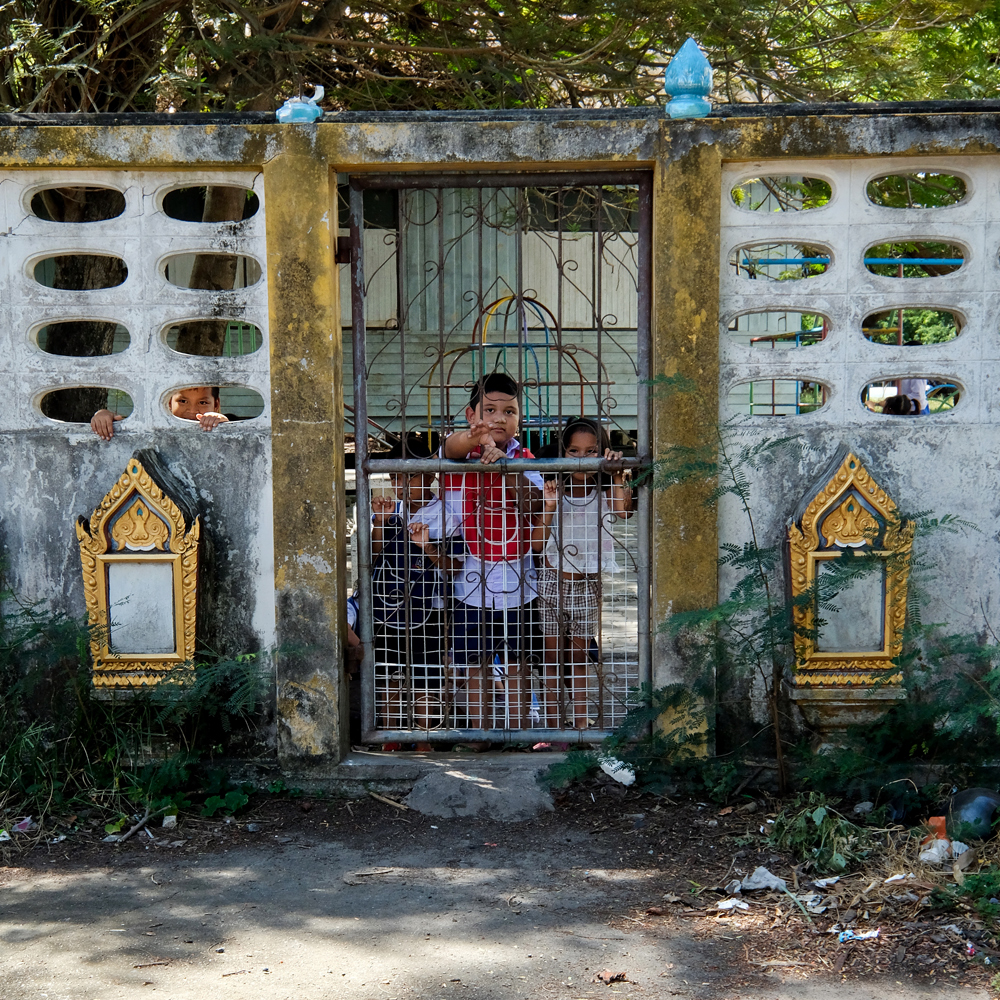 Our walk took us through a cemetery next door to a school.
Our walk took us through a cemetery next door to a school.
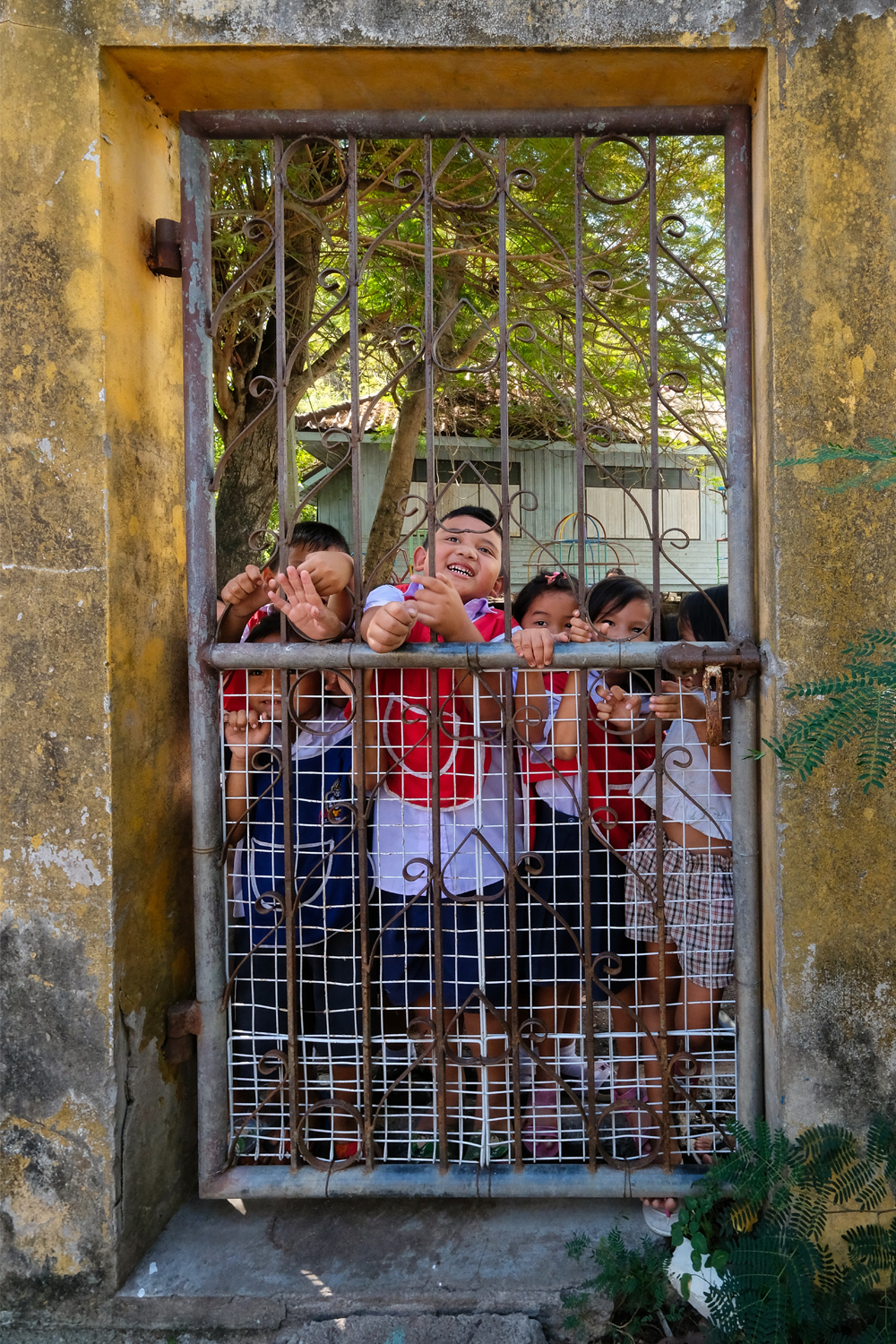 The school kids found us very interesting.
The school kids found us very interesting.
 My first thought was . . . this is what happens if you let your granddaughter choose your crypt color . . . you get a pink crypt!
My first thought was . . . this is what happens if you let your granddaughter choose your crypt color . . . you get a pink crypt!
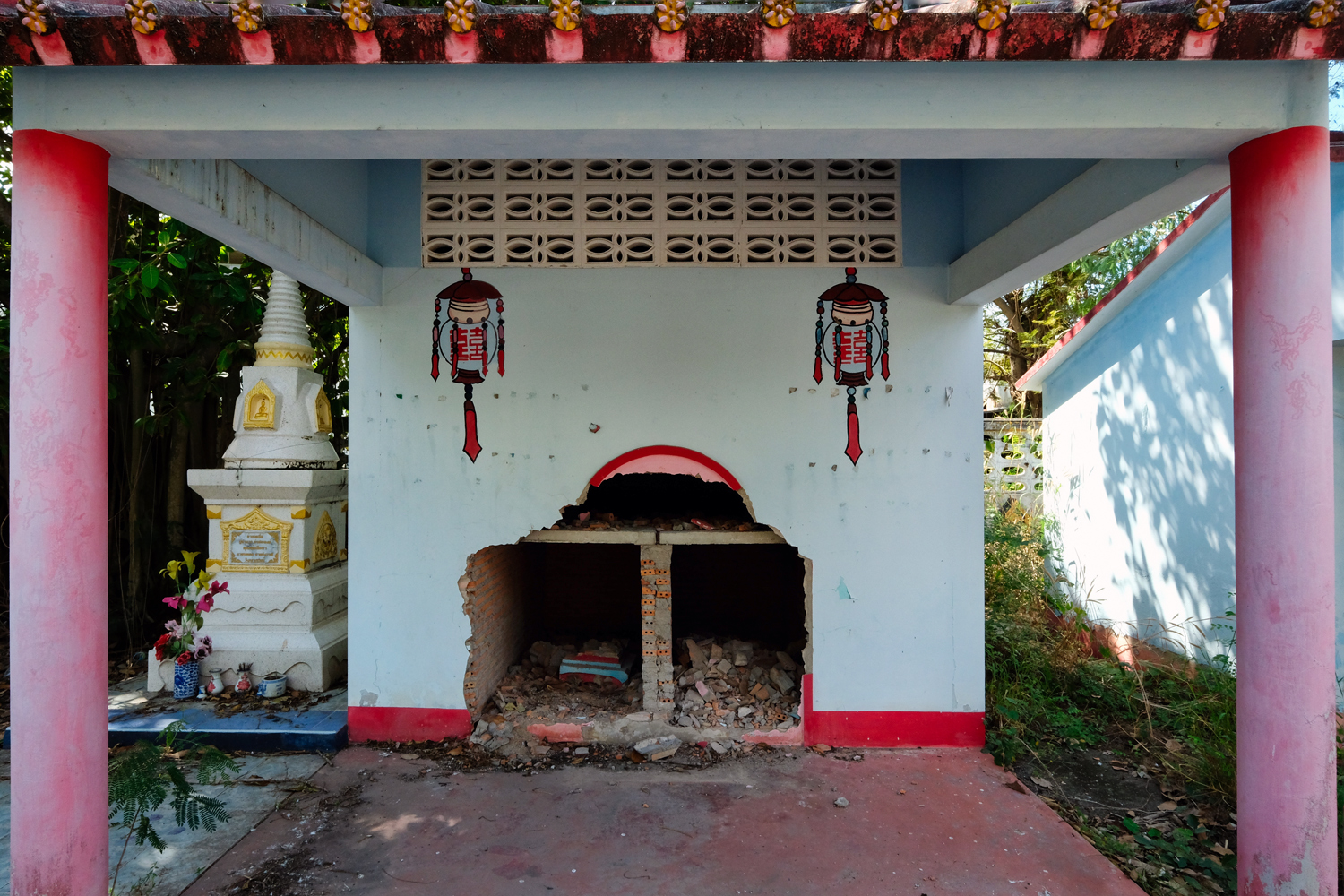 I asked John if he thought someone had busted into these crypts . . . or busted out? He said he didn't want to think about that.
I asked John if he thought someone had busted into these crypts . . . or busted out? He said he didn't want to think about that.
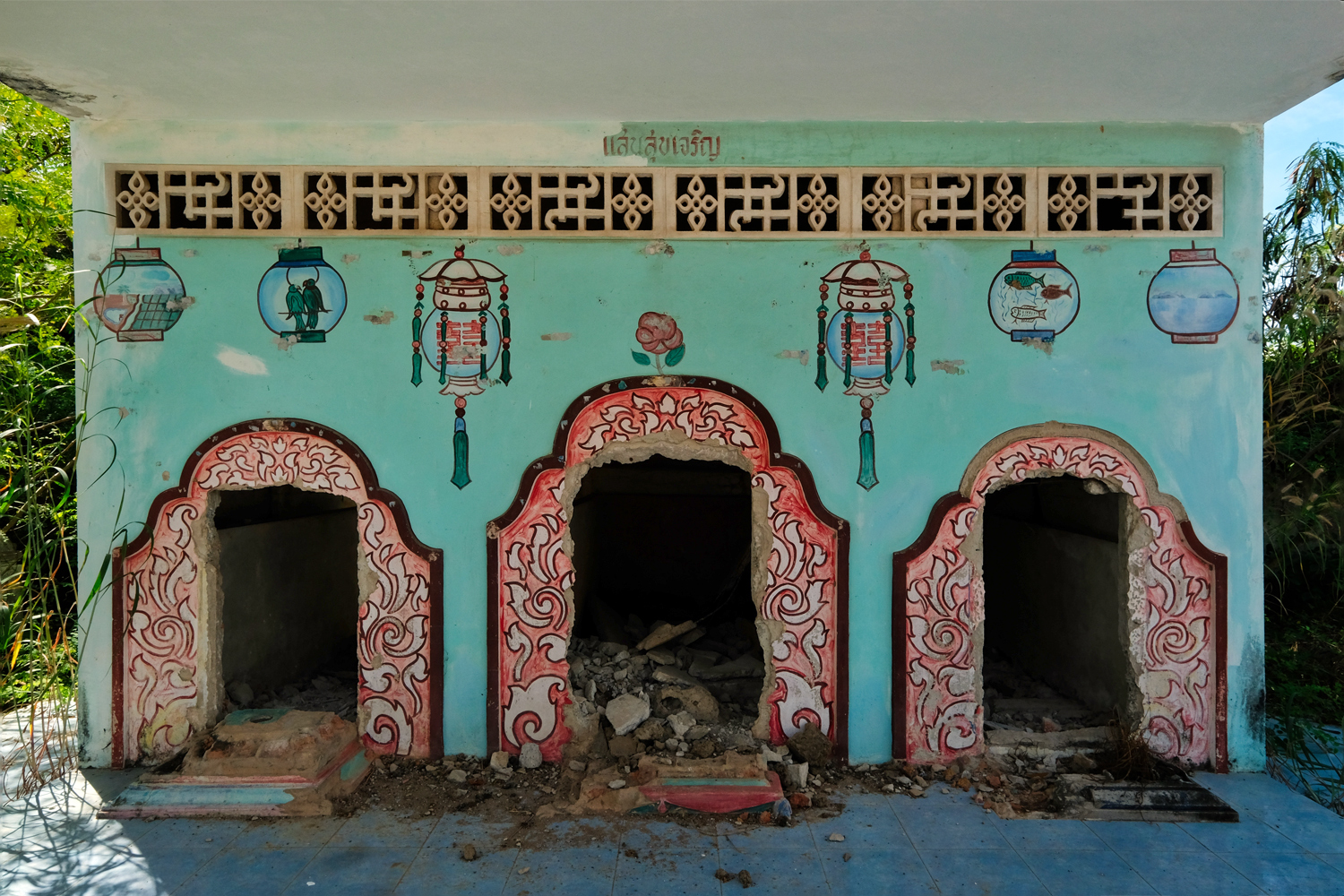 I speculated that a family had gone 'upscale' with their ancestor burials . . . meaning they came into some money, or moved from the area, and wanted to move the Dearly Departed to a new grave site. I hope I'm right.
I speculated that a family had gone 'upscale' with their ancestor burials . . . meaning they came into some money, or moved from the area, and wanted to move the Dearly Departed to a new grave site. I hope I'm right.
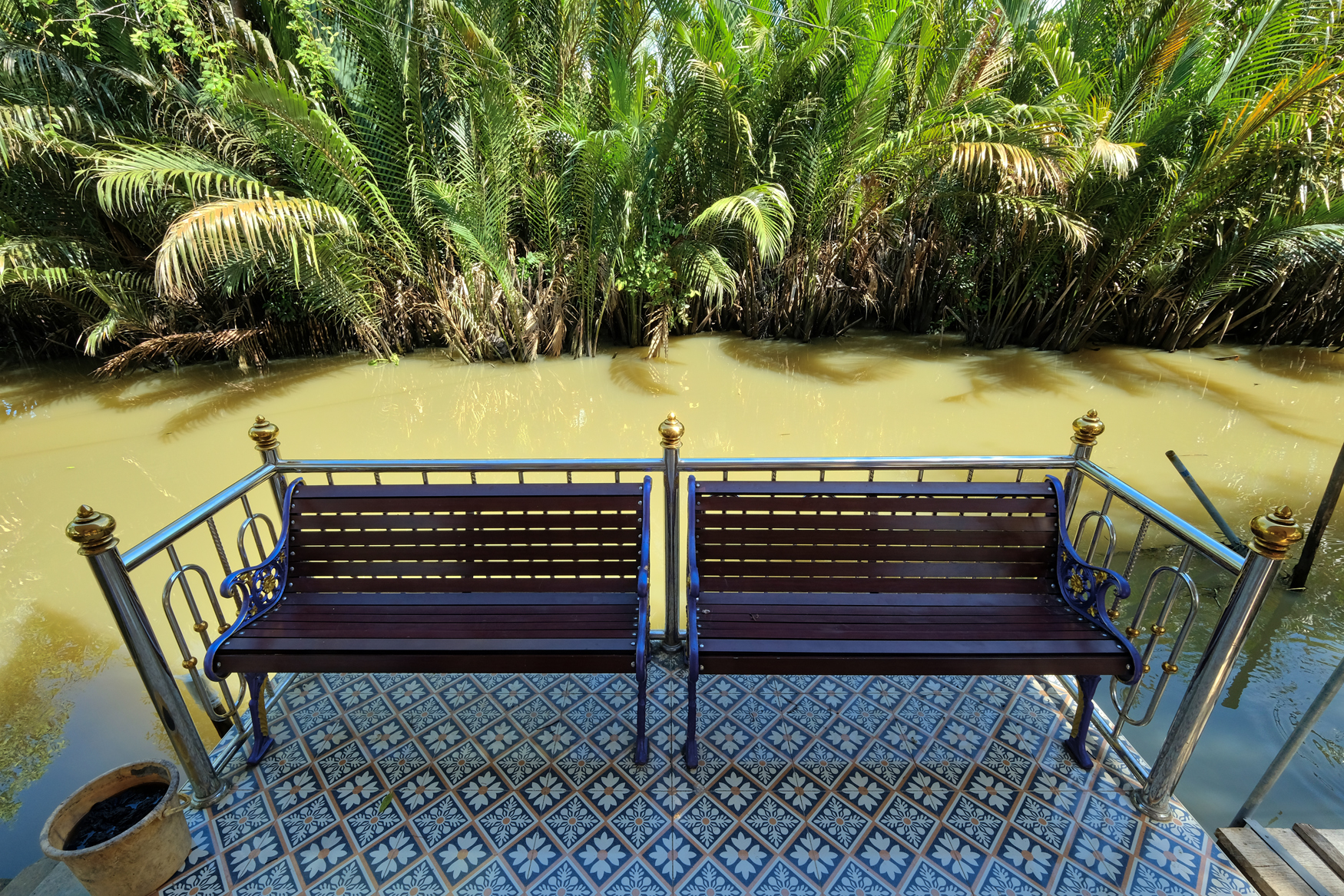 We didn't find a bridge over to the giant Buddha, but we did find some beautiful scenes.
We didn't find a bridge over to the giant Buddha, but we did find some beautiful scenes.
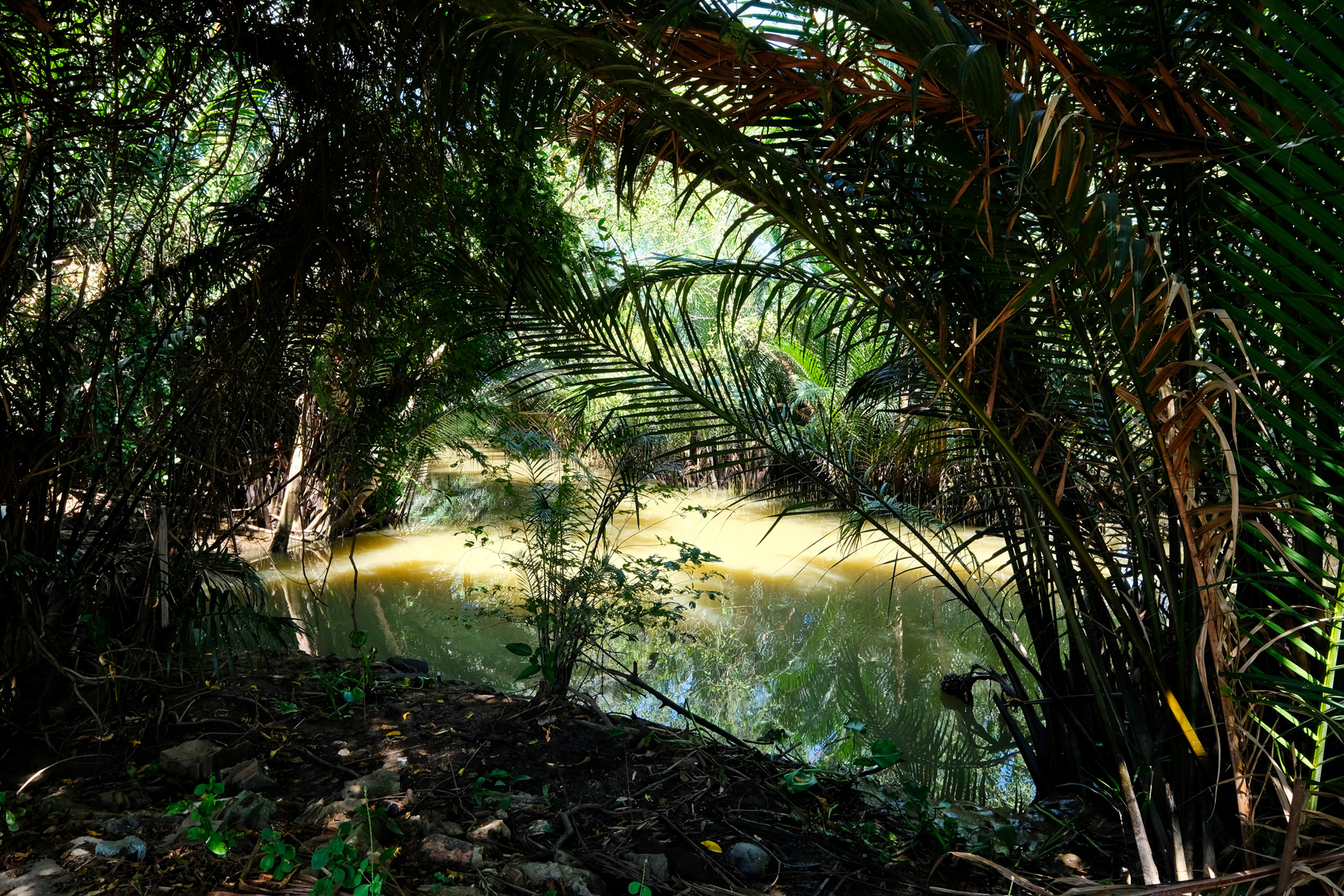 There was no way through the swamp to the other side.
There was no way through the swamp to the other side.
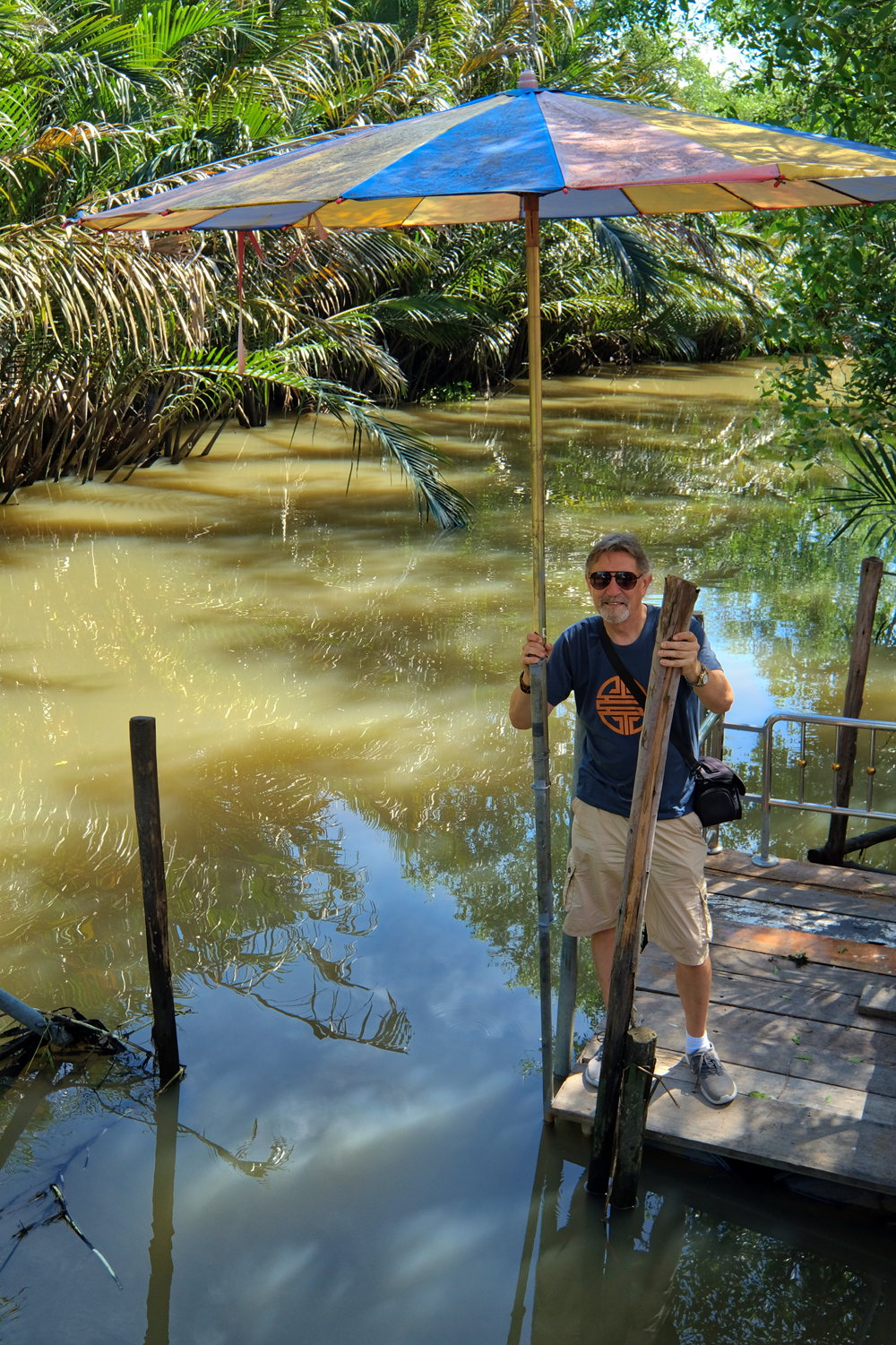 So, John and I decided to get in my truck and see if we couldn't find the giant Buddha.
So, John and I decided to get in my truck and see if we couldn't find the giant Buddha.
PART FOUR: CHINESE CULTURAL CENTER
 At last! We found the Chinese Cultural Center . . . just opened last year . . . and brand spanking new. Beautiful!
At last! We found the Chinese Cultural Center . . . just opened last year . . . and brand spanking new. Beautiful!
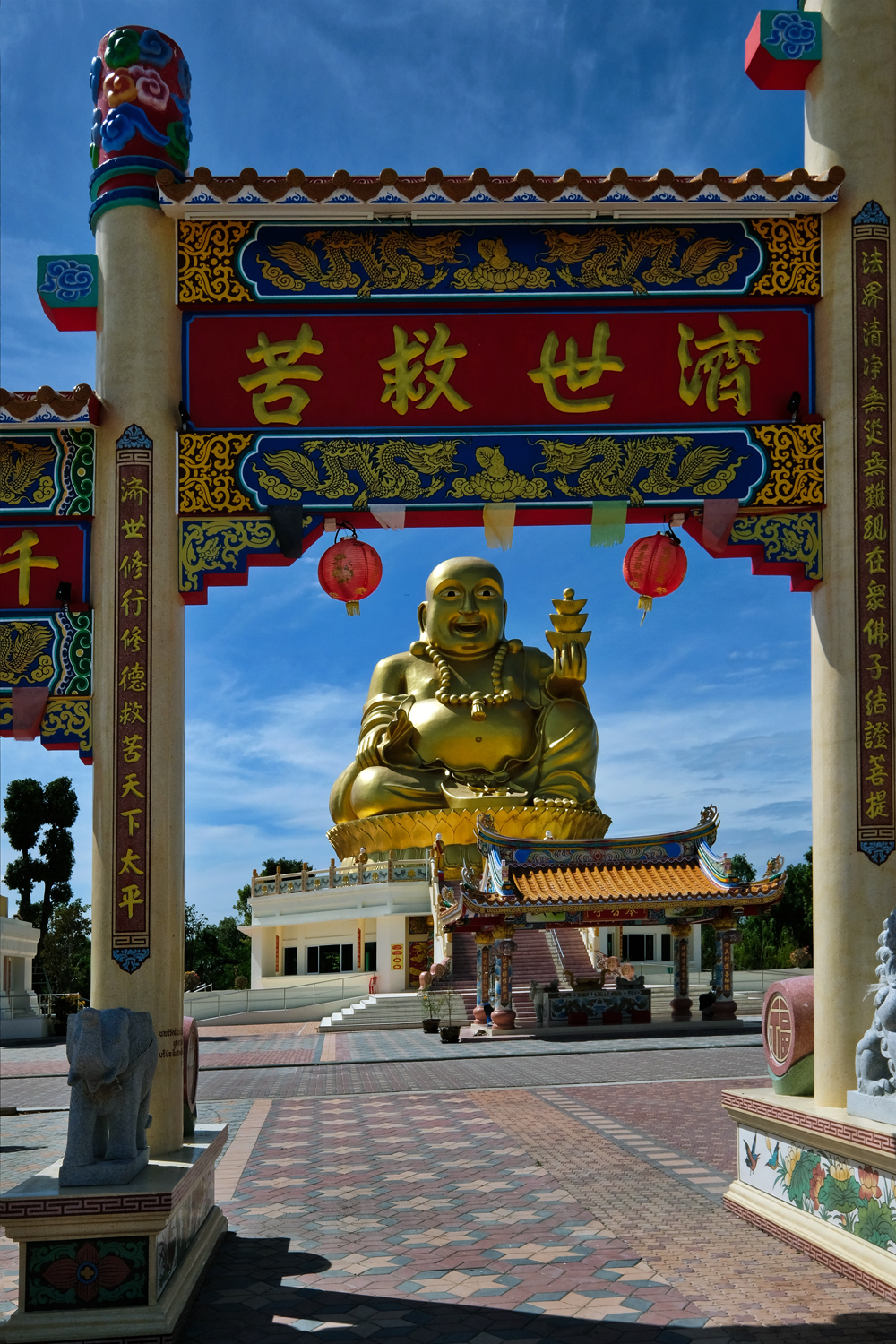 We paid a small donation and a guide took us around to the various altars and showed us the ropes.
We paid a small donation and a guide took us around to the various altars and showed us the ropes.
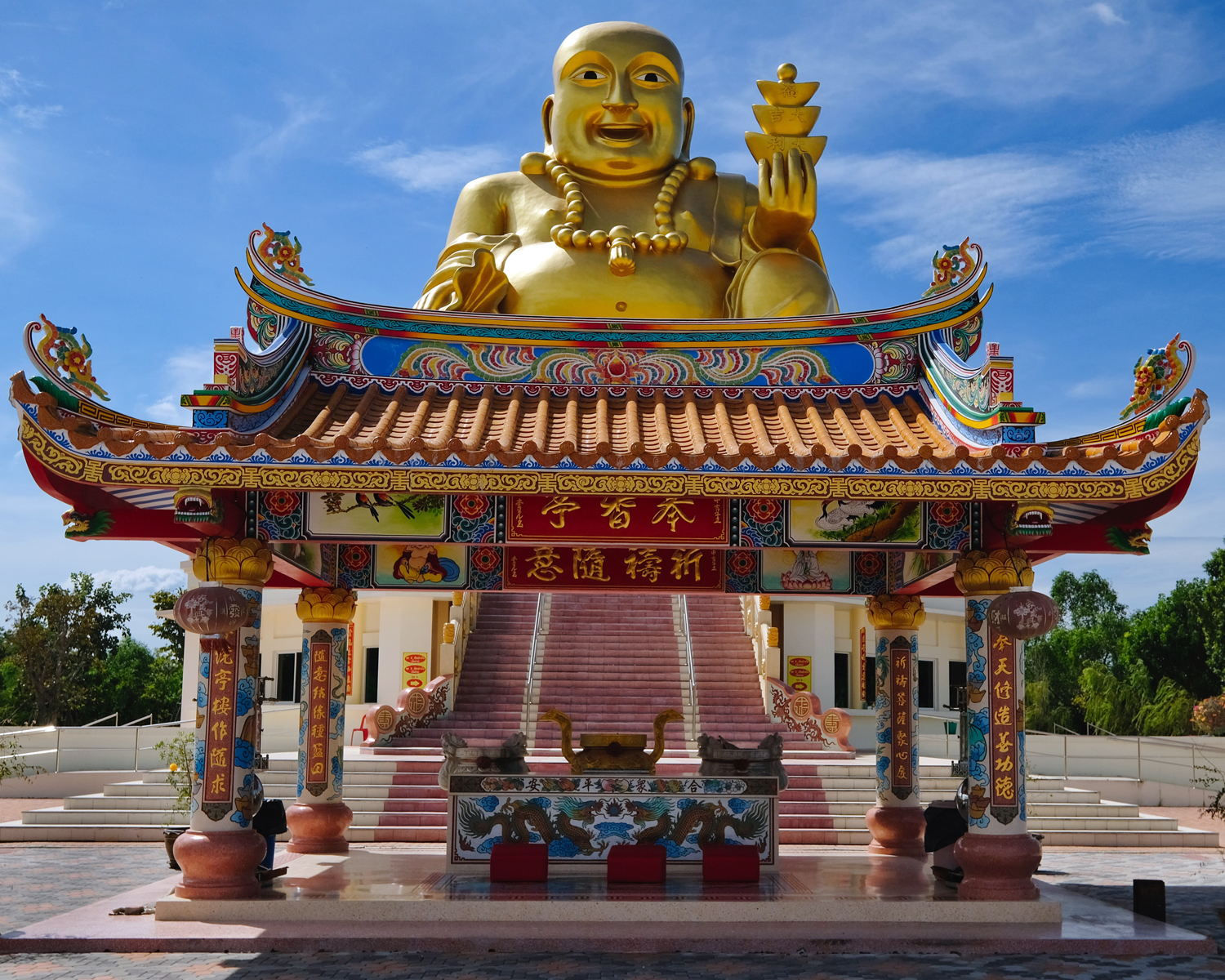 Gorgeous colossal statuary.
Gorgeous colossal statuary.
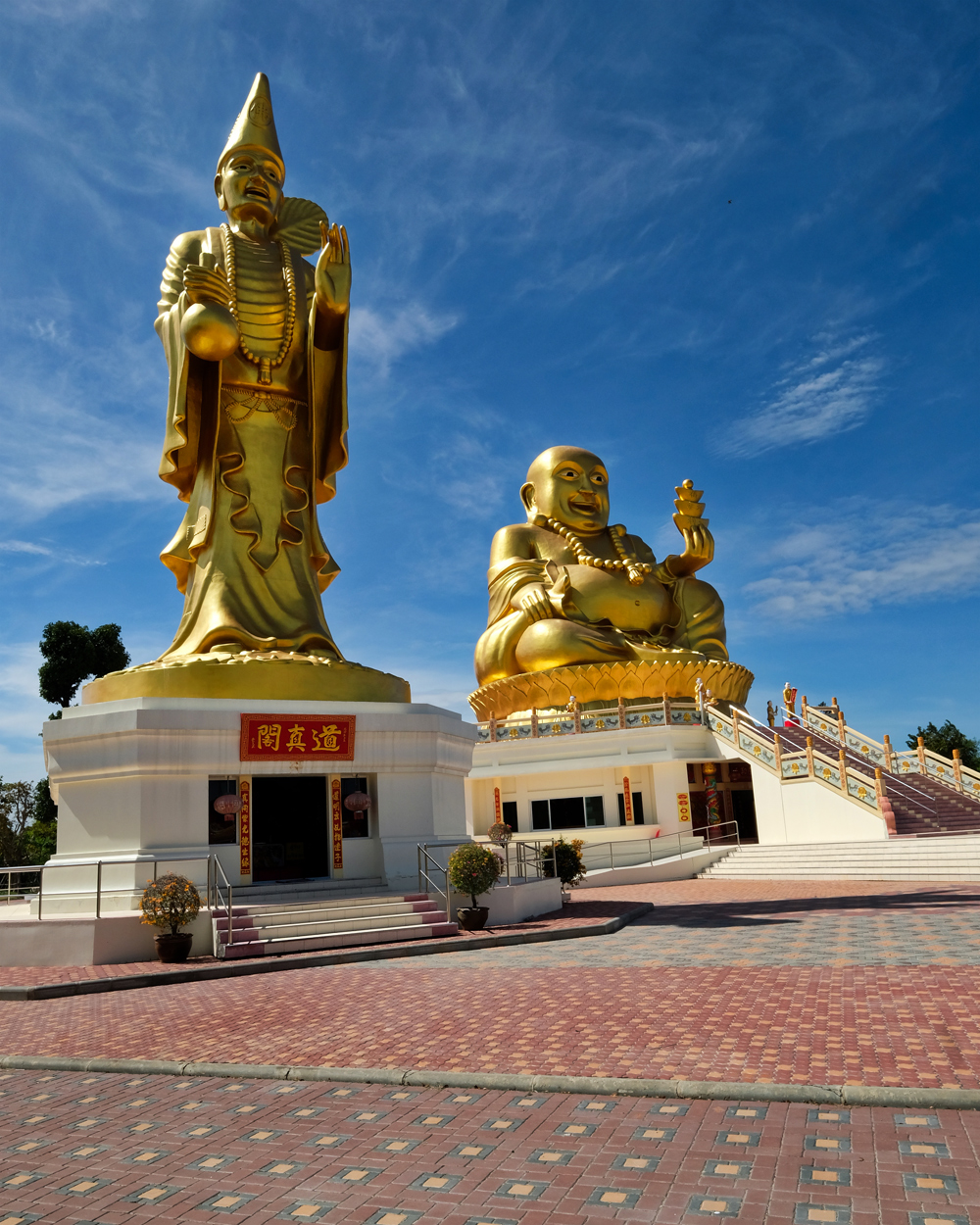 I was especially excited about this temple because I am a follower and admirer of my old buddy Ji Gong, the idiosyncratic Chinese monk who was a defender of the weak against injustice.
I was especially excited about this temple because I am a follower and admirer of my old buddy Ji Gong, the idiosyncratic Chinese monk who was a defender of the weak against injustice.
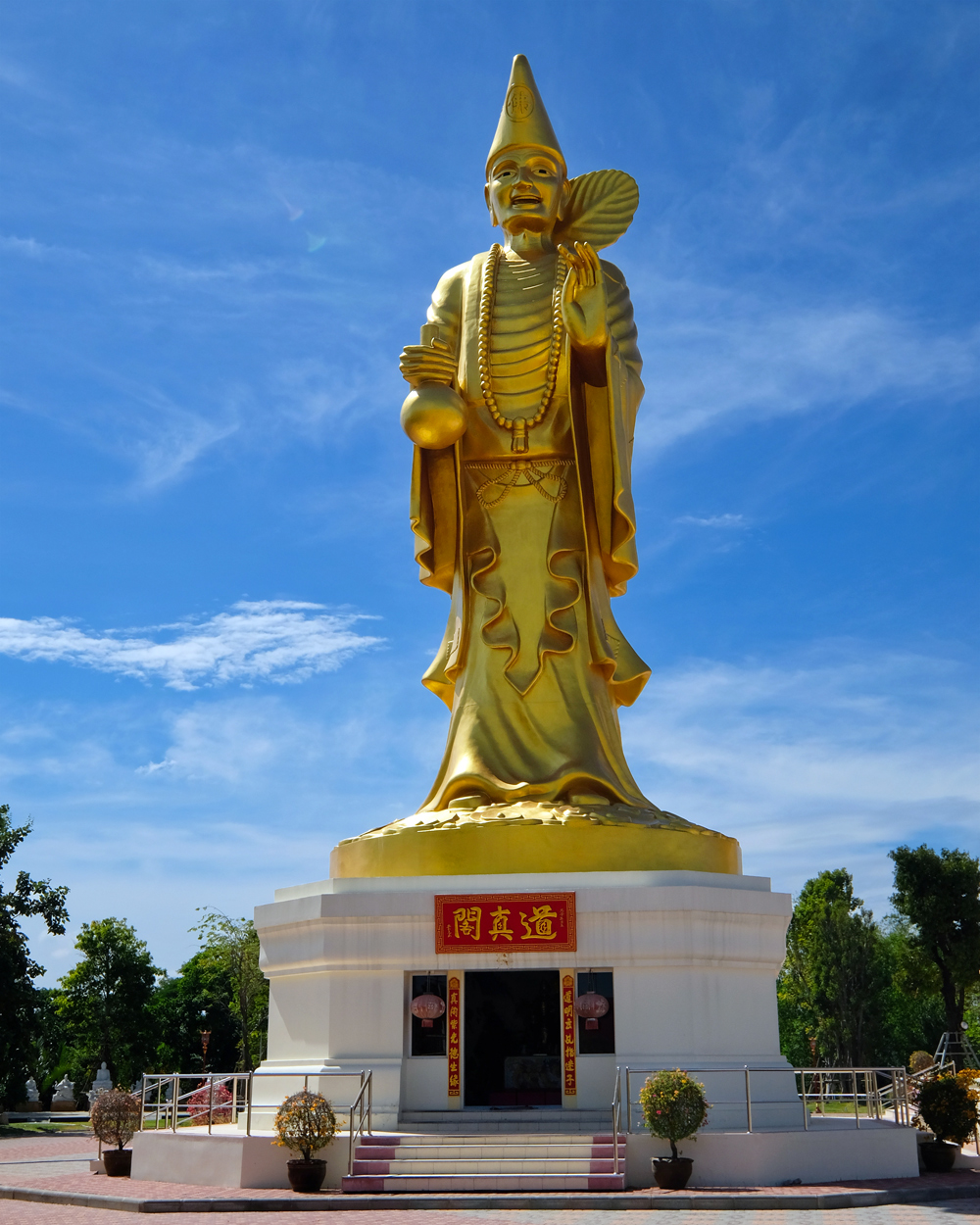 Ji Gong, my old buddy. (Ask me why I always say 'my old buddy' when I mention Ji Gong next time we meet.)
Ji Gong, my old buddy. (Ask me why I always say 'my old buddy' when I mention Ji Gong next time we meet.)
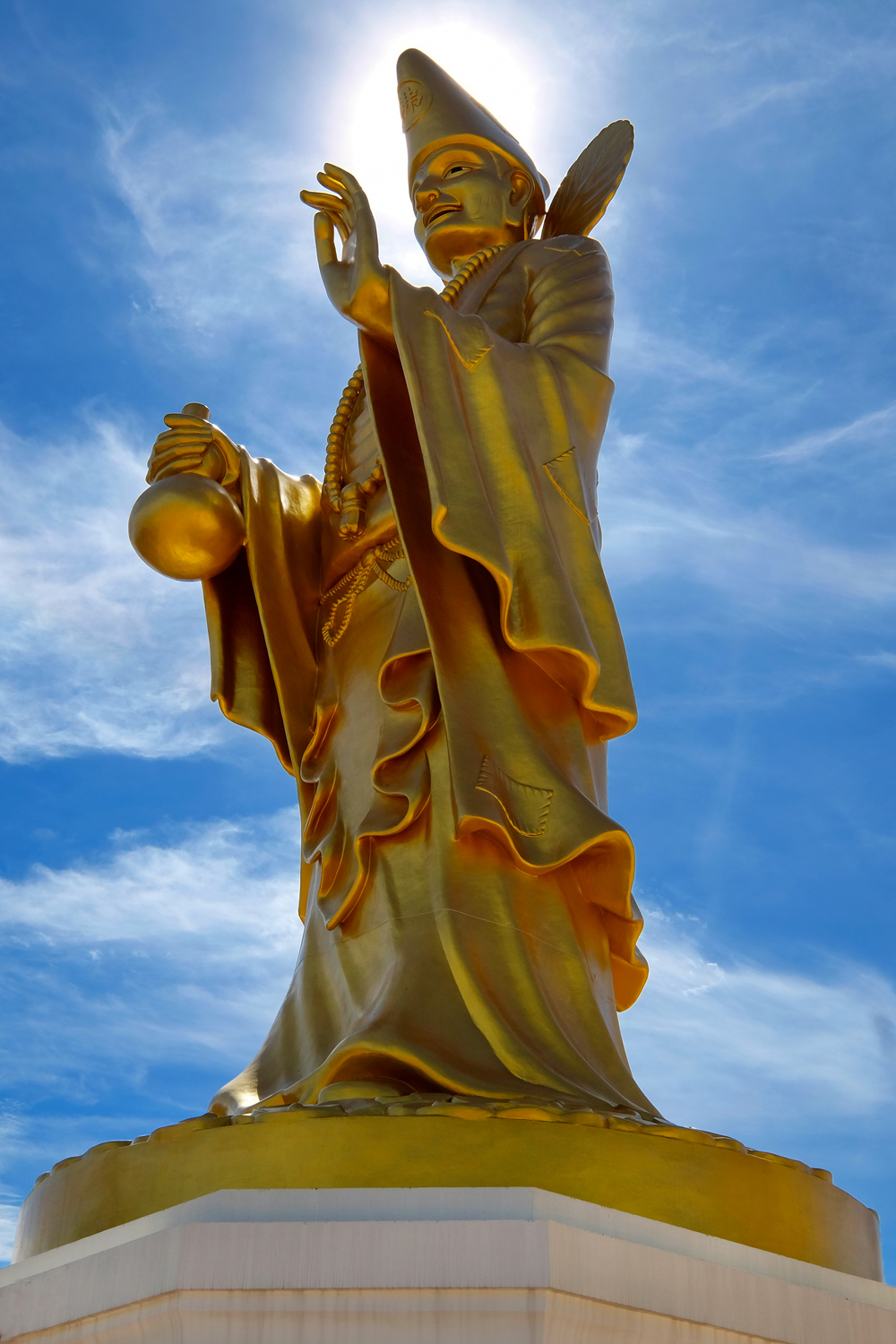 My old buddy, Ji Gong.
My old buddy, Ji Gong.
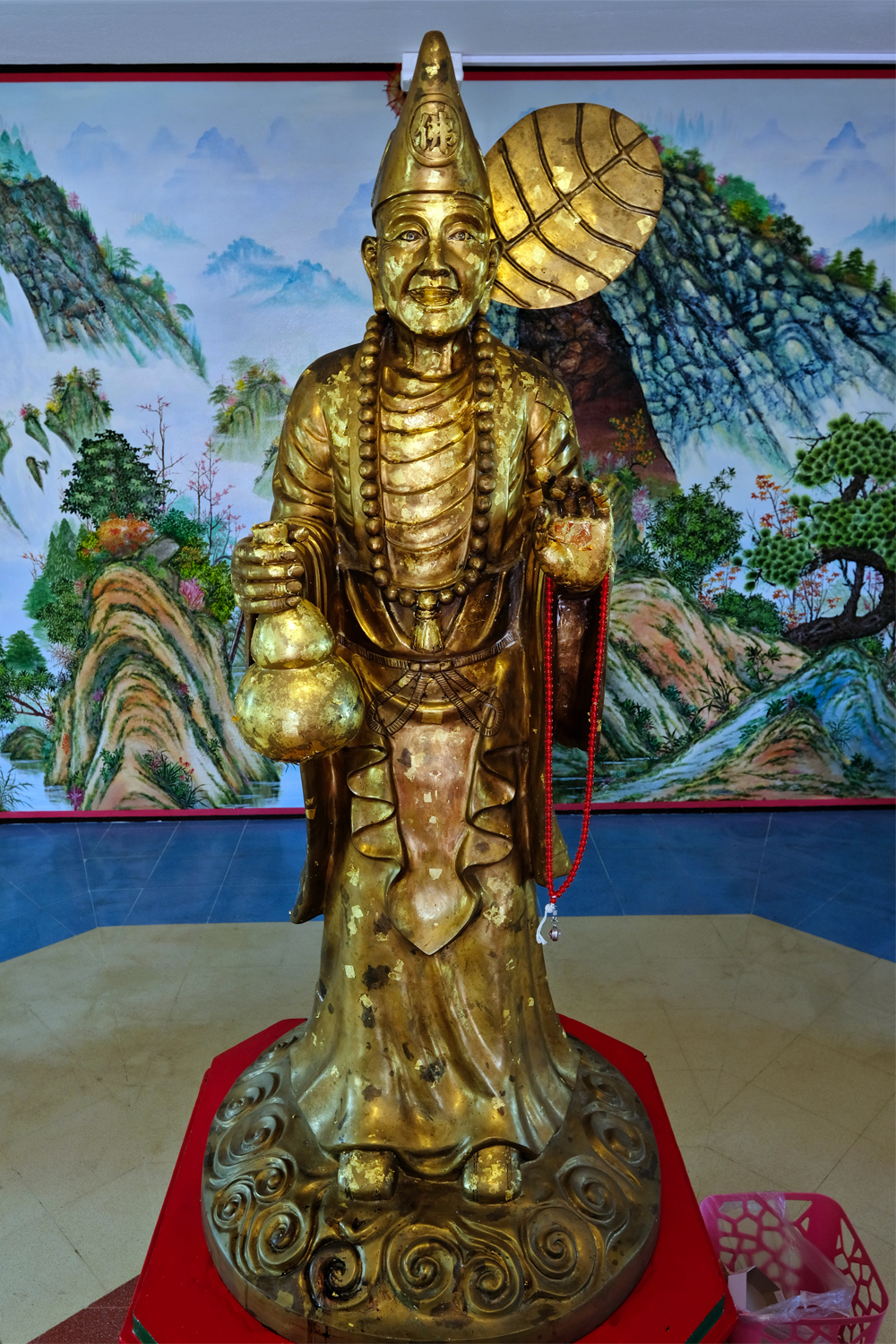 I went into the Ji Gong shrine at the base of the giant statue and paid my respects.
I went into the Ji Gong shrine at the base of the giant statue and paid my respects.
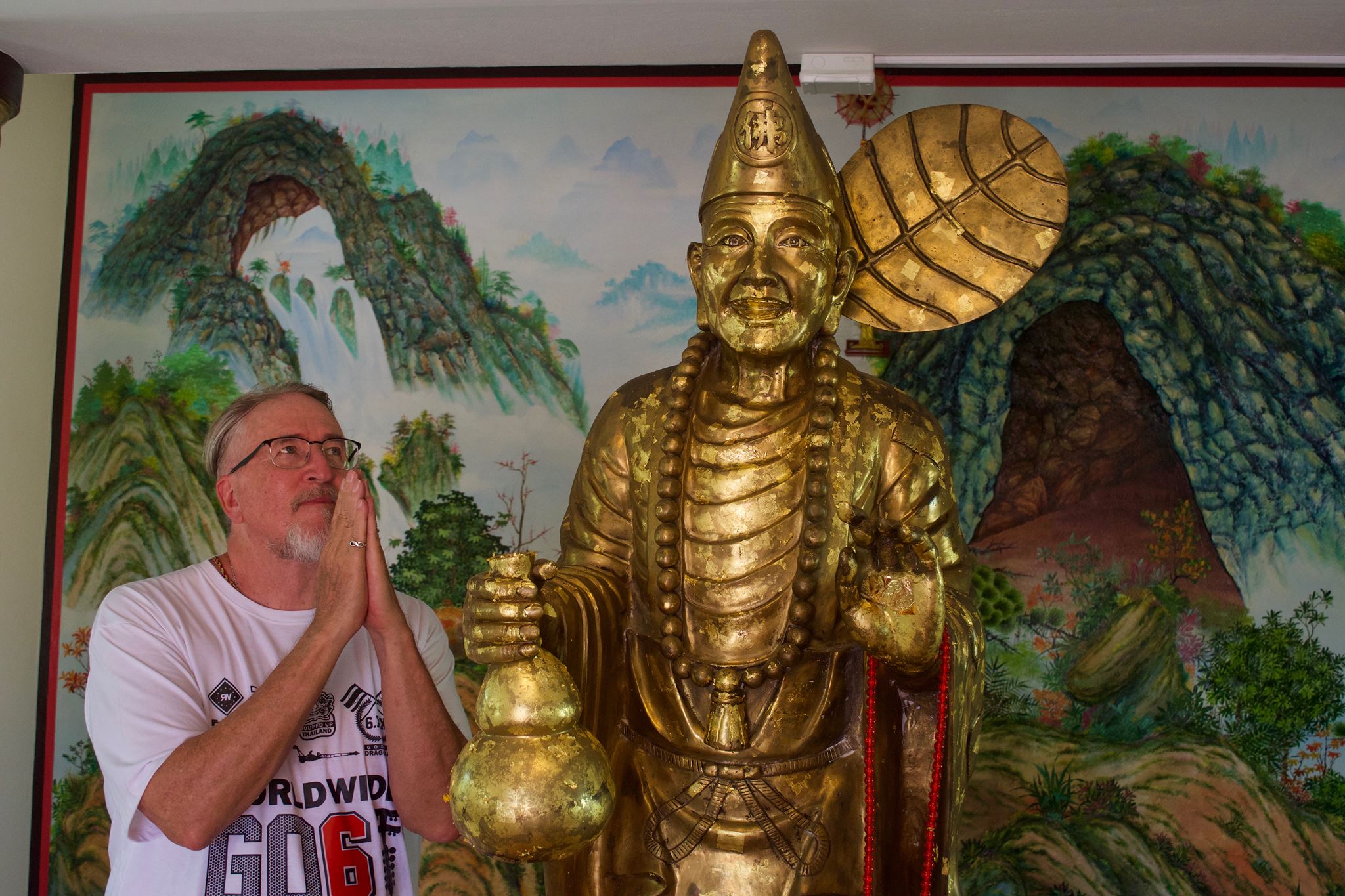 Showing respect to my old buddy, Ji Gong.
Showing respect to my old buddy, Ji Gong.
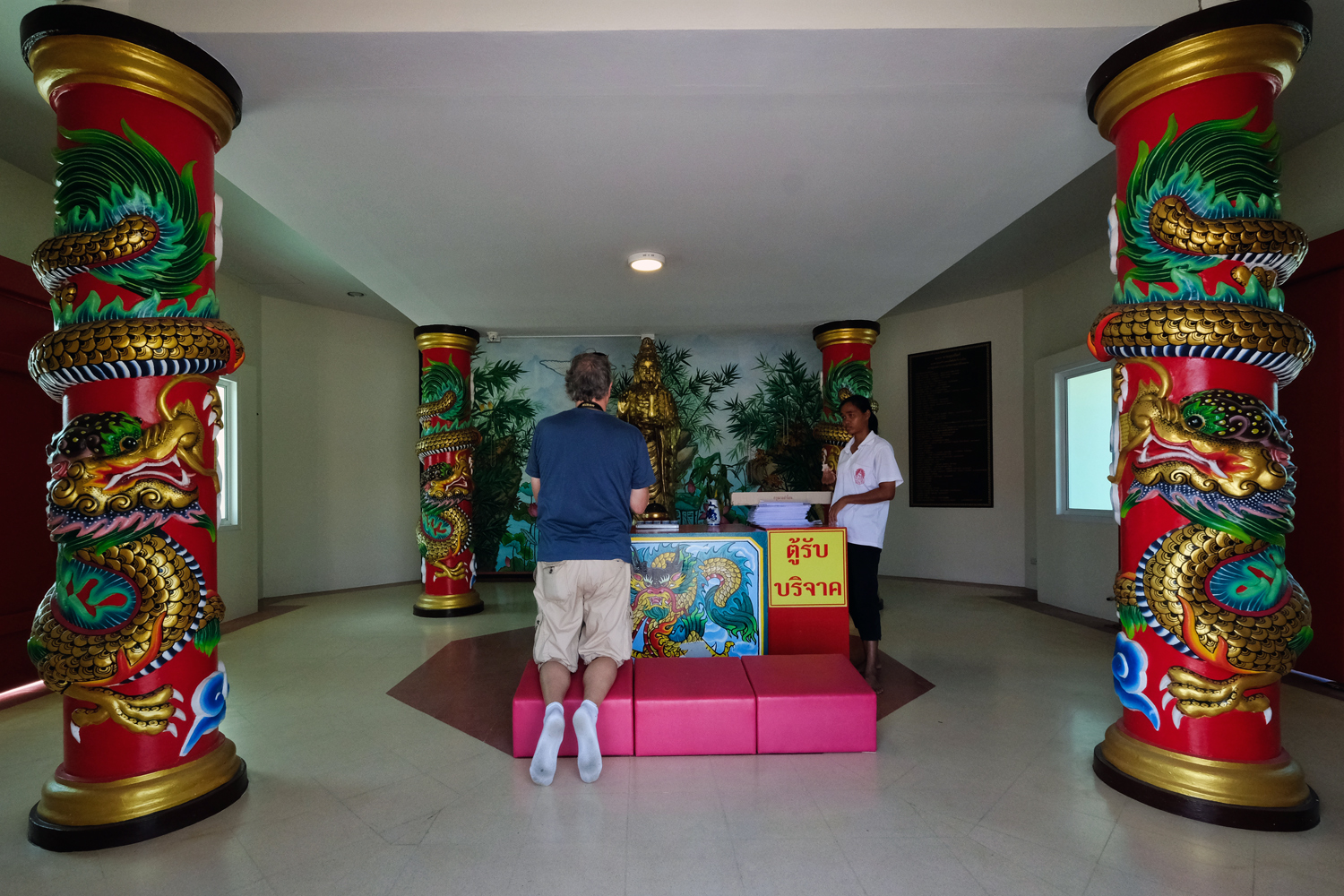 The guide showing John the proper ceremonial details.
The guide showing John the proper ceremonial details.
 I go to many Chinese religious temples in Bangkok, but this was not an old temple as I as used to . . . it was brand new!
I go to many Chinese religious temples in Bangkok, but this was not an old temple as I as used to . . . it was brand new!
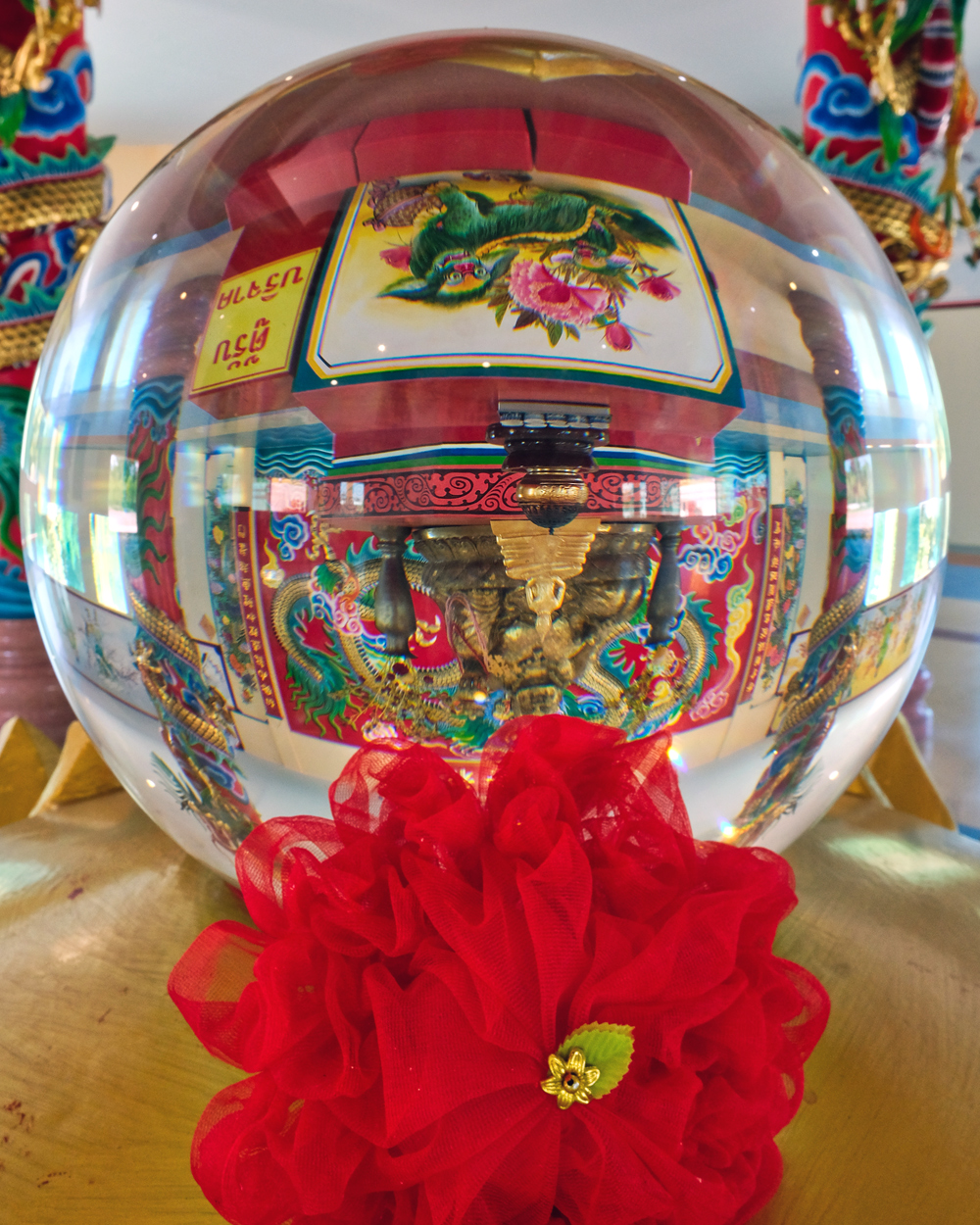 Fascinating images inside the shrines.
Fascinating images inside the shrines.
 Temple Buddhas.
Temple Buddhas.
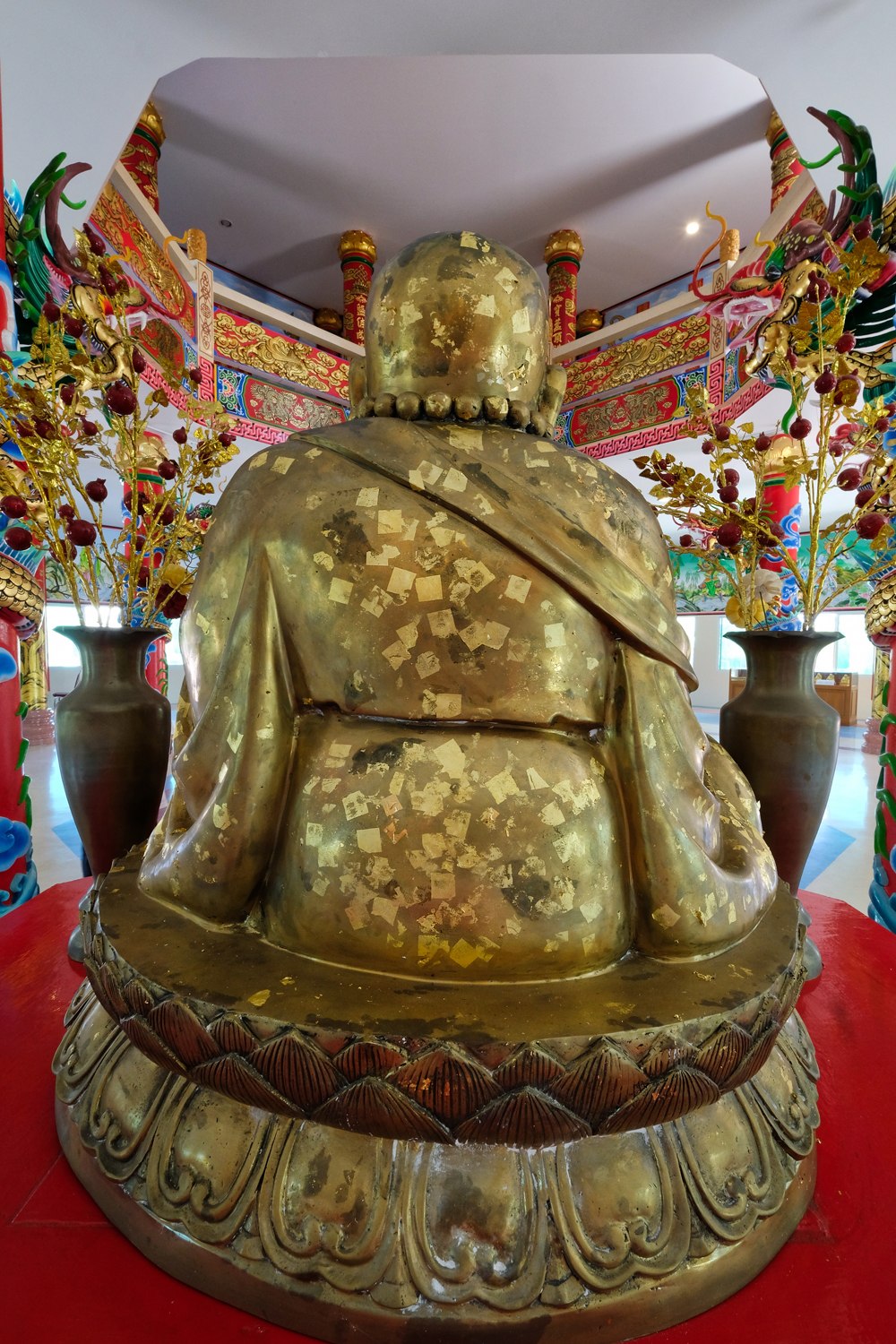 The back of a temple Buddha. John and I placed a square of gold onto several Buddhas here . . . they were included in the cost of the donation.
The back of a temple Buddha. John and I placed a square of gold onto several Buddhas here . . . they were included in the cost of the donation.
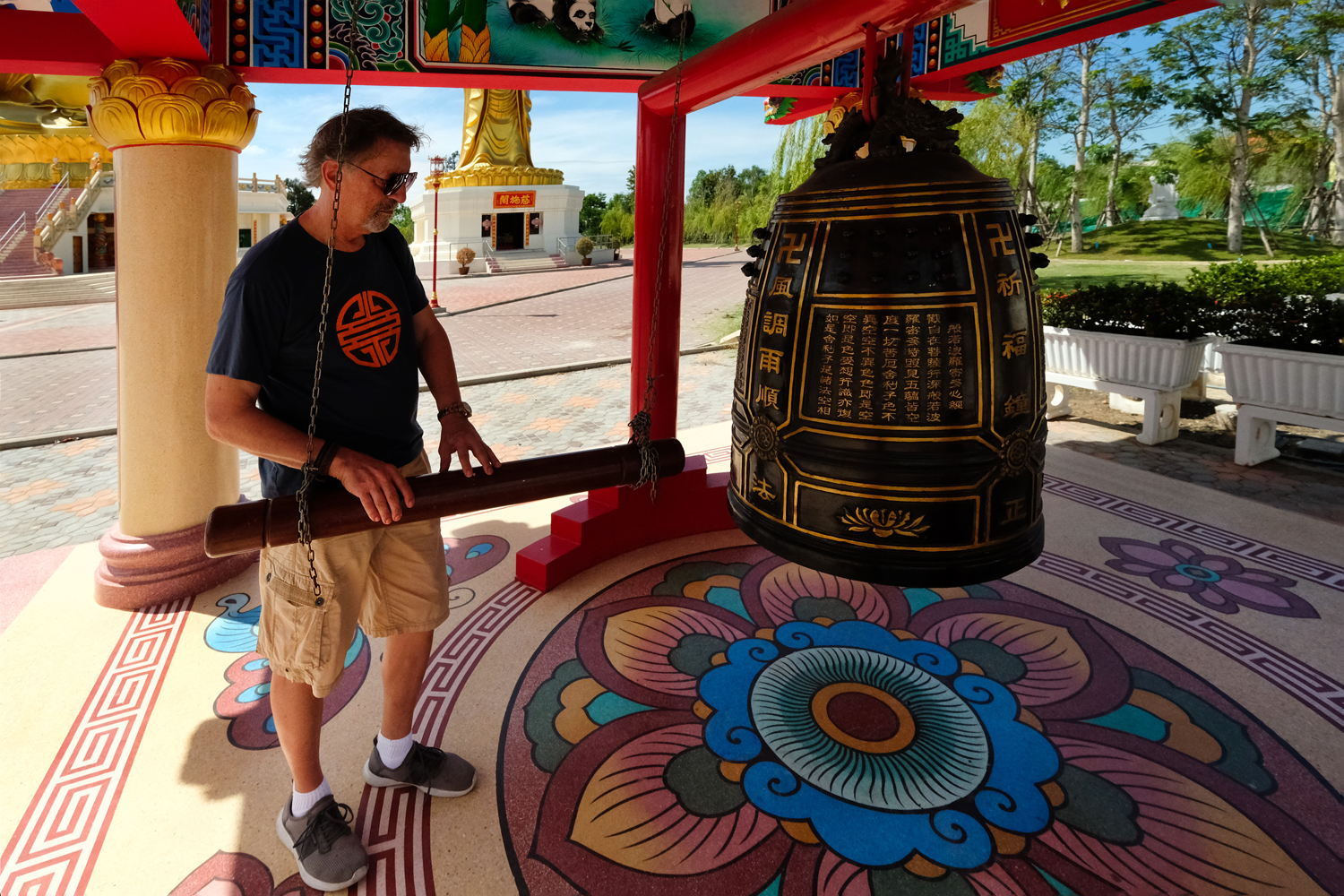 After showing respect at the shrines, our guide instructed us to ring the big bell . . .
After showing respect at the shrines, our guide instructed us to ring the big bell . . .
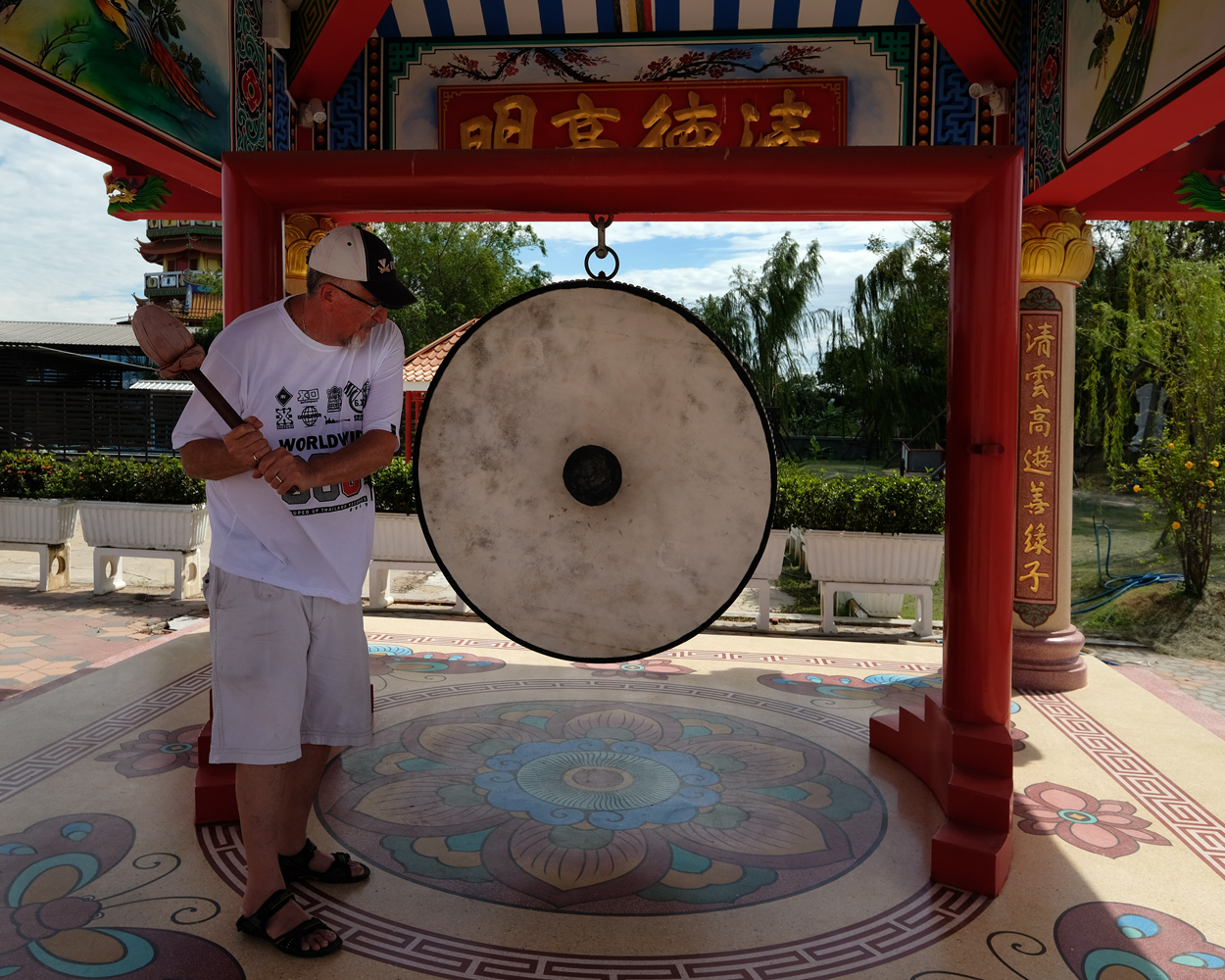 . . . and bang the big drum, each three times. We duly complied.
. . . and bang the big drum, each three times. We duly complied.
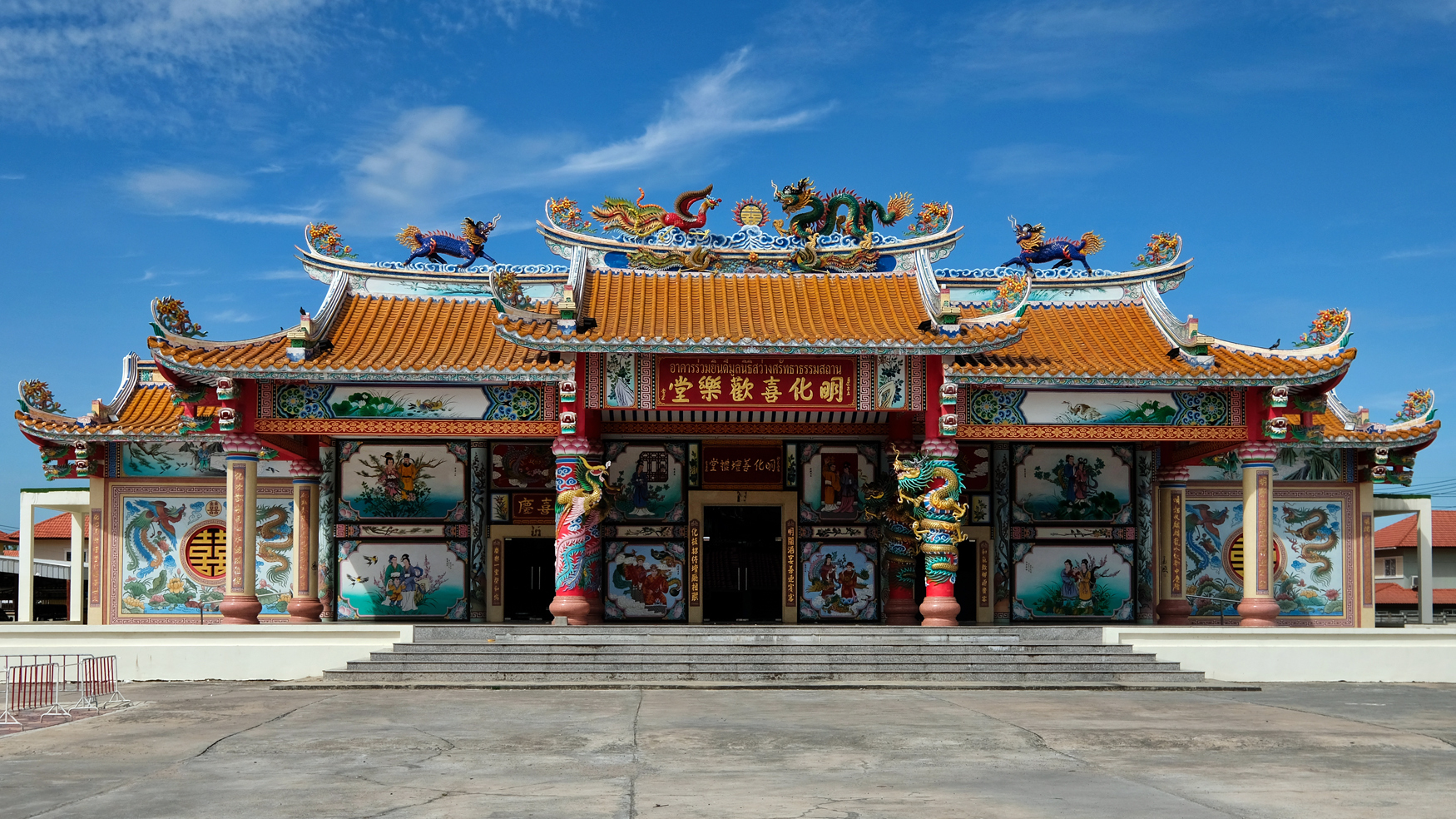
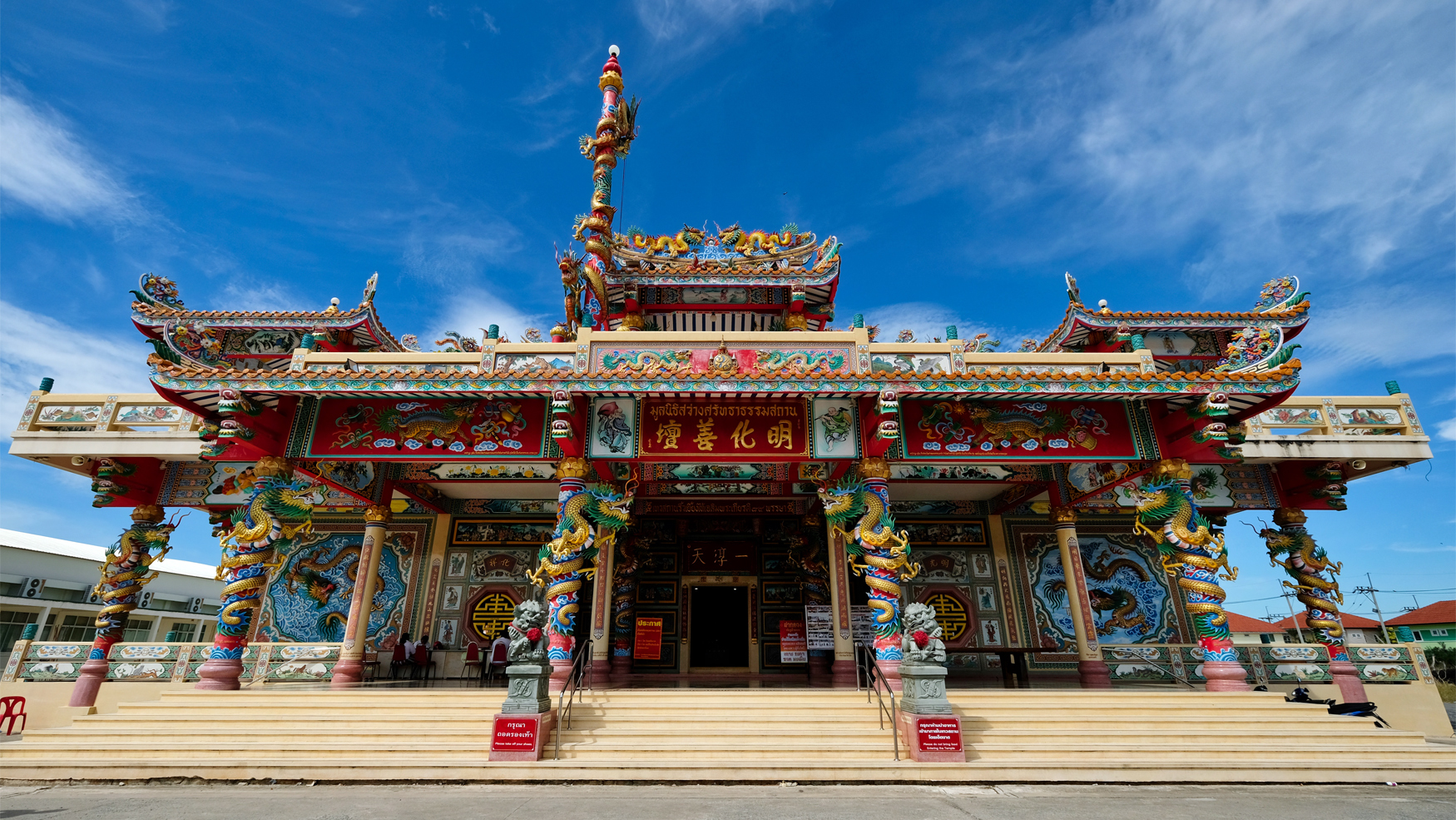 After we completed the proper ceremonies at the giant statues, they gave us some free ice water and said we were free to explore the temple buildings on our own.
After we completed the proper ceremonies at the giant statues, they gave us some free ice water and said we were free to explore the temple buildings on our own.
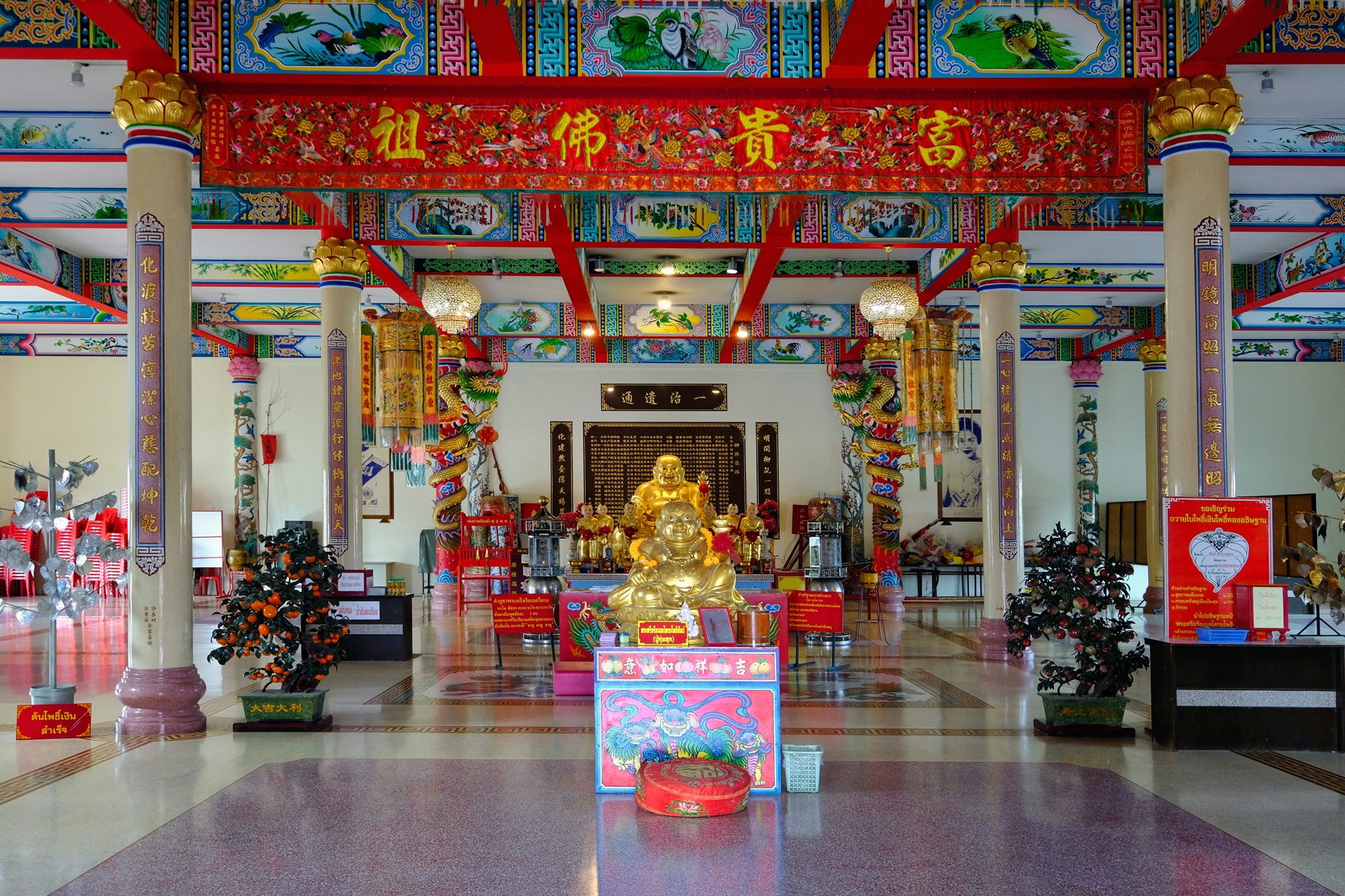 And my-o-my! The temple interiors were fantastical. Enjoy the following photos!
And my-o-my! The temple interiors were fantastical. Enjoy the following photos!
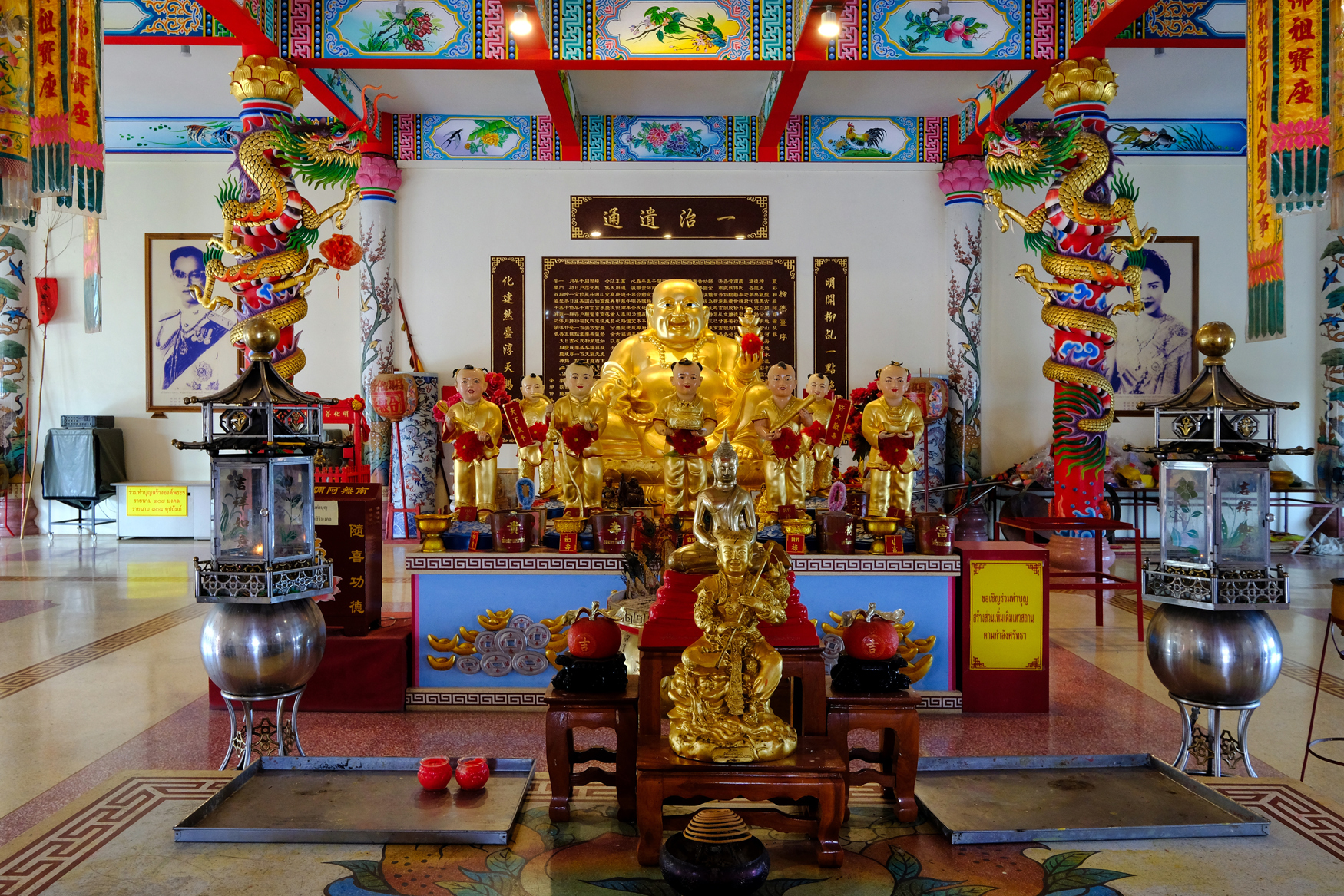
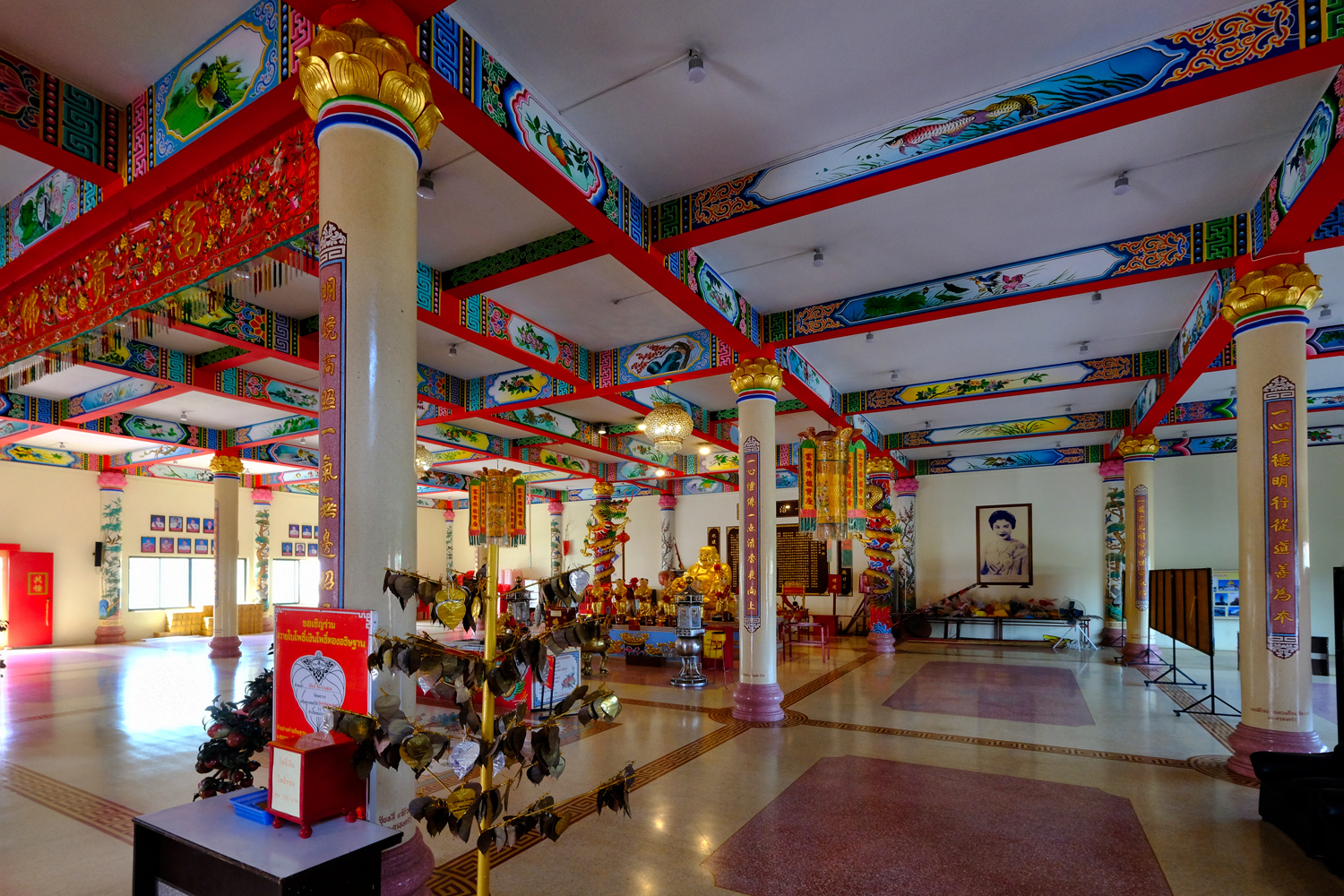
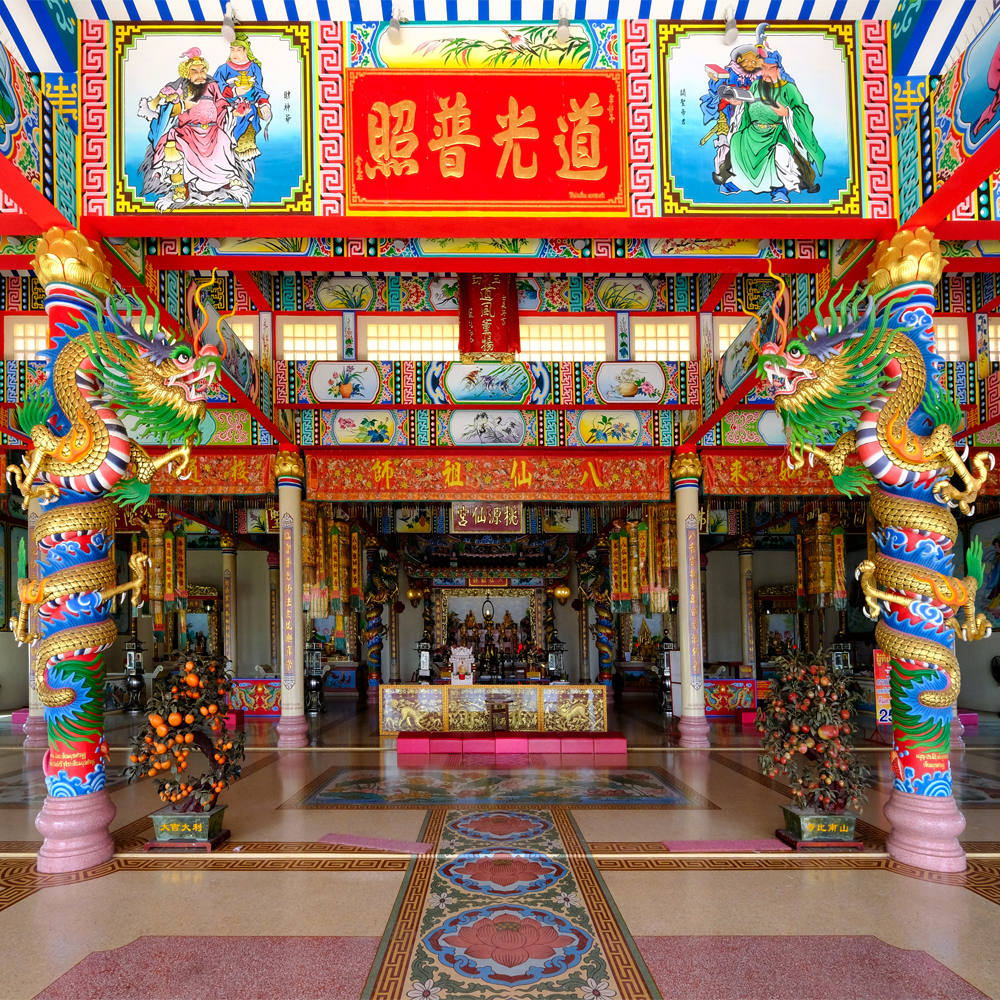
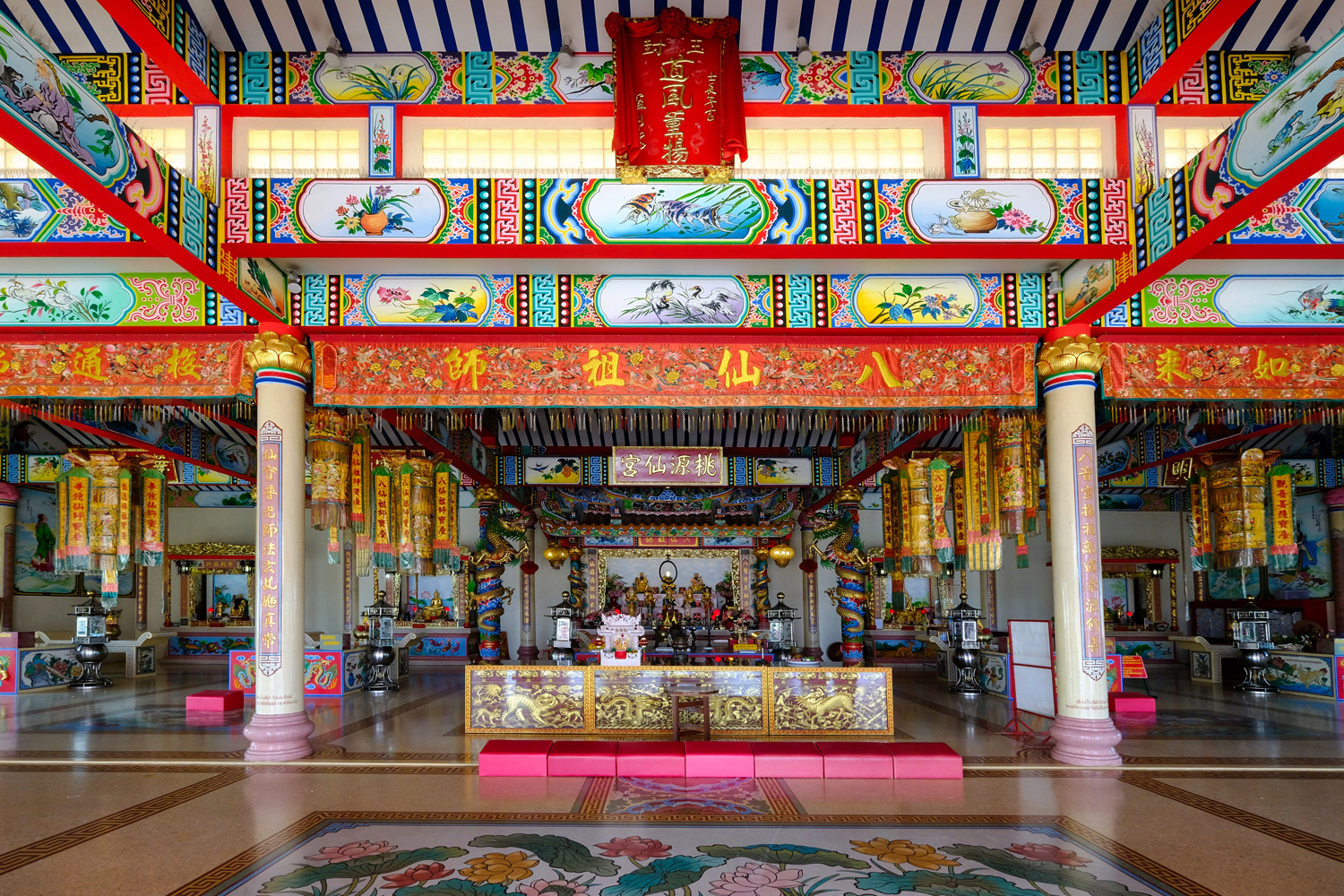
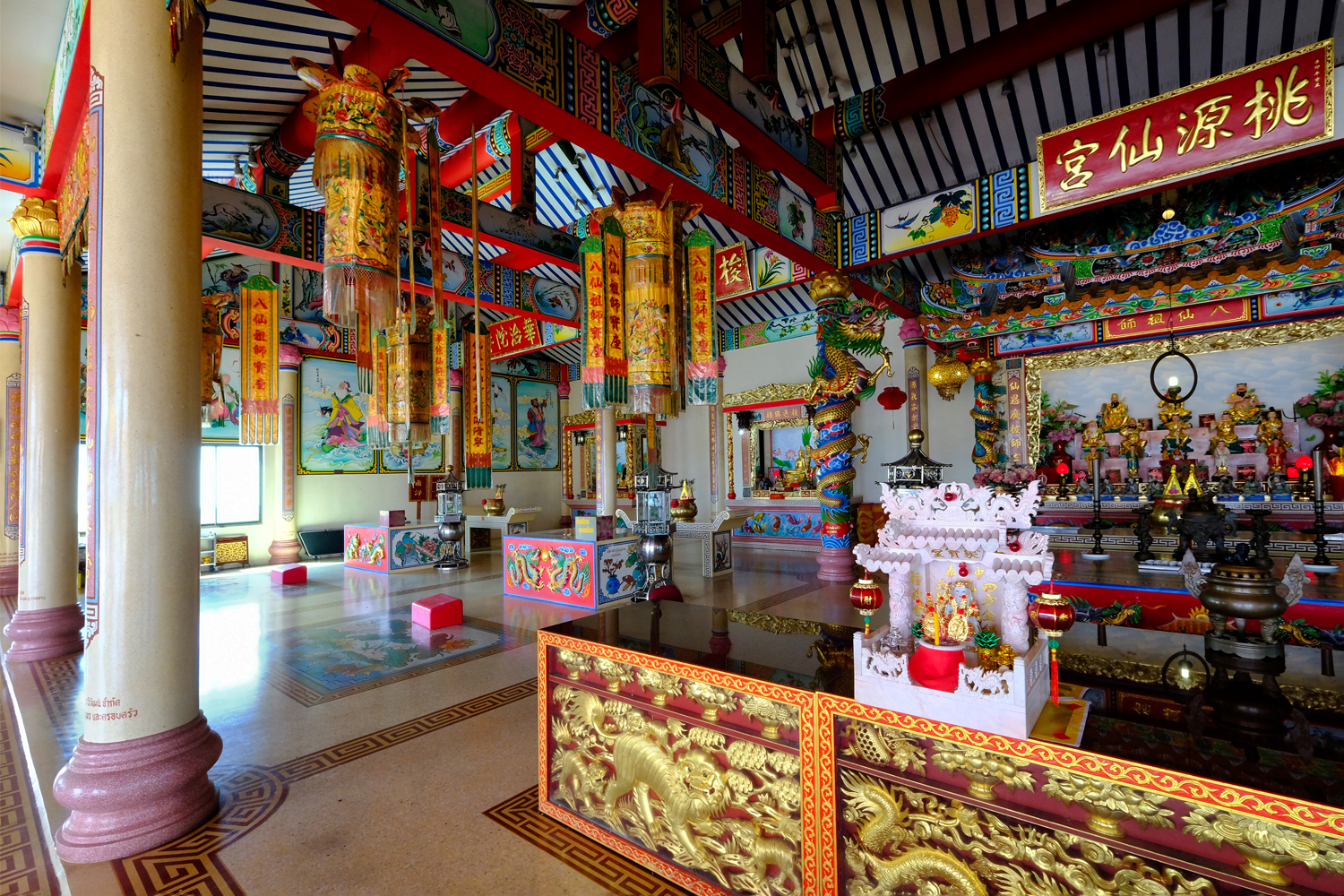
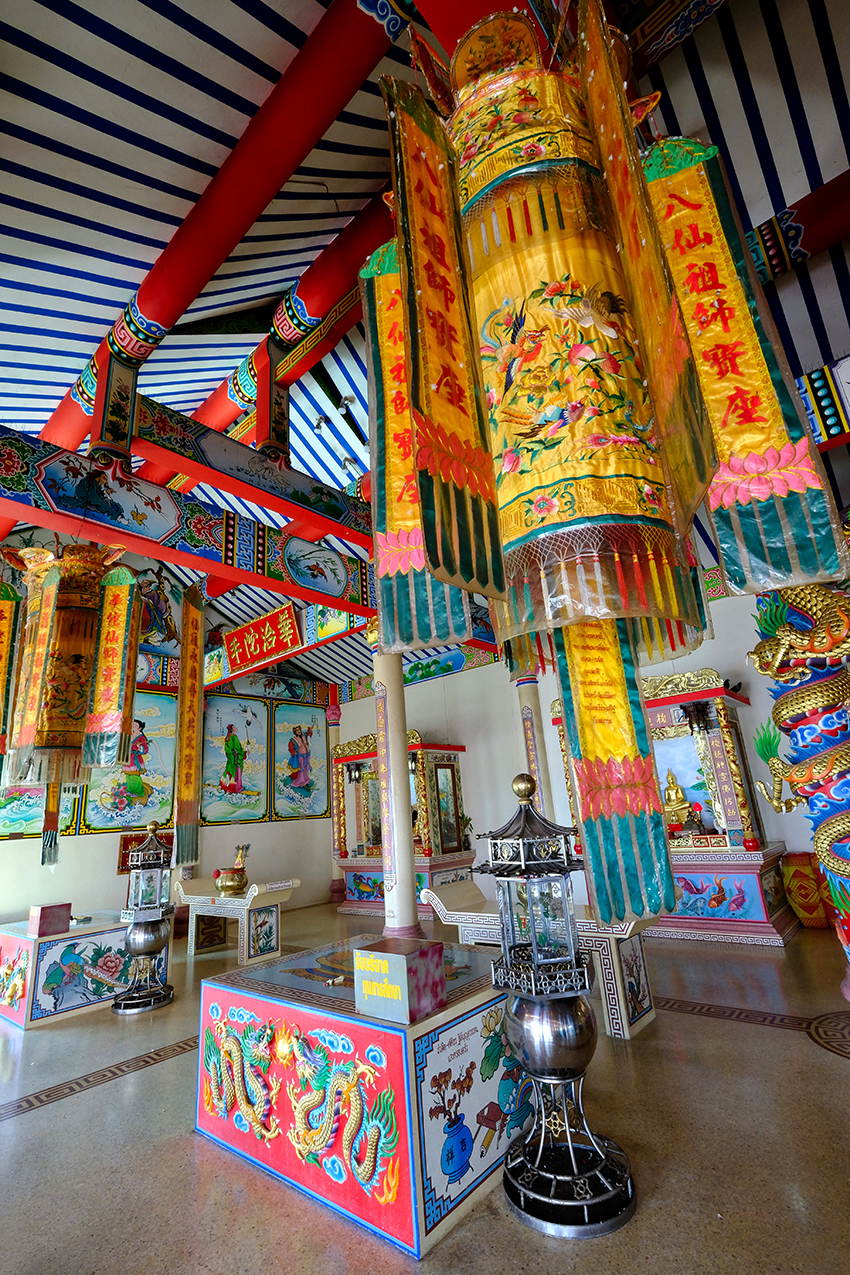
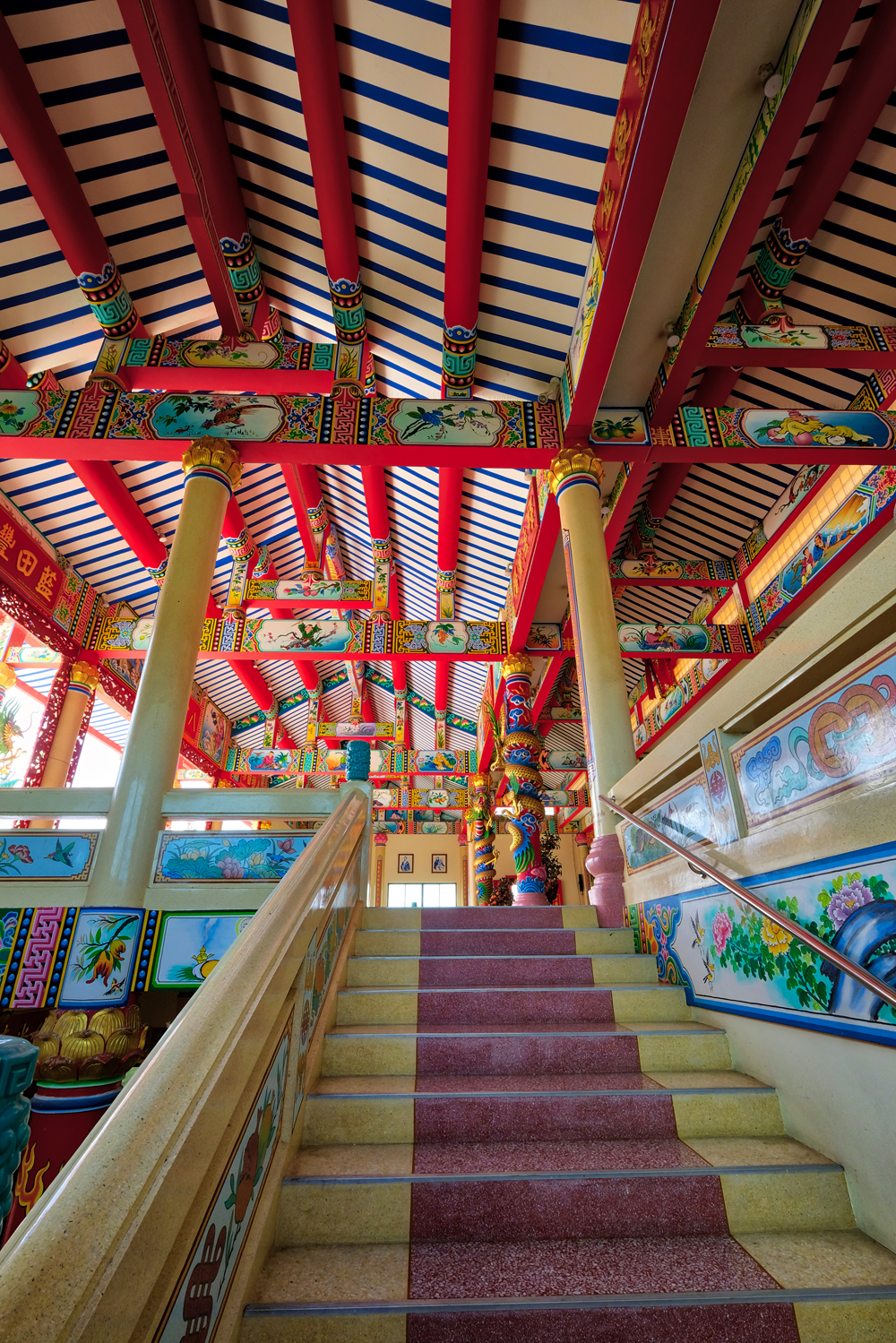
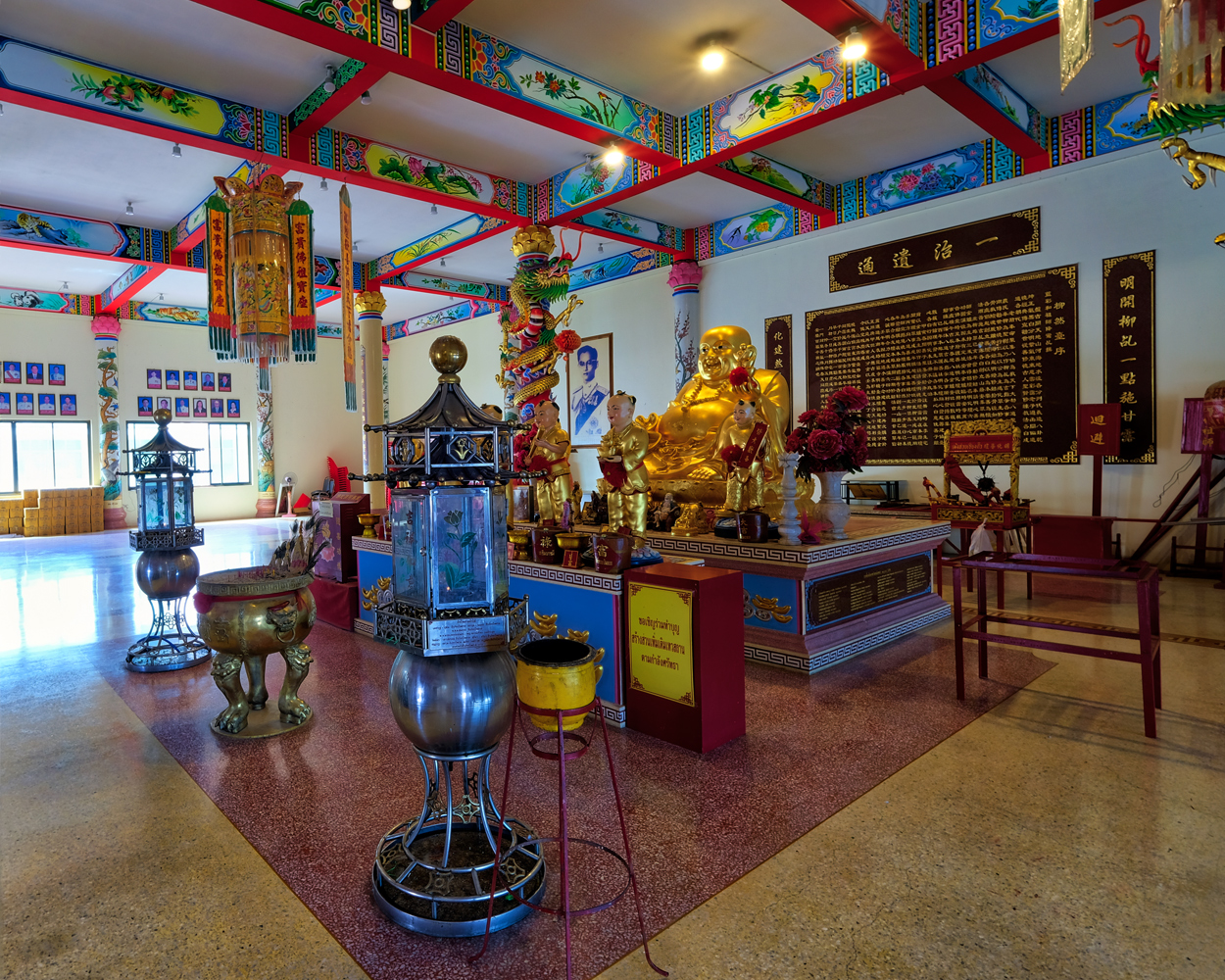
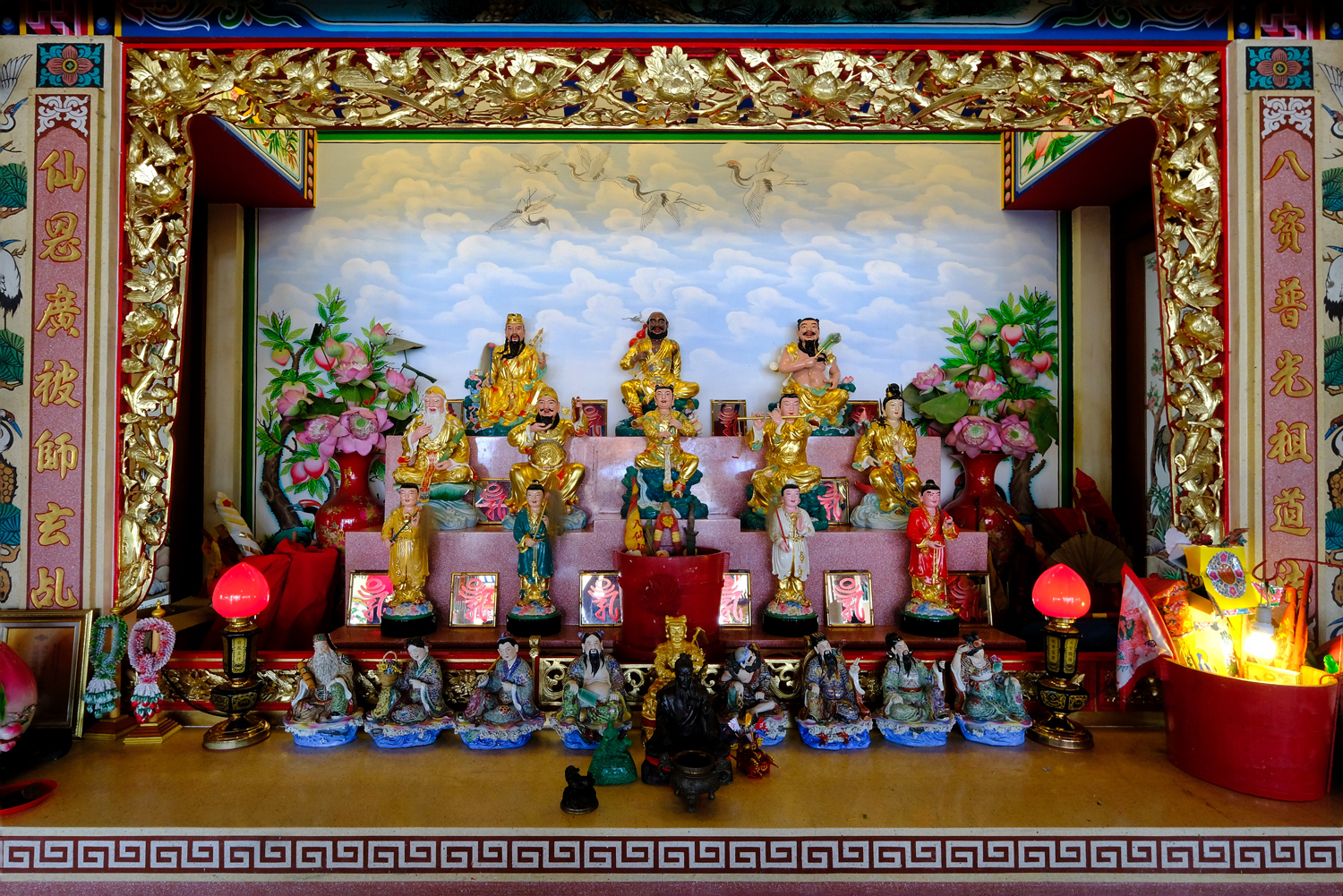
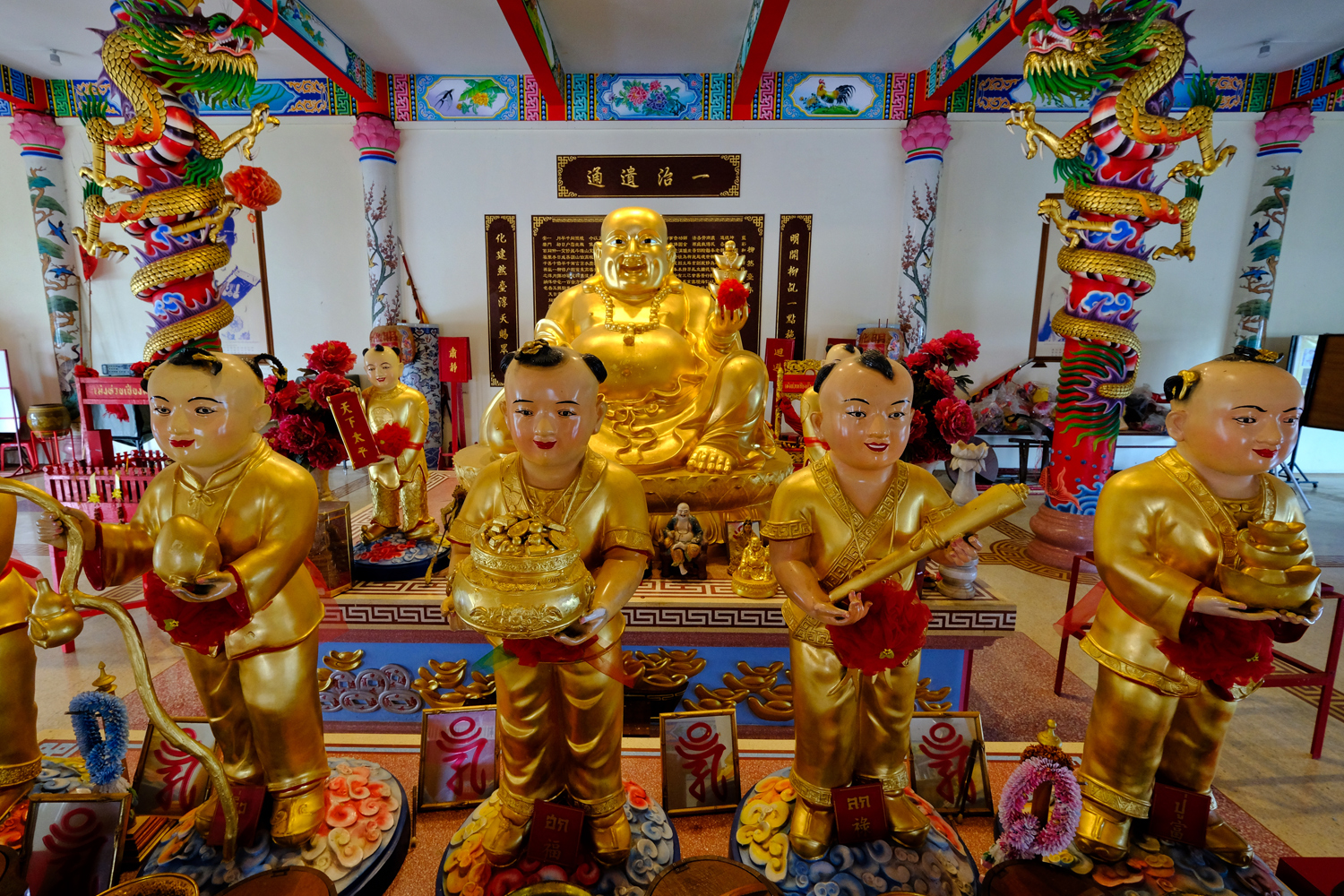
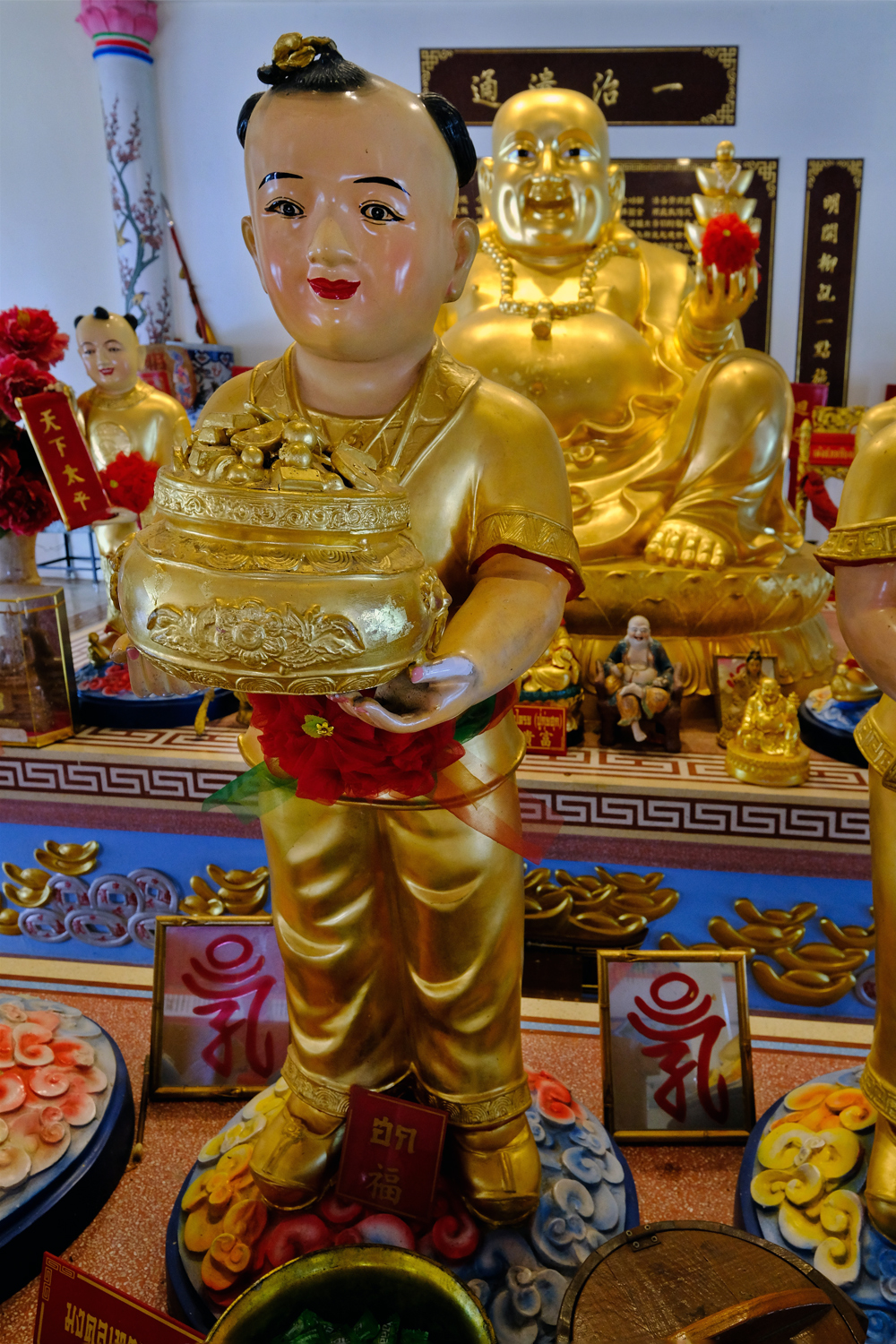
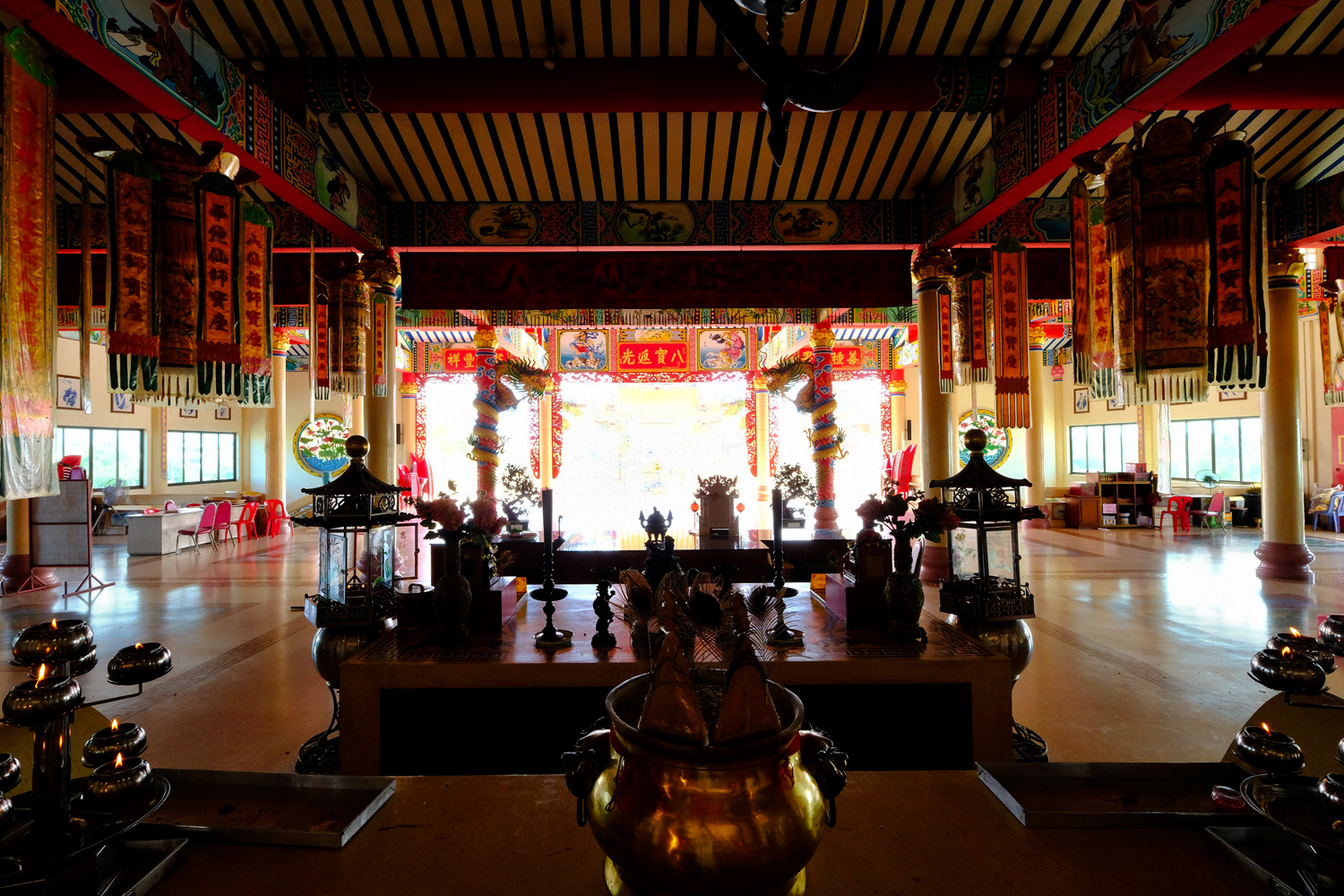 After wandering around for some time in these fantastic temple interiors we both realized we were hungry and decided to head into the old Chinese quarter of Chachoengsao along the river.
After wandering around for some time in these fantastic temple interiors we both realized we were hungry and decided to head into the old Chinese quarter of Chachoengsao along the river.
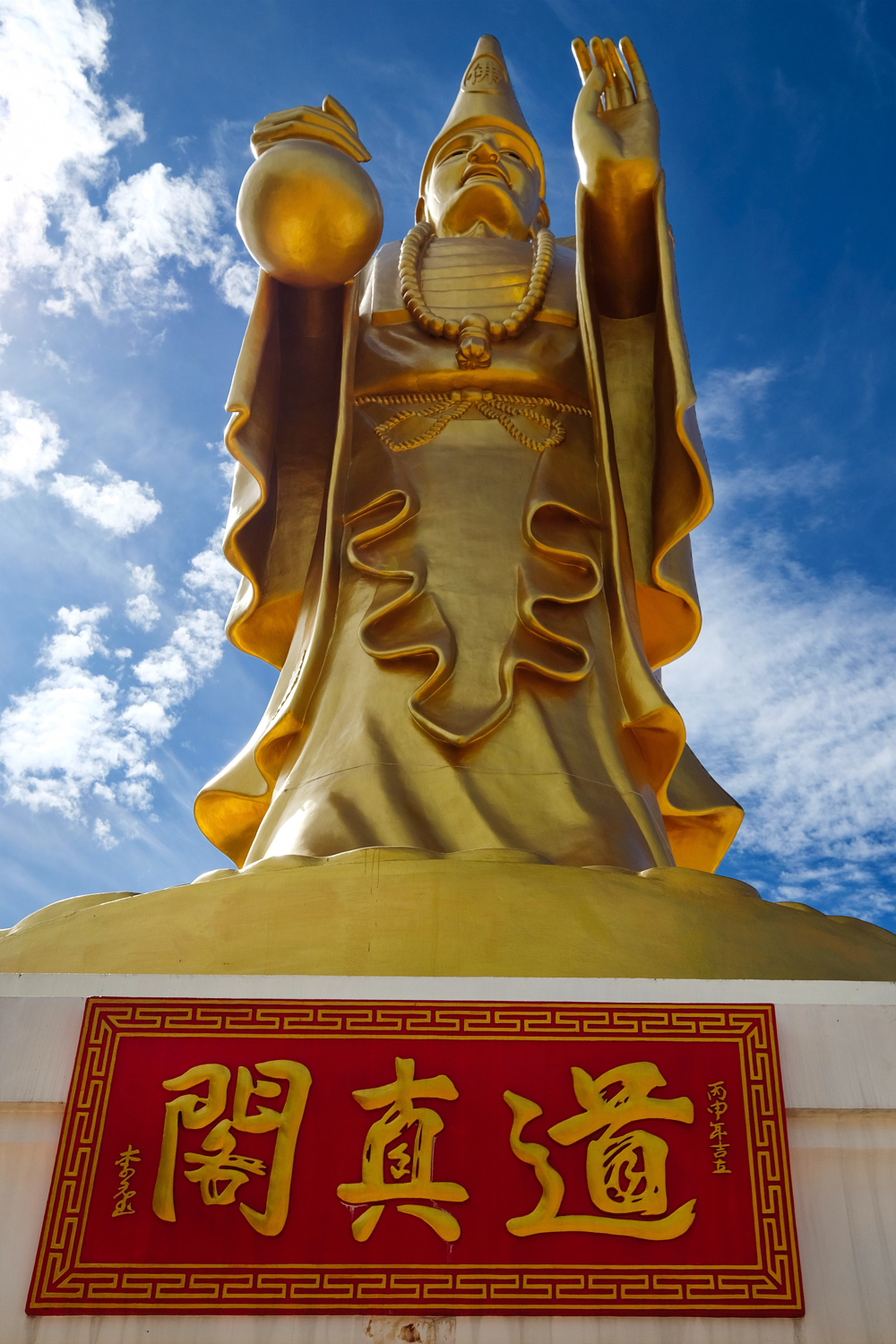 I paid my last respects to my old buddy Ji Gong and we were on our way again.
I paid my last respects to my old buddy Ji Gong and we were on our way again.
PART FIVE: THE OLD CHINESE QUARTER OF CHACHOENGSAO
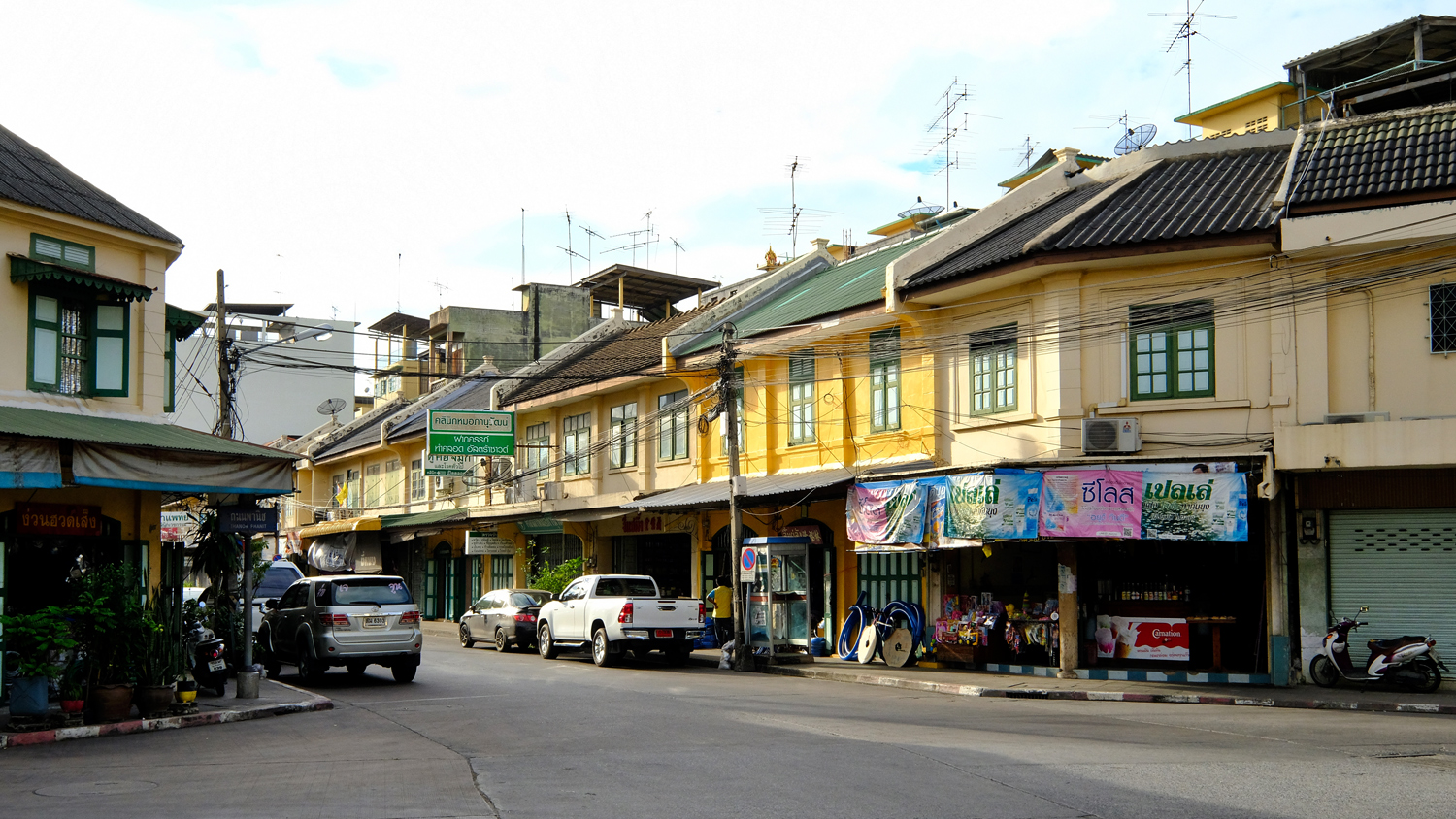 We drove into the old Chinese quarter and looked for a place to park. The architecture reminds me a lot of Penang, Malaysia.
We drove into the old Chinese quarter and looked for a place to park. The architecture reminds me a lot of Penang, Malaysia.
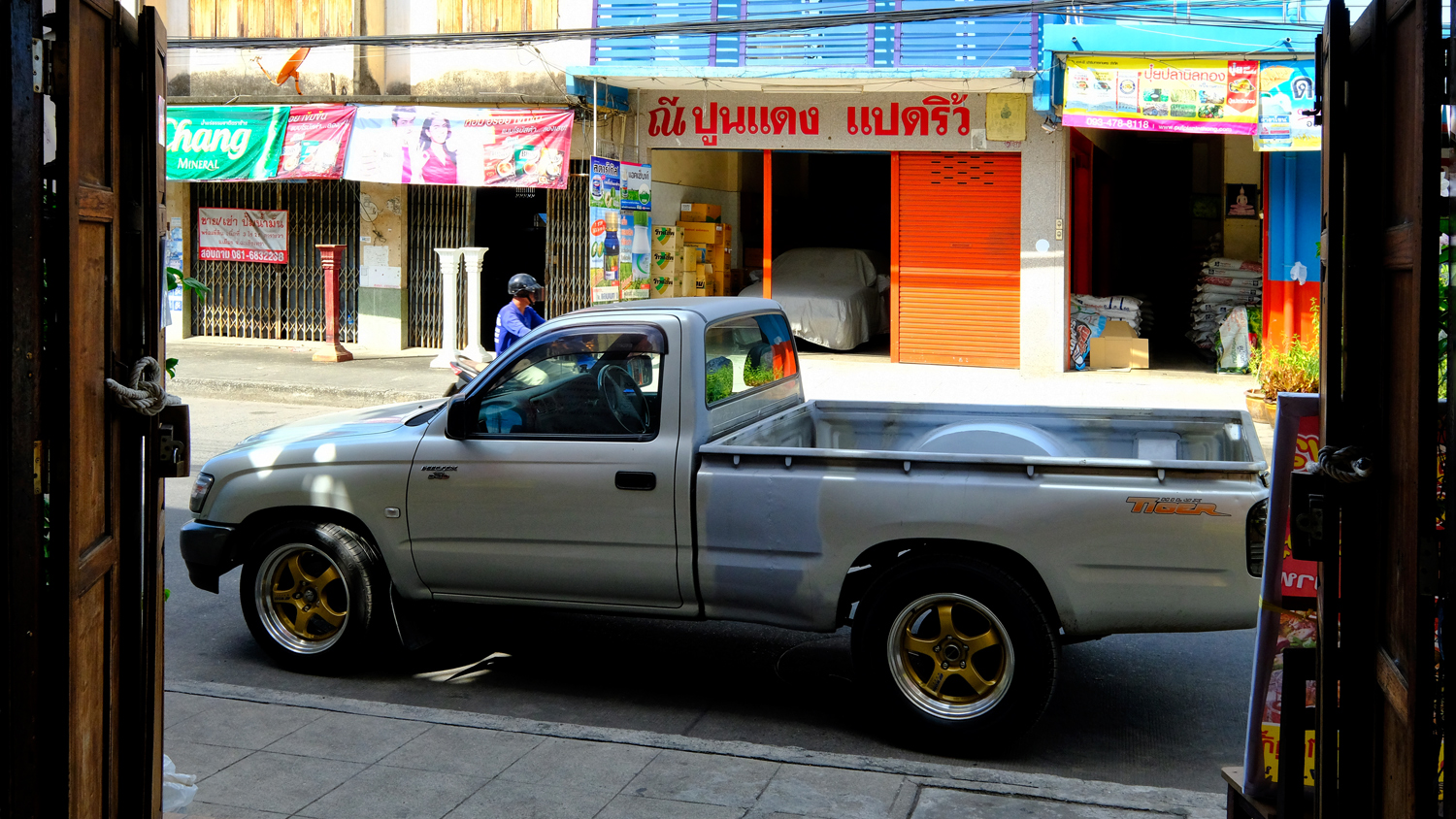 My current old school 'muscle car' project in mid-modification (V8, shortened, narrowed chassis, tubbed, big-braked, and custom-painted) on the streets of Chachoengsao.
My current old school 'muscle car' project in mid-modification (V8, shortened, narrowed chassis, tubbed, big-braked, and custom-painted) on the streets of Chachoengsao.
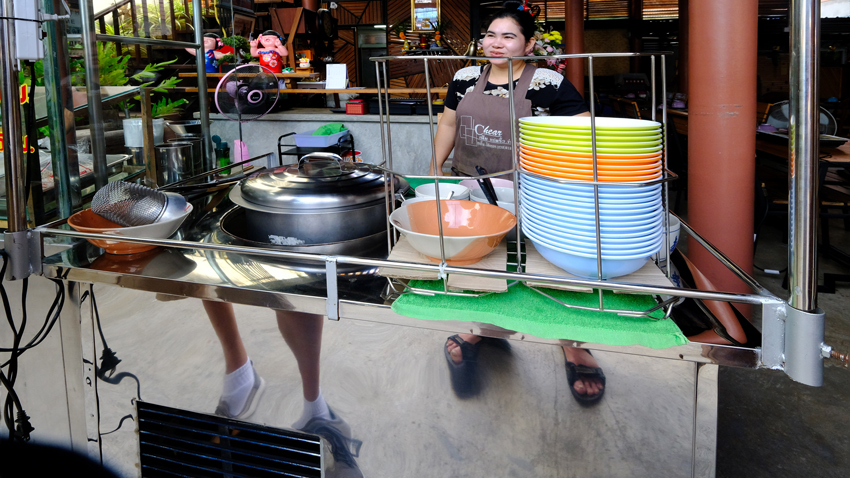 We found a nice noodle shop for our first course . . . .
We found a nice noodle shop for our first course . . . .
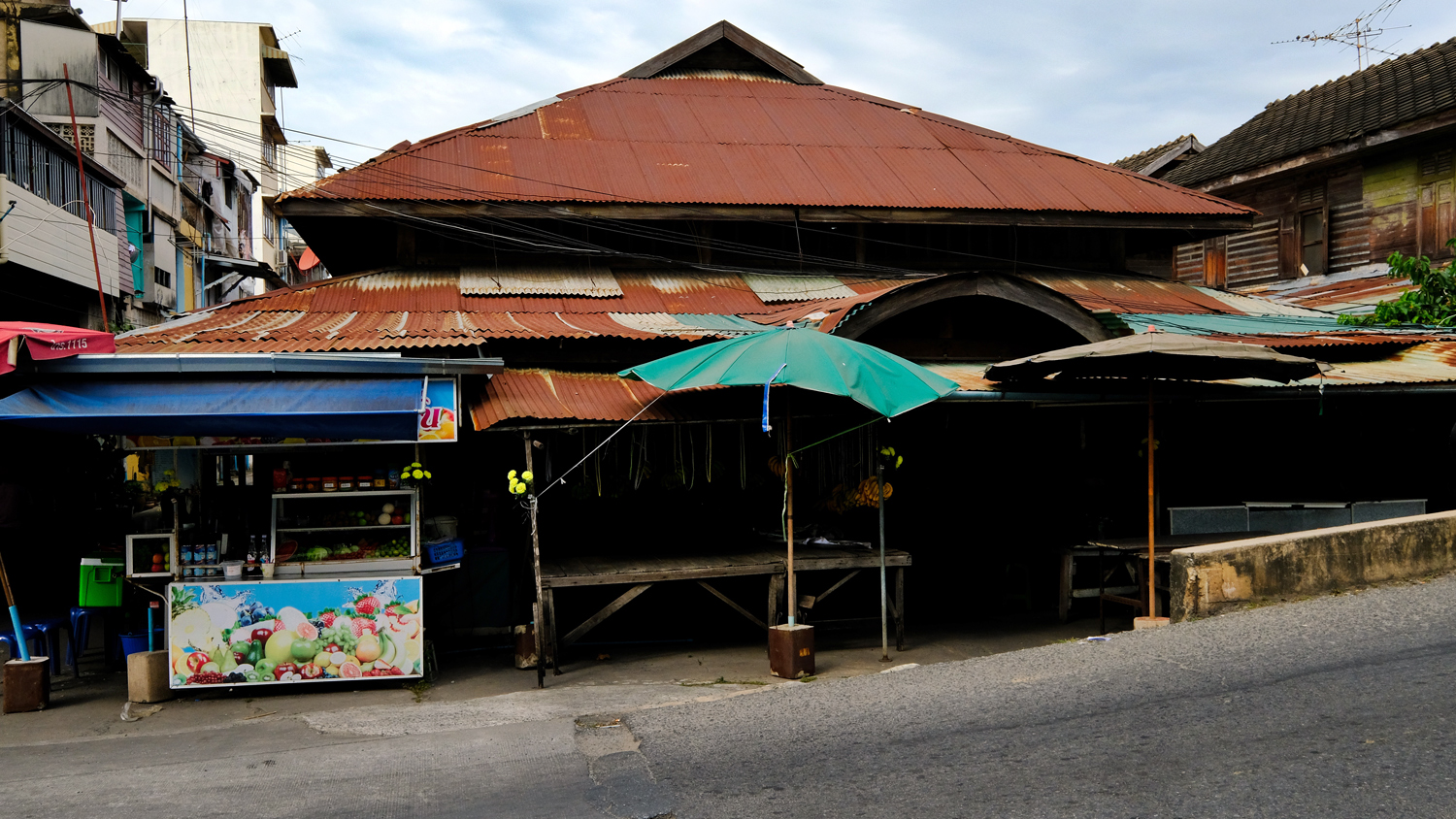 After a quick snack, we headed out on a walk around this fascinating old town. Here, the 100+ year old town market.
After a quick snack, we headed out on a walk around this fascinating old town. Here, the 100+ year old town market.
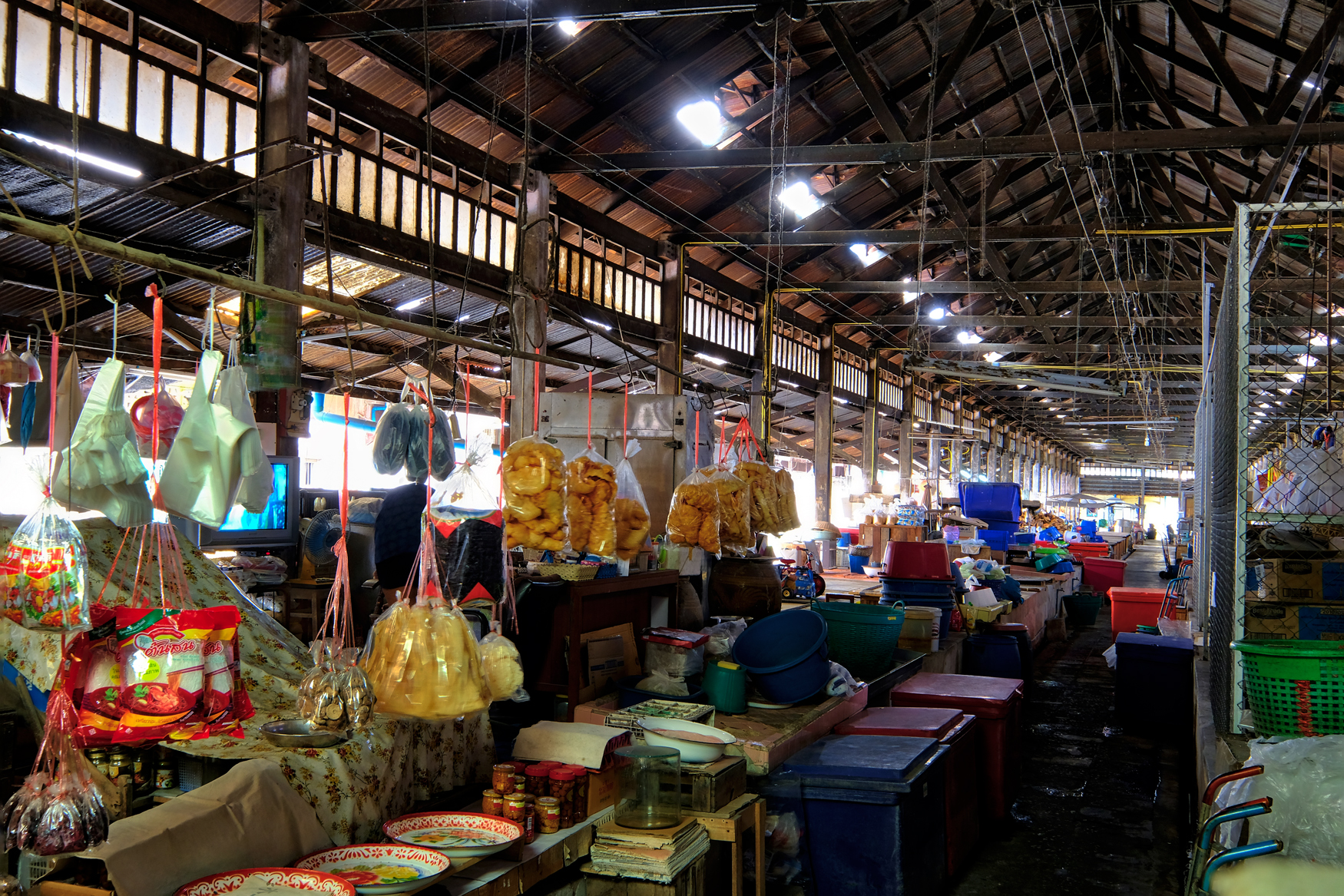 The old city market interior . . . still in use.
The old city market interior . . . still in use.
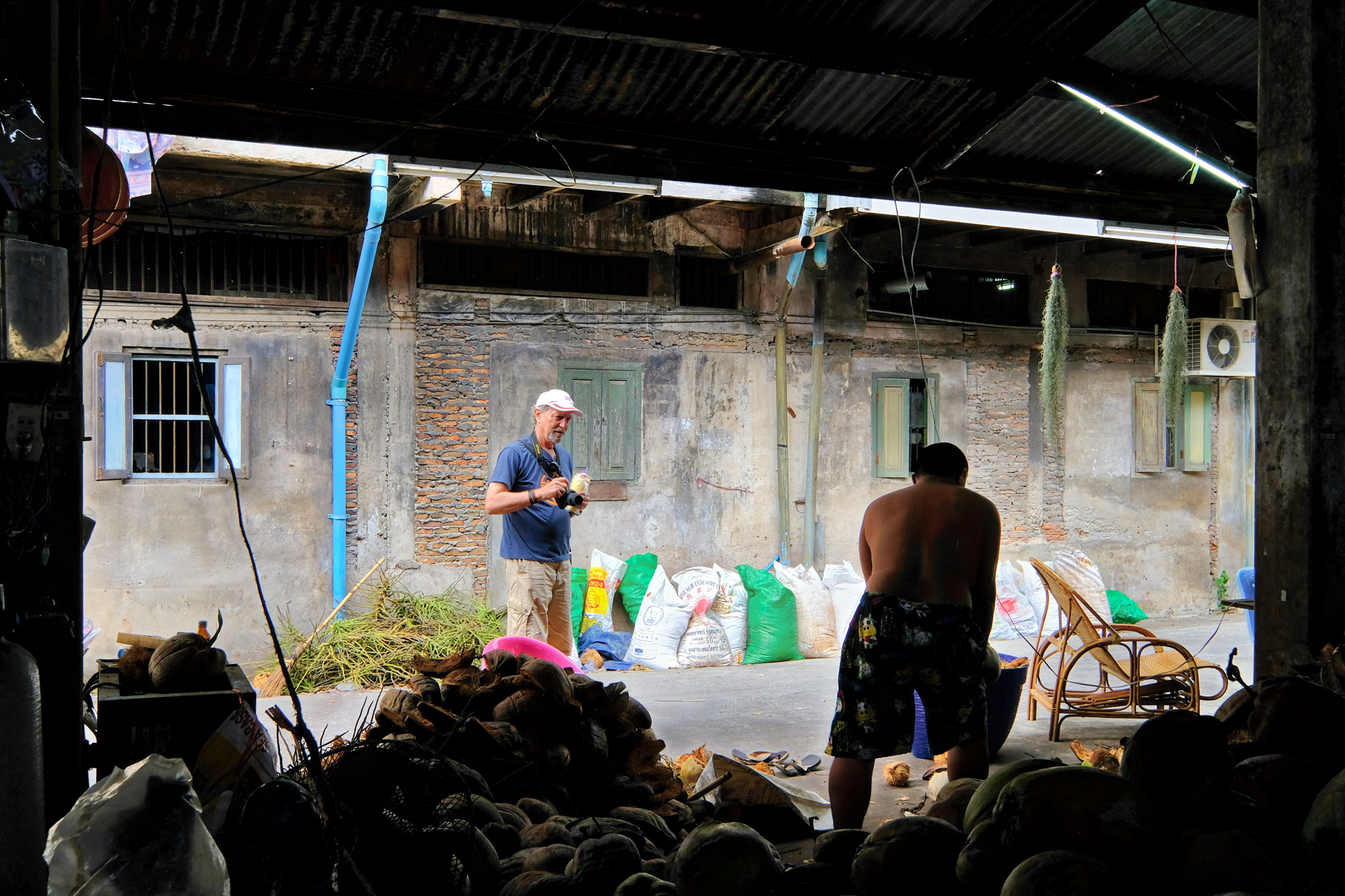 There were just too may photographic subjects to cover . . we were just a couple street shooters snapping on the run.
There were just too may photographic subjects to cover . . we were just a couple street shooters snapping on the run.
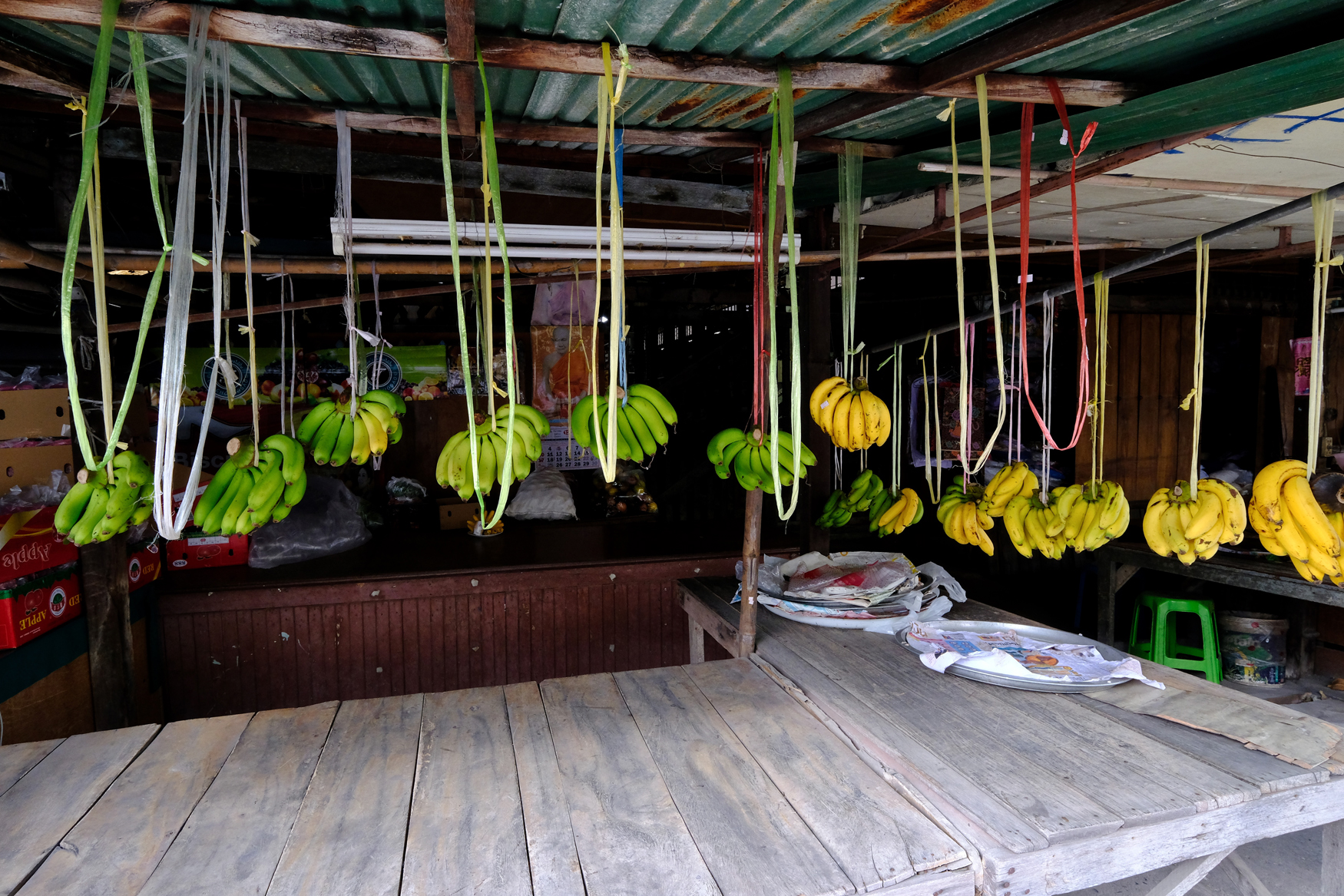 The light in the old market spaces was marvelous.
The light in the old market spaces was marvelous.
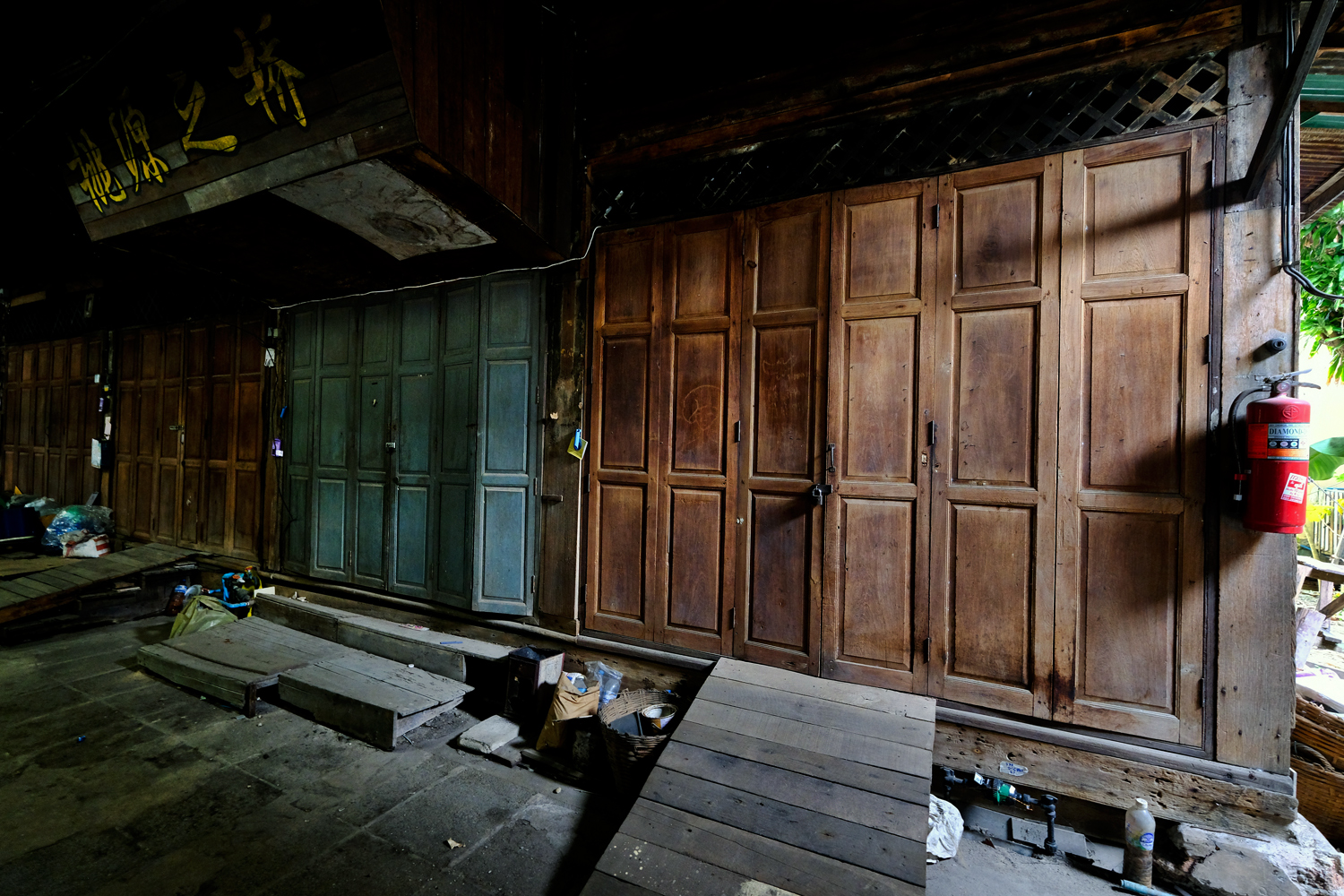 At some point in the past these old shops must have been very successful, being located next to the town market.
At some point in the past these old shops must have been very successful, being located next to the town market.
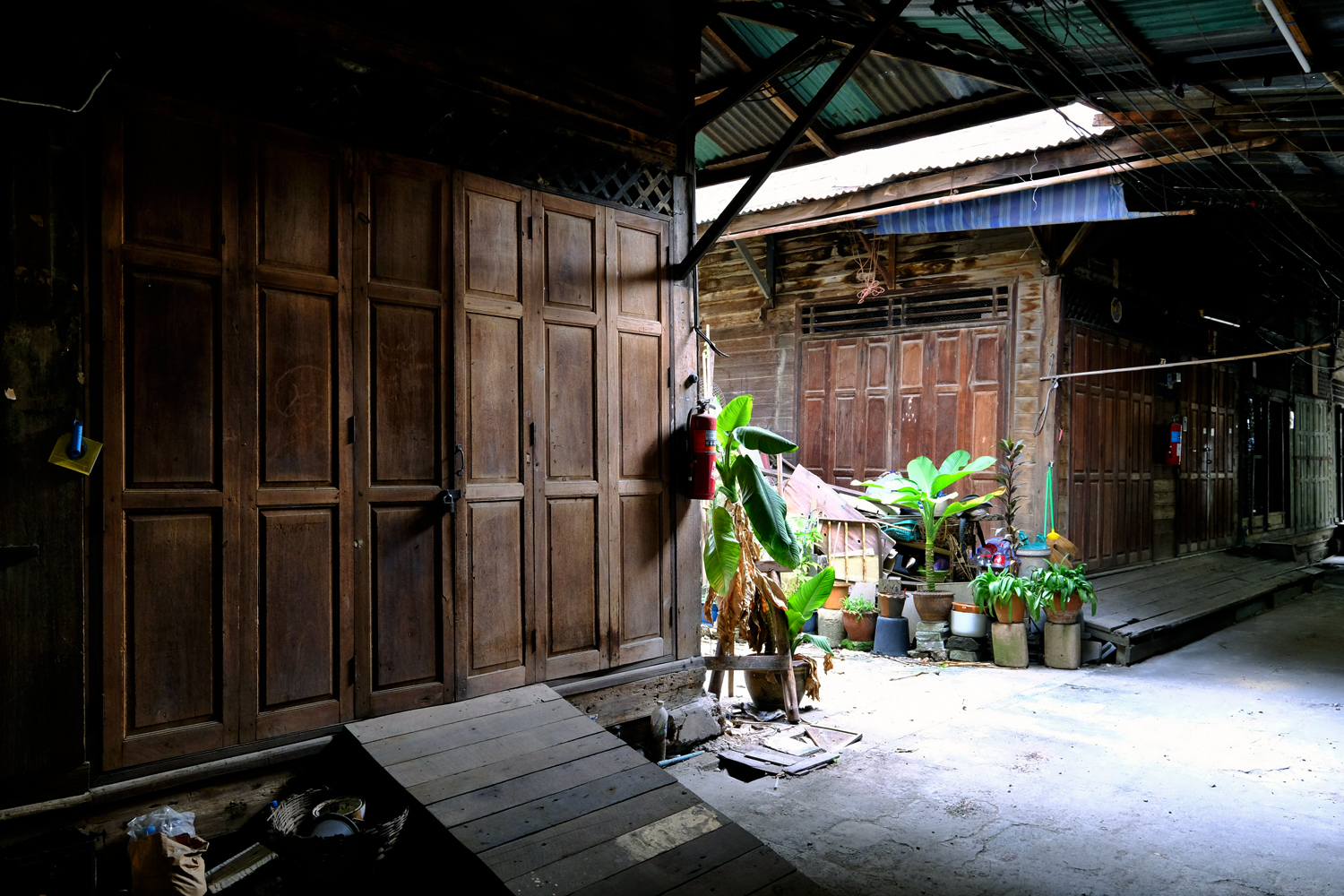 The oldest shops in the city.
The oldest shops in the city.
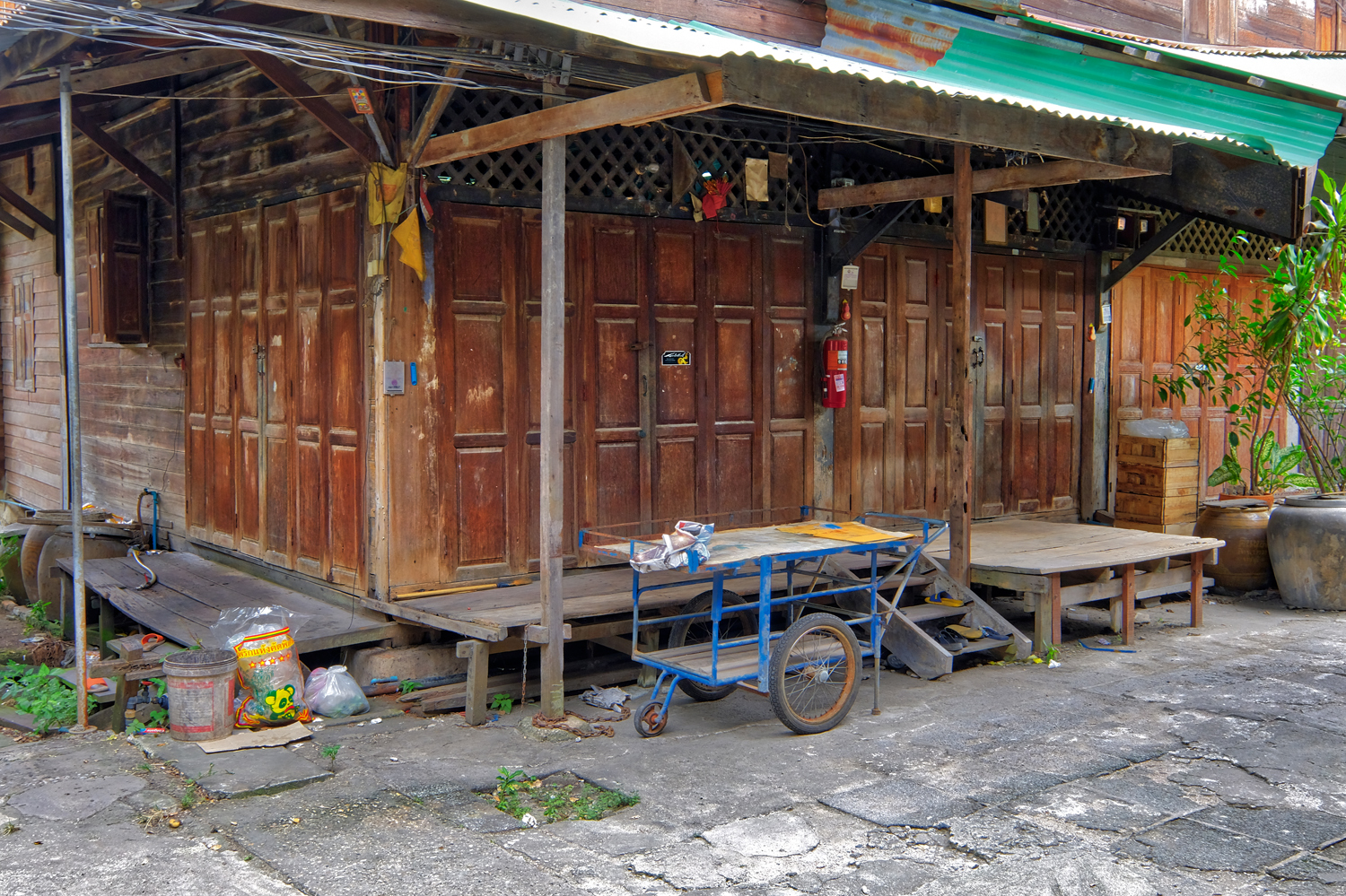 Some of these old shops are still in use by traders.
Some of these old shops are still in use by traders.
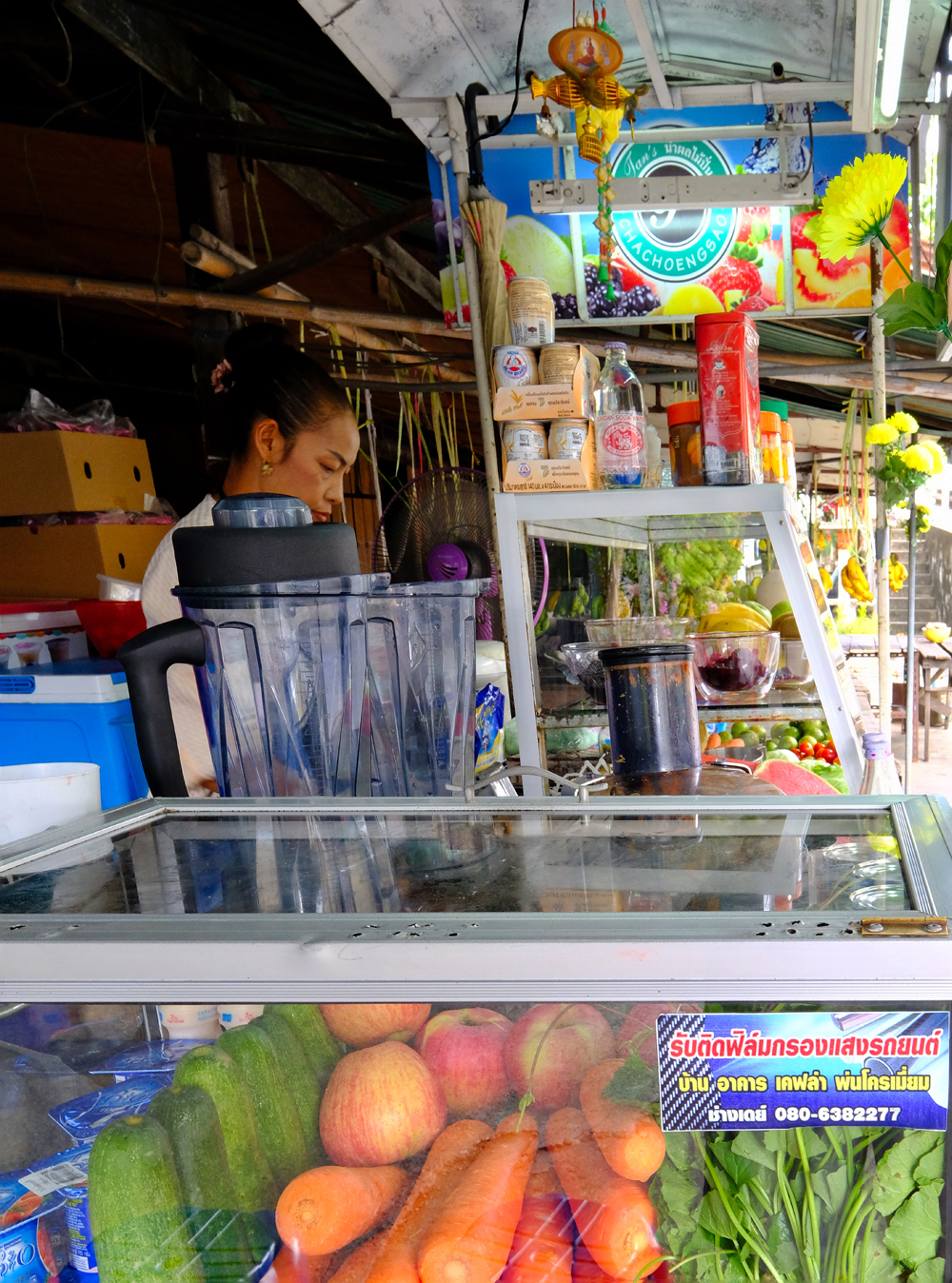 We stopped for fresh fruit juice smoothies. I had a carrot and apple one.
We stopped for fresh fruit juice smoothies. I had a carrot and apple one.
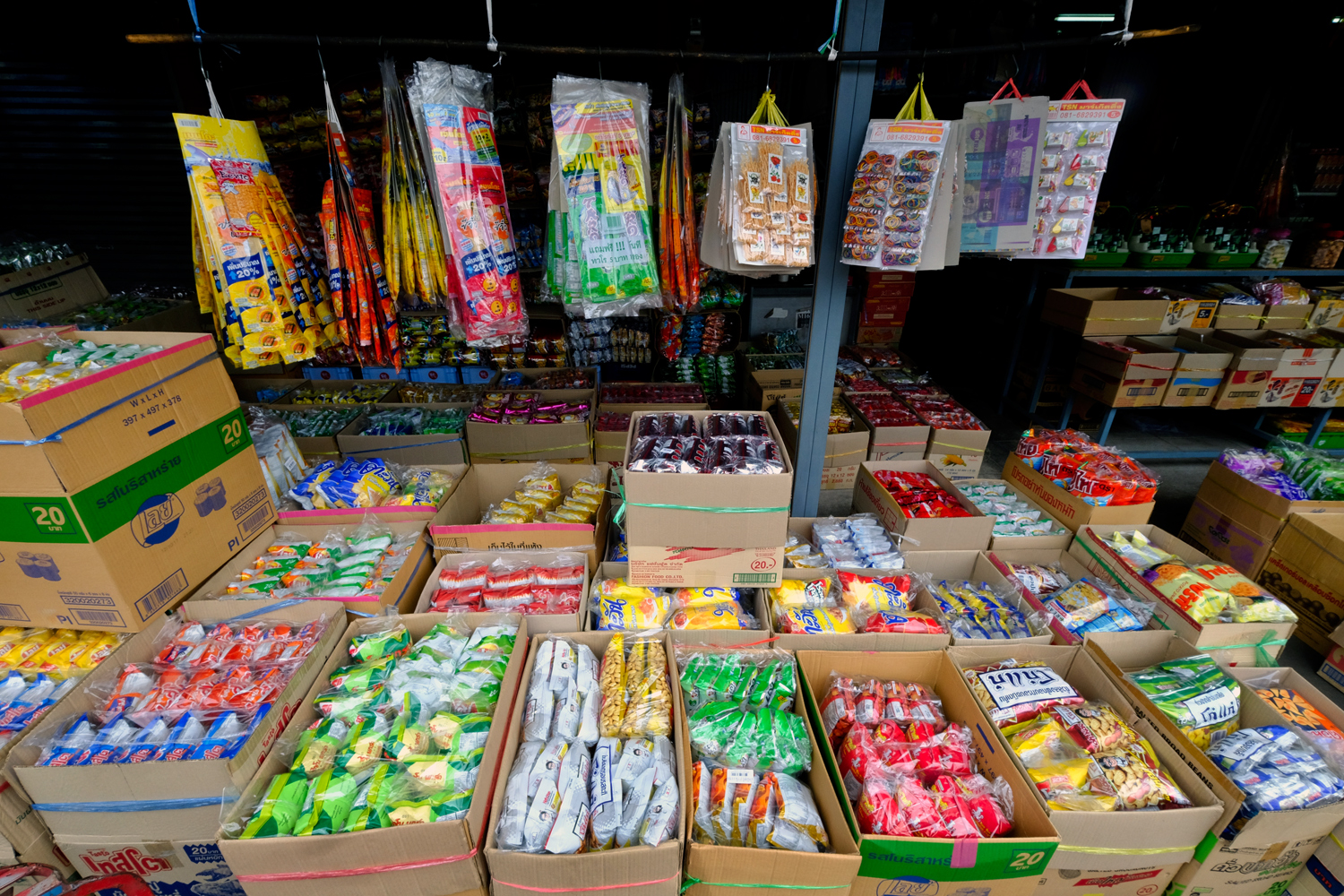 There is a growing obesity problem in Thailand (pun intended). It's no wonder . . . look at the chip and snack wholesaler's shop.
There is a growing obesity problem in Thailand (pun intended). It's no wonder . . . look at the chip and snack wholesaler's shop.
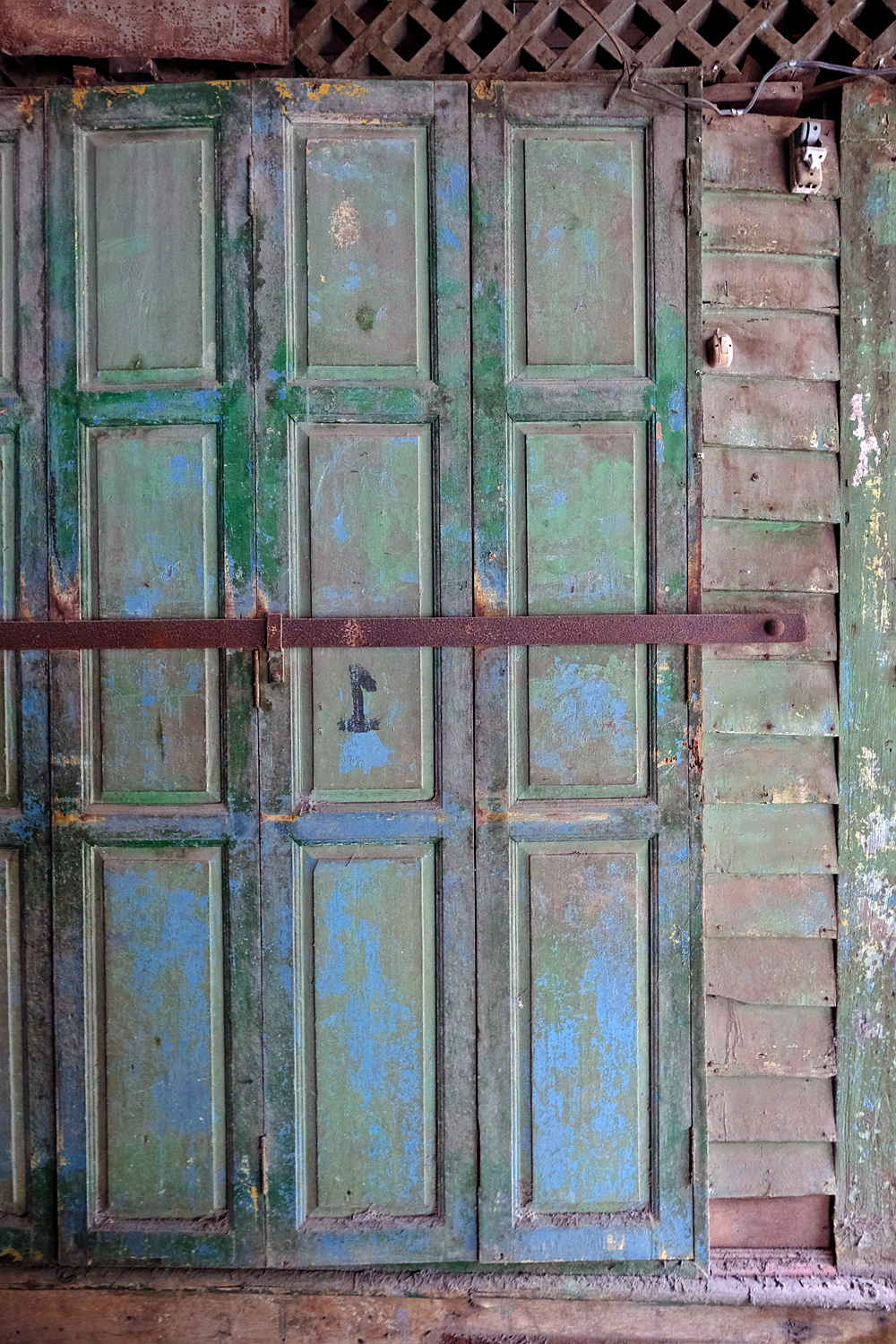 These well-worn shop doors were things of beauty.
These well-worn shop doors were things of beauty.
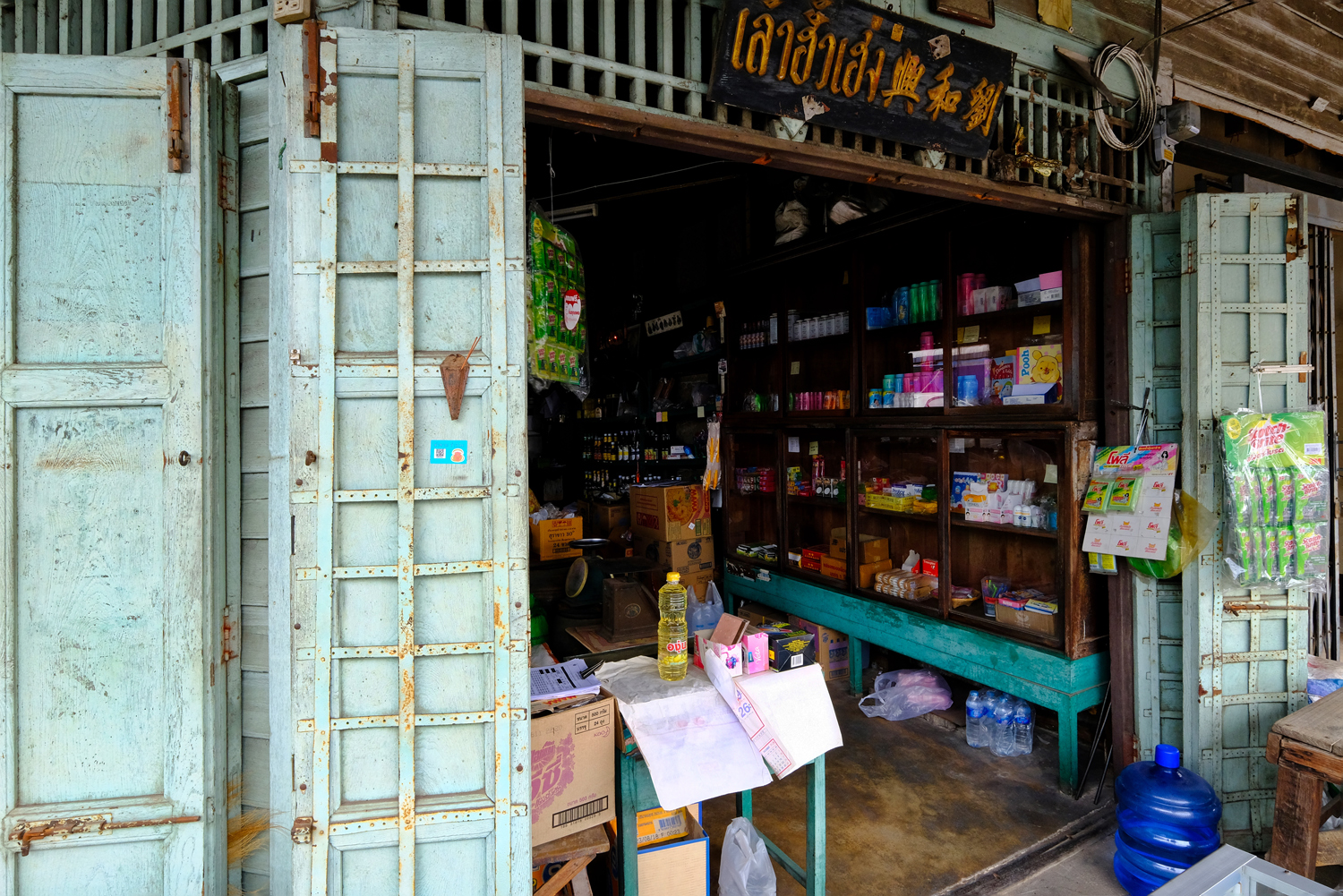 The shopkeepers here told us that this shop had been operated by their family for over 100 years.
The shopkeepers here told us that this shop had been operated by their family for over 100 years.
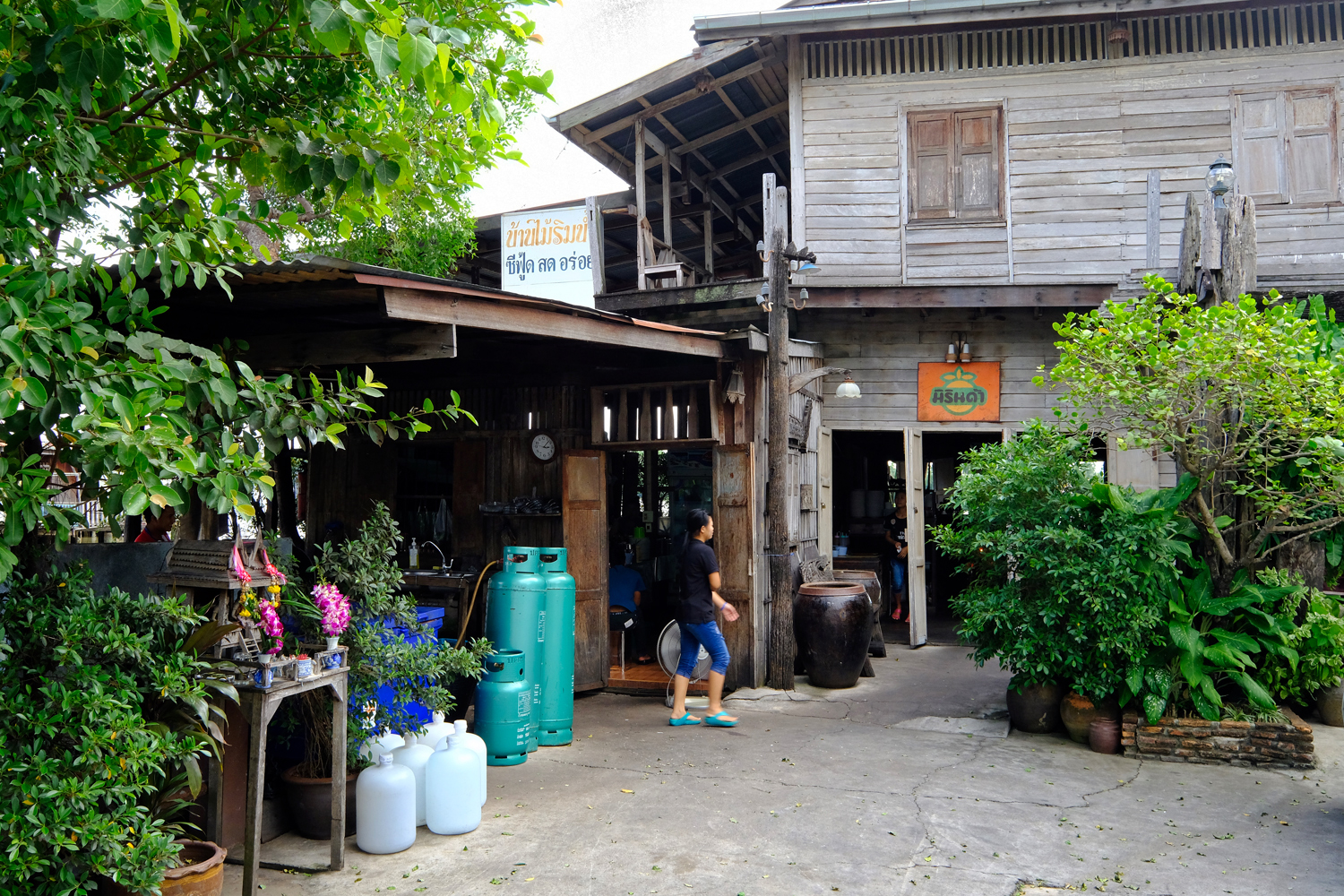 We stopped in at this riverfront restaurant for a full Thai meal that couldn't be beat. Ate way too much, but was happy.
We stopped in at this riverfront restaurant for a full Thai meal that couldn't be beat. Ate way too much, but was happy.
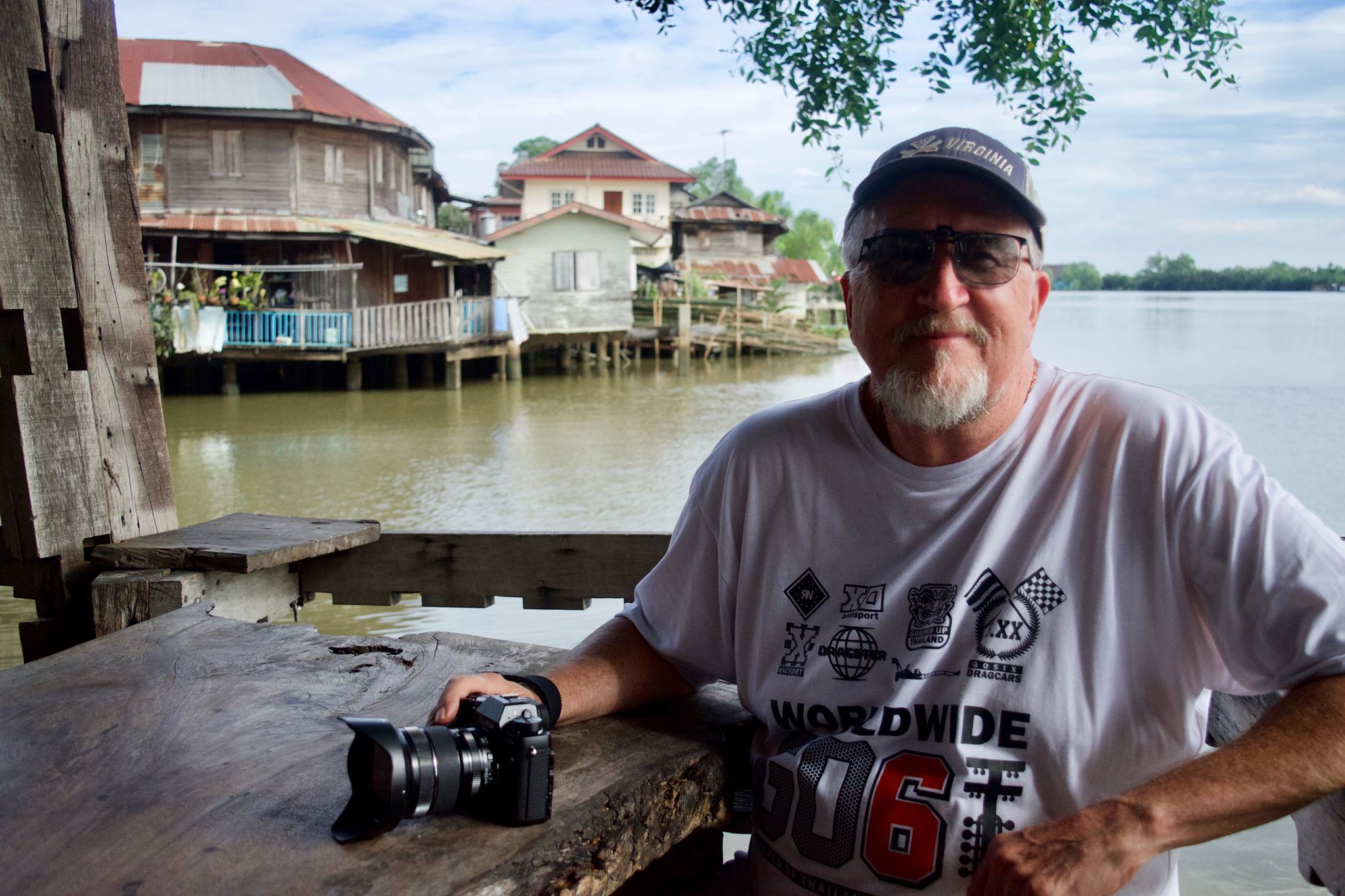 Your intrepid photographer out and about . . . and getting ready to have a wonderful meal.
Your intrepid photographer out and about . . . and getting ready to have a wonderful meal.
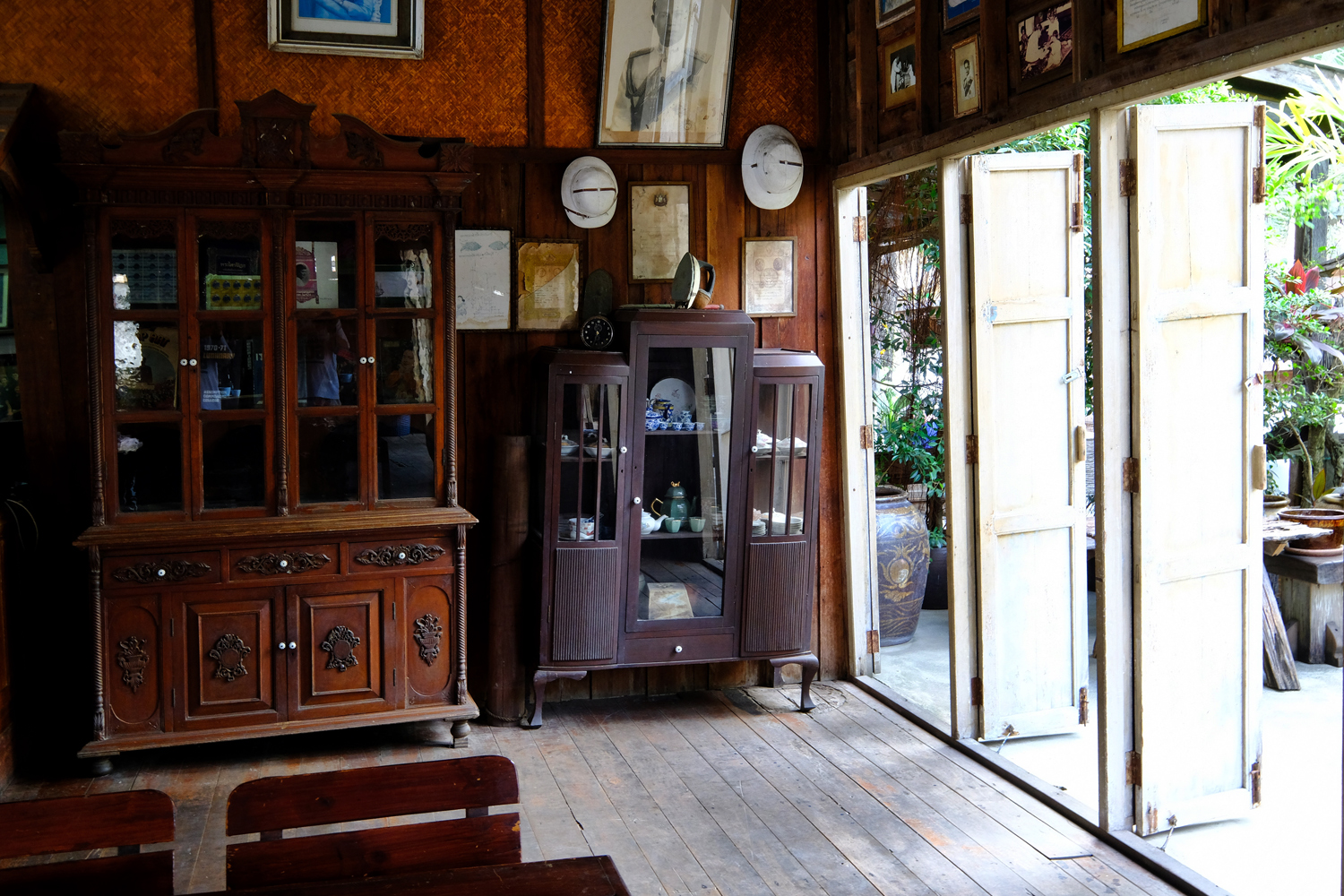 Before our meal arrived, I took the liberty to look around the old atmospheric wooden building.
Before our meal arrived, I took the liberty to look around the old atmospheric wooden building.
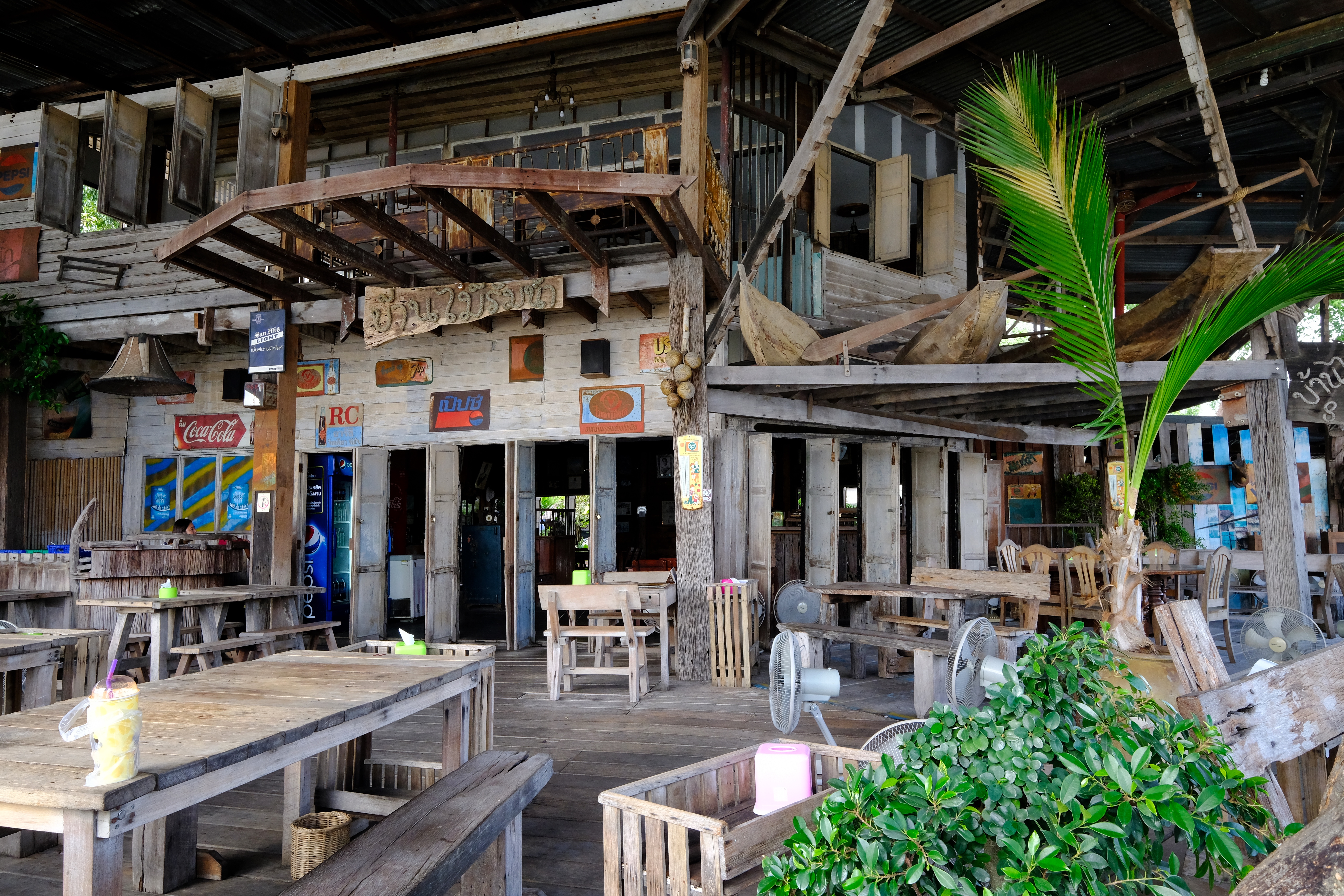 The restaurant interior was amazing . . . and very artfully done.
The restaurant interior was amazing . . . and very artfully done.
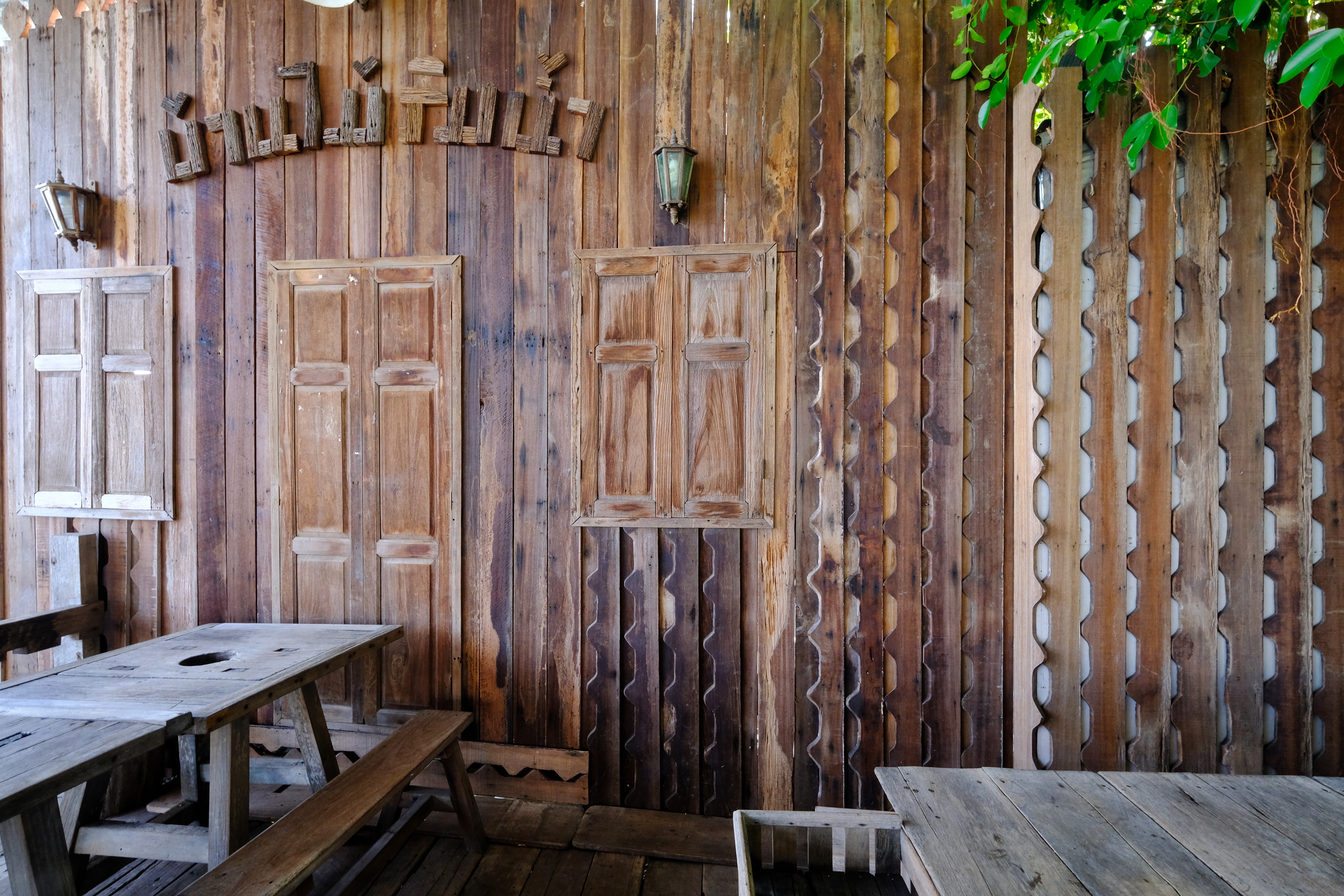 An interior wall at the restaurant.
An interior wall at the restaurant.
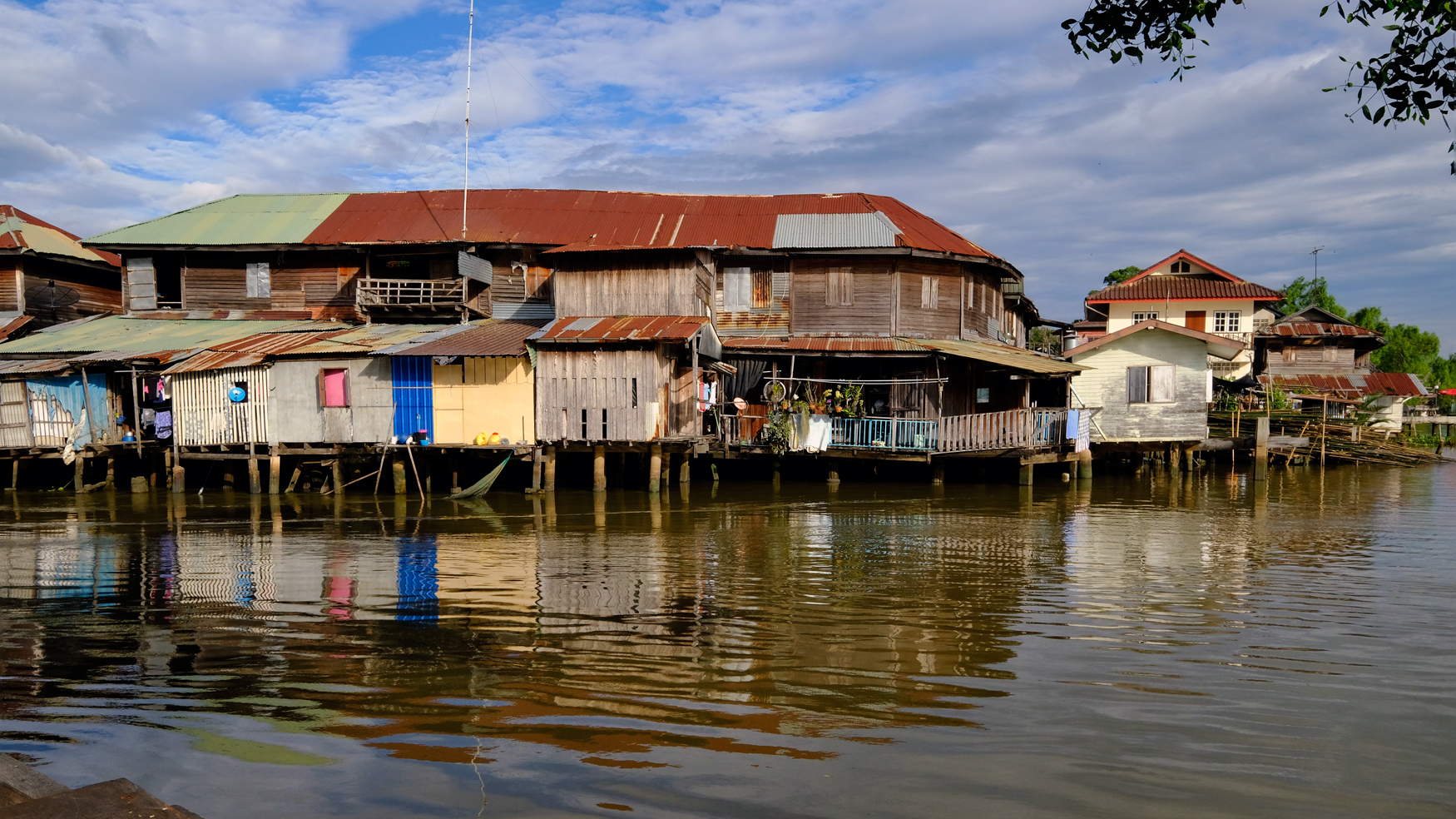 The view from our diner table!
The view from our diner table!
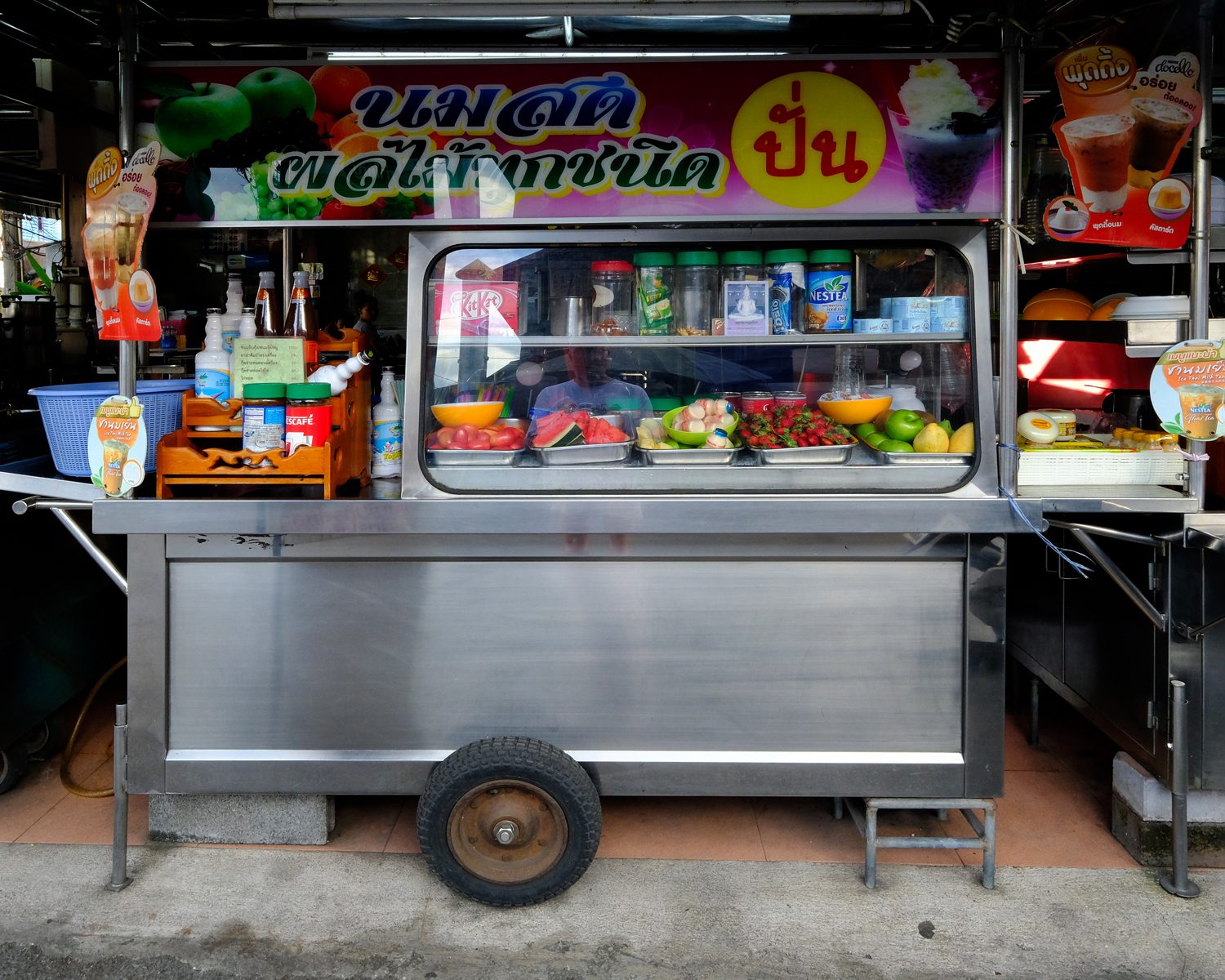 After our big late lunch we went out walking again . . . what did we see? More food!
After our big late lunch we went out walking again . . . what did we see? More food!
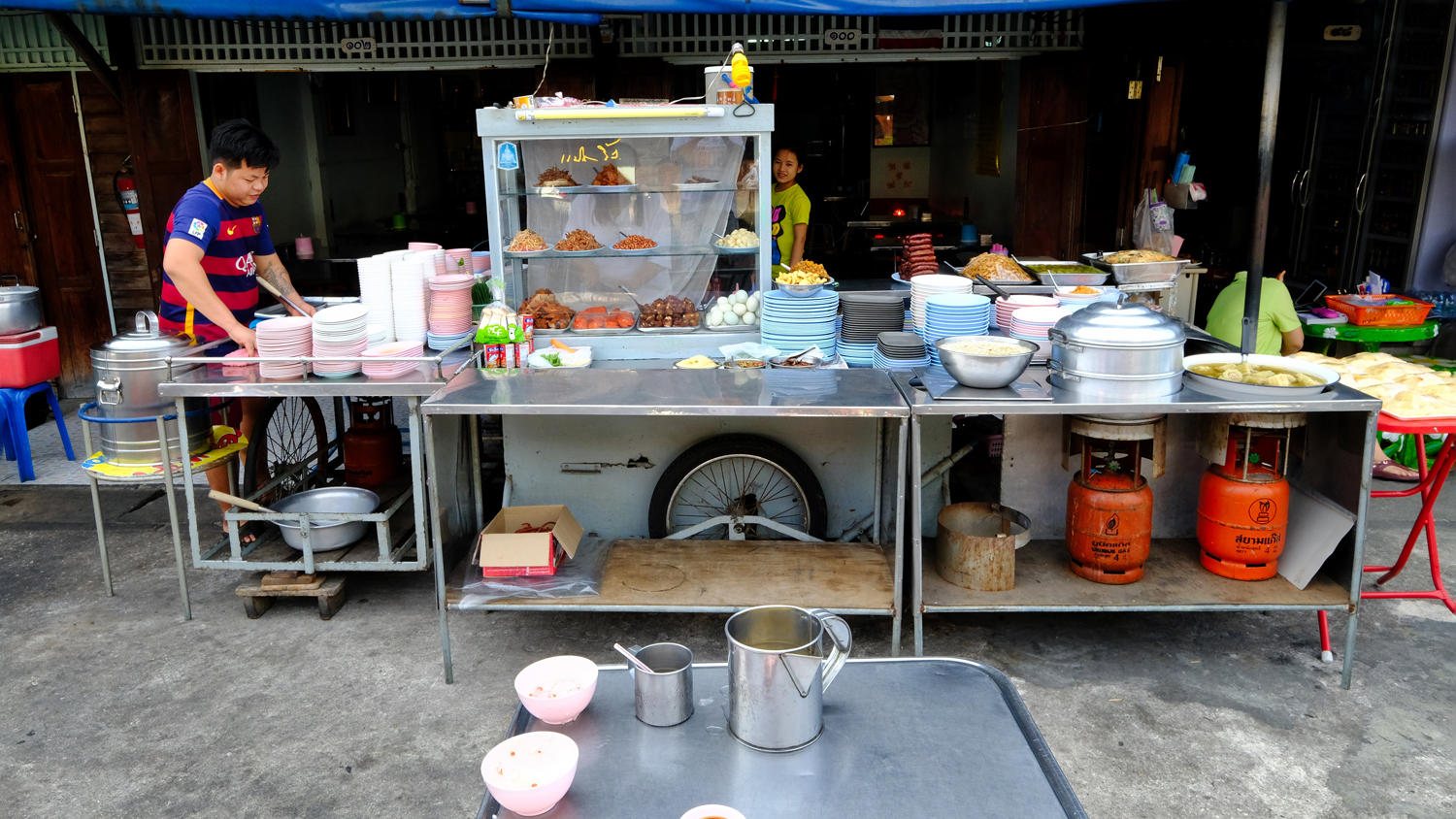 The vendors were all busy getting ready for the evening rush.
The vendors were all busy getting ready for the evening rush.
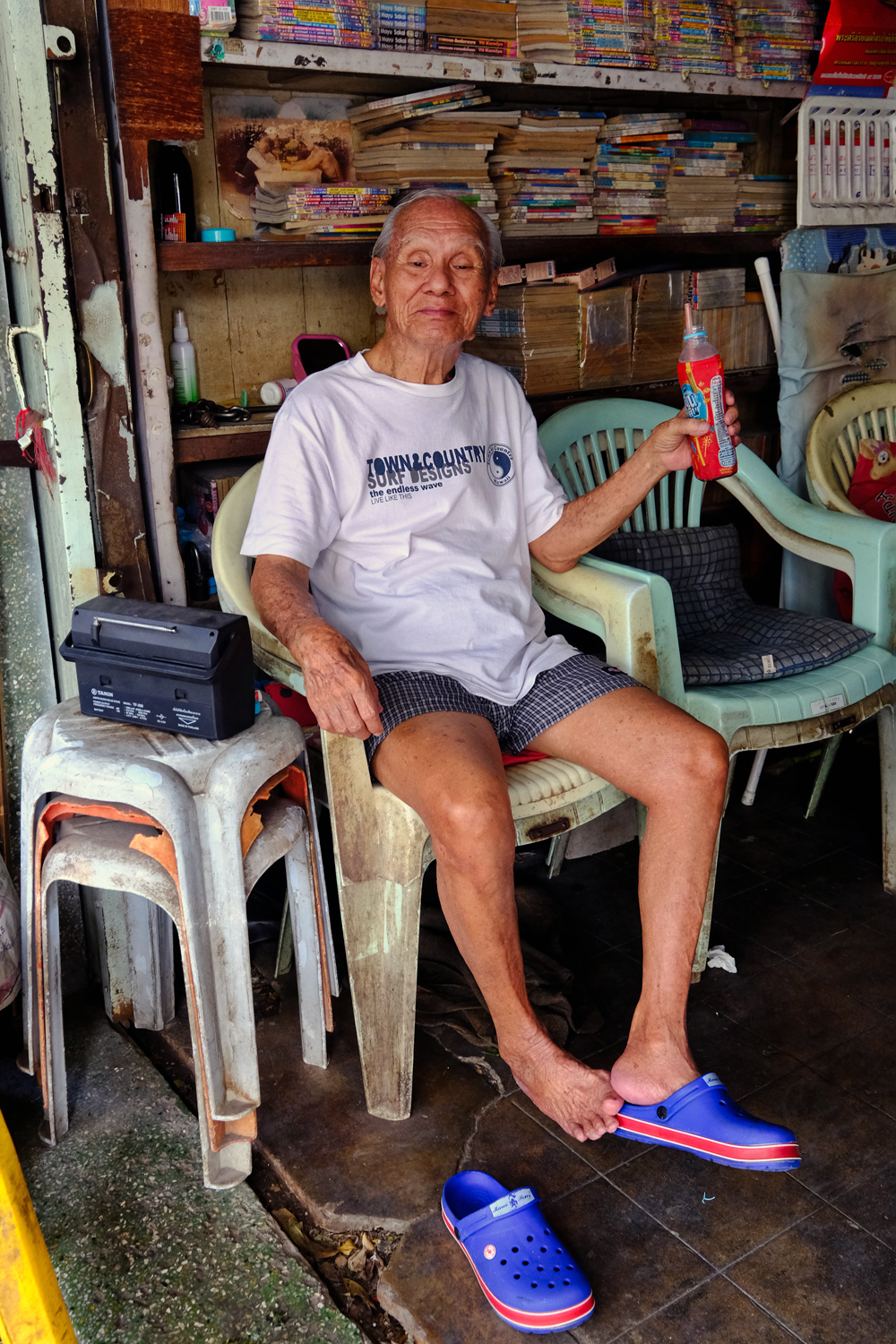 We asked this shopkeeper how long he had been sitting there . . . he said, "62 years."
We asked this shopkeeper how long he had been sitting there . . . he said, "62 years."
 Tai street food is delicious . . . but we were already too full.
Tai street food is delicious . . . but we were already too full.
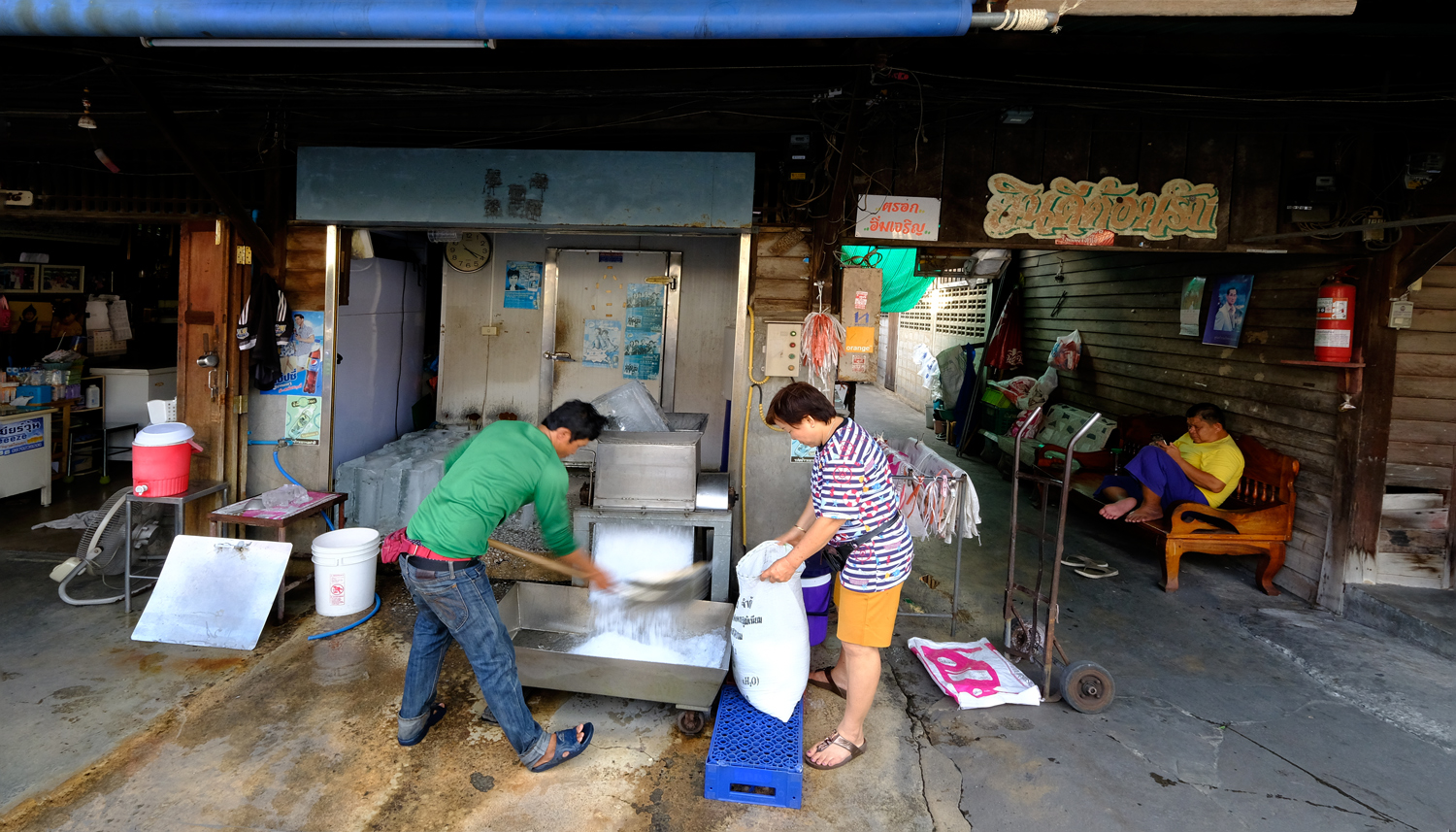 We walked around a working town . . . an iceman packing his product with help.
We walked around a working town . . . an iceman packing his product with help.
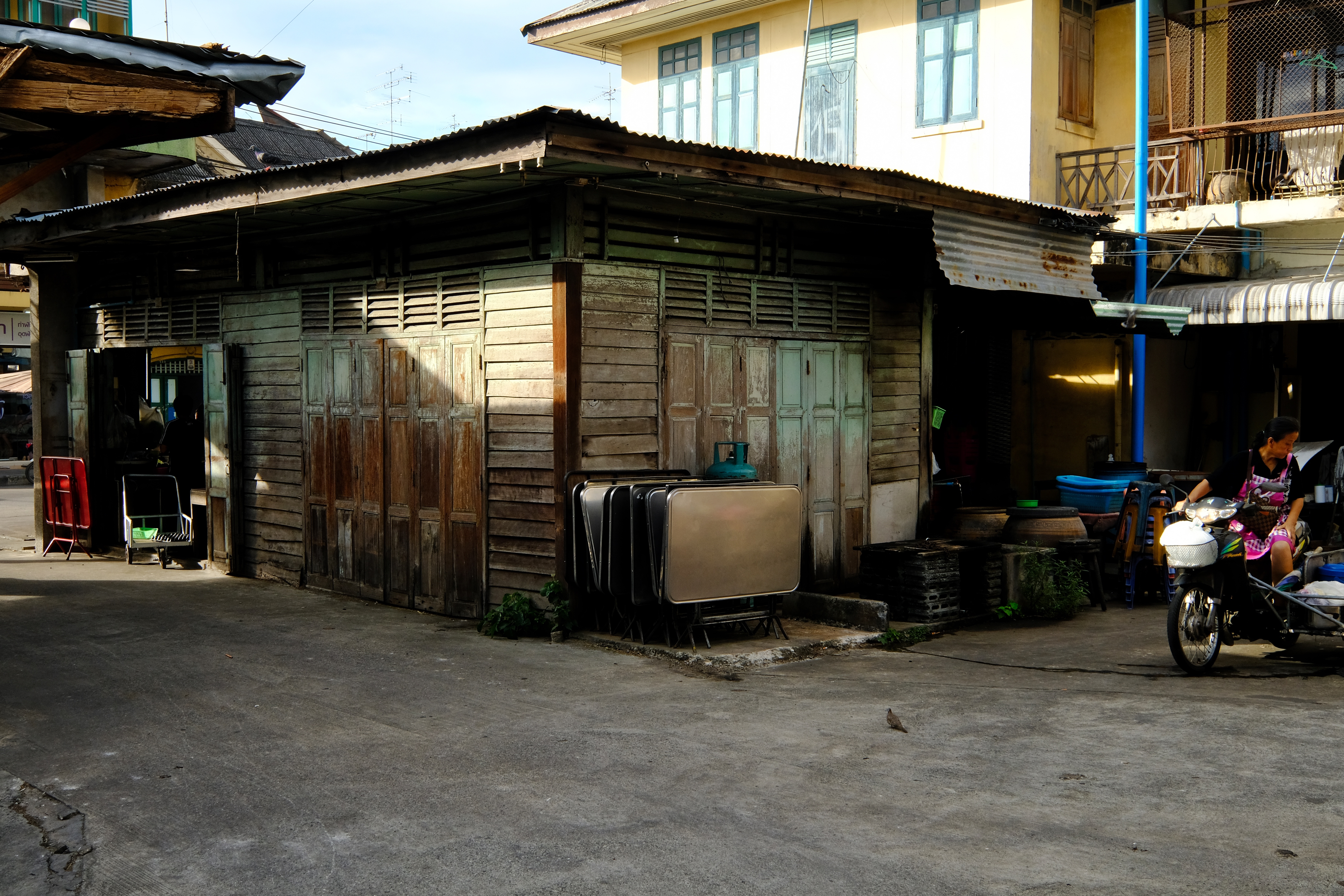 An old shop house in the city center of Chachoengsao, Thailand.
An old shop house in the city center of Chachoengsao, Thailand.
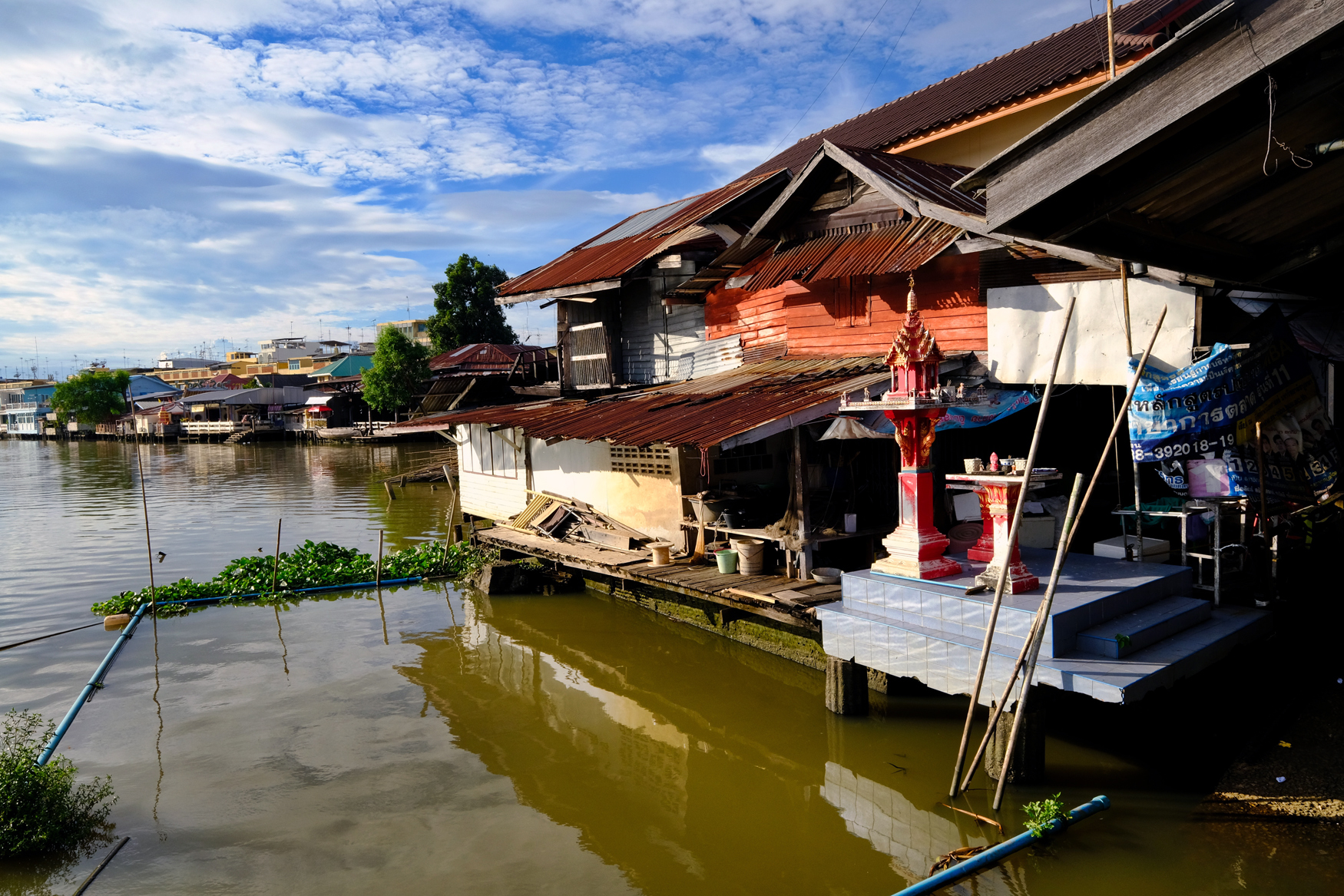 Chachoengsao riverfront.
Chachoengsao riverfront.
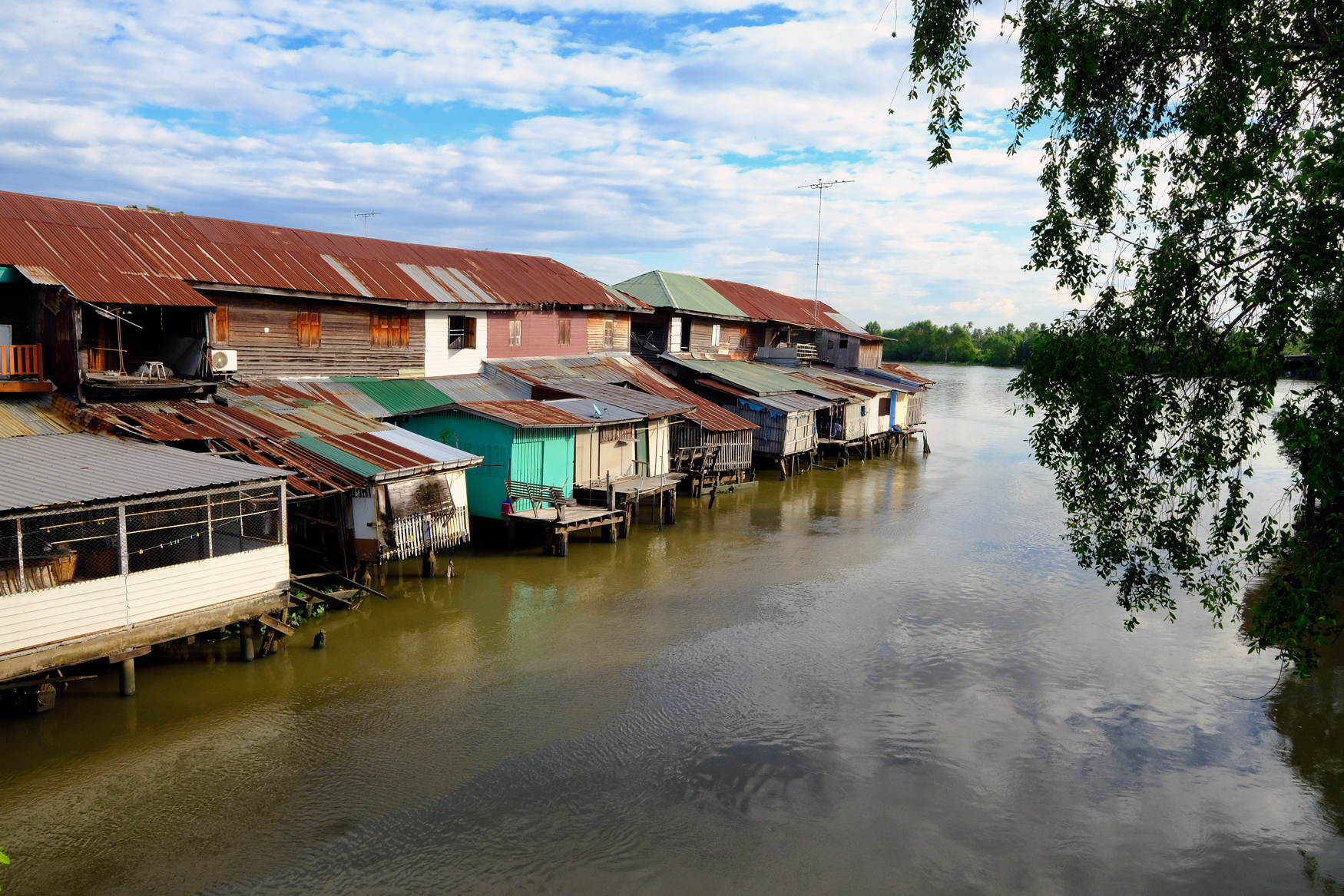 Such a beautiful place . . . but time to leave this part of town . . we still have a famous Wat and Buddha to see.
Such a beautiful place . . . but time to leave this part of town . . we still have a famous Wat and Buddha to see.
PART SIX: Wat Sathorn Wararam Worawihan
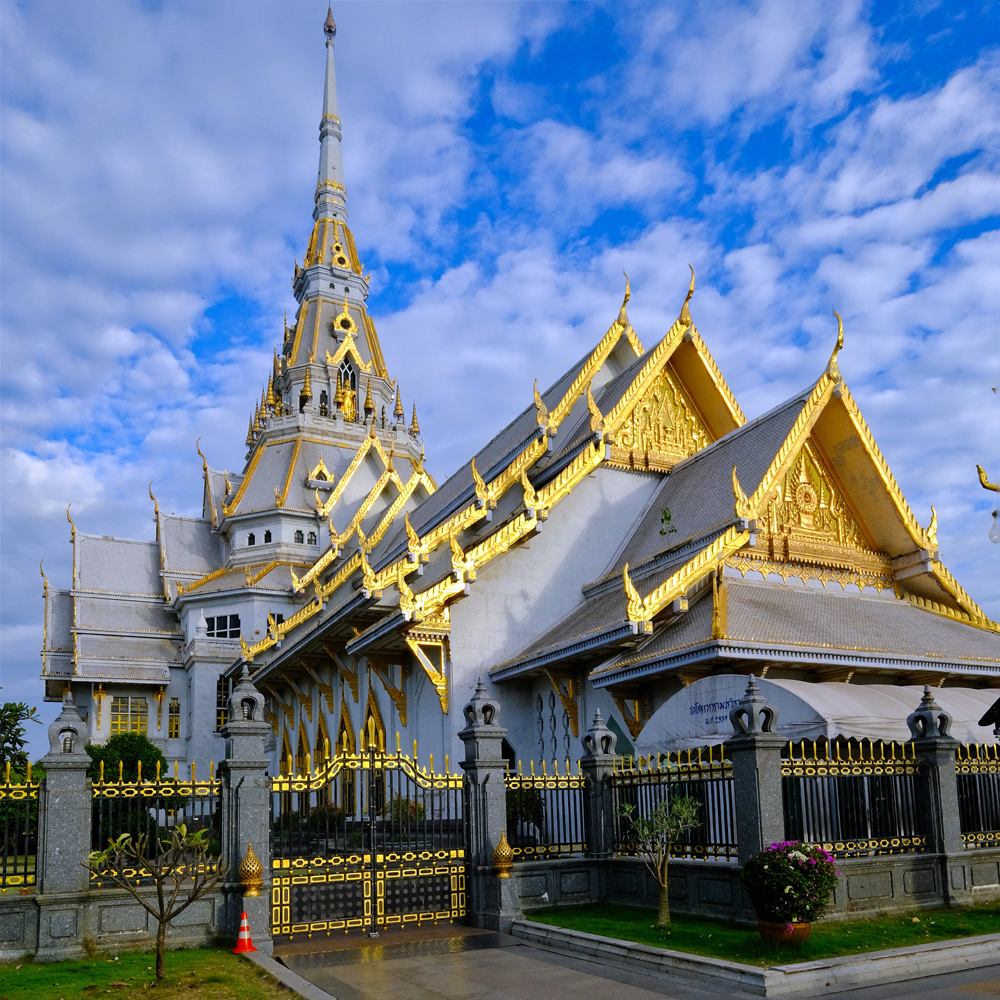 Wat Sothonwararam is located near the river in another part of Chachoengsao. It is one of the most famous Buddhist temples in the world, and is also possibly the largest Buddhist temple in the world. The temple has the ‘Luangpho Phuttha Sothon,’ the revered Buddha image.
Wat Sothonwararam is located near the river in another part of Chachoengsao. It is one of the most famous Buddhist temples in the world, and is also possibly the largest Buddhist temple in the world. The temple has the ‘Luangpho Phuttha Sothon,’ the revered Buddha image.
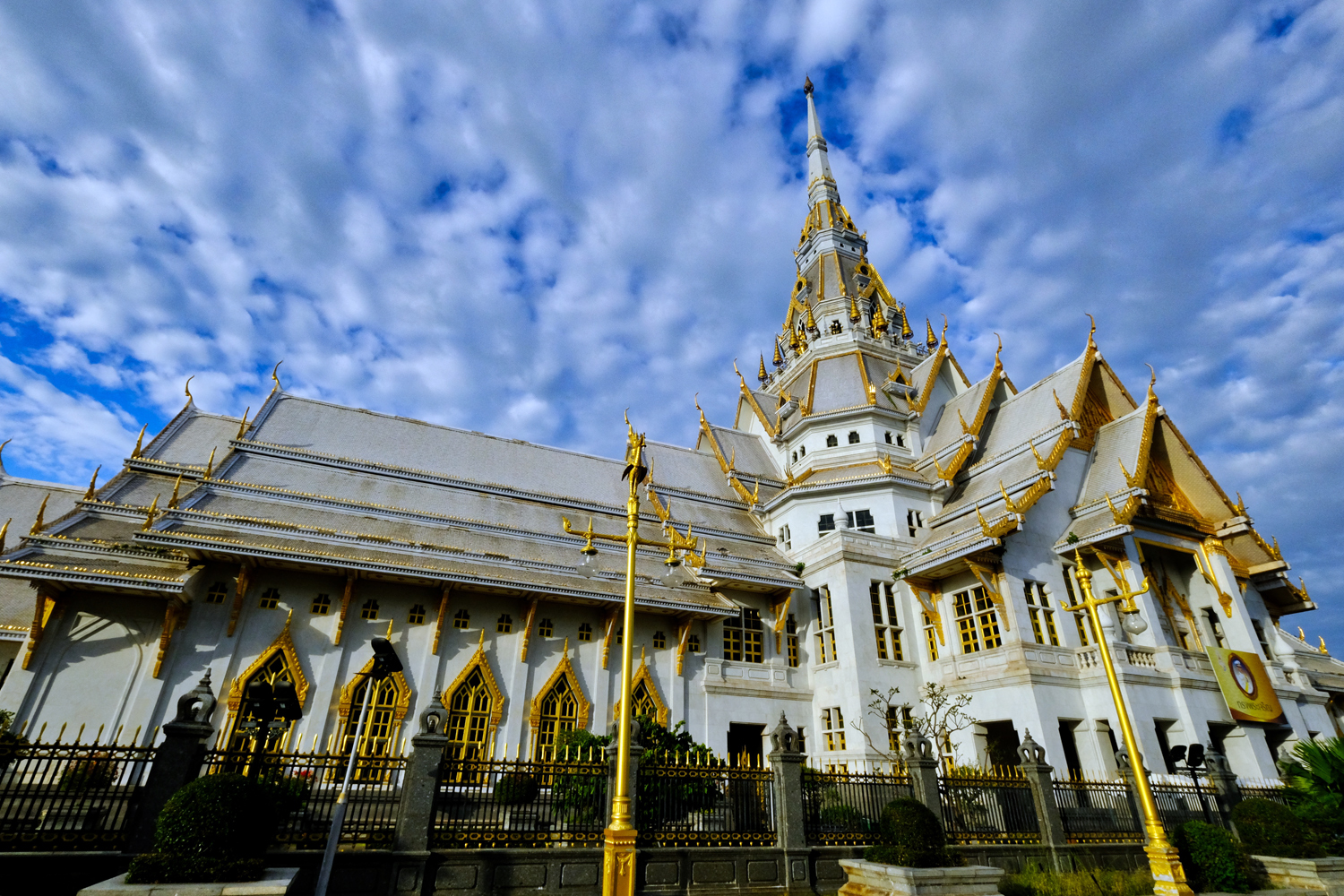 One of the most beautiful, and unique Buddhist Wats I have seen in Thailand.
One of the most beautiful, and unique Buddhist Wats I have seen in Thailand.
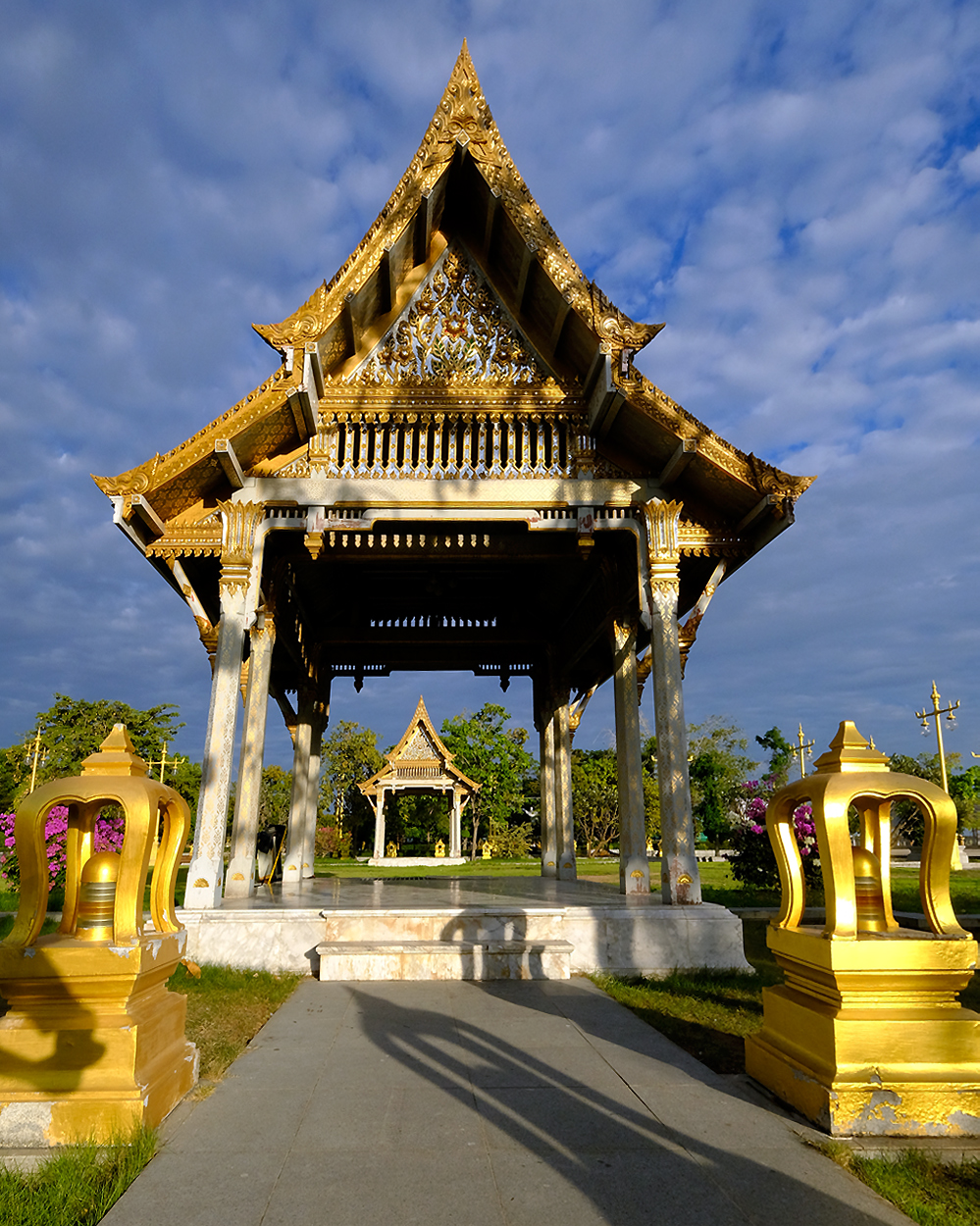 Many golden salas surround the Wat.
Many golden salas surround the Wat.
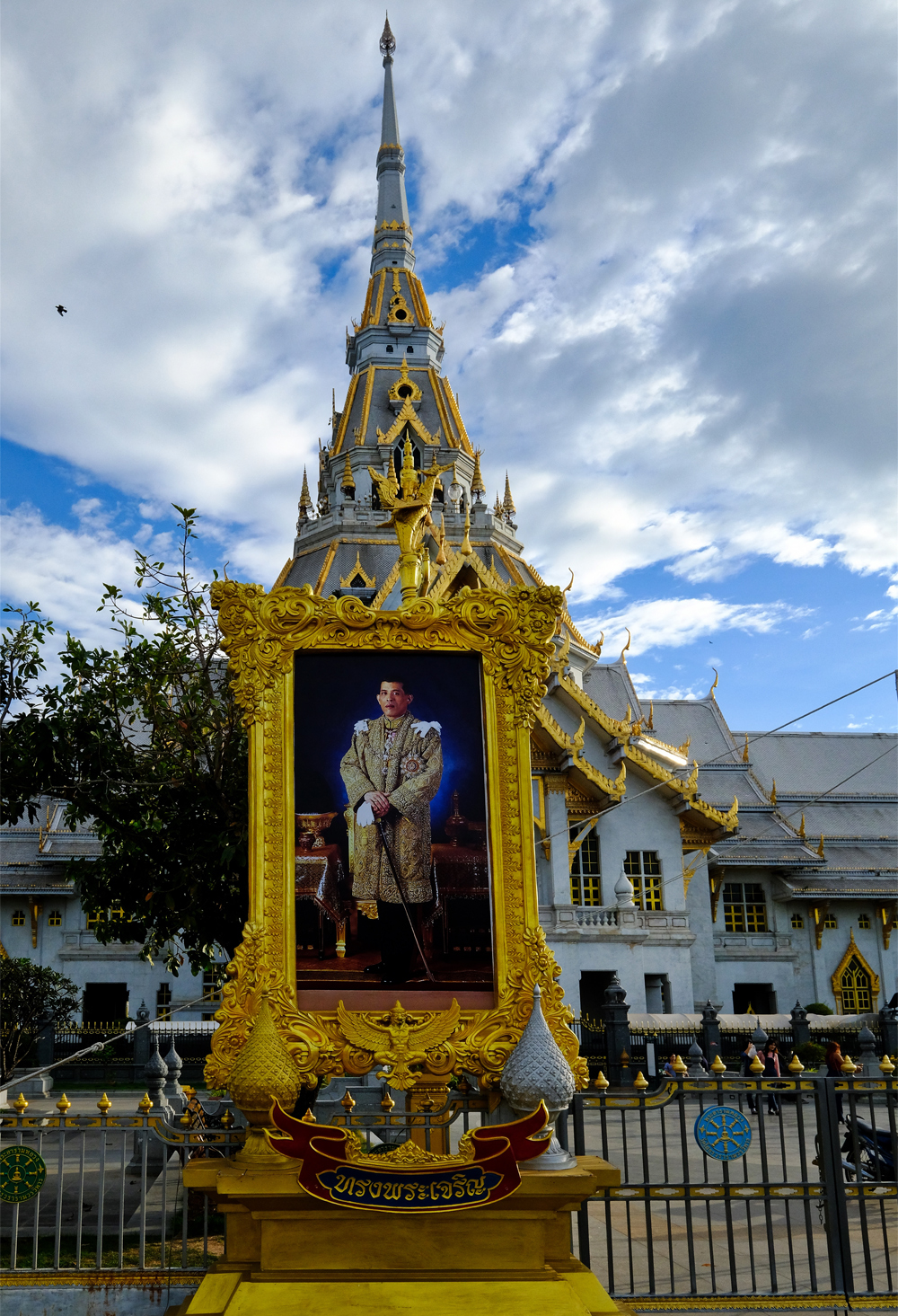 The Wat is under royal patronage. Here: a photo of the new King of Thailand.
The Wat is under royal patronage. Here: a photo of the new King of Thailand.
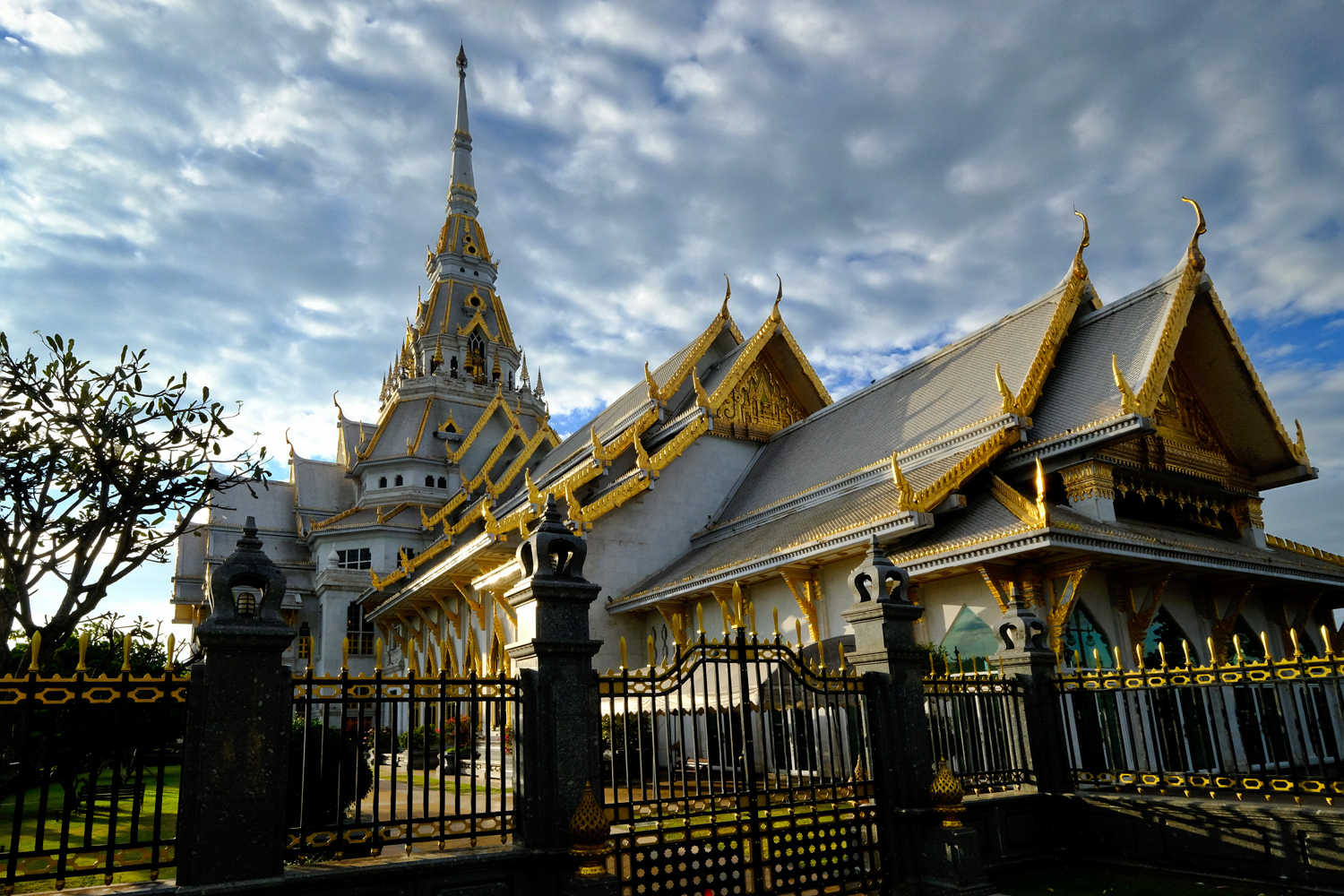 We had come to see the famous Buddha likeness inside, but, alas, we were too late . . . it closed at 5:00pm. What to do now? Let's go see some bats!
We had come to see the famous Buddha likeness inside, but, alas, we were too late . . . it closed at 5:00pm. What to do now? Let's go see some bats!
PART SEVEN: A BAT TEMPLE
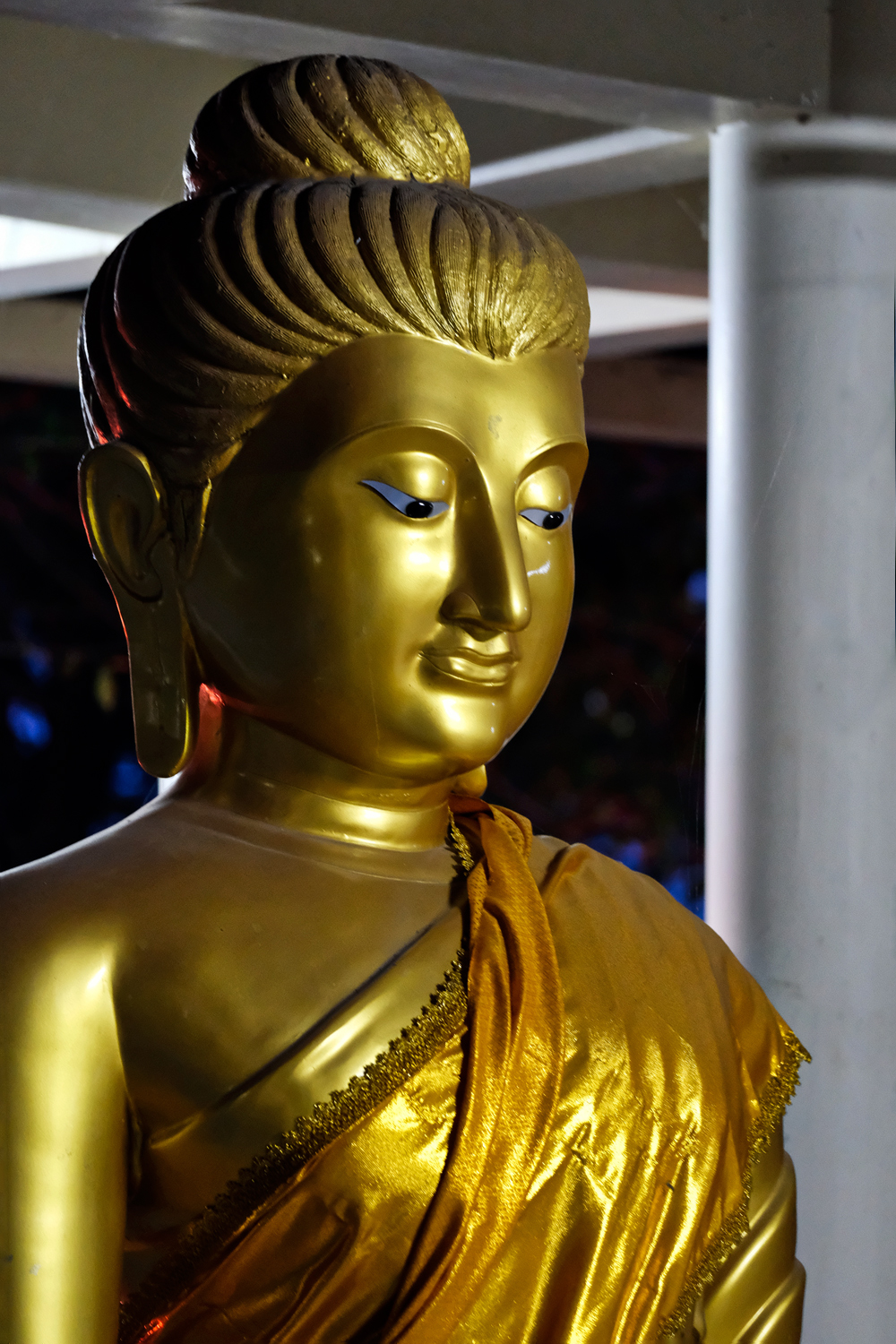 John read online that there was a Buddhist temple on the way back to Bangkok that had a mass flight of fruit bats from it's trees every evening and if we hurried we could see it. So we went on some very small rural roads and arrived just as it turned dark. A beautiful Wat . . . I took photos of the Buddhas first.
John read online that there was a Buddhist temple on the way back to Bangkok that had a mass flight of fruit bats from it's trees every evening and if we hurried we could see it. So we went on some very small rural roads and arrived just as it turned dark. A beautiful Wat . . . I took photos of the Buddhas first.
Very old and revered Buddha images.
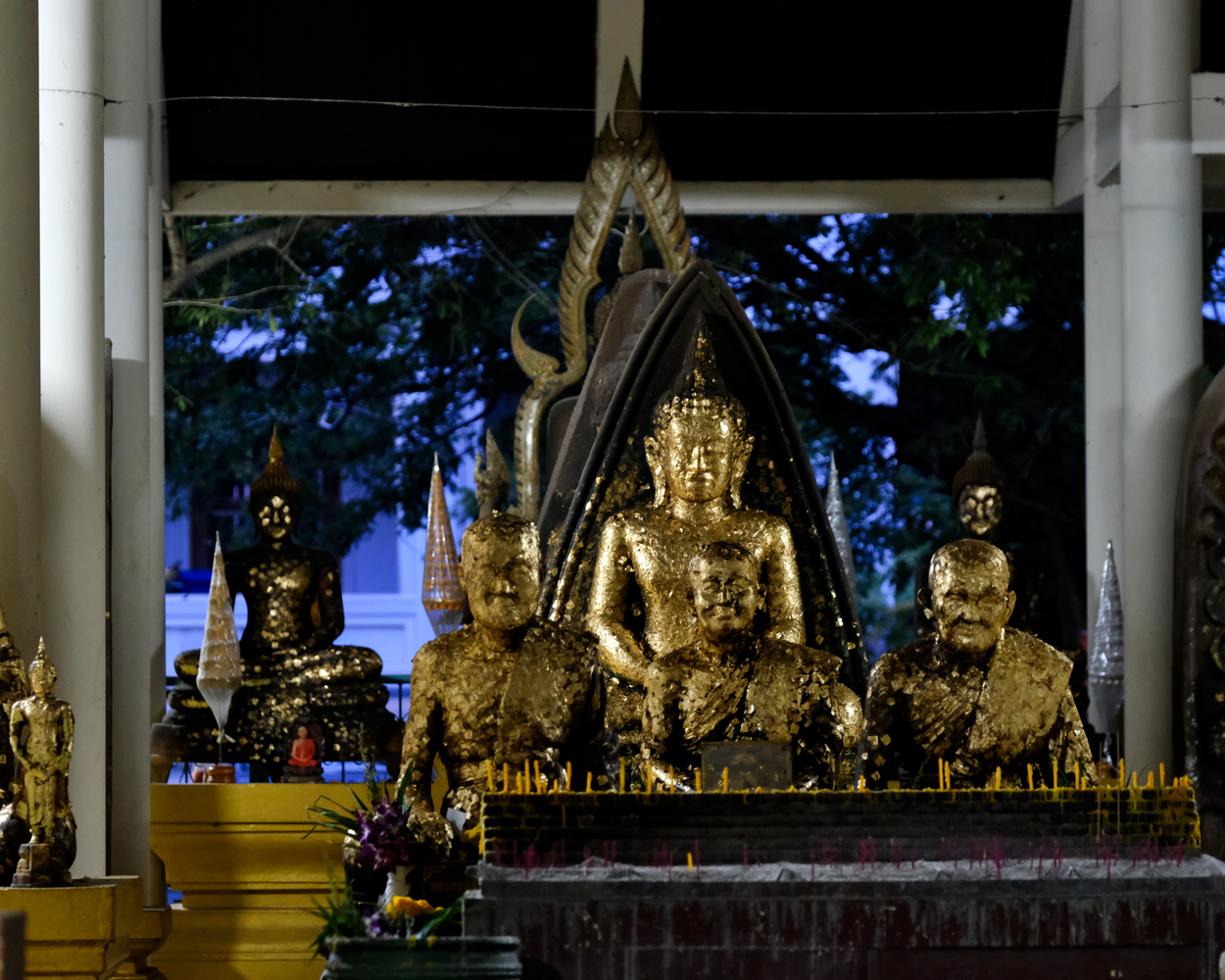 More revered Buddha images at the bat Wat.
More revered Buddha images at the bat Wat.
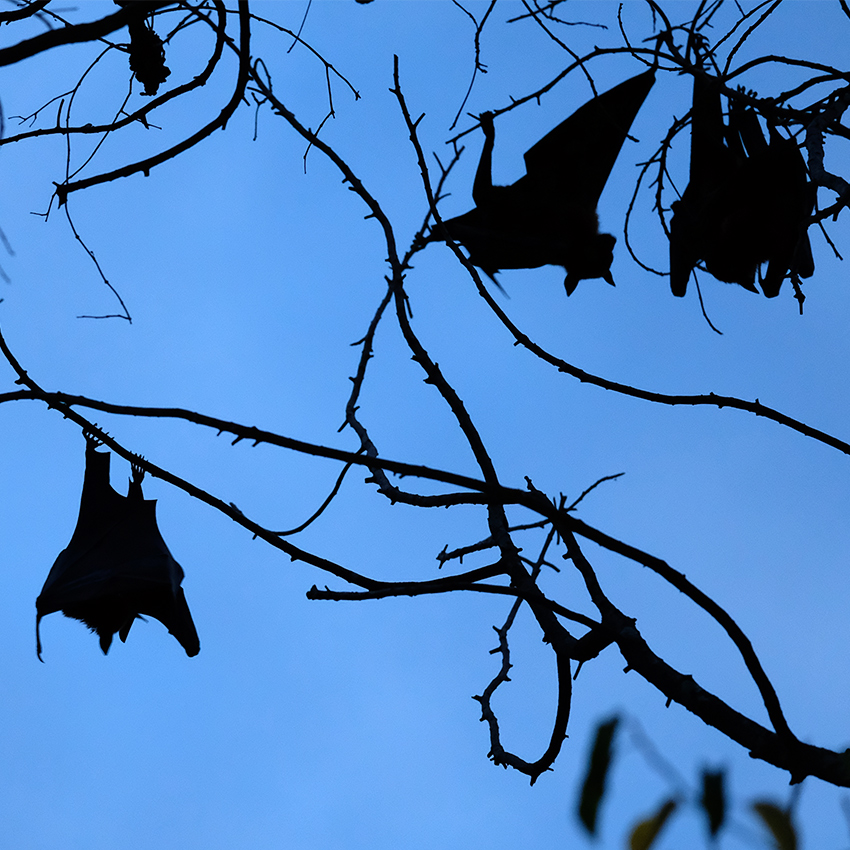 The trees were hung with hundreds of very large fruit bats!
The trees were hung with hundreds of very large fruit bats!
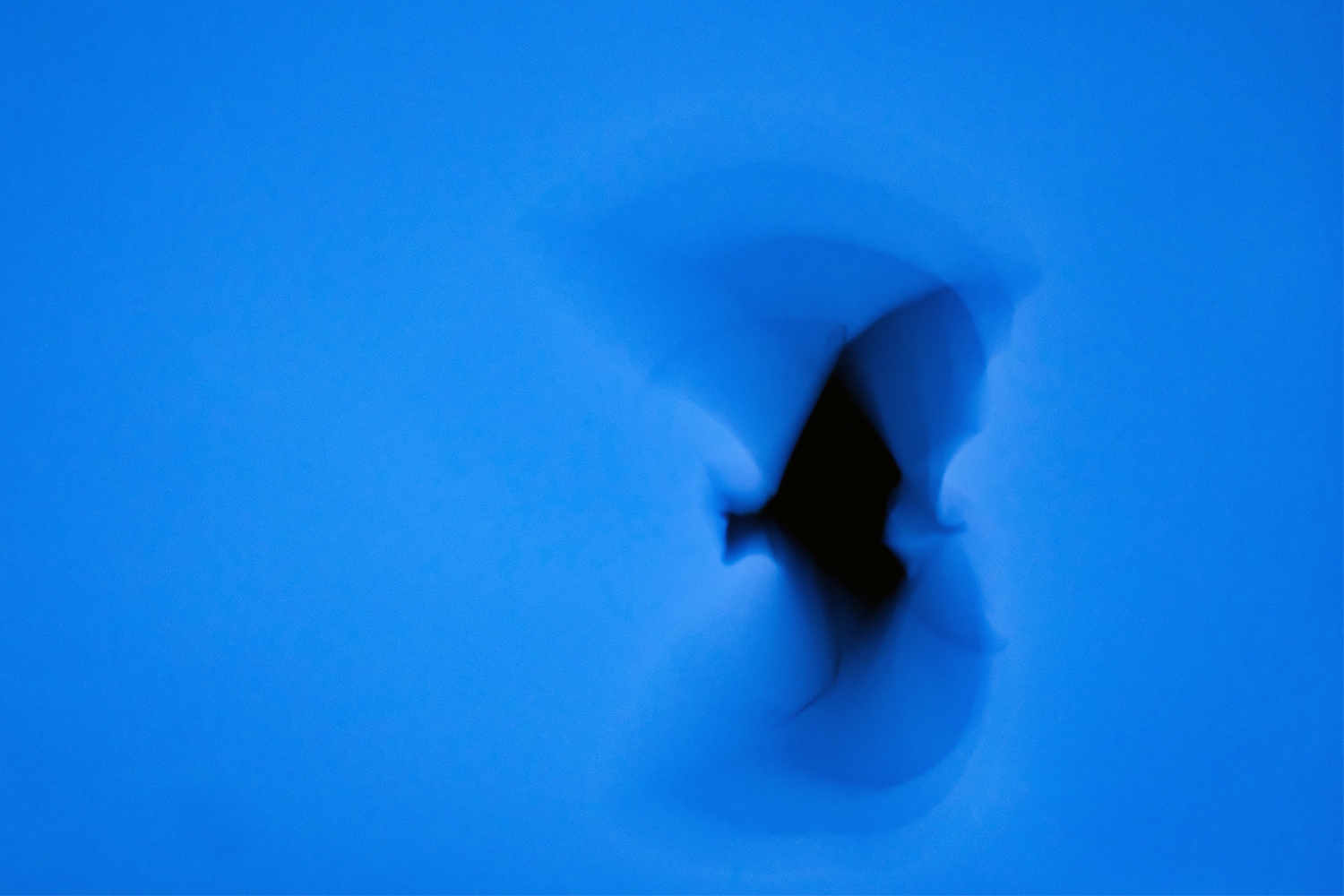 The bats flew around so fast, and it was getting so dark, that it was almost impossible to photograph them . . . but I managed this one shot I like.
The bats flew around so fast, and it was getting so dark, that it was almost impossible to photograph them . . . but I managed this one shot I like.
John and I had a wonderful day trip out of Bangkok. We left at 6:30am and returned to Bangkok at 8:30pm. What a day!
Istanbul: The Sights
 Friday, August 8, 2014 at 12:08AM
Friday, August 8, 2014 at 12:08AM  Istanbul! An amazing city in an amazing setting!
Istanbul! An amazing city in an amazing setting!
 Istanbul is a gigantic city, both in terms of physical size (2,063 sq. mi.) and population (est. 14.2 million). It is the 5th largest city in the world, and the largest in Europe.
Istanbul is a gigantic city, both in terms of physical size (2,063 sq. mi.) and population (est. 14.2 million). It is the 5th largest city in the world, and the largest in Europe.
 The sea of humanity stretches to the horizon in every direction. This was our hotel room view. But, of course, we didn't come to see the city from above . . . we came to get lost in the maze of small streets.
The sea of humanity stretches to the horizon in every direction. This was our hotel room view. But, of course, we didn't come to see the city from above . . . we came to get lost in the maze of small streets.
 Our hotel was just off Taksim Square, a more or less "central" location with easy walking to most attractions.
Our hotel was just off Taksim Square, a more or less "central" location with easy walking to most attractions.
 Taksin Square leads directly to Istiklal Avenue, a crowded and atmospheric walking street with old trams.
Taksin Square leads directly to Istiklal Avenue, a crowded and atmospheric walking street with old trams.
 There were always crowds on Istiklal Avenue.
There were always crowds on Istiklal Avenue.
 Istanbul is an ancient city, perhaps the longest inhabited city on earth. There is a wonderfu mix of archectural styes from many eras all mixed togther to good effect.
Istanbul is an ancient city, perhaps the longest inhabited city on earth. There is a wonderfu mix of archectural styes from many eras all mixed togther to good effect.
 Remnants of Byzantium mix with modern and Victorian styles.
Remnants of Byzantium mix with modern and Victorian styles.
 Turn in what looks like an inviting shop and discover an indoor solarium/galleria with many restaurents.
Turn in what looks like an inviting shop and discover an indoor solarium/galleria with many restaurents.
 Many charming old structures telling a story of years of habitation.
Many charming old structures telling a story of years of habitation.
 Yes, Turkish people eat Turkish Delight . . . so do the tourists. A major blog entry follows this one with many nice photoraphs of what can be found in Istanbul. (Go to "Istanbul: Things, Mostly Edible")
Yes, Turkish people eat Turkish Delight . . . so do the tourists. A major blog entry follows this one with many nice photoraphs of what can be found in Istanbul. (Go to "Istanbul: Things, Mostly Edible")
 Turkish people are very political. We arrived in the middle of a heated national election. In fact, our plane departed on election day. There is often 'trouble' surounding elections.
Turkish people are very political. We arrived in the middle of a heated national election. In fact, our plane departed on election day. There is often 'trouble' surounding elections.
 But it looked like the "Polis" were used to these kind of things and were prepared. That's a pretty serious anti-riot vehicle there!
But it looked like the "Polis" were used to these kind of things and were prepared. That's a pretty serious anti-riot vehicle there!
 Although London claims to have the most security CCTV coverage, Istanbul must be a close second. There were cameras everywhere!
Although London claims to have the most security CCTV coverage, Istanbul must be a close second. There were cameras everywhere!
 Of course, walking down the avenue every day we discovered some favorite places to eat. We had lunch three times at the Konak Kabop House. Yummie!
Of course, walking down the avenue every day we discovered some favorite places to eat. We had lunch three times at the Konak Kabop House. Yummie!
 The interior of the Konak Kabap House was sumptiously ornate. Lovely.
The interior of the Konak Kabap House was sumptiously ornate. Lovely.
 We had breakfast and one dinner, and several afternoon coffees at the elegant and trendy The House Cafe, on Ortaköy. Excellent food and drink and a beautiful atmosphere. Highly recommended.
We had breakfast and one dinner, and several afternoon coffees at the elegant and trendy The House Cafe, on Ortaköy. Excellent food and drink and a beautiful atmosphere. Highly recommended.
 The Tram ran down Ortaköy to a part of the city dating from the 5th century, Beyoğlu.
The Tram ran down Ortaköy to a part of the city dating from the 5th century, Beyoğlu.
 Beyoğlu is a section of Old Istanbul with charming cobbled steep walking streets, small shops, and tons of tourists. I don't mind tourists: they are not at home watching TV. That's good.
Beyoğlu is a section of Old Istanbul with charming cobbled steep walking streets, small shops, and tons of tourists. I don't mind tourists: they are not at home watching TV. That's good.
 Many inviting side streets and alleys led off to adventures . . . untaken.
Many inviting side streets and alleys led off to adventures . . . untaken.
 This photo typifies the archectural wonder of the old Beyoğlu district.
This photo typifies the archectural wonder of the old Beyoğlu district.
 Istanbul tourist curios was of a pretty high quality generally.
Istanbul tourist curios was of a pretty high quality generally.
 Small Mosques were tucked away here and there.
Small Mosques were tucked away here and there.
 The streets around Galata Tower were festooned with political banners and flags. This part of the city was a Genoese colony for centuries.
The streets around Galata Tower were festooned with political banners and flags. This part of the city was a Genoese colony for centuries.
 The Galata Tower, built as Christea Turris (Tower of Christ) in 1348. We paid a token fee to take the elevator to the top . . . .
The Galata Tower, built as Christea Turris (Tower of Christ) in 1348. We paid a token fee to take the elevator to the top . . . .
 The views of Istanbul from the top of the Galata Tower were magnificent!
The views of Istanbul from the top of the Galata Tower were magnificent!
 Looking across from Galata Tower to the great Mosques of Istanbul.
Looking across from Galata Tower to the great Mosques of Istanbul.
 The square in front of Galata Tower was packed with political banners and flags . . . .
The square in front of Galata Tower was packed with political banners and flags . . . .
 Electioneering everywhere!
Electioneering everywhere!
 Galata Ssuare also had a fine cafe. We stopped for strong Turkish coffee.
Galata Ssuare also had a fine cafe. We stopped for strong Turkish coffee.
 We continued our walk around the charming old Italian quarter.
We continued our walk around the charming old Italian quarter.
 I would love to have had the time to explore and photograph these side streets . . . like I did so often during my many years in Bangkok.
I would love to have had the time to explore and photograph these side streets . . . like I did so often during my many years in Bangkok.
 Also like Bangkok, you could get freshly squeezed fruit juice anywhere you went. The pomegranet/orange was delicious.
Also like Bangkok, you could get freshly squeezed fruit juice anywhere you went. The pomegranet/orange was delicious.
 We walked through this part of town many time during the seven days were in Istanbul.
We walked through this part of town many time during the seven days were in Istanbul.
 There were always artistic photo opportunities wherever I went. I have made multiple postings on Istanbul in the following sections on the people and things of Istanbul.
There were always artistic photo opportunities wherever I went. I have made multiple postings on Istanbul in the following sections on the people and things of Istanbul.
 I'm going to have to go back through my photos . . . I think I can put together a study of street lamps from around the world. Istanbul had some very nice ones.
I'm going to have to go back through my photos . . . I think I can put together a study of street lamps from around the world. Istanbul had some very nice ones.
 Not every street was beautiful in Istanbul.
Not every street was beautiful in Istanbul.
 We regularly returned to our hotel near Taksim Square . . . and we were always greeted with this panoramic view of the city from our shoebox room.
We regularly returned to our hotel near Taksim Square . . . and we were always greeted with this panoramic view of the city from our shoebox room.
 The Republic Monument stands in Taksim Square, near ouur hotel. The monument commemorated the founding of the Turkish Republic in 1923.
The Republic Monument stands in Taksim Square, near ouur hotel. The monument commemorated the founding of the Turkish Republic in 1923.
THE TOURS
Yes, we also took two organized bus tours to get the lay of the land. It was a good idea: we learned where to come back to and spend more time.
 The Sultan Ahmed Mosque, also called The Blue Mosque, was fantastic!
The Sultan Ahmed Mosque, also called The Blue Mosque, was fantastic!
 It was not a very nice day when we visited The Blue Mosque on tour. It was drizzly.
It was not a very nice day when we visited The Blue Mosque on tour. It was drizzly.
 Although the exterior of this 16th century mosque is certainly impressive, and especially against the grey sky with the siholettes of the denuded trees in he foreground . . . .
Although the exterior of this 16th century mosque is certainly impressive, and especially against the grey sky with the siholettes of the denuded trees in he foreground . . . .
 The interior of the Blue Mosque may be the most beautiful space I have ever been in. It certainly rivals St. Pauls Cathedral in The Vatican.
The interior of the Blue Mosque may be the most beautiful space I have ever been in. It certainly rivals St. Pauls Cathedral in The Vatican.
 WOW! Just WOW!
WOW! Just WOW!
 I took many, many photos here . . . and you can see why. Incredible.
I took many, many photos here . . . and you can see why. Incredible.
 The guide was very gracious and generous with questions about the mosque and Islam in general. The Blue Mosque is a National Monument and not an every day mosque. During his explanation of the construction methods used in building the Blue Mosque I looked up . . . .
The guide was very gracious and generous with questions about the mosque and Islam in general. The Blue Mosque is a National Monument and not an every day mosque. During his explanation of the construction methods used in building the Blue Mosque I looked up . . . .
 . . . and WOW!
. . . and WOW!
 We exited through a portico which also had a wonderful ceiling. The entirety of the structure guided your attention and gaze up, to 'the heavens.'
We exited through a portico which also had a wonderful ceiling. The entirety of the structure guided your attention and gaze up, to 'the heavens.'
 We left the Blue Mosque and walked next door to the Hagia Sophia, the grandest Mosque of all . . . and one of the oldest. Built as a Greek Orthodox cathedral in 537 (!!), it was the largest building in the world for over 900 years. It was a cathedral for over 1000 years before being converted into a mosque. More to come on this magnifiscent structure.
We left the Blue Mosque and walked next door to the Hagia Sophia, the grandest Mosque of all . . . and one of the oldest. Built as a Greek Orthodox cathedral in 537 (!!), it was the largest building in the world for over 900 years. It was a cathedral for over 1000 years before being converted into a mosque. More to come on this magnifiscent structure.
 One of our tours took us from the 'European' side of Istanbul across the Bosphorus Bridge (built 1973) to the 19th century Beylerbeyi Palace and gardens. The view of the Bosphorus Bridge from the gardens was magnifiscent.
One of our tours took us from the 'European' side of Istanbul across the Bosphorus Bridge (built 1973) to the 19th century Beylerbeyi Palace and gardens. The view of the Bosphorus Bridge from the gardens was magnifiscent.
 The Bosphorus Bridge is the 4th longest suspension span in the world. Yes, that very dark cloud did rain on us!
The Bosphorus Bridge is the 4th longest suspension span in the world. Yes, that very dark cloud did rain on us!
 The Beylerbeyi Palace gardens were interesting too.
The Beylerbeyi Palace gardens were interesting too.
 Of course no visit to Istanbul would be complete without a visit to the 13th century The Grand Bazaar! With 61 covered streets and 3000 shops, it is a curios and trinket shoppers dream. Unfortunately it has become primarily a tourist spot . . . with inflated tourist prices. They would bargain and haggle, but not all that much . . . it was expensive. Foutunately the hawkers were not too aggressive.
Of course no visit to Istanbul would be complete without a visit to the 13th century The Grand Bazaar! With 61 covered streets and 3000 shops, it is a curios and trinket shoppers dream. Unfortunately it has become primarily a tourist spot . . . with inflated tourist prices. They would bargain and haggle, but not all that much . . . it was expensive. Foutunately the hawkers were not too aggressive.
 The Grand Bazaar was very atmospheric.
The Grand Bazaar was very atmospheric.
 A photographers dream! I have posted many, many more captures from the Grand Bazaar in the following sections, 'People' and 'Things' of Istanbul. The origional Shopping Mall!
A photographers dream! I have posted many, many more captures from the Grand Bazaar in the following sections, 'People' and 'Things' of Istanbul. The origional Shopping Mall!
 Perhaps more interesting is the Spice Bazaar (called The Egyptian Spice Market by many locals) located near the New Mosque.
Perhaps more interesting is the Spice Bazaar (called The Egyptian Spice Market by many locals) located near the New Mosque.
 The Spice Bazaar is a living and breathing local market that has been active since 1660. That's 357 years as a spice market!
The Spice Bazaar is a living and breathing local market that has been active since 1660. That's 357 years as a spice market!
 Tourists and Turks mingled in a free and friendly manner in the Spice Bazaar. The Turks were a very gracious and helphul people. Yes, we bought nice things here to bring back to Scotland. Again, I posted many more photos from the Spice Bazaar in the next sections of this blog.
Tourists and Turks mingled in a free and friendly manner in the Spice Bazaar. The Turks were a very gracious and helphul people. Yes, we bought nice things here to bring back to Scotland. Again, I posted many more photos from the Spice Bazaar in the next sections of this blog.
 The neighborhood around the Spice Bazaar was a maze of small lanes crowded with shoppers. We found a "State Tea Shop" and bought delicious government cost controlled organic Turkish tea . . . cheap!
The neighborhood around the Spice Bazaar was a maze of small lanes crowded with shoppers. We found a "State Tea Shop" and bought delicious government cost controlled organic Turkish tea . . . cheap!
 The Spice Bazaar was located next to The New Mosque (Yeni Cami). "New" meaning construction began in 1597 and compleeted in 1665!
The Spice Bazaar was located next to The New Mosque (Yeni Cami). "New" meaning construction began in 1597 and compleeted in 1665!
 The New Mosque had some wonderful Islamic Art.
The New Mosque had some wonderful Islamic Art.
 It's a small world after all. Those Harlem Globtrotters sure get around! I saw them in San Bernardino, California in 1964.
It's a small world after all. Those Harlem Globtrotters sure get around! I saw them in San Bernardino, California in 1964.
 One of our tours ended high on a hill on the 'Asian' side of Istanbul. The view was breathtaking.
One of our tours ended high on a hill on the 'Asian' side of Istanbul. The view was breathtaking.
ISTANBUL BY NIGHT
 As the sun set over Istanbul . . . the city became even more exciting and beautiful.
As the sun set over Istanbul . . . the city became even more exciting and beautiful.
 The New Mosque by night. I was really glad I had my Fuji X-series camera with me.
The New Mosque by night. I was really glad I had my Fuji X-series camera with me.
 The Süleymaniye Mosque by night across The Golden Horn waterway.
The Süleymaniye Mosque by night across The Golden Horn waterway.
 Although there are bridges from the European to the Asian side of Istanbul, it takes forever and is expensive for commuters. As a result, millions take ferries to and from their officecs every day.
Although there are bridges from the European to the Asian side of Istanbul, it takes forever and is expensive for commuters. As a result, millions take ferries to and from their officecs every day.
 We loved walking around the waterfront and across the bridges at night.
We loved walking around the waterfront and across the bridges at night.
 The views from the 'seafood pier' under the Galata Bridge was special.
The views from the 'seafood pier' under the Galata Bridge was special.
 Scrumptious reflections.
Scrumptious reflections.
 We never got close to the Bosphorus Bridge at night, but we could see it from far away. The lights shifted color very slowly. Nice.
We never got close to the Bosphorus Bridge at night, but we could see it from far away. The lights shifted color very slowly. Nice.
 Fishermen were out until very late at night trying their luck. Most seemed to have pulled up a good catch from the Galata Bridge.
Fishermen were out until very late at night trying their luck. Most seemed to have pulled up a good catch from the Galata Bridge.
 The view across the Golden Horn up towar Galata Tower from Galata Bridge.
The view across the Golden Horn up towar Galata Tower from Galata Bridge.
 Midnight in Istanbul.
Midnight in Istanbul.
 It was always visually interesting to walk around Istanbul by night.
It was always visually interesting to walk around Istanbul by night.
 Although it was April, and the nights were a bit chilly, people stayed out quite late.
Although it was April, and the nights were a bit chilly, people stayed out quite late.
 The immediate neighborhood around our hotel was poorly lit . . . perfect for these night still life portraits.
The immediate neighborhood around our hotel was poorly lit . . . perfect for these night still life portraits.
 Tones, textures, light, shadow, color, composition. Lovely.
Tones, textures, light, shadow, color, composition. Lovely.
 Our hotel was down this street at the end, on the left.
Our hotel was down this street at the end, on the left.
 In the beautiful existential light, an election draws near.
In the beautiful existential light, an election draws near.
 Boats,
Boats,  Food,
Food,  Istanbul,
Istanbul,  Outdoor Markets
Outdoor Markets Istanbul: The People
 Saturday, April 19, 2014 at 8:49PM
Saturday, April 19, 2014 at 8:49PM  Istanbul has lots of people, 14 million of them in Istanbul proper, with many million more in the adjacent suburbs and towns. Everybody has to make a living one way or another.
Istanbul has lots of people, 14 million of them in Istanbul proper, with many million more in the adjacent suburbs and towns. Everybody has to make a living one way or another.
 14 million people means a lot of customers . . . customers for everything, like made-on-the-spot candy.
14 million people means a lot of customers . . . customers for everything, like made-on-the-spot candy.
 Street clam hawker. It's a way to live.
Street clam hawker. It's a way to live.
 There are literally millions of shopkeepers in Istanbul, but not all as friendly and positive as this spice shop worker. A nice guy.
There are literally millions of shopkeepers in Istanbul, but not all as friendly and positive as this spice shop worker. A nice guy.
 This tiny pastry shop was on the corner near our hotel. We stopped there on our way back to our room every day . . . and the pastry guy remembered our favorite.
This tiny pastry shop was on the corner near our hotel. We stopped there on our way back to our room every day . . . and the pastry guy remembered our favorite.
 There is a row of men's clothing shops near the Egyptian Spice Market. I bought three pairs of corduroy pants and a hat from this very helpful clothier.
There is a row of men's clothing shops near the Egyptian Spice Market. I bought three pairs of corduroy pants and a hat from this very helpful clothier.
 We were told that there weren't many tourists, and those who were in Turkey weren't spending much. What to do? Enjoy each others' company in the Grand Bazaar.
We were told that there weren't many tourists, and those who were in Turkey weren't spending much. What to do? Enjoy each others' company in the Grand Bazaar.
 The "staff" at the Grand Bazaar were all very hungry . . . for money. I can't blame them, the overhead must be steep. This Harim supply stall was vacant. I guess the women's movement hasn't helped sales any.
The "staff" at the Grand Bazaar were all very hungry . . . for money. I can't blame them, the overhead must be steep. This Harim supply stall was vacant. I guess the women's movement hasn't helped sales any.
 We bought some scarves and a table cloth in The Grand Bazaar, but, sadly, not from this guy.
We bought some scarves and a table cloth in The Grand Bazaar, but, sadly, not from this guy.
 The curios hawkers weren't doing any better. Time to play with the new stock.
The curios hawkers weren't doing any better. Time to play with the new stock.
 A fellow browser in the Grand Bazaar. O, what to buy?
A fellow browser in the Grand Bazaar. O, what to buy?
 The nut, dried fruit, and Turkish Delight vendors were doing alright. Imagine this is your place of employment . . . every day of your life!
The nut, dried fruit, and Turkish Delight vendors were doing alright. Imagine this is your place of employment . . . every day of your life!
 This happy gentleman provided excellent service. We bought nuts, stuffed figs, and spices from him at the Egyptian Spice market.
This happy gentleman provided excellent service. We bought nuts, stuffed figs, and spices from him at the Egyptian Spice market.
 For some reason this Spice Market photo reminds me of Singapore, "You buy, or not?"
For some reason this Spice Market photo reminds me of Singapore, "You buy, or not?"
 I spoke to the owner of this stall in the Egyptian Spice market . . . he said the exactitude of the spice display meant everything for sales. He said his family had occupied this stall since 1660. 354 years of straightening spice piles.
I spoke to the owner of this stall in the Egyptian Spice market . . . he said the exactitude of the spice display meant everything for sales. He said his family had occupied this stall since 1660. 354 years of straightening spice piles.
 The guy in the mirror followed us everywhere.
The guy in the mirror followed us everywhere.
 We walked everywhere from our Taksim Square location. I enjoyed talking to the Turks and taking their photos, when allowed.
We walked everywhere from our Taksim Square location. I enjoyed talking to the Turks and taking their photos, when allowed.
 There were throngs of people on Istiklal Avenue, a main shopping street. There were also a number of buskers and beggars too.
There were throngs of people on Istiklal Avenue, a main shopping street. There were also a number of buskers and beggars too.
 Istiklal Avenue was a lively place full of warm humanity. A Turkish Huck Finn.
Istiklal Avenue was a lively place full of warm humanity. A Turkish Huck Finn.
 The Byzantines hired Viking mercenaries (a big mistake) . . . and it seems there are still a few around. For a rough and tough Viking he is very careful with that cup of hot coffee. NO, I can't explain it. Taken near Beyogiu.
The Byzantines hired Viking mercenaries (a big mistake) . . . and it seems there are still a few around. For a rough and tough Viking he is very careful with that cup of hot coffee. NO, I can't explain it. Taken near Beyogiu.
 This old fellow had seen his fair share of this and that. Wonderful face.
This old fellow had seen his fair share of this and that. Wonderful face.
 Modern Turkish people, more or less.
Modern Turkish people, more or less.
 We left on an election day . . . so the city was full of e electioneering posters and banners and flags.
We left on an election day . . . so the city was full of e electioneering posters and banners and flags.
 Yesterday's politician.
Yesterday's politician.
 We were going to see the Grand Palace, but the line was around the block. Good thing too; we were able to spend the morning in the adjacent Guihane Park. I saw this woman take this photo and went right over and took the same photo.
We were going to see the Grand Palace, but the line was around the block. Good thing too; we were able to spend the morning in the adjacent Guihane Park. I saw this woman take this photo and went right over and took the same photo.
 It was a beautiful day so there were many families in the park.
It was a beautiful day so there were many families in the park.
 It was also a good day for a school trip to the park. Sweet.
It was also a good day for a school trip to the park. Sweet.
 This neo-hippy street band was really good. However, the guitar player became enraged that the old street person decided to join in on his penny whistle. He got up and went over and confronted the old man. A very violent scene ensued with the hippie pushing the old man around while the crowd took sides. It went from sweet odes to nature, to a classless demonstration of elitism. Disappointing.
This neo-hippy street band was really good. However, the guitar player became enraged that the old street person decided to join in on his penny whistle. He got up and went over and confronted the old man. A very violent scene ensued with the hippie pushing the old man around while the crowd took sides. It went from sweet odes to nature, to a classless demonstration of elitism. Disappointing.
 There were many street buskers around. They were happy for me to take their photo once I had thrown some change in the case.
There were many street buskers around. They were happy for me to take their photo once I had thrown some change in the case.
 This man plays very sweetly.
This man plays very sweetly.
 I saw this young busker on several occasions, in different parts of town.
I saw this young busker on several occasions, in different parts of town.
 I gave her a good tip and she let me click away.
I gave her a good tip and she let me click away.
 Not the best way to make a living in a big city.
Not the best way to make a living in a big city.
 There's that guy again. Still following me.
There's that guy again. Still following me.
 We did not meet the complete cross section of Turkish society. Mostly we met merchants and people engaged in food preparation and service . . like this flatbread maker. They had her working in the front window of a traditional Turkish restaurant . . . I guess to prove authenticity!
We did not meet the complete cross section of Turkish society. Mostly we met merchants and people engaged in food preparation and service . . like this flatbread maker. They had her working in the front window of a traditional Turkish restaurant . . . I guess to prove authenticity!
 Another shop window bakery worker.
Another shop window bakery worker.
 Of course, we frequented the kabob joints. This was our favorite, The Konak Kabob . . . we went back several times. Always delicious.
Of course, we frequented the kabob joints. This was our favorite, The Konak Kabob . . . we went back several times. Always delicious.
 It was a very busy place. They were hard working slicing and preparing the shawarma.
It was a very busy place. They were hard working slicing and preparing the shawarma.
 The Executive Chef, Mitat Oz, at the Konak Kabob was a real showman.
The Executive Chef, Mitat Oz, at the Konak Kabob was a real showman.
 Mitat happily obliged to be photographed.
Mitat happily obliged to be photographed.
 An apprentice shawarma assembler at the Konak Kabob.
An apprentice shawarma assembler at the Konak Kabob.
 Day turned to night . . . the street vendors were always there. I had to walk by this guy twice a day . . . he was a hard sell. I overpaid for some oranges one day.
Day turned to night . . . the street vendors were always there. I had to walk by this guy twice a day . . . he was a hard sell. I overpaid for some oranges one day.
 The shawarma slicers were out at night too.
The shawarma slicers were out at night too.
 Midnight chicken shawarma! Yum-yum!
Midnight chicken shawarma! Yum-yum!
 A young Turkish couple out on a date. While my wife took a photo with their iPhone, I snapped this sweet shot.
A young Turkish couple out on a date. While my wife took a photo with their iPhone, I snapped this sweet shot.
 I, for one, would NOT name my night club The Crab Bar. I would also get rid of the lurker outside the door.
I, for one, would NOT name my night club The Crab Bar. I would also get rid of the lurker outside the door.
 OK . . . I like the effect. People were out at all hours, even though nit became quite chilly at night in late March.
OK . . . I like the effect. People were out at all hours, even though nit became quite chilly at night in late March.
 Such a sad and forlorn sight this political poster made after midnight in the orange light. But the corrugation made me happy.
Such a sad and forlorn sight this political poster made after midnight in the orange light. But the corrugation made me happy.
Istanbul: Things, Lots of Things, Mostly Edible
 Friday, April 18, 2014 at 12:51AM
Friday, April 18, 2014 at 12:51AM  The markets, shops, and bazaars of Istanbul are full of a kaleidoscopic array of things . . . lots of things . . . like these wonderful tea sets. We bought that very purple-tasseled one right there.
The markets, shops, and bazaars of Istanbul are full of a kaleidoscopic array of things . . . lots of things . . . like these wonderful tea sets. We bought that very purple-tasseled one right there.
 Beautiful things: Turkish tea sets.
Beautiful things: Turkish tea sets.
 We spent seven days in Istanbul, and I believe we spent half of our time snooping in shops and market stalls.
We spent seven days in Istanbul, and I believe we spent half of our time snooping in shops and market stalls.
 There were myriad things to look at, buy, and of course, photograph.
There were myriad things to look at, buy, and of course, photograph.
 Lamps, lamps, lamps. These shops made us continually recalculate our baggage weight! Should we buy, or not. We didn't get any of these . . . this time.
Lamps, lamps, lamps. These shops made us continually recalculate our baggage weight! Should we buy, or not. We didn't get any of these . . . this time.
 There were some very interesting shops in Istanbul . . . like this quill pen shop. You don't see these too much any more.
There were some very interesting shops in Istanbul . . . like this quill pen shop. You don't see these too much any more.
 They have nice soap in Istanbul.
They have nice soap in Istanbul.
 Very nice, and aromatic, soap. We bought several different scented bars.
Very nice, and aromatic, soap. We bought several different scented bars.
 Woven and knitted things outside The Grand Bazaar.
Woven and knitted things outside The Grand Bazaar.
 A Turkish flag hawker hidden in his wares.
A Turkish flag hawker hidden in his wares.
 There was no shortage of trinkets at the trinket shops. These are made for tourists, although I saw plenty of Turks purchasing these trinkets too. An exploitation of cultural iconography.
There was no shortage of trinkets at the trinket shops. These are made for tourists, although I saw plenty of Turks purchasing these trinkets too. An exploitation of cultural iconography.
 Traditional Turkish blue glass 'evil eye' bobbles were everywhere in Istanbul.
Traditional Turkish blue glass 'evil eye' bobbles were everywhere in Istanbul.
 The trinket shops were interesting, but the GOLD SHOPS were, well, dripping in gold like some potentate's secret treasure room!
The trinket shops were interesting, but the GOLD SHOPS were, well, dripping in gold like some potentate's secret treasure room!
 The variety of things for sale in the bazaars was incalculable.
The variety of things for sale in the bazaars was incalculable.
 15th century Head Shop! Also the only merchant using white light to show his wares . . . they stood out like a fire in the night.
15th century Head Shop! Also the only merchant using white light to show his wares . . . they stood out like a fire in the night.
 Need to dress your harem dancers? No problem, there's a shop for that.
Need to dress your harem dancers? No problem, there's a shop for that.
 We spent some time perusing the fabric shops. We brought home a nice tablecloth for the kitchen table.
We spent some time perusing the fabric shops. We brought home a nice tablecloth for the kitchen table.
 I bought the Black Harley-Davidson Istanbul t-shirt here. Cool.
I bought the Black Harley-Davidson Istanbul t-shirt here. Cool.
 It was the spice shops, and The Egyptian Spice Market of Istanbul, that really had fascinating 'things' . . . .
It was the spice shops, and The Egyptian Spice Market of Istanbul, that really had fascinating 'things' . . . .
 Spice shop array.
Spice shop array.
 The Egyptian Spice Market of Istanbul (Mısır Çarşısı), selling spices, nuts, potions, teas, powders, and dried everything since 1660. Amazing.
The Egyptian Spice Market of Istanbul (Mısır Çarşısı), selling spices, nuts, potions, teas, powders, and dried everything since 1660. Amazing.
 I spoke to the owner of this shop who said his family has held this exact location in The Spice Market since 1660, 355 years!
I spoke to the owner of this shop who said his family has held this exact location in The Spice Market since 1660, 355 years!
 Dried fruits, some stuffed with nuts (my favorite), and mountains of nuts (my favorite) we fantastic! We brought back a niece selection of these.
Dried fruits, some stuffed with nuts (my favorite), and mountains of nuts (my favorite) we fantastic! We brought back a niece selection of these.
 Figs stuffed with walnuts . . . I cannot imagine anything better to eat on this planet . . . OK . . . maybe durian or mango and sticky rice . . . but these are right up there!
Figs stuffed with walnuts . . . I cannot imagine anything better to eat on this planet . . . OK . . . maybe durian or mango and sticky rice . . . but these are right up there!
 I took way too many walnut stuffed fig photos. These are but a few of the really good ones. Notice the walnut stuffed dates nearby: also yummie.
I took way too many walnut stuffed fig photos. These are but a few of the really good ones. Notice the walnut stuffed dates nearby: also yummie.
 These walnut stuffed dried apricots were also marvelous. The snackage here was astonishing!
These walnut stuffed dried apricots were also marvelous. The snackage here was astonishing!
 A strange twist: right in the middle of the spice market was what looked like a wedding dress shop. Complete incongruity! A strange dream.
A strange twist: right in the middle of the spice market was what looked like a wedding dress shop. Complete incongruity! A strange dream.
 Nuts and dried apricots, dates, and figs. Wow. Just WOW. These constitute 74% of my normal, everyday snackage.
Nuts and dried apricots, dates, and figs. Wow. Just WOW. These constitute 74% of my normal, everyday snackage.
 The displays in The Spice Market were works of edible Art.
The displays in The Spice Market were works of edible Art.
 Dried whatnot . . . perhaps some kind of flower petal for tea-making.
Dried whatnot . . . perhaps some kind of flower petal for tea-making.
 Olives! The Olives . . . . were . . . to . . . . DIE for!
Olives! The Olives . . . . were . . . to . . . . DIE for!
 Fancy some tea? The tea stalls were fantastic and brought about thoughts of ancient ships bringing these, and the spices, to Istanbul markets for further distribution throughout Europe.
Fancy some tea? The tea stalls were fantastic and brought about thoughts of ancient ships bringing these, and the spices, to Istanbul markets for further distribution throughout Europe.
 Beautiful sage tea. The color!!!
Beautiful sage tea. The color!!!
 There were candies of every imaginable hue in the Bazaars, but it was the Turkish Delight shops and stalls that had the corner on satisfying the globe's sweet tooth.
There were candies of every imaginable hue in the Bazaars, but it was the Turkish Delight shops and stalls that had the corner on satisfying the globe's sweet tooth.
Enjoy this slide show of the edible things of Istanbul!
If I take a lot of diabetes medication, I can get away with trying a little square of Turkish Delight once a day. And did.
 At a Turkish Delight shop on a cloudy day in Istanbul.
At a Turkish Delight shop on a cloudy day in Istanbul.
 Each of these different types of Delight are ridiculously delicious. The slice off a piece any size you want. Nice.
Each of these different types of Delight are ridiculously delicious. The slice off a piece any size you want. Nice.
 The Delight shops were every five or six shops apart . . . calling out to you to submit yourself to a diabetic collapse.
The Delight shops were every five or six shops apart . . . calling out to you to submit yourself to a diabetic collapse.
 As it turns out, there are all kinds of delights in a Turkish Delight shop. Some sell good coffee and baked baklava-like things . . . crazy sweet with honey.
As it turns out, there are all kinds of delights in a Turkish Delight shop. Some sell good coffee and baked baklava-like things . . . crazy sweet with honey.
 These will kill you with sweetness.
These will kill you with sweetness.
 Every 50 meters there is a shop like this with stacks of baked and assembled and rolled, and coated delights.
Every 50 meters there is a shop like this with stacks of baked and assembled and rolled, and coated delights.
 Baklava-ish temptations. They know how to make desserts in Istanbul, that's for sure.
Baklava-ish temptations. They know how to make desserts in Istanbul, that's for sure.
 A stack of pistachio-filled baklava rolls. Oh My God!
A stack of pistachio-filled baklava rolls. Oh My God!
 I got a headache just looking at these.
I got a headache just looking at these.
 If there wasn't enough honey IN YOUR Baklava, you could buy more and spread it on yourself! Incredible.
If there wasn't enough honey IN YOUR Baklava, you could buy more and spread it on yourself! Incredible.
 We were very happy when we found the fresh fruit stands and shops. Pomegranate and orange juice is very thirst quenching . . . .
We were very happy when we found the fresh fruit stands and shops. Pomegranate and orange juice is very thirst quenching . . . .
 . . . especially after a really good Turkish pizza(!) made with twisted cheese:
. . . especially after a really good Turkish pizza(!) made with twisted cheese:
 Twisted Turkish cheese. Mighty fine.
Twisted Turkish cheese. Mighty fine.
 Turkish Efes beer is not too bad. Not bad at all.
Turkish Efes beer is not too bad. Not bad at all.
 Dr. Jeff Harper
Dr. Jeff Harper
Not everything im Istanbul is edible or found in the Bizaars:
 Grand Bizaar door.
Grand Bizaar door.
 Of course, I have to photograph old doors and windows, as is my custom.
Of course, I have to photograph old doors and windows, as is my custom.
 The toilet at the coffee shop was upstairs.
The toilet at the coffee shop was upstairs.
 Straight ut of my camera!
Straight ut of my camera!
 I was stopped in my tracks at this art gallery displaying a two meter gold plated giant conk shell. The sayig, You don't see THAT every day," came quickly to mind. Art.
I was stopped in my tracks at this art gallery displaying a two meter gold plated giant conk shell. The sayig, You don't see THAT every day," came quickly to mind. Art.
 I would also be stopped by archectural detail.
I would also be stopped by archectural detail.
 A 3rd century Crusader bell.
A 3rd century Crusader bell.
 A Bysantine inscription at the Aya Sofia. Things.
A Bysantine inscription at the Aya Sofia. Things.
 An old heatng radiator . . . brought back a strange memory of my childhood in Frankfurt, Germany in 1955.
An old heatng radiator . . . brought back a strange memory of my childhood in Frankfurt, Germany in 1955.
 The city was filling up with flowers . . . as the International Flower Festival was only weeks away.
The city was filling up with flowers . . . as the International Flower Festival was only weeks away.
 The tulips were in full bloom in all the parks.
The tulips were in full bloom in all the parks.
Many of the non-edible things from Istanbul . . . in a slide show:
 Although we met many, many wonderful and helpful Turkish people, the one bad THING about Istanbul were the taxi's that tried to cheat us. We made this guy stop on the highway and let us out when we discovered he was adding charges every time he shifted into 3rd gear! Unfortunately, it left us with a bad feeling about Istanbul.
Although we met many, many wonderful and helpful Turkish people, the one bad THING about Istanbul were the taxi's that tried to cheat us. We made this guy stop on the highway and let us out when we discovered he was adding charges every time he shifted into 3rd gear! Unfortunately, it left us with a bad feeling about Istanbul.
